Nomadic Matt's Travel Site
Travel Better, Cheaper, Longer

Southeast Asia Itineraries: From 2 Weeks to 3 Months
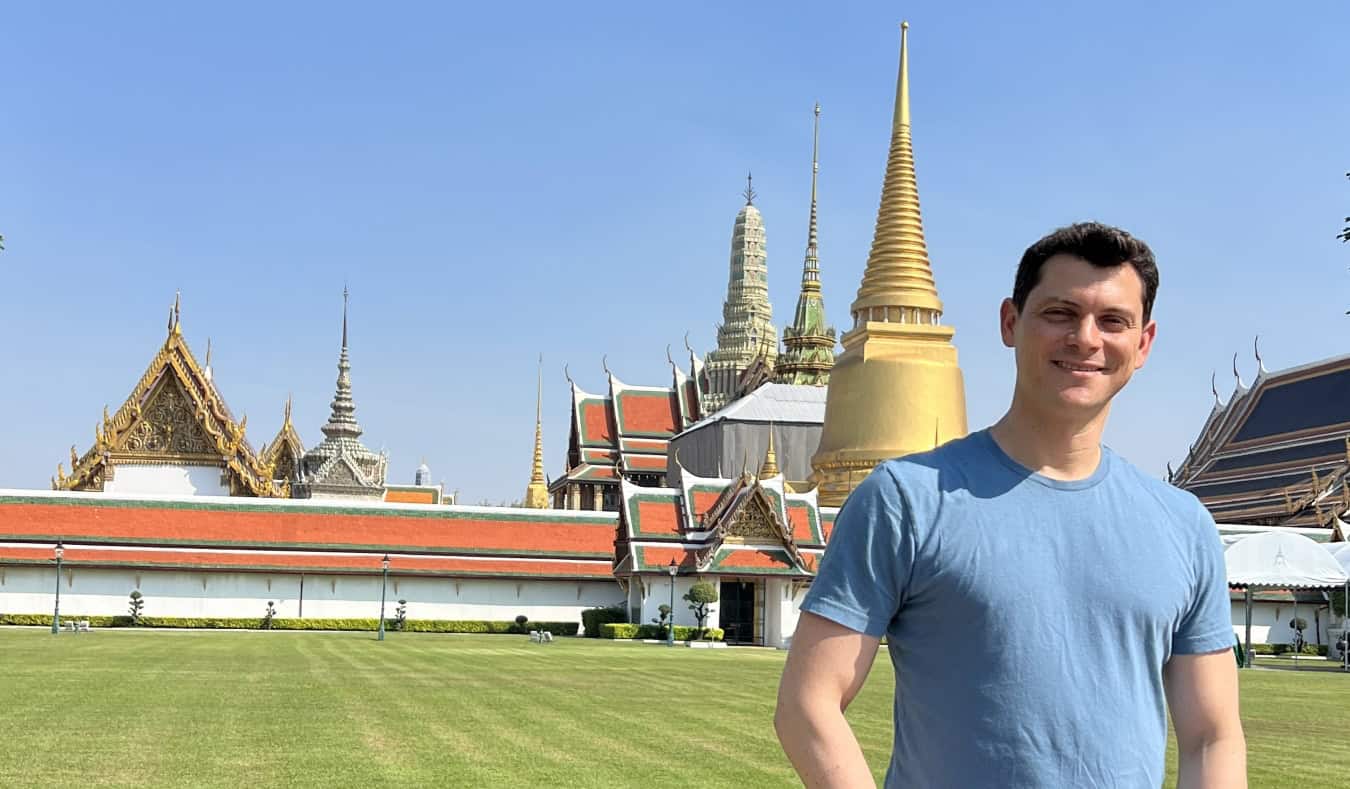
Itinerary planning is a complex beast. There’s no single best route out there. Everyone has different travel desires, goals, and needs (let alone budgets). It’s why I’ve always shied away from discussing itinerary planning for long-term travel .
Showing someone how to plan a trip is one thing, but actually planning a trip for someone else is tricky, because I don’t know what they want or like.
Because, at the end of the day, there is no such thing as a perfect itinerary. You have to go where you want to go and, while suggested routes can help inspire you, at the end of the day, only you can plan the best route for you.
However, that can feel overwhelming, especially when you’re trying to tackle an entire region like Southeast Asia . So, in this post, I’ll provide a few suggested itineraries to help you conquer this fantastic region.
For the two-week itinerary, I’ll break things up by day, but as we get into one-month and three-month territory, you’ll have a lot more flexibility with your time, so I’ll give rougher estimates of how to spend it.
After all, part of the beauty of travel is keeping yourself open to serendipitous moments and experiences!
Table of Contents
Southeast Asia Two-Week Itinerary
Southeast asia one-month itinerary, southeast asia three-month itinerary, the best time to visit southeast asia, what visas do you need for southeast asia.
If you only have two weeks in Southeast Asia, I suggest sticking to just 1-2 countries so that you don’t spend all your time in transit. You’ll also be able to better soak up the atmosphere if you’re not trying to cram too much in. With a more limited time frame, just accept that you’ll have to leave some things to look forward to on your next trip!
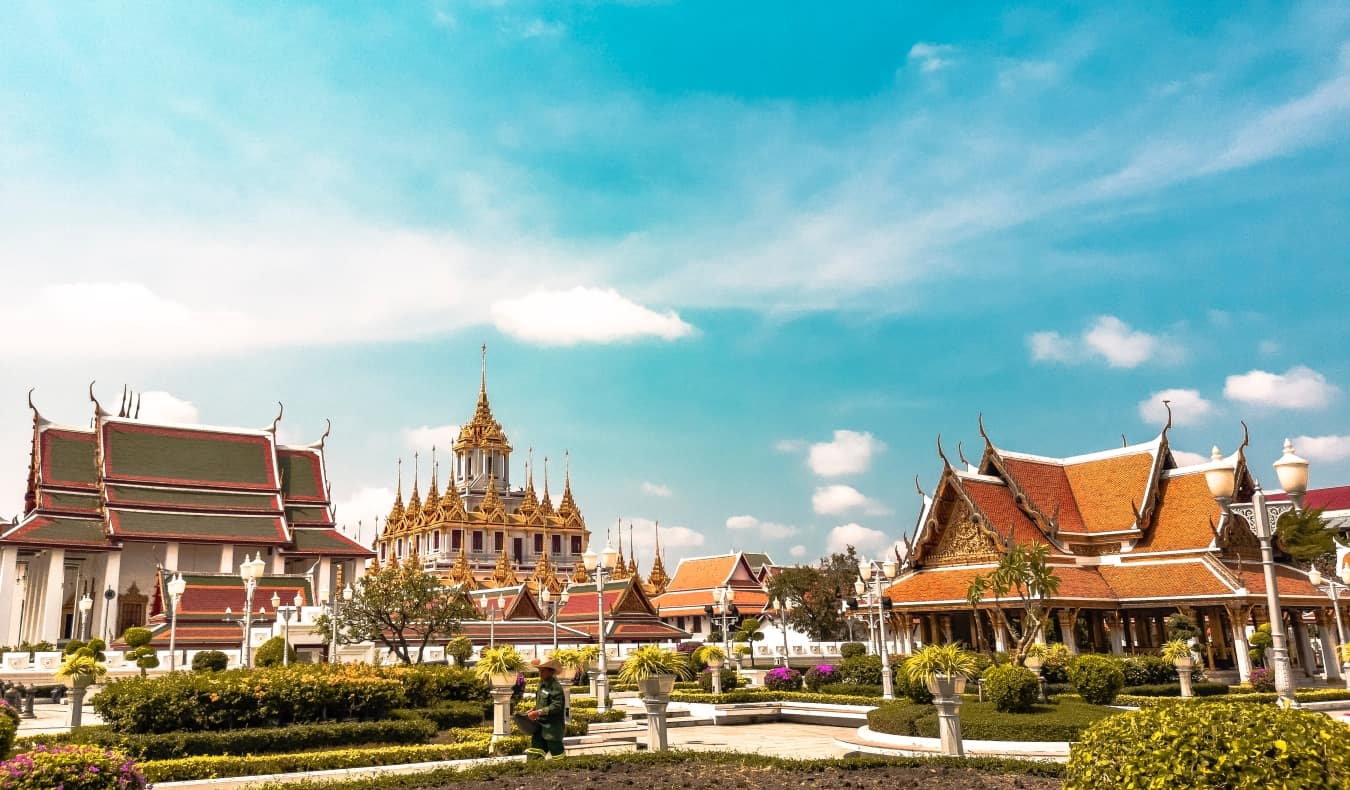
Take a walking tour to get your bearings and get local recommendations from the guide. Bangkok Walking Tours or Free Bangkok Walks are two great free options — just remember to tip your guide at the end!
For a more in-depth tour, you can take a city highlights tour , on which your guide will take you through some of Bangkok’s major attractions.
While the famous Damnoen Saduak floating market just outside of Bangkok exists mostly for the benefit of tourists, I still like visiting it. The tours that go there leave early in the morning and last about half a day. It’s not a great place to shop (prices are much higher than elsewhere), but the area is good for photography and eating.
WHERE TO STAY IN BANGKOK : Lub d Siam – This is a very popular spot for backpackers looking to stay somewhere other than the infamous party district that is Khao San Road. The hostel is modern, the rooms are spacious, and there are plenty of common areas to socialize in, including a café/bar.
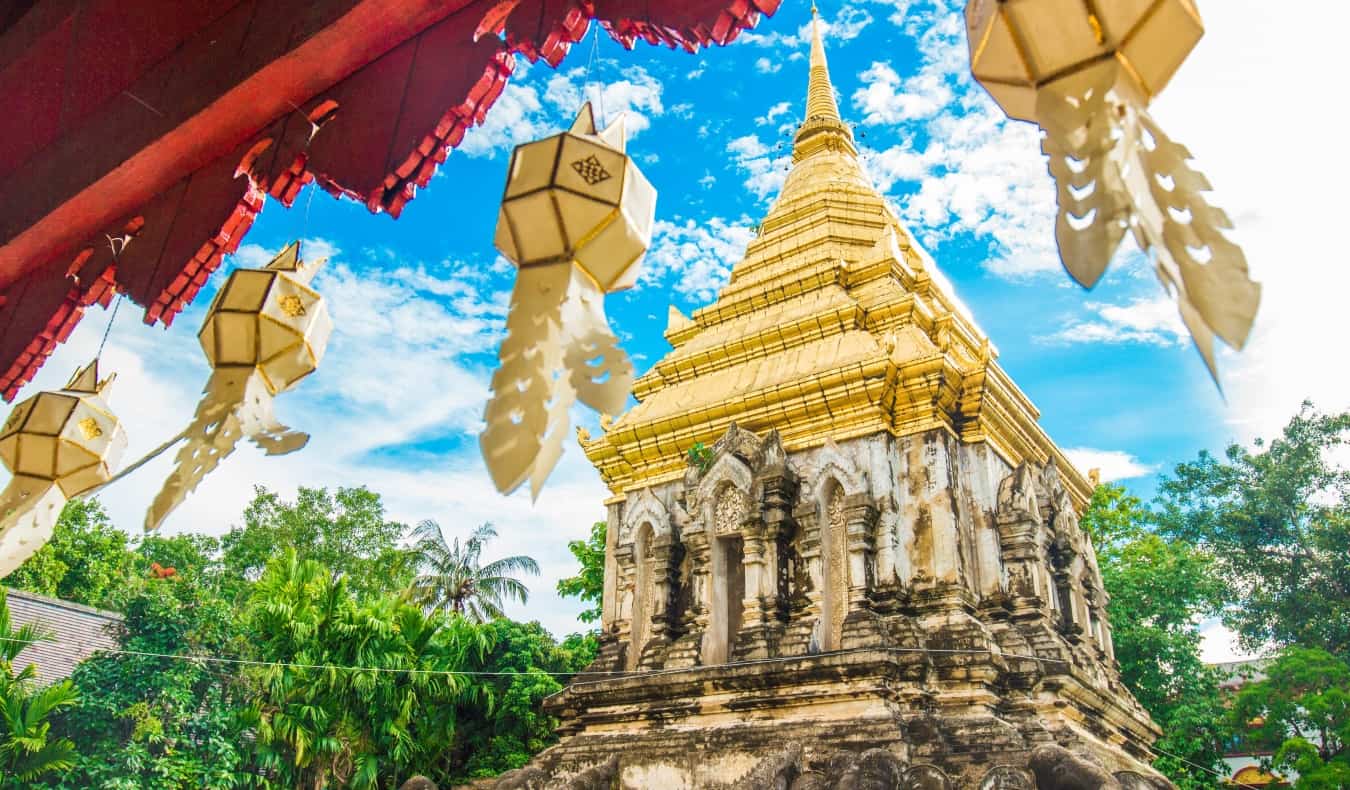
Wat Phra That Doi Suthep is Chiang Mai’s most famous temple (the pagoda supposedly contains relics of the Buddha himself). It offers beautiful views of the surrounding area and, at 6pm each day, you can watch the monks chant. The main other temples are Wat Chiang Man, Wat Phra Singh, Wat Suan Dok, Wat Chedi Luang, and Wat Jet Yot. Walking tours that visit several of these main temples start at 500 THB.
If you want to see elephants, a good way to get up close with them is to volunteer at or visit Elephant Nature Park. This sanctuary near Chiang Mai rescues abused and injured elephants from around the country. It’s a phenomenal place, and after coming here, you will know why you should never ride an elephant. A one-day visit costs 2,500-3,500 THB for adults.
WHERE TO STAY IN CHIANG MAI : Hostel Lullaby – This fantastic hostel in the heart of Chiang Mai was even voted the best in Thailand. Besides the comfortable facilities, there are a ton of perks here, including free bikes, free breakfast, and free Thai boxing, cooking, and yoga classes.
Days 7-9: Chiang Mai to Bangkok Here you have a few options: stay longer in Chiang Mai to do more jungle trekking; head up to Chiang Rai to see the famous White Temple; or take the long way back down to Bangkok, stopping for a night in each of Thailand’s ancient capitals (Ayutthaya and Sukhothai) or spending some time in one of the national forests, such as the incredible Khao Yai National Park .
Once back in Bangkok, you can either head into Cambodia to see Angkor Wat if you’re ambitious, or just hang out in Bangkok for a few more days before your flight home.
If you choose to go to Angkor Wat, here are my recommendations:

Be sure to visit the Landmine Museum. Landmines have devastated the country, maiming and killing thousands. They still cause destruction today, as remaining mines from the Vietnam War (which spilled over into Cambodia) are discovered every year. The museum has an in-depth exhibit that is very worthwhile, as it gives perspective on their use, dangers, and efforts to remove them.
Also, spend a day at Angkor Wat , the ancient site that was the center of the Khmer Empire that once ruled most of Southeast Asia. The temple was built in the 12th century and covers over 500 acres.
While a single-day visit can cover the main temples, this is an amazing site to explore, so I highly recommend two days (at least).
You can hire a tuk-tuk for the day or rent bicycles and explore on your own. Tuk-tuks have room for 3-4 people, making it a cheap and convenient option if you can split the ride with other travelers. You can also take a full-day guided tour to learn even more from a professional.
Admission is $37 USD per person for a day pass, $62 USD for a three-day pass, and $72 USD for a seven-day pass.
WHERE TO STAY IN SIEM REAP : Mad Monkey – This is a fun, lively, and social hostel with a bar, pool, and lots of tours and organized activities to help you meet people and explore the city.
Day 13: Bus back to Bangkok Take the bus back to the Thai capital, where you can spend the last day of your trip exploring more of the many things to see and do in Bangkok , or just simply hang out, relax, and eat all the delicious Thai food you can before your journey home.
Day 14: Departure day Head off to the airport knowing that you made the most of your two weeks in Southeast Asia. Chances are that you only whetted your appetite for traveling through this amazing region of the world, and you might already be planning your next trip on your way back home!
With one month, you’ll be able to take it a little slower, see more places, and get off the beaten path a bit more. You can add another country and leave more flexibility in your itinerary.
Days 1-3: Bangkok Follow the Bangkok itinerary above, and stay for a few more days if you like! There are endless things to do in Bangkok.
For more recommendations, check out my free Bangkok city guide .
Day 4: Bangkok–Chiang Mai With one month, you can choose to take the day train from Bangkok to Chiang Mai. It’s not only cheaper but a nice way to see the countryside. Sure, you “waste” a day, but you see the countryside, experience how Thais take the train, and can eat from vendors who briefly board at every stop.
The day train remains one of my favorite experiences in Thailand. Just make sure you have a good book as the journey is 10-13 hours long.
Days 5-7: Chiang Mai See the Chiang Mai itinerary above. For more recommendations on things to do, check out my free Chiang Mai city guide .
Days 8-10: Slow boat from Chiang Mai to Luang Prabang, Laos After spending your first week in cities, take a load off and drift down the river on a slow boat. These boats generally take two days, stopping overnight at a guesthouse along the way. It’s a beautiful way to see the scenery and recharge a bit from a busy week.
Alternatively, if you want to save time, you can fly between the two destinations, or skip ahead in this itinerary to Vietnam .
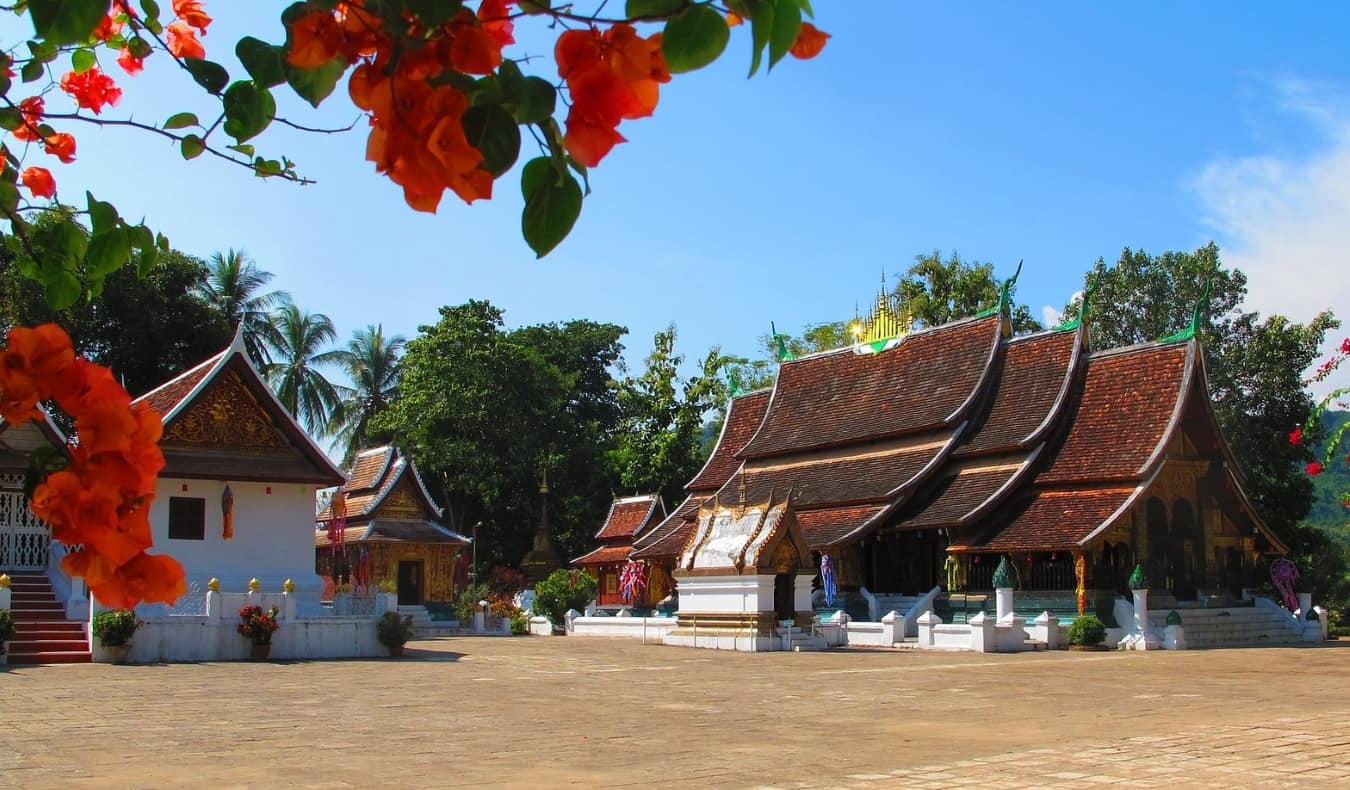
Although it’s small (around 56,000 people live here), there’s a lot to see and do, with dozens of temples, streets lined with French colonial architecture ( this walking tour hits all the highlights and then some ), a bustling night market, river tours , and waterfalls. I came here for three days but ended up staying a week!
Start off with a visit to the “Buddha Caves” (officially, the Pak Ou Caves). They hold over 6,000 Buddha statues that the locals still use for worship. There are standing Buddhas, sitting Buddhas, reclining Buddhas — you name it! You can visit solo or book a guided tour .
While you’re here, don’t miss the iconic Kuang Si waterfalls (you’ve probably seen them on Instagram already). They flow through the limestone-rich jungle and empty into a series of three gently cascading pools. While it’s one of the most popular attractions in the area (avoid the weekends, when it’s super busy), the Kuang Si Falls was also one of the most breathtaking things I saw in Laos.
Other things to do here include:
- The Royal Palace
- Mount Phousi
- Wat Xieng Thong Monastery
- The alms ceremony
- Kayaking the Mekong River
For more things to do, check out my free guide to Luang Prabang .
WHERE TO STAY IN LUANG PRABANG : Downtown Backpackers Hostel 2 – This is a great little hostel with free breakfast, moped rentals, clean dorms, and super helpful staff.
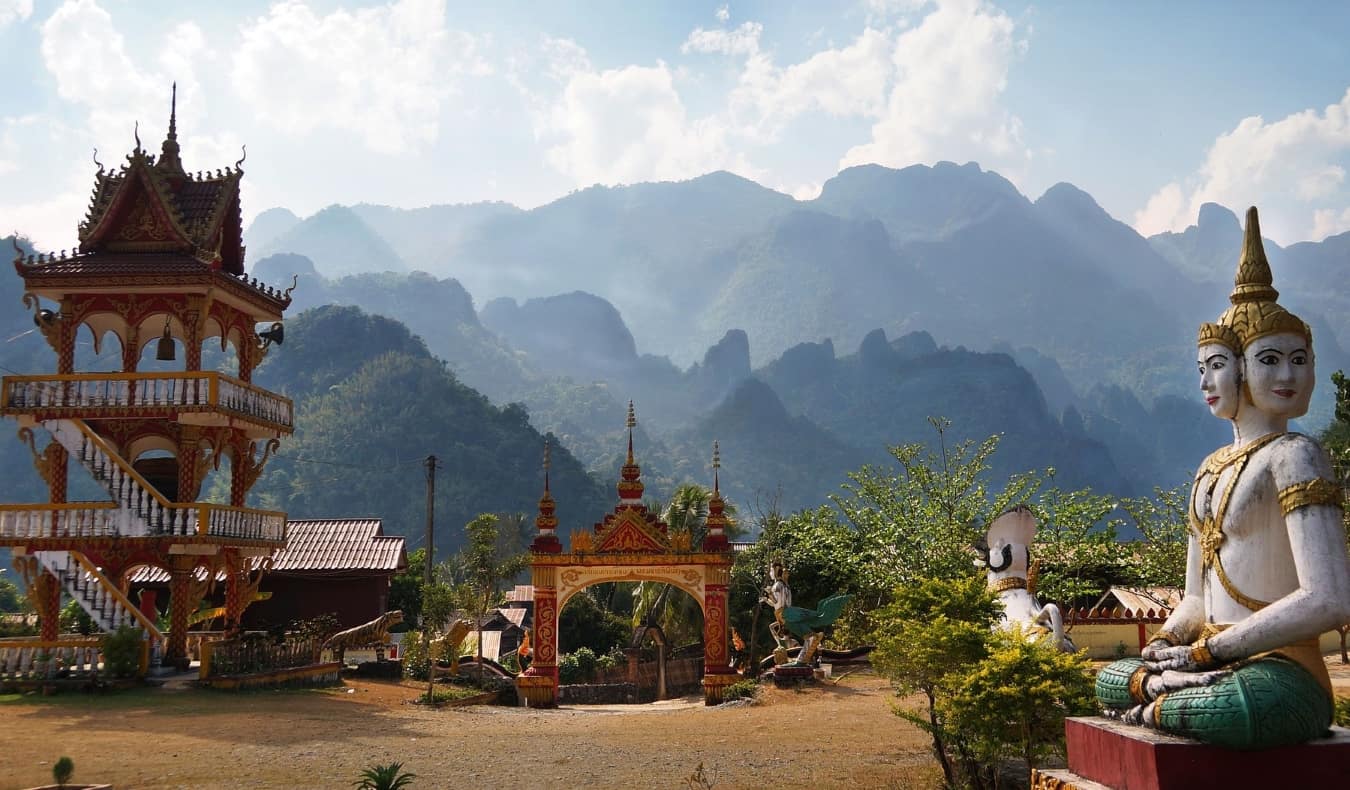
Kick things off with a tubing trip down the river. It’s the best way to relax and stay cool. A tubing and kayaking tour costs around 575,000 LAK.
And if you want to stretch your legs, climb Pha Poak Mountain. It’s only a 30-minute climb to the top, where you’ll be rewarded with an incredible view of the area’s limestone mountains.
Other things to see and do in Vang Vieng include:
- The Golden Cave
- Hot air balloon rides
- The Blue Lagoon
For more things to do, check out my free guide to Vang Vieng .
WHERE TO STAY IN VANG VIENG : Nana Backpackers Hostel – This is a fun, social hostel with a swimming pool, movie room, small gym, and bar with free vodka and whiskey every night from 7pm to 9pm.

Nowadays, the city is a hub for café culture, cheap spas, golden temples, and diverse riverside markets. Much of its historical center has kept its colorful colonial architecture intact too, making it a nice area to stroll around.
Wander the wide boulevards, take in the crumbling mansions, chill out in Chao Anouvong Park, enjoy the flavorful local cuisine (there are a ton of delicious French bakeries here as well).
Make sure you visit Buddha Park, a sculpture park is just 25 kilometers (15 miles) outside of Vientiane. There are around 200 Hindu and Buddhist statues here, all of which appear to be centuries old (they’re not — they were made in the 20th century out of concrete). While not “historic” per se, it’s still worth visiting, as there are all kinds of unconventional designs, including a three-meter (9.8-foot) demon head that you can enter, and staircases from heaven and hell that you can climb. Admission is 15,000 LAK.
You’ll also want to admire the Great Stupa (Pha That Luang). It’s a 44-meter (148-foot) gold-covered stupa (dome-shaped Buddhist shrine) and is the most important monument in the country. Built by King Setthathirat in 1566, its exterior looks like a fortress with high walls. Inside, the walls are covered in Buddhist, floral, and animal imagery. Admission is 10,000 LAK.
Other things to see and do in Vientiane include:
- The COPE Visitor Centre
- Victory Gate (Patuxai)
- Chao Anouvong Park
- Lao Boat Racing Festival
For more things to do, check out my guide to Vientiane .
WHERE TO STAY IN VIENTIANE : Dream Home – This is a fantastic hostel that offers everything you need while staying in the capital. There’s free breakfast, comfy beds, AC, a nightly happy hour at the hostel bar, and a 24-hour reception with friendly staff members.
Days 20-22: Pakse Pakse is the gateway to Laos’ 4,000 Islands (in the Mekong River), so there isn’t a ton to do here other than chill out and relax. It’s a nice place to stop while heading south to Cambodia. Alternatively, you can take a 1.5-hour flight from Vientiane to Phnom Penh to save some time and give you extra days elsewhere.
WHERE TO STAY IN PAKSE : Sanga Hostel – This cozy hostel has super comfortable beds, a restaurant with fantastic home-cooked food (free banana cakes!), and a lovely owner.
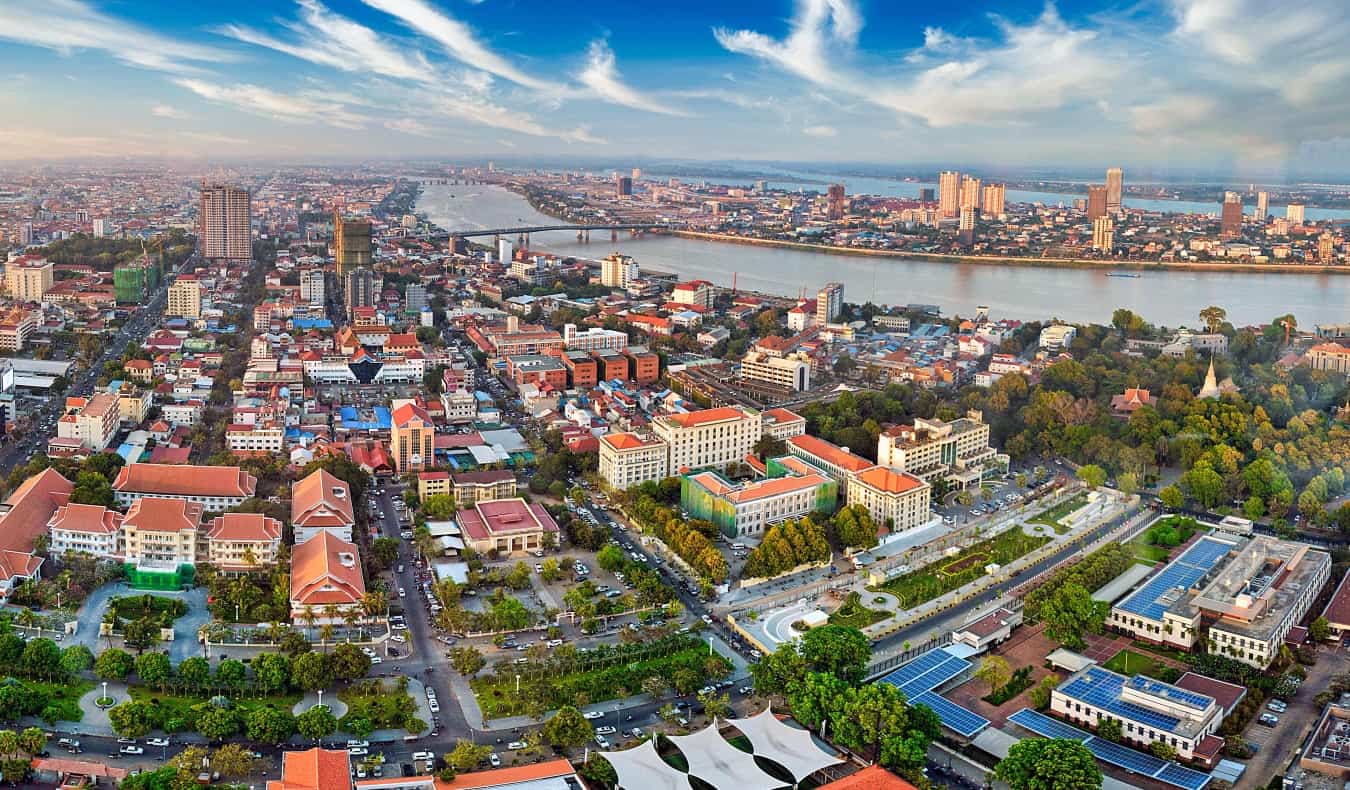
The Royal Palace is home to beautiful flower gardens and the Silver Pagoda, whose floor is made up of more than 5,000 silver tiles; inside is an emerald-covered Buddha and a diamond-covered Maitreya Buddha. The palace also has murals around its outer wall that tell the story of the Ramayana.
On the palace grounds are five stupas, with the two largest to the east containing the ashes of Kings Norodom and King Udung (the two most famous kings of modern Cambodia) and a statue of King Norodom on horseback.
The most important thing to see here, however, is the Tuol Sleng Genocide Museum and the Killing Fields. Tuol Sleng is a former school where the Khmer Rouge interrogated and tortured people in the 1970s. You’ll see rusty beds and torture devices, in sharp contrast to the beautiful trees and lovely jasmine smell in the gardens.
After, head to the Killing Fields. It may not be the most cheerful way to spend an afternoon, but it makes for a hallowed and memorable experience, a testament to the dangers of uncontested power. Admission to the Killing Fields and the Tuol Sleng Genocide Museum is $20 USD. This includes a guided tour so you can get an in-depth look at this haunting place.
For more things to do, check out my guide to Phnom Penh .
WHERE TO STAY IN PHNOM PENH : Mad Monkey – This is a lovely social hostel with a bar, restaurant, beer garden, and swimming pool. They organize all kinds of events and tours, so it’s easy to make friends here.
Days 27-29: Siem Reap Follow the Siem Reap and Angkor Wat itineraries from above.
If you have time, visit Tonle Sap, Southeast Asia’s largest freshwater lake and UNESCO nature reserve. It is 52 kilometers (32 miles) from Siem Reap. Sailing down the river and around the lake gives you a look at how closely Cambodian life is tied to this major waterway. Guided tours to Tonle Sap start at $20 USD.
Day 30: Bangkok Head back to Bangkok for your flight home!
If you have three months to spend, you don’t want to have everything plotted and planned out to the day, like you might want to with the shorter itineraries above. Having flexibility to change plans is a must (and will make your travels much more enjoyable). On a trip of this length, you don’t want to burn yourself out too fast!
With three months, you have enough time to be flexible and still see a lot. I’d recommend rough planning in weeklong chunks.
MONTH ONE: Thailand
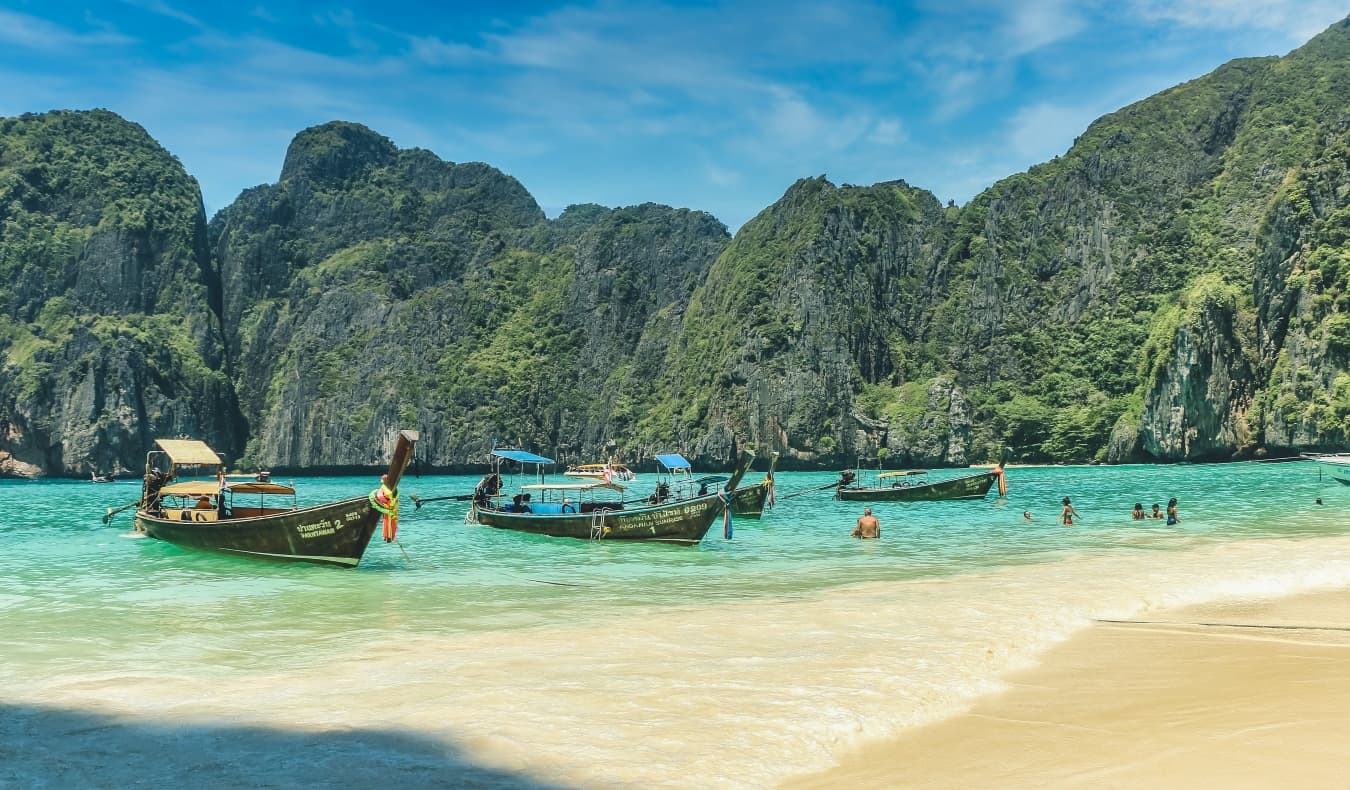
Week 1: Bangkok and Backpacking Kanchanaburi Province Follow the three-day Bangkok itinerary above, and extend your stay by a few days to take things slower and see even more of this vibrant city. You can also do more day trips or even multiday trips to the surrounding region.
When you’ve had your fill of bustling Bangkok, take your time heading north. Kanchanaburi Province is a great place to spend some time, as it’s home to a lush, undisturbed forest, wetlands, and mountains that are perfect for trekking, either on multiday tours or day trips from Bangkok . The area is very biodiverse, with two wildlife sanctuaries: Thung Yai Naresuan, and Huai Kha Khaeng.
However, its history is rather dark. The infamous Death Railway linking Myanmar and Thailand runs through here, which was built during World War II by prisoners of war and civilians. Around 90,000 civilian forced laborers and more than 12,000 Allied prisoners perished in the railway’s construction. The bridge over the River Kwai is also located here, built using POW labor and the subject of both a famous film and a book. While these sights are haunting reminders, they are an essential part of Thailand’s history.
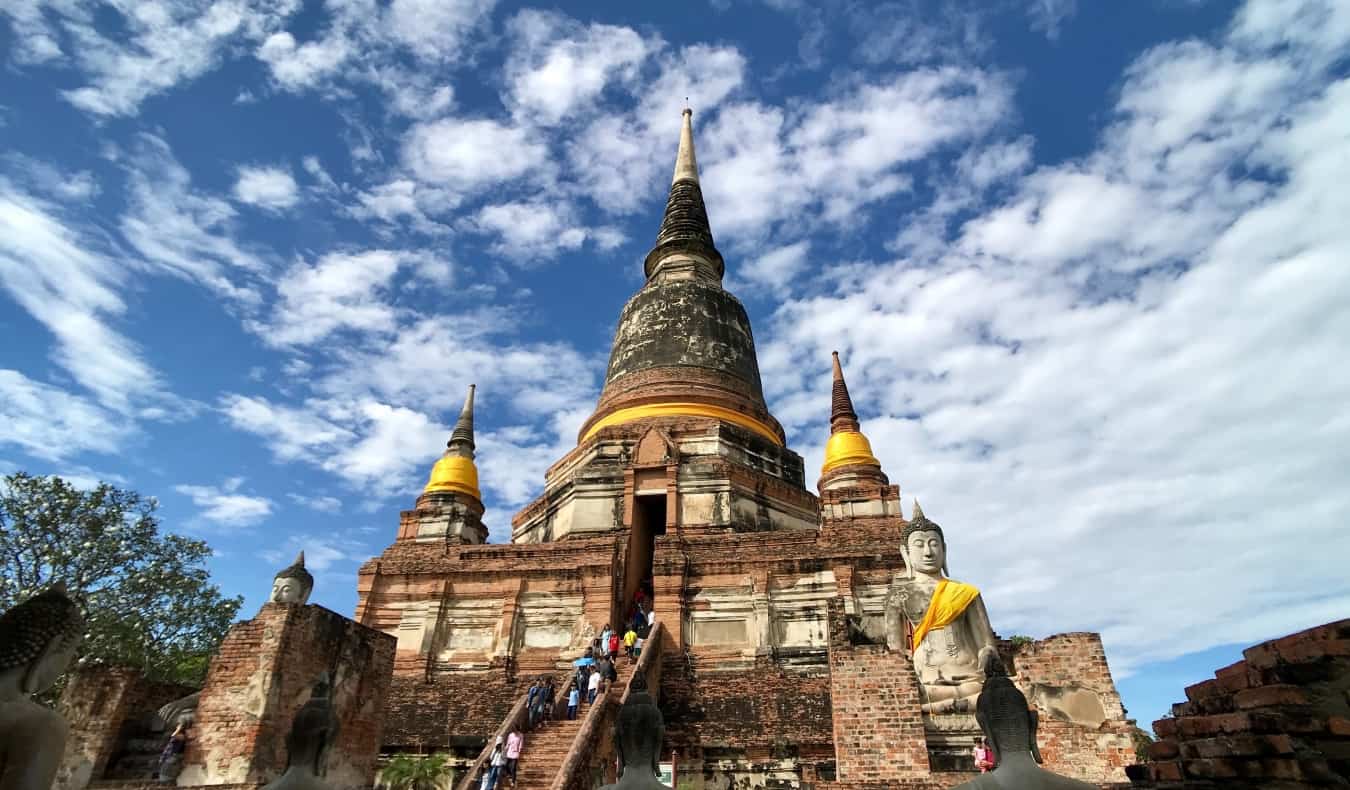
Here are some options to consider for your meandering journey north:
Ayutthaya – Ayutthaya was the capital of Siam from 1350 to 1767, when it was razed by the Burmese during a war. The city’s ruins, with its palaces, temples, monasteries, and statues, form an archaeological park that is now a UNESCO World Heritage Site. It’s about 1.5 hours from Bangkok by train.
You can also visit on a day trip from Bangkok for just 1,105 THB.
Khao Yai National Park – Established in 1962, Khao Yai was Thailand’s first (and one of its best) national park and is now a UNESCO World Heritage Site. It’s visually stunning and empty of tourists but filled with lush flora and fauna, bat caves, and even a few wild elephants. It’s about 2.5 hours north of Bangkok.
There are also day trips to Khao Yai from Bangkok starting at around 2,500 THB.
WHERE TO STAY : Greenleaf Guesthouse – This hostel has the best tour/accommodation deals in the area. Let them know when you’re arriving by train or bus, and they’ll pick you up at the station.
Sukhothai – Sukhothai was the Kingdom of Siam’s first capital city, in the 13th century. There are hundreds of ruined buildings here, including the royal palace and countless temples.
There are actually three ruined cities that make up the UNESCO World Heritage Site, and since they’re a bit spread out, seeing them by bike is a fun way to cover a lot of distance. You can take a full-day or two-hour bike tour with Sukhothai Bicycle Tour .
WHERE TO STAY : Old City Boutique House – This hostel is in a great location, right near the entrance to the historical park. The guesthouse has AC, free breakfast, bike rentals, and friendly owners to help you with whatever you need!
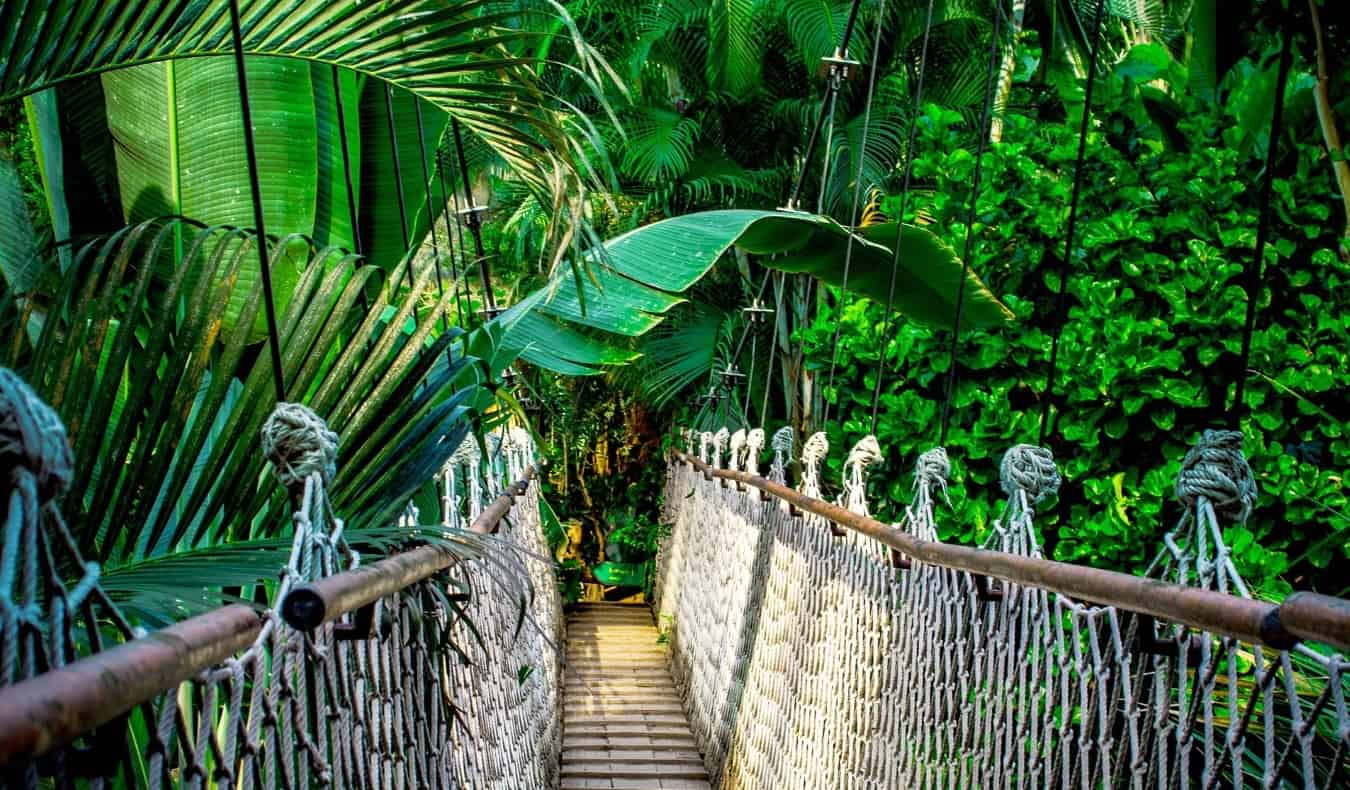
Chiang Mai is the main starting point for all sorts of jungle trekking tours. I like the three-day ones the best, but the longer the tour, the more interesting and secluded places you’ll visit. Be careful with whom you sign up, as many guides simply walk with you and don’t tell you much about the land or wildlife.
Moreover, if you visit a tribal village, make sure that the money stays with the villagers, and that they aren’t being exploited, which unfortunately happens a lot.
If you prefer to do a few different day trips rather than multiday tours, TripGuru Thailand offers full-day tours to Doi Inthanon National Park and the Chiang Dao cave system , among others.
Week 4: Northern Thailand If you want to continue soaking up northern Thailand, a great way to do so is on a motorbike trip. Many people rent bikes and tour the countryside and take in the scenery. This area is particularly popular for a 1–3-day trip. Mai Hong Son Province offers a great loop, starting in Chiang Mai and ending in Pai.
Note: Make sure that if you’re renting a motorbike, you’re comfortable with driving it. And never ever drink and drive. Accidents are incredibly common.
Pai – Pai has grown as a tourist destination in more recent years, but it is still a great place to escape some of the craziness of the larger cities. It’s nestled in rolling green mountains and near incredible hiking trails. Stay on the outskirts of this backpacker town in a lovely little bungalow, rent a bike, traverse the hills, and bathe in the cool waterfalls.
Be sure to take a day trip to the Tham Lot Caves; you can stop off to swim in waterfalls and hot springs on the way.
WHERE TO STAY : The Famous Pai Circus Hostel – This is the best hostel in Pai, with a host of amenities, from air-conditioned dorms, comfortable mattresses, and bamboo bunk beds to an infinity pool, nightly bonfires, a fantastic buffet breakfast, free dinners, and overall, a great atmosphere.
Chiang Rai – Many people visit Chiang Rai on a day trip from Chiang Mai , expressly for the purpose of seeing the White Temple. This intricately designed complex with its reflective pools and shimmering white exterior is designed in the style of a Buddhist temple. However, it’s actually a work of art by Thai artist Chalermchai Kositpipat, and is still currently in the process of being completed.
WHERE TO STAY : Baan Mai Kradan Hostel – This sleek, modern, and centrally located hostel has free breakfast, fast Wi-Fi, comfortable pod-style beds, and plenty of indoor and outdoor common areas to relax in.
MONTH TWO: Laos and Vietnam

Week 5: Slow Boat to Luang Prabang Take the two-day slow boat to Luang Prabang. Once there, follow the Luang Prabang itinerary above, but at a slower pace. You can also spend some time in the surrounding, even smaller villages like Nong Kiew, a sleepy village located a few hours from Luang Prabang. The towering limestone cliffs surrounding it are ideal for experienced climbers, and there are many hiking trails leading to nearby waterfalls and caves. You can take the bus from the city for about 40,000-65,000 LAK.
WHERE TO STAY : Lamorn Guesthouse – This is an incredibly affordable guesthouse located right on the river. The rooms are basic but clean, each with its own private bathroom and air-conditioning.
Week 6: Vang Vieng and Vientiane Follow the itineraries for Vang Vieng and Vientiane above. Then, you can either choose to continue your trip in Laos by heading south to Pakse and 4,000 Islands (in which case, follow the itineraries outlined above), or head on to Vietnam.
If going to Vietnam, you can take an overnight bus to Hanoi or a quick flight from Vientiane. If flying, keep in mind that there are only direct flights a few times a week (otherwise you must connect through Bangkok), so plan ahead if going with that option.
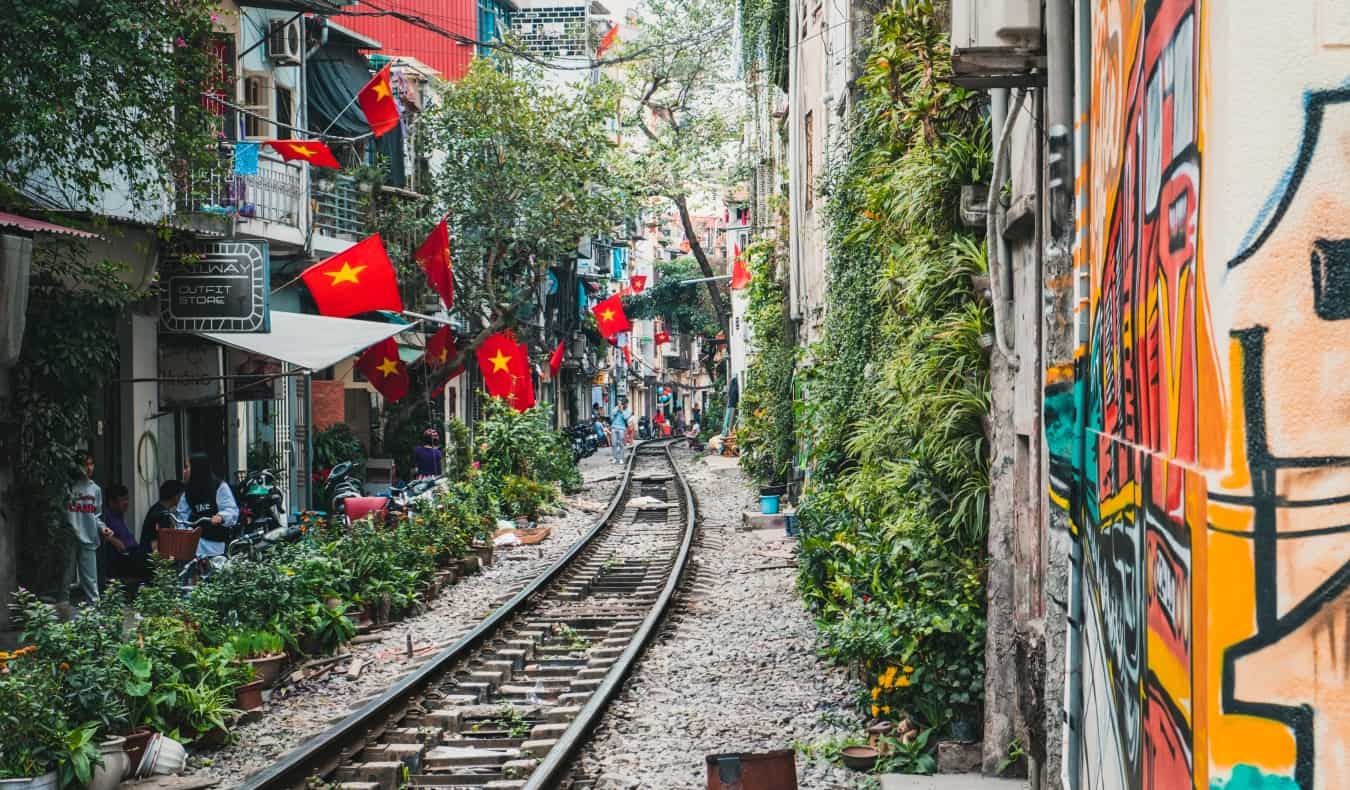
It’s also one of the best places to eat endless bowls of pho, bun cha, or cheap bahn mi from food vendors on just about every street corner.
Start your visit by exploring the narrow streets of the Old Quarter. Its 2,000-year-old streets are a web of shopping opportunities and cheap eateries. There’s also a lot of fascinating Old World architecture that highlights the influence the French had on the area.
Hanoi is also a good base for doing multiday tours to postcard-perfect UNESCO World Heritage Site Ha Long Bay. One of the country’s most popular tourist destinations, the area comprises more than 3,000 islands, all with different activities on offer. Tours here usually last 3-5 days and can include sleeping on a boat or staying on some of the islands around the bay, as well as cave tours and kayaking. If you really want to splash out, take a 3-day luxury cruise .
If you don’t want to do a longer cruise, you can choose a two-day (overnight) cruise or a full-day trip from Hanoi ; however, given that you’re on a three-month adventure, I’d recommend going with the few-day options.
Other things to see and do in Hanoi include:
- The Temple of Literature
- See a water puppet show (an ancient Vietnamese art form)
- Ho Chi Minh Mausoleum
- Dong Xuan Market
- Go on a food tour
- Quan Su Pagoda
For more things to do, check out my guide to Hanoi .
WHERE TO STAY : Little Hanoi Hostel – Located in the heart of the Old Quarter, this hostel has air conditioning, free breakfast, free welcome drinks, and — most importantly — clean, comfy rooms. The staff will help you book tours of the city and surrounding region.
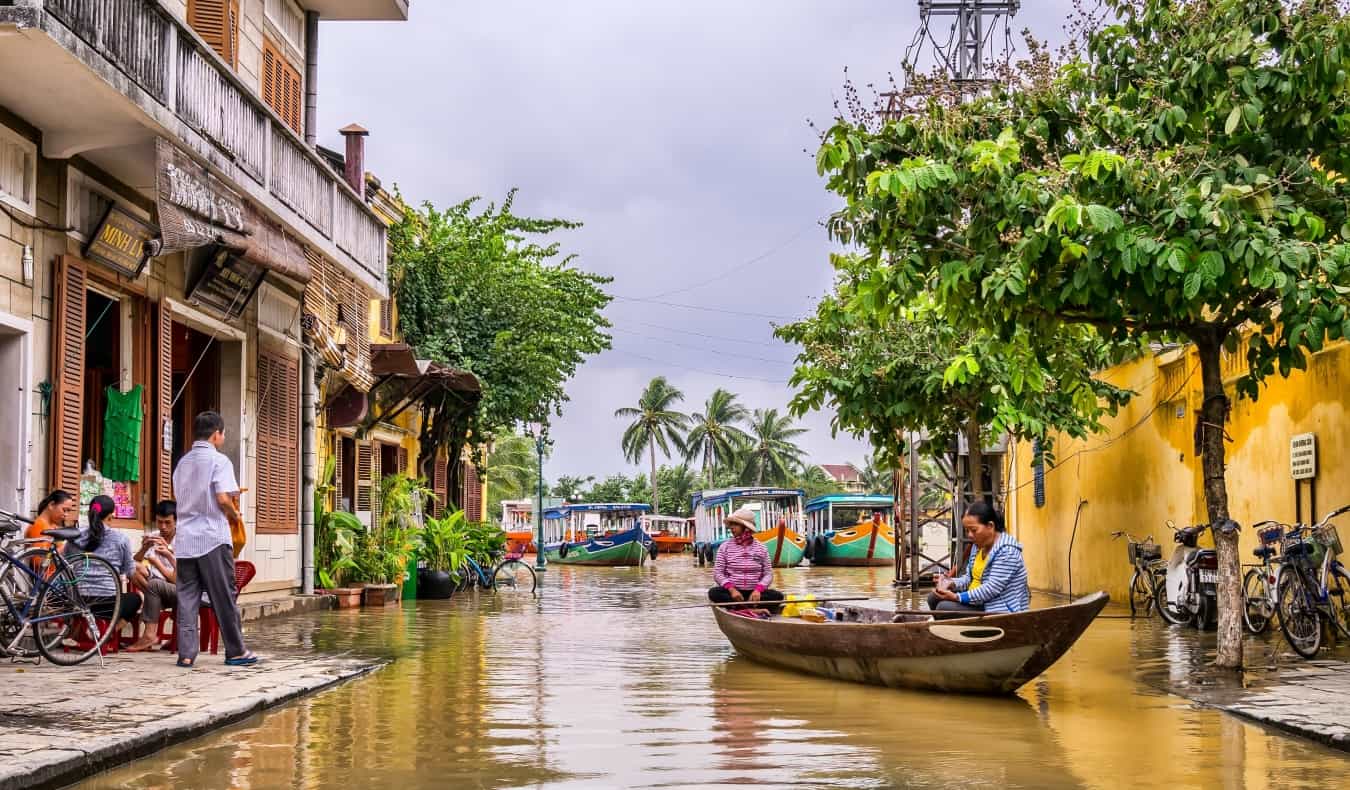
It’s also an extremely popular place for ordering tailored clothing, which is one of the main reasons people come here. You can get anything made here — from custom-made suits to gowns to sundresses to leather boots to sneakers. The tailor shops will even mail all your goods home to you.
Otherwise, Hoi An makes for a relaxing destination in an otherwise hectic country, with the beach only a 15-minute bike-ride from town.
Some of the top things to do here include the following:
- Explore My Son Sanctuary: – This is one of the most important sites relating to the ancient Kingdom of Champa and is said to have been Vietnam’s religious and intellectual center. Even in their ruined state, the remaining Hindu temple structures are impressive. Go in the morning to beat the crowds and heat. A morning guided tour with transportation from Hoi An is the best option.
- Relax on the beach – An Bang and Cua Dai beaches are both close to Hoi An and great places to spend an afternoon. Cua Dai is designated as one of Vietnam’s five UNESCO World Heritage sites; both beaches offer soft white sand and excellent beachside restaurants.
- Attend the Full Moon Festival – Hoi An’s Full Moon Festival is held on the 14th day of the lunar cycle each month and is probably the best time to visit the city, if you don’t mind the crowds. This is a fun time to party with locals, as the streets come alive with folk music, plays, and dancing!
- Learn about (and eat!) all the food – Vietnamese cuisine is fresh, flavorful, and delicious. Hoi An offers a few ways to dive into this incredible cuisine: take a food tour , do a cooking class , or learn how to make Vietnamese coffee !
WHERE TO STAY : Vietnam Backpackers Hoi An Hostel – Located conveniently between the Old Town and the beach, this hostel has a great outdoor pool and terrace, tons of social events, small dorms (max. 6 beds), and rain-head showers with excellent pressure. If you stay in a private room, you’ll even get a free bicycle to use (rentals are also available if you’re staying in a dorm).
Ho Chi Minh City – My favorite Vietnamese city after Hoi An, Ho Chi Minh City (formerly known as Saigon) is the largest and most chaotic in the country. Motorbikes, bicycles, cars, and rickshaws go wherever they please, and lots of street stands and markets spill into the traffic lanes.
It’s a metropolis with a billion things happening at once, and a lot to offer travelers. Stay a few days here to take in the wonderful shops, fantastic nightlife, delicious food, plentiful historic sites, and interesting (though propaganda-heavy) museums.
WHERE TO STAY : The Hideout – This is a conveniently located, social hostel with super clean rooms, free beer at the bar every day, and showers that you can use even after you check out. They organize many tours of the city and area as well.
MONTH THREE: Cambodia
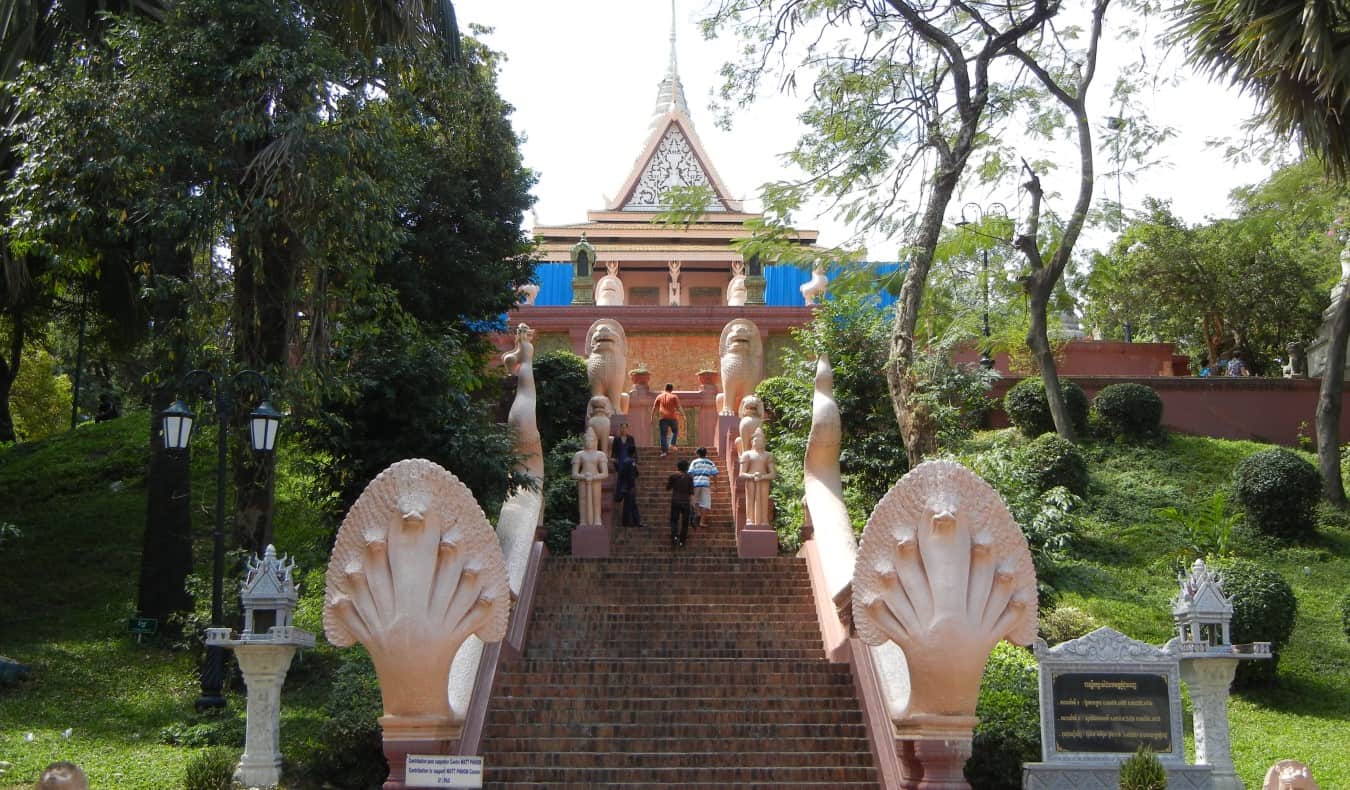
If you’re looking to soak up some sun, Independence Beach and Otres Beach are probably your best bets. But mainly, Sihanoukville is a jumping-off point for other islands and beach towns in the area, such as:
Koh Rong – This island is a 45-minute ride from Sihanoukville. If you’re pressed for time, you can do it in a day trip, but stay overnight if you can. The beaches here are way better than on the mainland (and a lot less polluted), and there’s great snorkeling and diving.
Bokor National Park – Hike through a stunning rainforest or see the atmospheric ruins of the French aristocracy for whom Bokor was a big drawback in the day. You’ll have some amazing views, and there are ruins, waterfalls, and temples all around.
Kep – This quaint beach and fishing village is a quiet version of Sihanoukville but without a party atmosphere, therefore a nice place to relax near the ocean. It’s famous for its pepper crab and empty beaches. Sure, it’s quite sleepy and there’s not a lot to do, but it’s the perfect place to relax, read a book, and eat all the delicious crab. You can also spend some time on nearby Rabbit Island (Koh Tonsay), a secluded and charming escape from the world if you’re looking to disconnect.
Kampot – This is another quiet town on the coast. Most people come here to enjoy the scenic riverside views as well as the rolling hills and pepper farms that surround the city. The area used to be a getaway for the French, so you’ll see old colonial architecture around. At night, the street near the old bridge is lined with fruit shake vendors. Try a million — the city is famous for them. Also, if you only do one thing in this entire itinerary, make sure it’s eating the ribs at the Rusty Keyhole — they are some of the best ribs I’ve ever had.
Week 11: Siem Reap and Angkor Wat Follow the above suggestions for Siem Reap and Angkor Wat but at a slower pace. There’s a lot to see and do in the area. You can easily spend several days just exploring Angkor Wat. You can also do more day trips into the surrounding region.
A great way to spend a day is to head to Koh Ker, located in the jungle around 2.5 hours from town. Koh Ker was briefly the capital of the Khmer Empire, and many of the temples here are over a thousand years old. It’s a massive archeological site that sees far fewer tourists than Angkor Wat.
For another fun day trip, head to Phnom Kulen, considered the country’s most sacred mountain. It’s located just 50 kilometers (31 miles) from Siem Reap and offers some amazing jungles, hiking, and picturesque waterfalls where you can take a dip to beat the heat. You can easily spend a day here. If you head up to the summit, there are some great views, as well as a large reclining Buddha statue. Try to arrive early, as the park fills up by lunchtime.
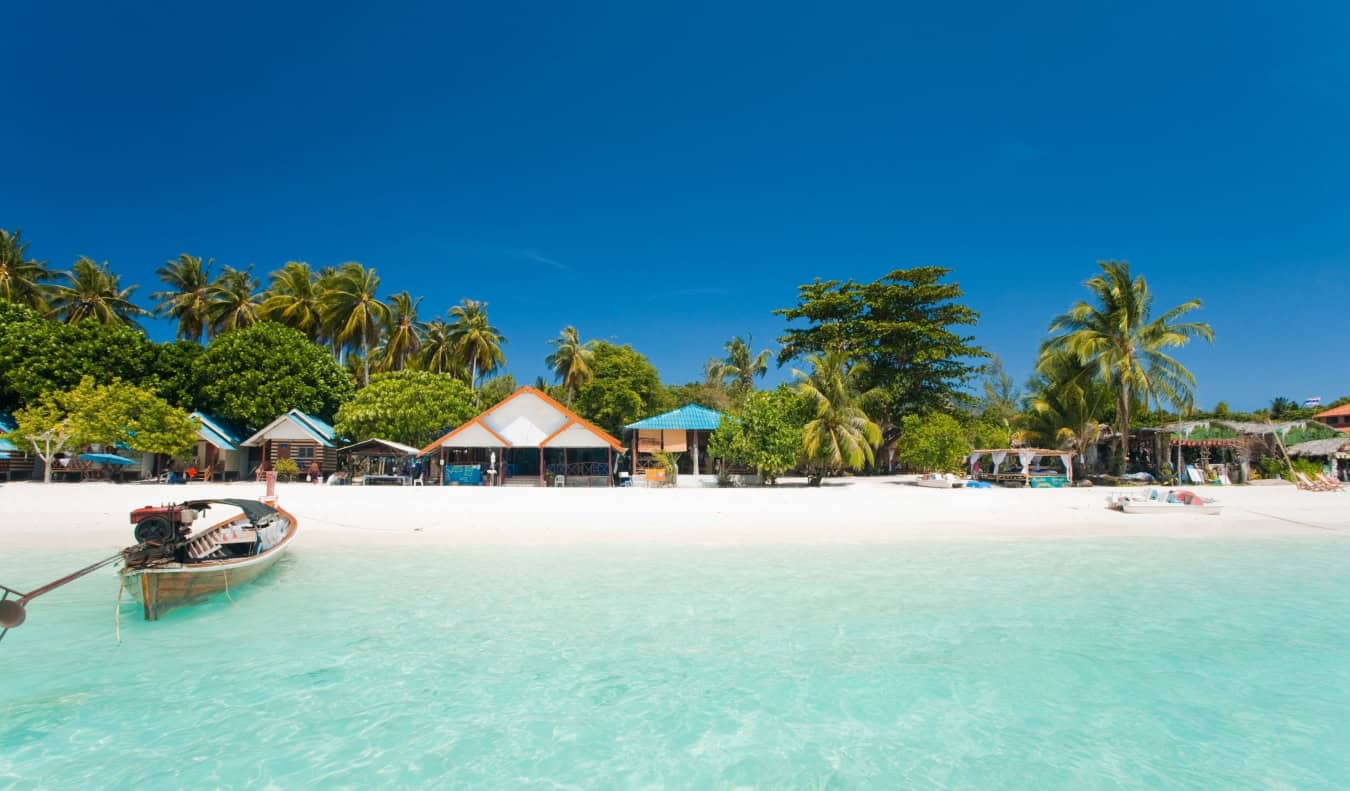
There’s seemingly an island for every type of traveler here. Some are overdeveloped, while others only have a single bungalow. Some of my favorites are Ko Samet, Ko Taruato, Ko Lanta, Ko Chang, Ko Tao, Ko Jum, Ko Lipe, Ko Samui, and the Similan Islands. You could easily spend weeks (or months) bopping around to different islands, but if you’re on your last week, just choose one or two, depending on what you’re looking for.
Some recommendations to get you started:
Ko Lipe – This lesser-known island is one of my favorite places in the world. There are amazing seafood meals, beautiful beaches, and warm waters in which to swim and snorkel . I came for three days and ended up staying for a month. In the last few years, it has become more developed, and it’s not the sleepy little island it used to be, but it’s still way less touristy than many other destinations in Thailand.
Phuket – Phuket is the biggest destination for tourism in Thailand. There are great beaches and amazing activities on this island. While most visitors stick to the overdeveloped south, if you stay away from Patong Beach, you can avoid most of the crowds. In fact, the northern part of the island is one of my favorite places to visit in all of Thailand.
Ko Phangan – This island is home to the infamous Full Moon Party , one of the most famous parties in the world, with a lot of drinking, dancing, and drugs. Each bar has its own sound system, so you’ll hear different music loudly blasting onto the beach every few feet. The beach itself is lined with people selling alcohol, fire dancers putting on shows, and little booths selling glow-in-the-dark face paint.
Ko Tao – If you’re looking to dive in Thailand, go to Ko Tao , which caters specifically to divers. If you dive here, be sure to see Elephant Head Rock, as the reef is home to plenty of fish, snappers, rays, and turtles. Day trips start at 5,900 THB for two dives, including equipment and park fees. If you’ve never dived before, a day trip that teaches you all the basics starts at 2,500 THB while a four-day open water course starts at 11,000 THB.
After your time in the islands, head back to Bangkok for your return flight home.
If you’ve got even longer, this region has so much to offer — from Malaysia to Singapore to Indonesia and more!
The best time to visit Southeast Asia largely depends on your preferences, where exactly you’re going, and what you plan to do. But generally, the dry season, spanning from November to April, is prime time for travelers. During these months, countries like Thailand, Vietnam, Cambodia, and Laos boast sunny skies, lower humidity levels, and comfortable temperatures.
If you don’t mind occasional rain showers, the shoulder season (from May to October) is much less crowded. You’ll get lower prices on accommodations too. July to September is the peak holiday season and when you can expect to pay the highest rates.
This is all a vast generalization though, as it’s a big region and conditions vary drastically depending on where you are. Be sure to check my Southeast Asia Travel Guide and specific country guides for more information.
U.S. citizens don’t need a visa for many countries in Southeast Asia, and where a visa is required, it’s usually pretty easy to get. Assuming the purpose of your trip is tourism only, here are the latest visa requirements:
- Thailand: U.S. citizens can enter Thailand visa-free for up to 30 days.
- Vietnam: U.S. citizens need a visa to enter Vietnam. The easiest option is an e-visa through the Vietnam Immigration website. The e-visa is valid for a maximum of 90 days and does not allow for renewal from within the country. You can also get one through a Vietnamese embassy or consulate.
- Cambodia: U.S. citizens can get a visa on arrival at major entry points or apply in advance for an e-visa. Both options typically allow for stays of up to 30 days.
- Laos: U.S. citizens need a visa to enter Laos. Visas can be obtained on arrival at major entry points or in advance through a Laotian embassy or consulate. You can extend the visa for up to 60 days through the Department of Immigration in Vientiane.
- Myanmar (Burma): U.S. citizens need a visa to enter Myanmar. You can either get an e-visa online in advance or apply through a Burmese embassy or consulate.
- Malaysia, Indonesia, Singapore, and the Philippines: U.S. citizens typically do not need visas for short stays (usually up to 30 days) in any of these countries.
Visa requirements do change periodically though, so be sure to check before your trip in case any of the above has changed. Also ensure that your passport is valid for at least six months after the end of your trip and that you have enough blank pages for entry visas. While not all countries require this, most do!
Southeast Asia is one of the best regions to backpack in. It’s fun, affordable, safe, and has something for everyone. But it can be tricky to plan a trip here, as there is a ton to see and do. So, as you try to craft the perfect Southeast Asia itinerary, just keep in mind that plans change. You meet people or learn about something new, and all of a sudden your meticulous preparation goes out the window.
These days, I leave much more room in case plans change — because they always do. Give yourself that wiggle room. That way, no matter what comes your way, you’ll be able to adapt.
Be flexible. Go slow.
That’s how you plan an amazing itinerary. Not only to Southeast Asia but anywhere in the world!
Book Your Trip to Southeast Asia: Logistical Tips and Tricks
Book Your Flight Use Skyscanner to find a cheap flight. It is my favorite search engine because it searches websites and airlines around the globe, so you always know no stone is being left unturned!
Book Your Accommodation You can book your hostel with Hostelworld as it has the biggest inventory and best deals. If you want to stay somewhere other than a hostel, use Booking.com as it consistently returns the cheapest rates for guesthouses and hotels.
Don’t Forget Travel Insurance Travel insurance will protect you against illness, injury, theft, and cancelations. It’s comprehensive protection in case anything goes wrong. I never go on a trip without it, as I’ve had to use it many times in the past. My favorite companies that offer the best service and value are:
- Safety Wing (best for everyone)
- Insure My Trip (for those over 70)
- Medjet (for additional evacuation coverage)
Looking for the Best Companies to Save Money With? Check out my resource page for the best companies to use when you travel. I list all the ones I use to save money when I’m on the road. They will save you money too.
Want More Information on Southeast Asia? Be sure to visit our robust destination guide on Southeast Asia for even more planning tips!
Got a comment on this article? Join the conversation on Facebook , Instagram , or Twitter and share your thoughts!
Disclosure: Please note that some of the links above may be affiliate links, and at no additional cost to you, I earn a commission if you make a purchase. I recommend only products and companies I use and the income goes to keeping the site community supported and ad free.
Related Posts
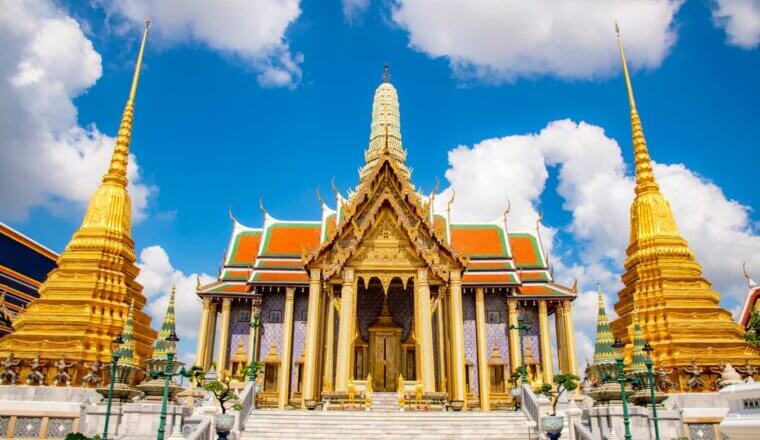
Get my best stuff sent straight to you!
Pin it on pinterest.
- Work with me
- Privacy policy

- Years in review
- United Kingdom
- Bosnia & Herzegovina
- North Macedonia
- Philippines
- South Korea
- South Africa
- Africa Overlanding
- Central America
- New Zealand
- Solo Travel
- Budget travel
- Travel tips
- Travel itineraries
- Hidden gems
- Bucket list
- Travel resources
- Digital nomadism
- Blogging tips
- Start a travel blog
Malaysia , Thailand , The Philippines , Vietnam
3 month southeast asia itinerary & backpacking route.
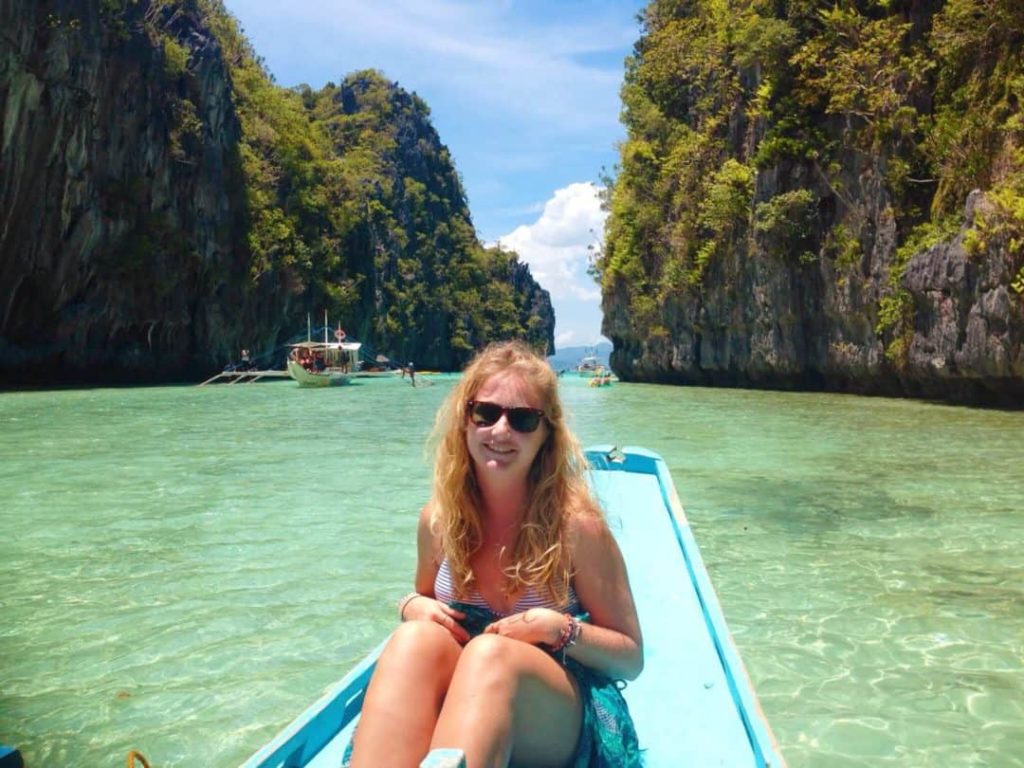
Table of Contents
This post may contain affiliate links to things like tours, hotels, Amazon associates and products. These help me earn a small commission at no additional charge to you.
Looking for the perfect Southeast Asia itinerary for 3 months? You found it! There are so many fascinating destinations and beautiful sights to see in this region. If you have no idea where to start or how to get around, fret not as I’m sharing my tried and tested Southeast Asia backpacking route.
Read next: 101 Southeast Asia travel tips
Where to go during 3 months in Southeast Asia
The countries I’ll be talking about in this blog are Thailand, Laos, Vietnam, Cambodia, Myanmar, Malaysia, Indonesia and the Philippines. If you’ve yet to decide which countries to visit, you might be best off reading my guide to the best things to do in Southeast Asia ordered by country. If you know where you want to go, you’re in the right place. In this blog post, I’ll share 3 travel itineraries for spending 3 months in Southeast Asia. The first is for the big four: Thailand, Laos, Cambodia and Vietnam . This Asia backpacking route can be explored entirely by land with no flights needed. The second two Southeast Asia itineraries include Myanmar, Malaysia, Indonesia and the Philippines although, a word to the wise, I don’t recommend trying to see all eight countries in three months. It would be insanely busy!
3 MONTHS IN SOUTHEAST ASIA ESSENTIALS Copy of Lonely Planet Southeast Asia on a shoestring Book buses and trains: 12GoAsia Book flights on Skyscanner Accommodation: Browse Hostels (Hostelworld) // Browse hotels (Booking.com) Tours: GetYourGuide For foodies: A Chef’s Tour Stay connected: an Airalo e-SIM for 18 Asian countries Travel insurance: True Traveller (European travellers) / Hey Mundo (other nationalities) / Safety Wing (digital nomads) Essential reading: Things to do Southeast Asia / Vietnam travel guide / Backpacking the Philippines / Malaysia itinerary / Bali itinerary
Before we get stuck into my Southeast Asia backpacking itinerary, I want to share…
The perfect Southeast Asia backpacking route
I believe I’ve hacked the perfect route around Thailand, Laos, Cambodia and Vietnam. It was trial and error because I definitely did it ‘wrong’ during my first trip. My first attempt at a Southeast Asia backpacking route was from northern to southern Laos to visit Four Thousand Islands on the border of Cambodia only to travel back up (which took almost two days!) for my flight to Vietnam. Then I ended up in Cambodia two months later. In retrospect, there’s a more sensible route…
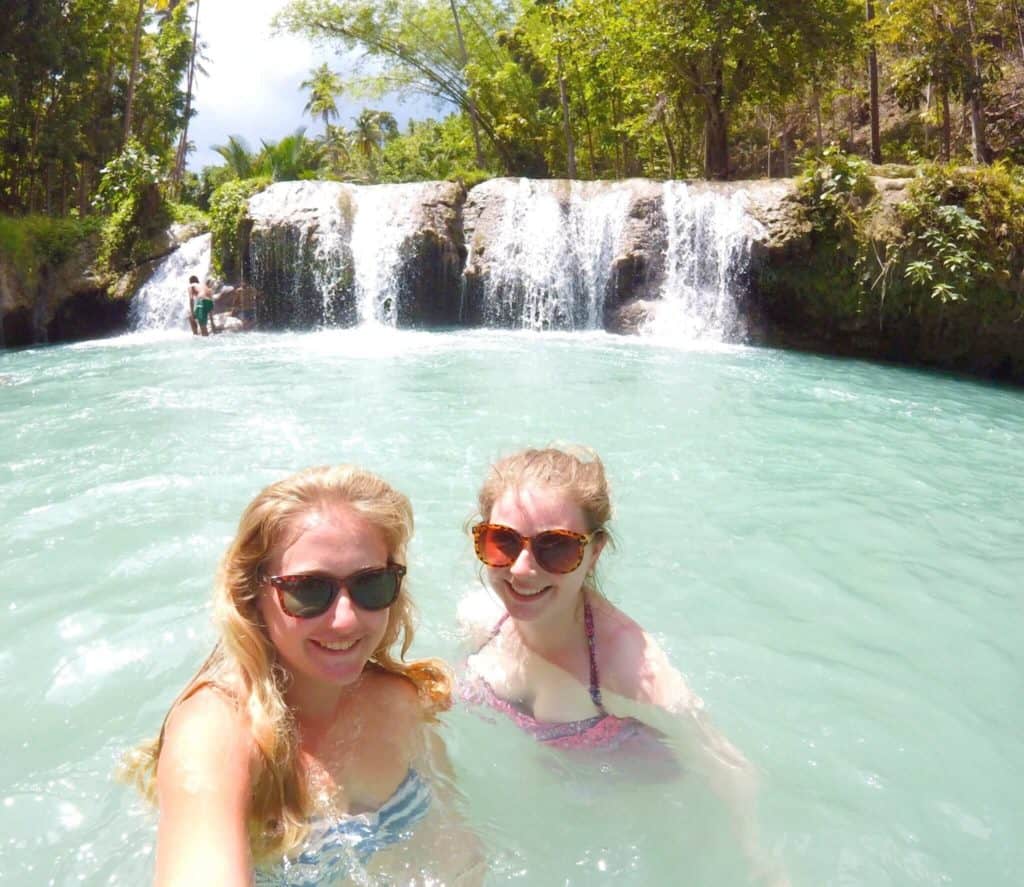
Perfect Southeast Asia backpack route:
- After seeing Thailand, take the slow boat from Chiang Rai to Luang Prabang, Laos
- Travel down Laos by bus to the Four Thousand Islands
- Cross the border to Cambodia
- After seeing Cambodia, cross the border to Vietnam (by boat or bus) and arrive in Saigon (Ho Chi Minh)
- Travel up Vietnam and finish in Hanoi.
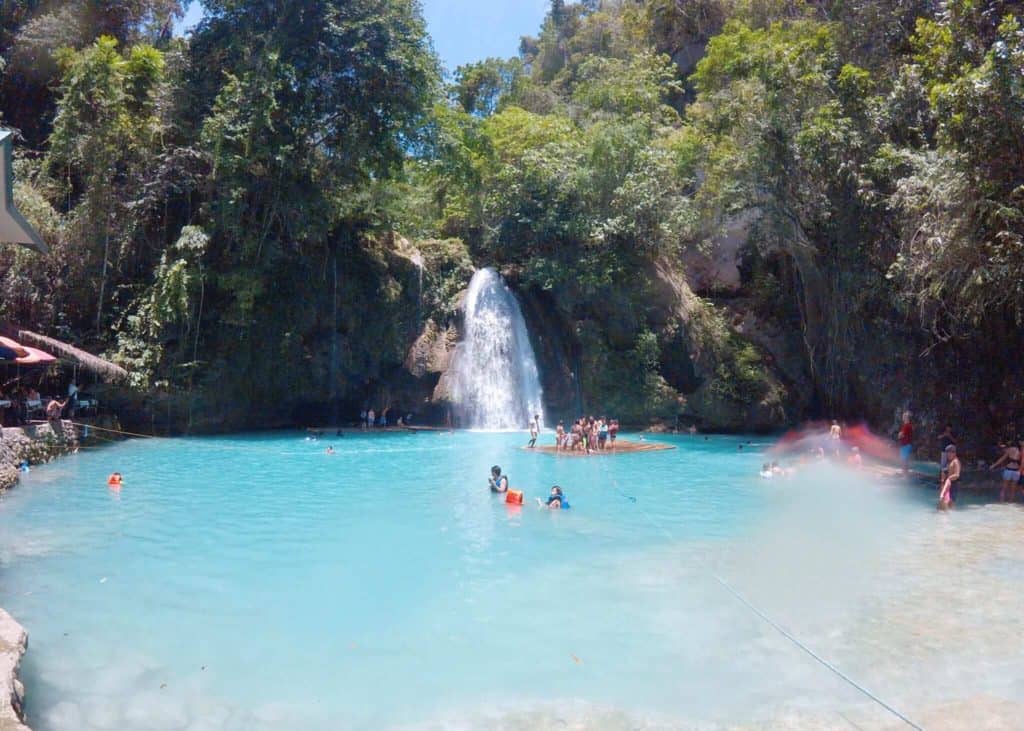
I believe this is the perfect Southeast Asia backpacking route. You won’t pay for any flights (which is great for Planet Earth) and you’ll take the more adventurous, scenic route. This 3 month Southeast Asia backpacking route doesn’t include Myanmar, Malaysia, the Philippines or Indonesia so keep reading as I’ll include an itinerary for these later.
How to get around Southeast Asia
One of the best things about backpacking Southeast Asia is how easy and affordable it is to get about. Here are the main options: Flights – there are numerous budget airlines in Asia including Nok Air, Lion Air, Scoot and Air Asia. Book them on AirAsia or Skyscanner . Buses – this is a popular way to travel in Asia and usually my preferred option. Many of the Southeast Asia backpacker buses are comfortable with reclining seats, aircon, and snacks included with the ticket. Use 12GoAsia to book and compare prices. Trains – you can travel by train in various parts of Southeast Asia. These are a scenic way to travel and usually very comfortable. Trains can also be booked on 12GoAsia . Boat – don’t overlook boat as a way to get around. The slow boat from Northern Thailand to Laos and the bus and boat along the Mekong between Cambodia and Vietnam are adventures in their own right.
My top tip for backpacking Southeast Asia – travel early in the morning for short journeys and throughout the night for longer ones. Yes, it feels a bit rough but it saves you so much valuable time.
How long to spend in Southeast Asia
How long is a piece of string? I spent almost a year in Southeast Asia from 2015-16 and another year from 2018-19. But I’m aware most people probably don’t have that much time on their hands, especially if they don’t work online. I would suggest spending 3 months in Southeast Asia at a minimum. The following 3 month Southeast Asia backpacking itinerary will help you see the best of the region. Note – these itineraries are busy and fast-paced to incorporate as much as possible. Don’t be afraid to stay longer in places you love and miss a few stops!
Want to stay connected while travelling? Download an Airalo e-SIM and connect as soon as you land in Asia. Browse packages for individual countries or get the Asialink card for 18 countries.
#1 – Southeast Asia 3 month itinerary (Thailand, Laos, Cambodia, Vietnam)
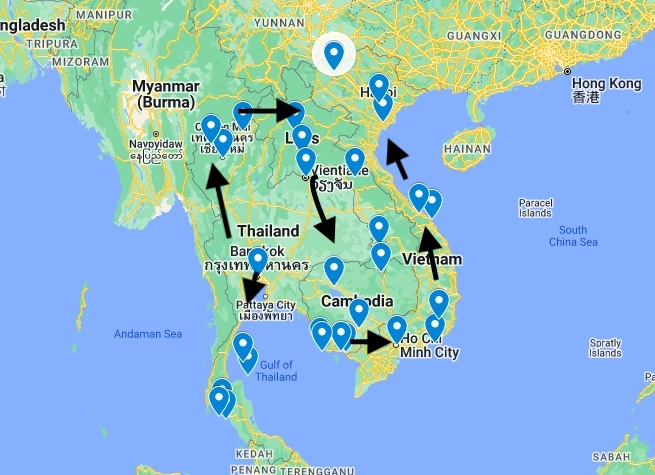
This Southeast Asia backpacking itinerary is a classic. This popular section of what’s often called the ‘Banana Pancake trail’ is the perfect place for beginner travellers, solo travellers and those who’ve never backpacked before. It’s safe, affordable and you’ll meet plenty of other travellers. There are beaches, adrenaline adventures and bucket list experiences aplenty…
Overview: 1 month Thailand , 2 weeks Laos, 2 weeks Cambodia and 1 month Vietnam .
Weeks 1-2: Southern Thailand
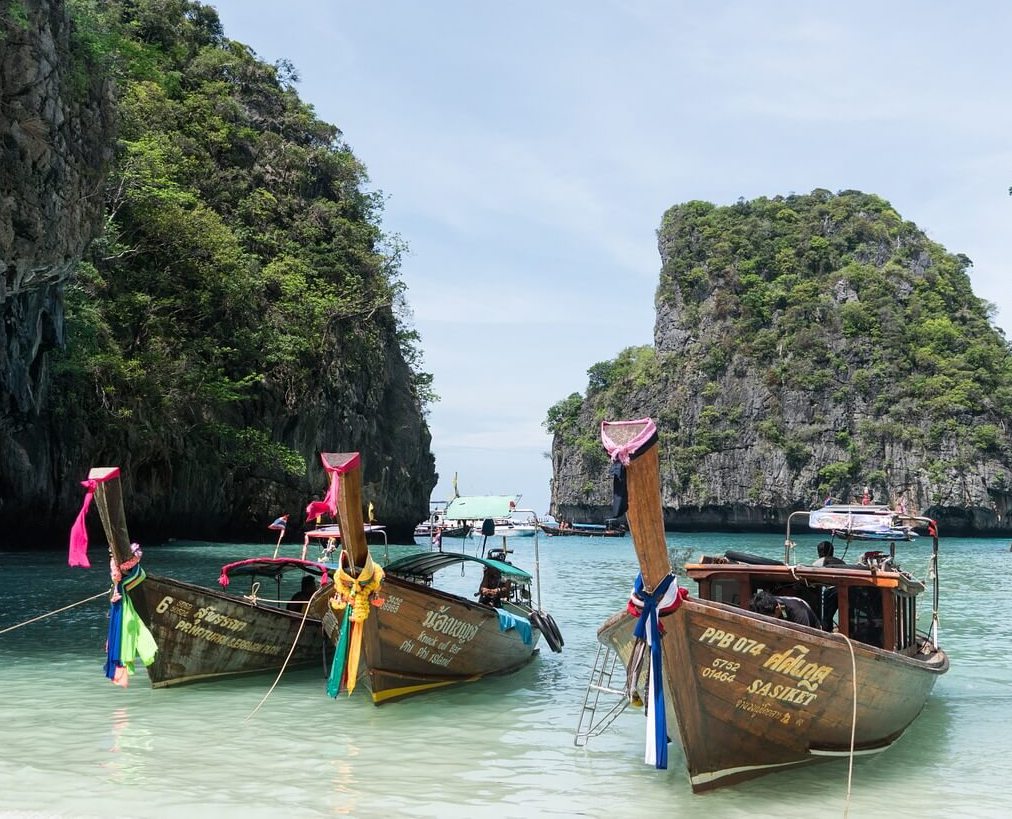
After flying into Bangkok, make your way down to the islands by night bus or flight. There are two main clusters of Thai islands : – Koh Tao (famous for diving), Koh Samui and Koh Phanang (famous for the Full Moon Party) off the east coast – Phi Phi, Koh Lanta and Koh Yao Yai further south off Krabi on the west coast. If you have 2 weeks in Thailand, include these stops in your 3 month Southeast Asia itinerary…
Days 1-2: Bangkok. A two-day Bangkok itinerary is enough time to see highlights including the Grand Palace , Wat Pho , Wat Arun and Chinatown. Catch a flight to… Days 3-4: Koh Samui . Visit the Big Buddha statue at Wat Phra Yai Temple and explore beaches and waterfalls – you can also join this tour to explore. Swap this stop for Koh Phangan if it times with a Full Moon Party. Read about the differences between Koh Samui and Koh Phangan . Days 5-7: Koh Tao. Try diving and spend longer if you wish to complete your Open Water diving qualification. Catch a ferry to Surat Thani and a bus to… Days 8-10: Krabi. Explore Railay Beach and its caves, hike to Wat Tham Sua temple, and visit Krabi Hot Springs. Days 11-12: Koh Lanta . My favourite Thai island has loads to do from boat trips, kayaking, volunteering at Lanta Animal Welfare and visiting caves, beaches and national parks. Days 13-14: Koh Phi Phi or, if you’re not a fan of parties, visit quieter Koh Yao Yai .
Read next: the ultimate guide to solo female travel in Thailand
Weeks 3-4: Bangkok and Northern Thailand
After two weeks of island paradise, get your culture fix by travelling back to Bangkok and making your way towards Northern Thailand. The mountains, countryside and temples are a total contract to the south. Here’s my itinerary for 2 weeks in Northern Thailand : Days 15-16: Return to Bangkok. Take a trip to Ayutthaya , Thailand’s ancient temple site.
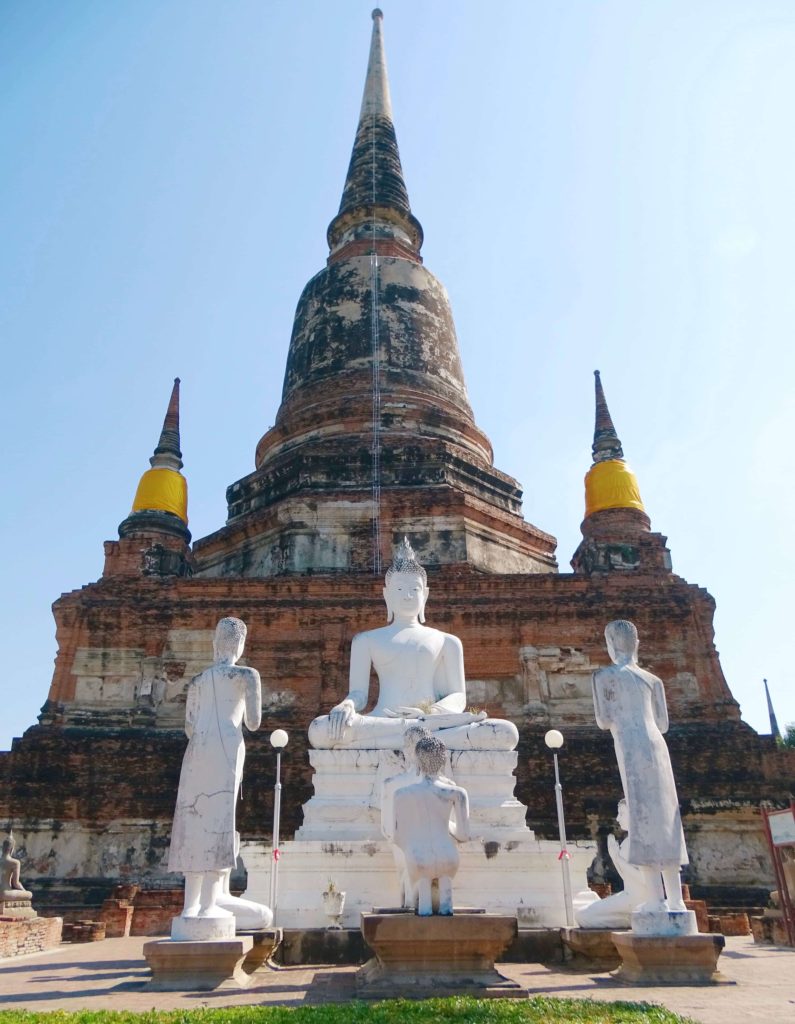
Days 17:18 : Take a bus or train to Sukhothai , a UNESCO site populated from 1238 until 1438. Days 19-21: Chiang Mai. This small city in Northern Thailand is one of my favourites in Asia. Take a bus from Bangkok to Chiang Mai or catch a flight. Check out my Chiang Mai itinerary . Days 22-24: Pai. This hippie town in the mountains is a lovely spot for a couple of days exploring hot springs and Pai Canyon.
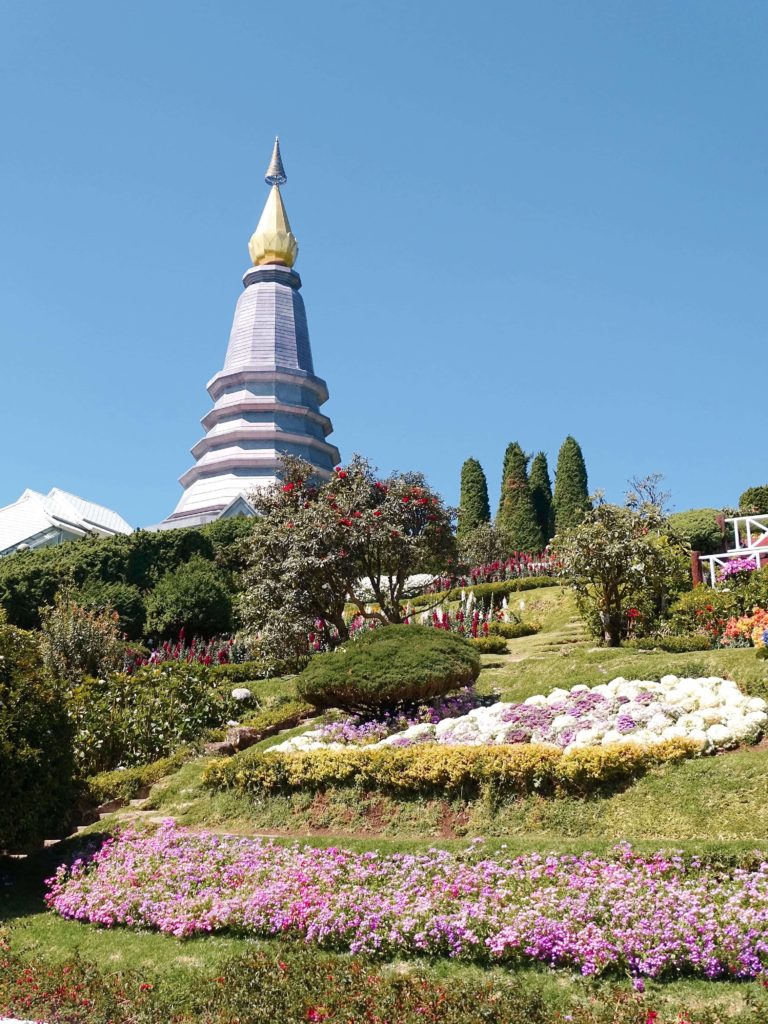
Days 25-26: Head back to Chiang Mai and take a trip to Doi Inthanon National Park with GetYourGuide . Alternatively, take longer overnight hikes from Chiang Mai . Days 27-29: Chiang Rai. Not only is this town a fantastic place for temple-hopping but it’s an essential stop if you’re heading to Laos. Tour companies will take you to Huay Xai to begin the boat ride. Check out my 2 day Chiang Rai itinerary . Day 30: Slow boat to Laos. Follow my Southeast Asia backpacking route by taking a 2-day slow boat from Thailand to Laos and soaking up some amazing scenery along the way.
Weeks 5-6: Laos
The small, landlocked country of Laos may be lesser-visited but it’s well worth including in your 3 month Southeast Asia itinerary. Here’s how to spend 2 weeks…
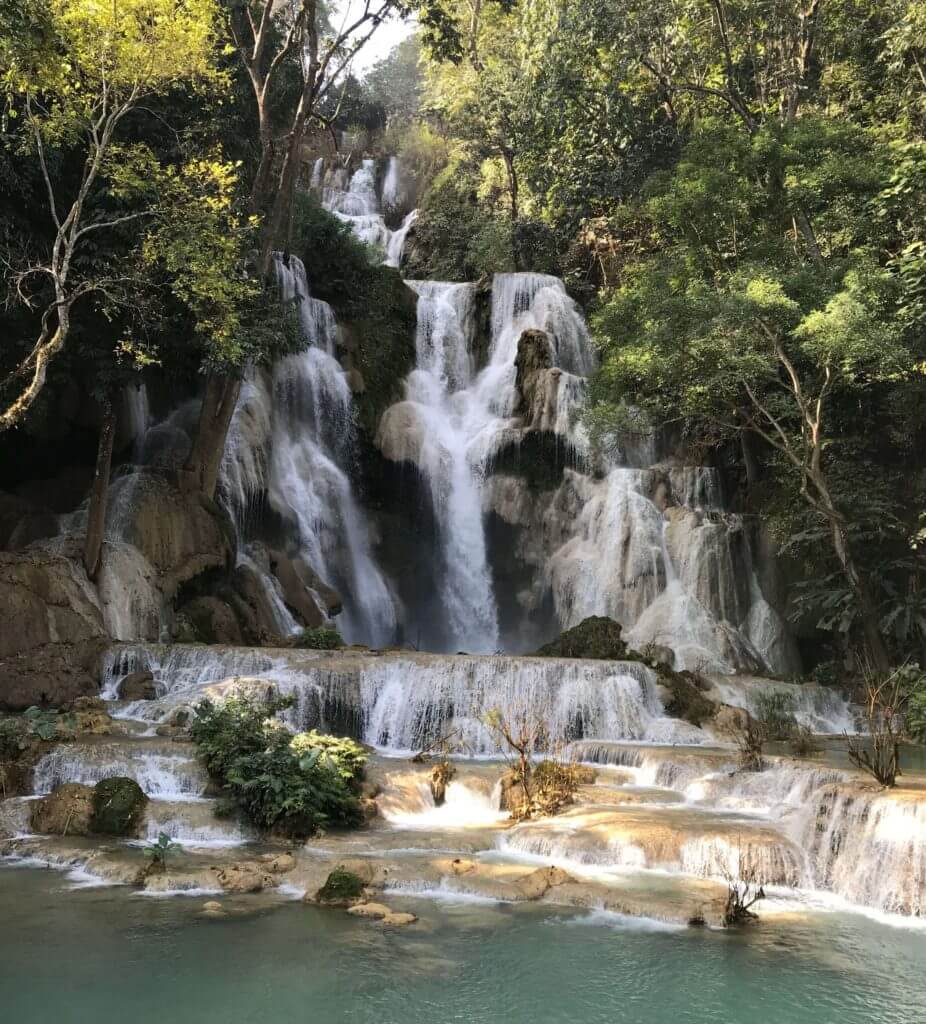
Days 33-36: Luang Prabang. The slow boat from Thailand arrives in Luang Prabang. Things to do in Luang Prabang include temple-hopping, shopping and eating at the night market, watching sunset from Mount Phusi and swimming in Kuang Si Waterfall. Days 37-38: Vang Vieng: Spend a couple of days in eco-adventure paradise, kayaking, canoeing, abseiling and trekking.
The most popular tours in Vang Vieng:
- 🛶 Experience adventure in Vang Vieng by kayaking on the Nam Song River and tubing inside Tham Nam None Cave with this tour
- 🏞️ Enjoy an easy half-day zip lining experience surrounded by green beautiful forests and mountains
- ⛰️ Discover some of the most beautiful caves and trails available in Vang Vieng with this full day trekking tour
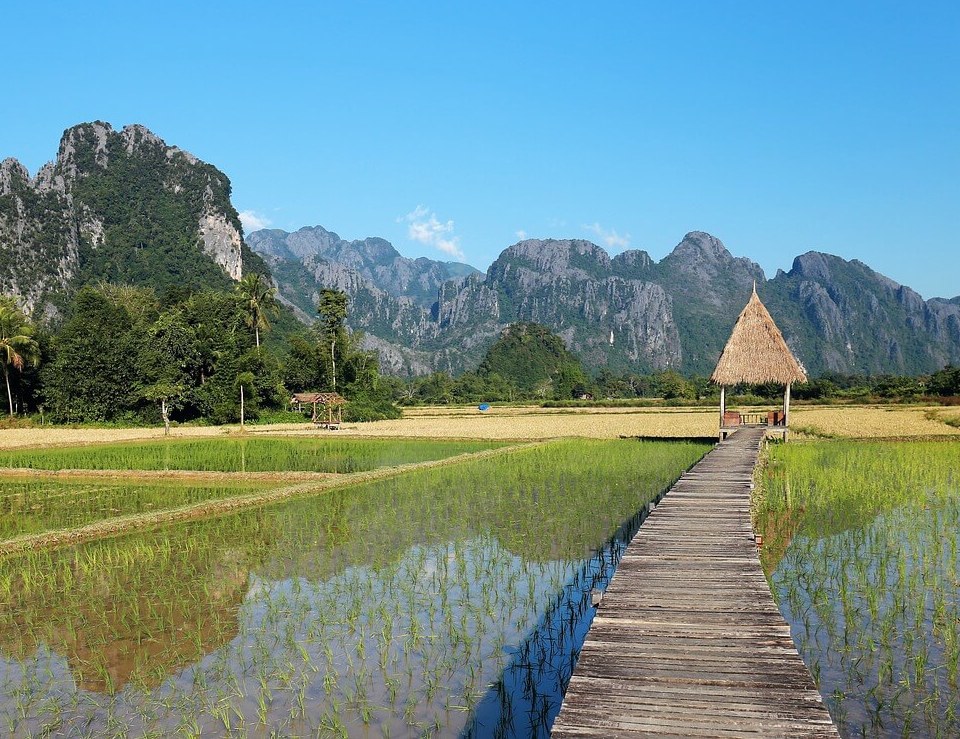
Days 39-40: Vientiane : The capital of Laos has a few cool attractions including Pha That Luang temple and Buddha Park . It’s also a good place to try tasty Vientiane food . Days 40-41: Kong Lor Caves. These huge limestone caves in central Laos can be explored by boat. Days 42-44: Pakse . Travel from Kong Lor to Pakse. Visit Wat Luang Temple and learn about the region’s culture at Champasak Historical Heritage Museum. Days 45-47: Don Det, Four Thousand Islands. Three months in Southeast Asia can be busy so take some time to relax. The Four Thousand Islands are scattered in the Mekong connecting Laos and Cambodia. Bag yourself a $5 beach hut on Don Det and book a kayaking tour to spot river dolphins.
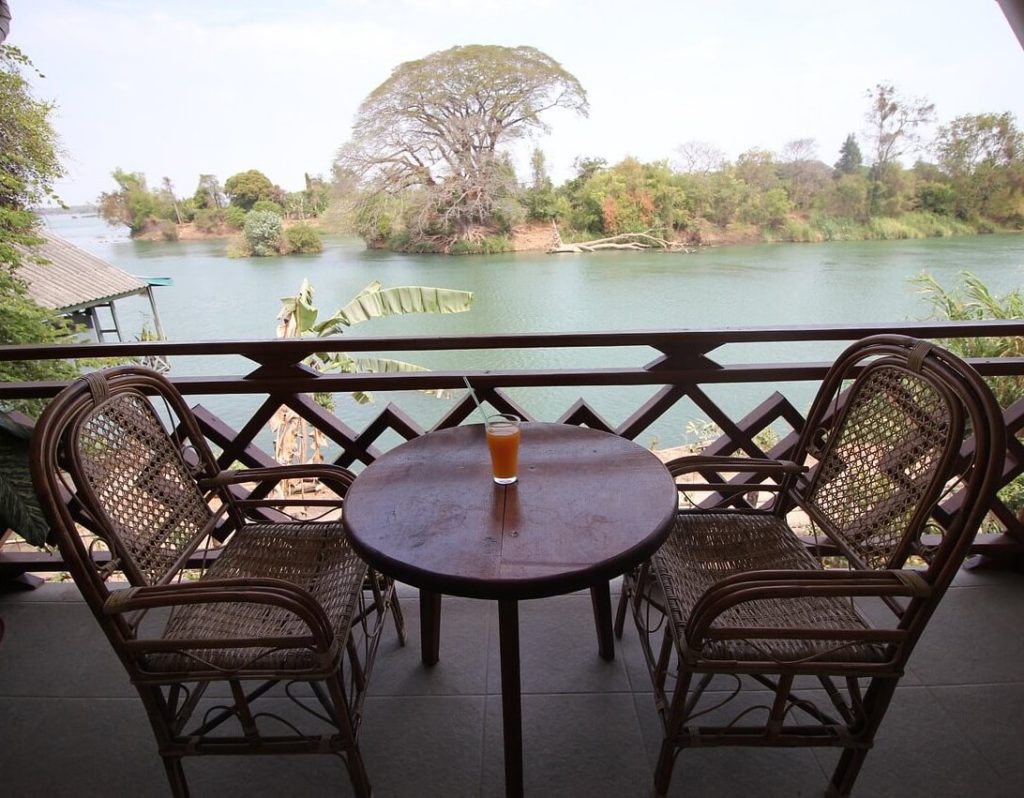
When you’re done, continue my Southeast Asia backpacking route by booking your transportation from Don Det to Siem Reap, Cambodia .
Weeks 7-8: Cambodia
Days 48-51: Siem Reap . It wouldn’t be a trip to Cambodia without marvelling at Angkor Wat , a Hindu temple site dating back to the 12th century. Stay in Siem Reap town and hire a tuk-tuk driver who will bring you to the temples for sunrise.
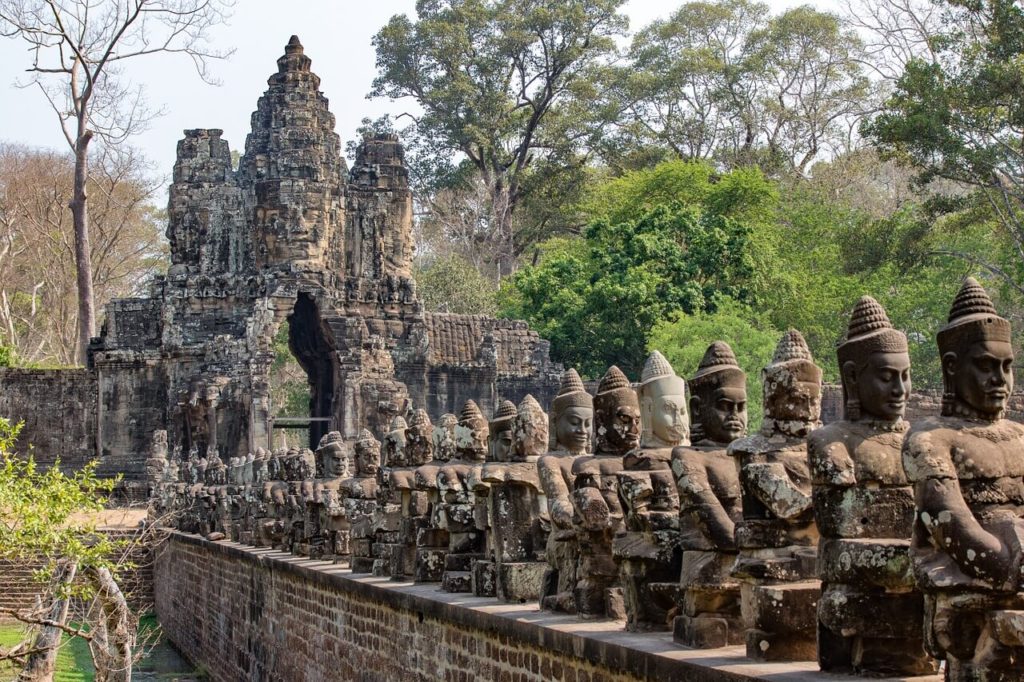
Days 53-53: Kep . Once an elite French seaside town, Kep is now a popular stop for travellers. Hike in Kep National Park, soak up the sunset and sample fresh seafood. Days 54-55: Kampot. This is favourite stop for foodie travellers who come from far and wide to sample famous Kampot crab seasoned with Kampot pepper. Days 56-57: Koh Rong . Travel from Sihanoukville to Koh Rong island known for its diving, snorkelling and lively beach bars. Days 58-59: Koh Rong Samloem . Take a trip to the smaller and more peaceful Koh Rong Samloem. There are fewer busy beach bars and more empty beaches.
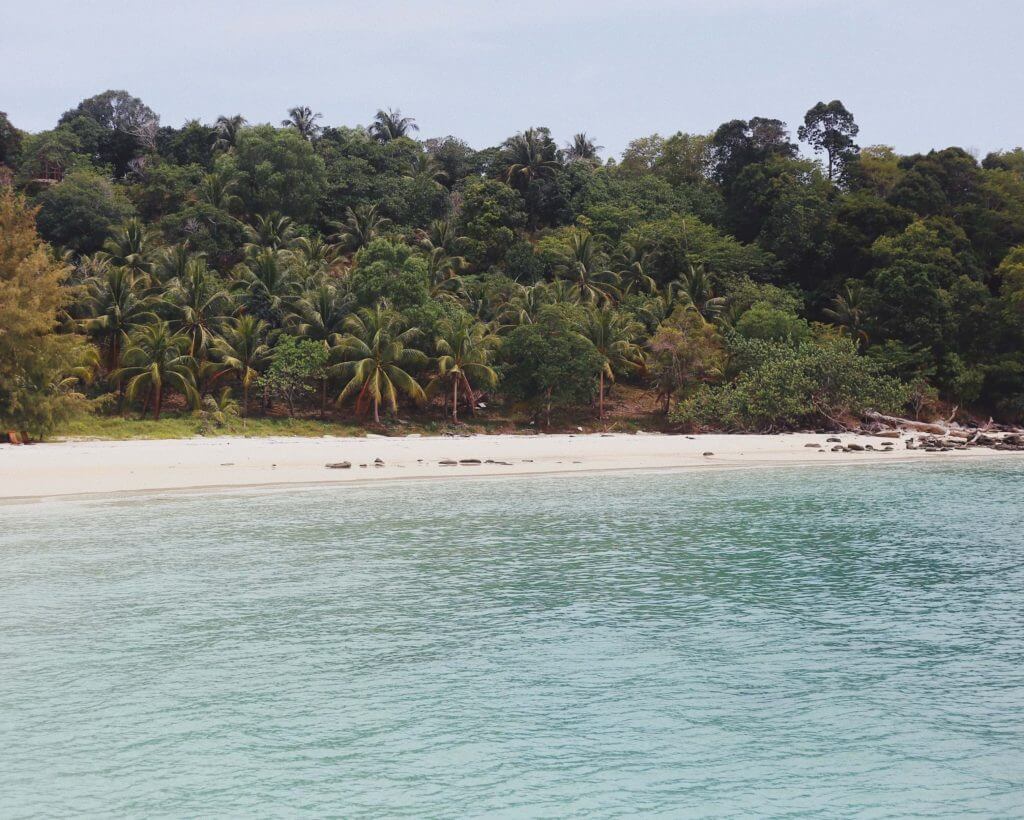
Days 60-62: Phnom Penh. Explore Cambodia’s capital and visit tragic but important locations, the Killing Fields and Tuol Sleng Museum of Genocide . Book activities on GetYourGuide . Afterwards, catch a 3-day boat and bus combo ticket from Phnom Penh to Saigon .
Weeks 9-12: Vietnam
I adore Vietnam! It’s well placed on the Southeast Asia backing route and home to cities, beaches, mountains and more. Spend four weeks here to finish up your Southeast Asia itinerary.
Read next: The ultimate Vietnam itinerary
Days 65-68: Saigon . Explore the War Remnants Museum, Chu Chi Tunnels, Walking Street and Ben Thanh Market. Follow my Saigon itinerary .
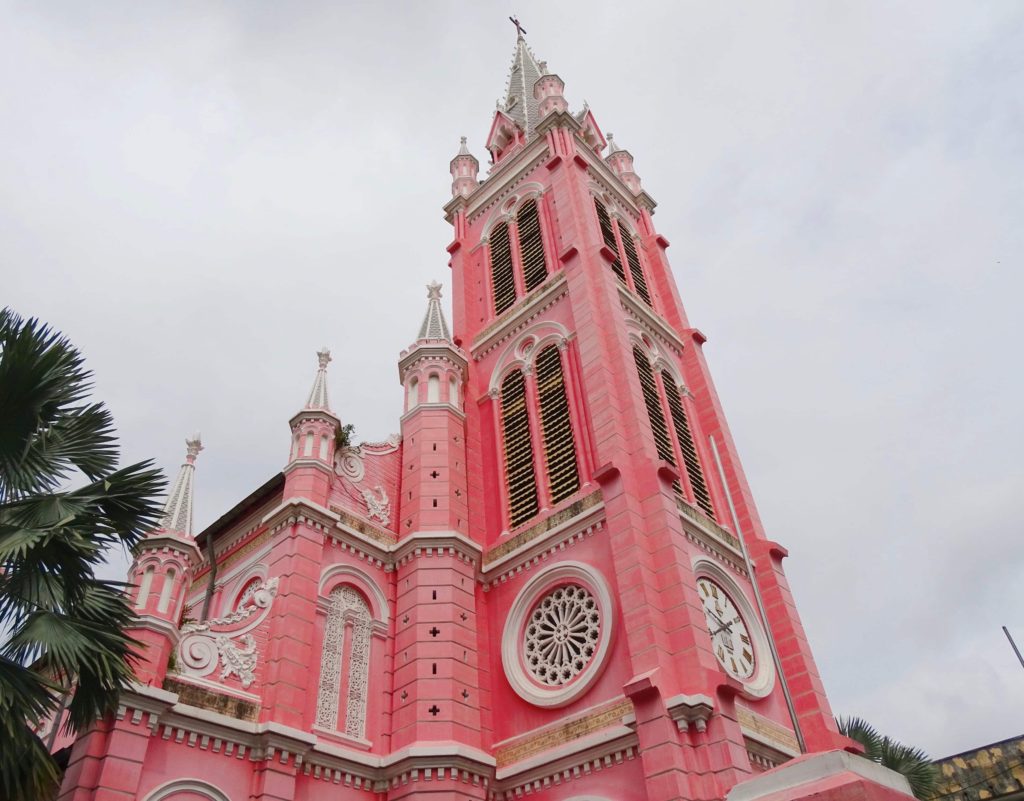
Days 69-70: Mui Ne . Try your hand at sandboarding. Days 71-72: Da Lat . This cool, mountainous part of Vietnam is known for coffee, canyoning and countryside tours . Day 73-74: Nha Trang . I don’t love Nha Trang but you’ll need to stop over to break up the journey up the coast. Take a trip to the nearby hot spas. Days 75-78: Hoi An . This quaint city is a must for any Southeast Asia backpack itinerary. Include the Ancient Town and My Son Temples in your Hoi An itinerary . Day 79: the Hai Van Pass . Cruise the coastline by scooter or Jeep to soak up some of Vietnam’s best scenery. Days 80-81: Hue . Spend 2 days in Hue to explore Vietnam’s ancient capital and explore the temples.
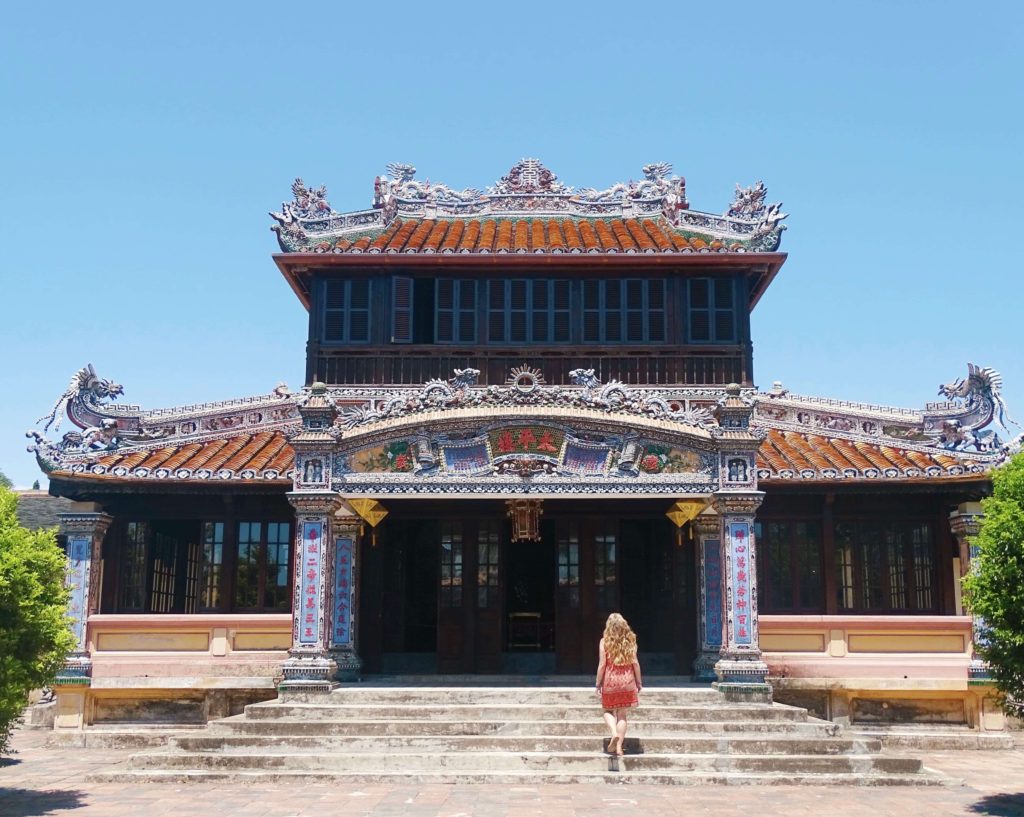
Read next: guide to travelling solo in Vietnam as a woman
Days 82-83: Phong Nha National Park . The largest caves in the worlds are found in Phong Nha . Take day trips from the town at the centre of the national park. Board a night bus to… Days 84-85: Ninh Binh. Spend 2 days in Ninh Binh . Explore mountains and countryside temples. Days 86-87: Hanoi. Vietnam’s atmospheric capital is one of my favourite places. Spend 3 days in Hanoi to catch the highlights. Days 88-90: Sapa. A few days hiking in Sapa is a must for nature lovers. Days 91-93: Ha Long Bay. Spend a couple of nights cruising between islands in Ha Long Bay. Book a 2-day Hanoi cruise to finish your 3 month trip!
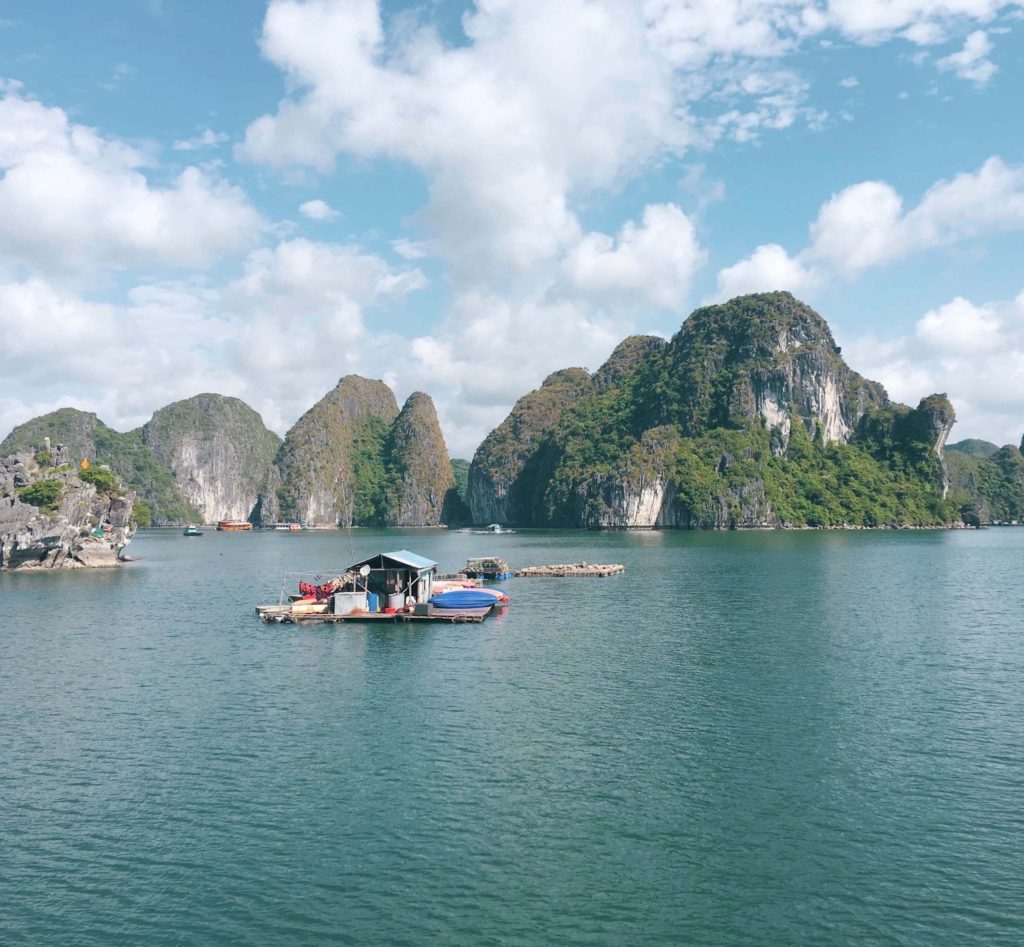
3 month Southeast Asia itinerary – more than the big 4!
Want to do more than Thailand, Laos, Vietnam and Cambodia? I don’t blame you. The next two Southeast Asia itineraries include some of my other favourite countries. Add to your Southeast Asia backpacking route:
Myanmar, Malaysia, Singapore , Indonesia and the Philippines
#2 – Southeast Asia itinerary (inc Myanmar and Malaysia)
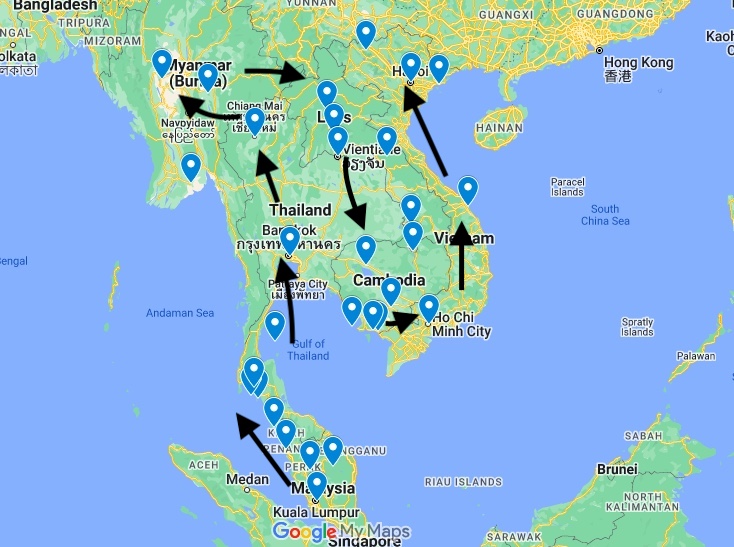
This 3 month Southeast Asia itinerary is similar to the one above but it spends a little less time in Thailand, Vietnam, Cambodia and Laos to allow for a month exploring Myanmar and Malaysia .
Overview: 2 weeks in Malaysia, 3 weeks in Thailand, 2 weeks in Myanmar, 10 days in Laos, 10 days in Cambodia, 2 weeks in Vietnam
Weeks 1-2: Malaysia
Malaysia is truly one of my favourite countries which is why I recommend visiting during your 3 months in Southeast Asia. In my 2 week Malaysia itinerary , I share three different itineraries suited to city, beach and nature lovers. Here’s a quick overview:
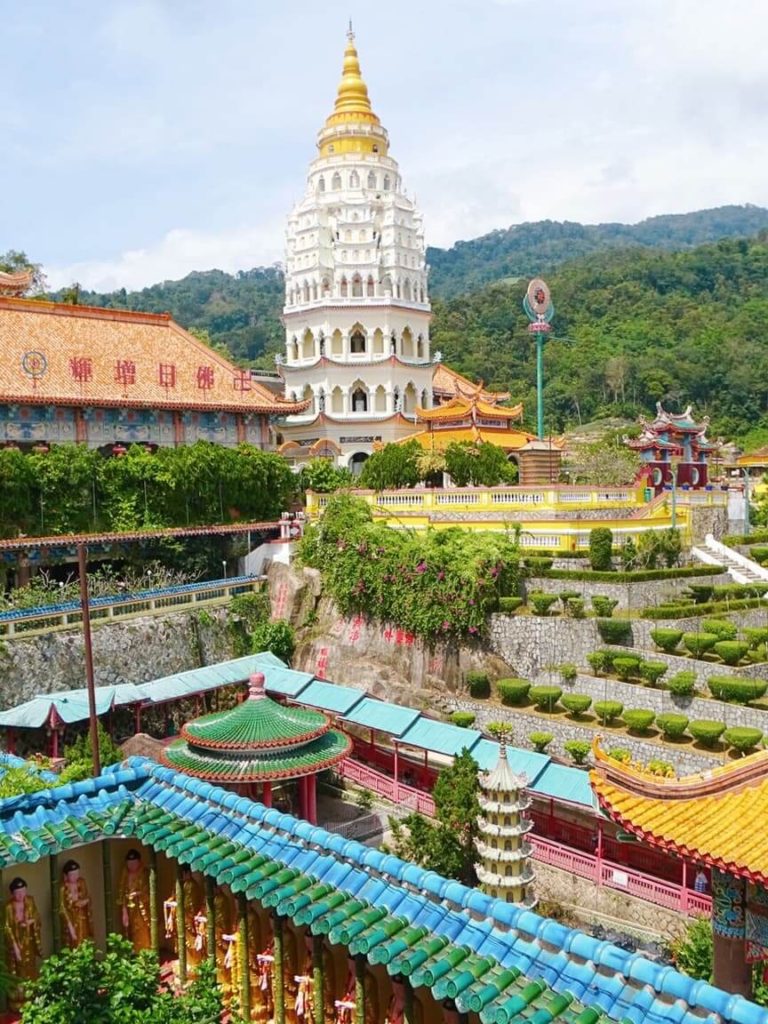
Days 1-2: Kuala Lumpur. Explore highlights in the Malaysian capital like the Petronas Towers, Chinatown, the Batu Caves and Little India. Use my 2 day KL itinerary to plan your trip. Days 3-5: Taman Negara . This ancient rainforest and national park in central Malaysia makes a great escape from the big city. You can stay overnight (I spent 3 days trekking and spotting wildlife on guided nature walks) or if you’re short on time, take a day tour from KL . Days 6-8: Cameron Highlands. Drink tea in the cool, lofty climate of this ex-British hill station. Days 9-11: Penang. Stay in Georgetown and explore the vibrant capital of Penang Island. Once you’re done with street art , street food , cool cafes and culture, you can take a day trip to Kek Lok Si Temple .
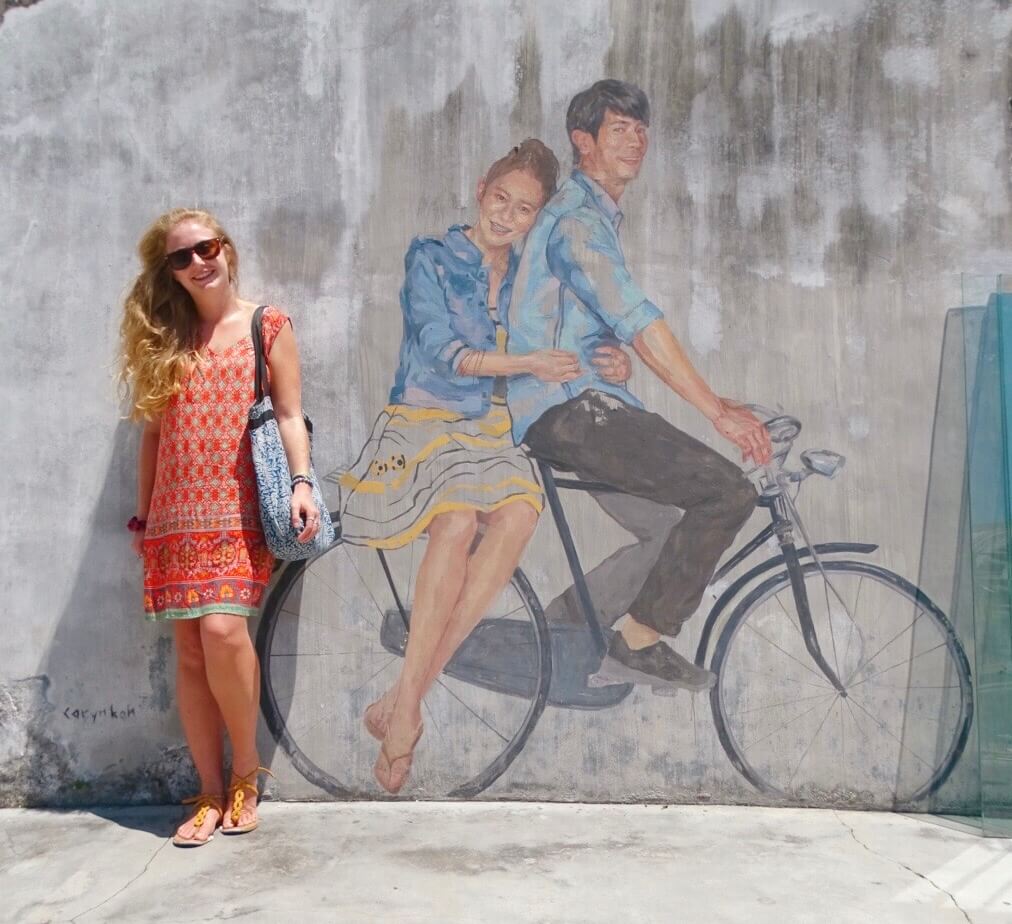
Days 12-14: Langkawi . Spend a few days snorkelling, beach-basking, taking boat trips and other activities in Langkawi , Malaysia’s most beautiful island.
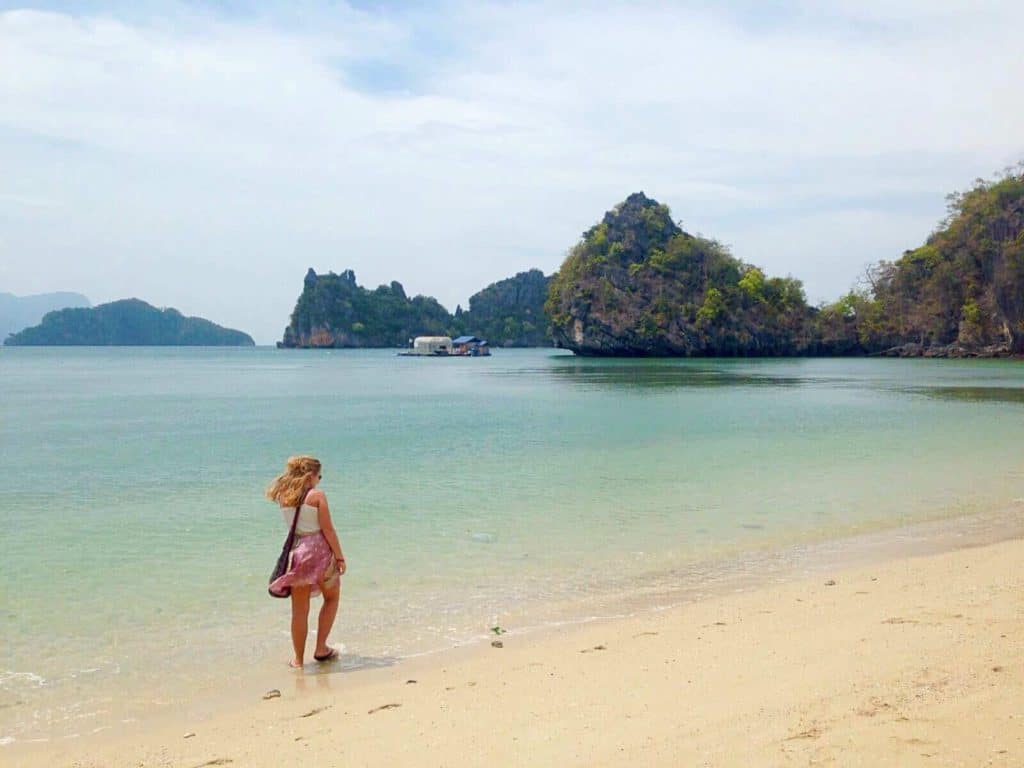
How to get from Malaysia to Thailand: Of course you can fly from KL or Penang airports but this Southeast Asia backpacking route is all about overlanding! You can travel by bus and boat from Langkawi to the Thai islands without catching a flight. The Langkawi ferry arrives into Koh Lipe from where you can catch another ferry to Koh Lanta.
Week 3-6: Thailand
Spend 2-3 weeks in Southern Thailand depending how much you like beaches and nightlife. An itinerary could look like this (for descriptions about these places, see my #1 itinerary above). Days 16-19: Koh Lanta . Relax in island paradise. Days 20-21: Koh Phi Phi . Party and snorkel. Days 22-23: Krabi . Visit beaches and rock climb. Days 24-26: Koh Tao . Try your hand at diving or check out Koh Samui or Phangan instead. Days 27-30: Bangkok . Explore the Grand Palace and eat street food. Days 31-34: Chiang Mai . Visit temples and night markets. Head from Chiang Mai to Myanmar by bus or flight.
Week 6-7: Myanmar
Note – in 2022, Myanmar is not safe for travel due to the political situation. I will update this post if this changes. One of the most captivating and culturally rich countries I’ve been to is Myanmar, a must for your 3 month Southeast Asia itinerary. Tourism is still fresh compared to Thailand and it’s the perfect place to get off-the-beaten-track and see how locals live. Here’s how to spend 2 weeks… Days 35-36: Yangon. Explore the vibrant and busy city of Yangon. Visit 99-metre Shwedagon Pagoda, eat barbecued seafood on 19th Street, walk around Kandawgyi Lake and take a trip to pilgrimage site, the Golden Rock. Days 37-40: Bagan. With 1,000 years of history and hundreds of ancient temples to explore, there’s nowhere quite like Old Bagan. Stay within the temple site and explore the countryside by e-bike or day tour , finding shrines and pagodas as you go.
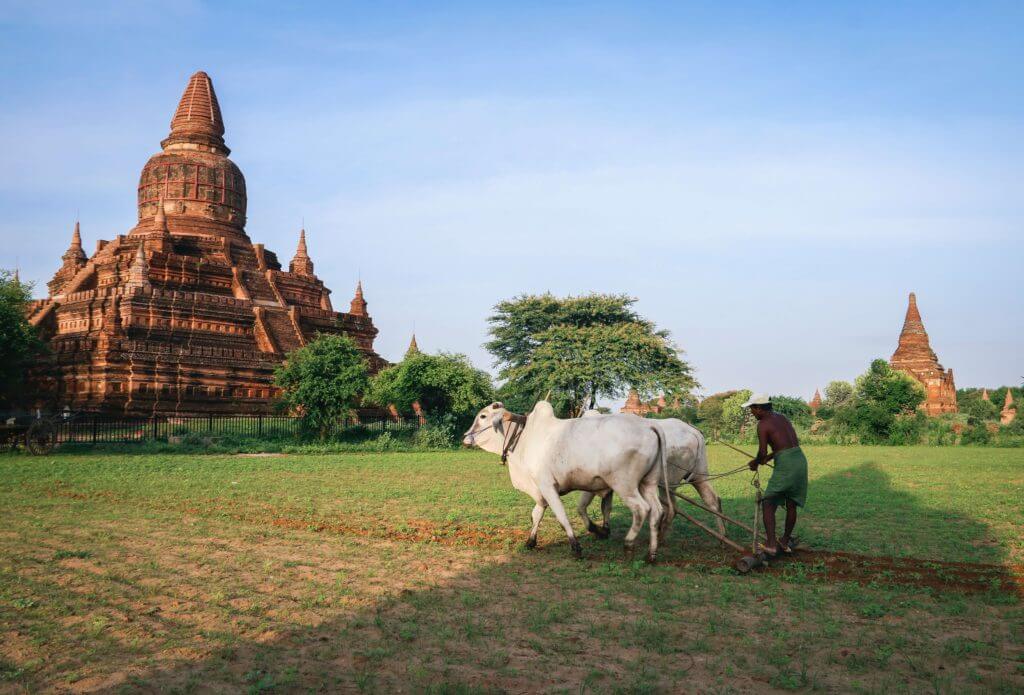
Days 41-43: Kalaw to Inle Lake trek. Arrive by bus into Kalaw and locate Sam’s Family restaurant and trekking company. They’ll take you on a multi-day adventure through the countryside destined for Inle Lake. Days 44-45: Inle Lake. Spend a few days exploring Inle Lake by boat, watching local fishermen row with their feet and visiting floating markets. Finish your day with a sunset Inle Lake tour . Days 46-48: Mandalay. Visit Kuthodaw Pagoda, travel to U Bein Bridge and watch sunset from the top of Mandalay Hill.
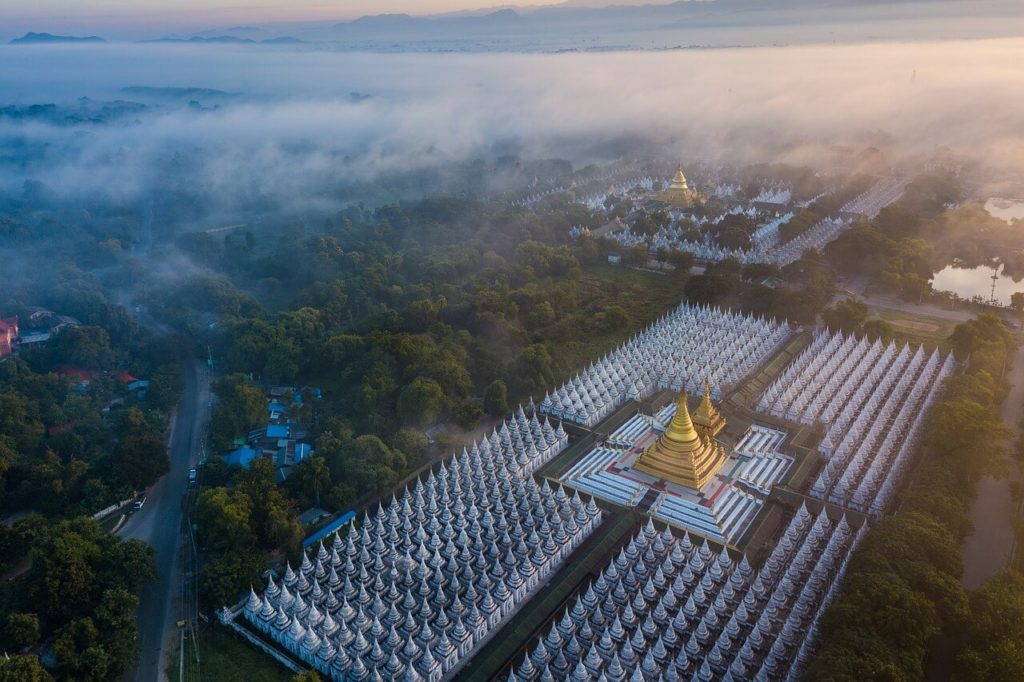
From Myanmar, fly back to Northern Thailand. When you arrive back in Chiang Mai, you can continue your Southeast Asia backpacking trip by taking a bus to Chiang Rai and boarding the slow boat to Laos. Alternatively, fly into Luang Prabang.
Week 8-9: Laos
Spend 2 weeks exploring the highlights of Laos. For descriptions about these stops, see my #1 itinerary above. Days 50-52: Luang Prabang. Visit temples and swim in Kuang Si Falls. Days 53-54: Vang Vieng. Try adrenaline activities and explore the countryside. Days 55-56: Vientiane . Visit the Laos capital. Days 57-58: Kong Lor . Cruise through this enormous cave complex by boat. Days 59-60: Pakse. Stop overnight. Days 61-63: Don Det, Four Thousand Islands. Relax and kayak to see river dolphins.
Week 9-10: Cambodia
Spend 2 weeks exploring the highlights of Laos. For descriptions about these stops, see my #1 Southeast Asia itinerary above. Days 65-67: Siem Reap . Explore Angkor Wat. Days 68-69: Kep . Relax and hike. Days 70-71: Kampot . Eat Kambot crab. Days 72-73: Koh Rong . Party and snorkel. Days 74-75: Koh Rong Samloem . Chill in paradise. Days 76-78: Phnom Penh. Catch a boat and bus combo ticket towards Saigon or for a quicker journey, a bus from Phnom Penh to Saigon.
Weeks 10-12: Vietnam
With two weeks in Vietnam, following this itinerary. Check out my 2 week Vietnam itinerary for more details. Days 80-81: Saigon. Explore War history and eat street food. Days 82-85: Hoi An. Soak up Hoi An Ancient Town and take day trips. Catch a night train from Da Nang to Hanoi. Days 86-87: Hanoi. Shop and eat in Hanoi Old Quater. Days 88-90: Ha Long Bay. Take a 1 or 2-night boat cruise. Days 91-93: Sapa. Hike in the mountains to finish this Asia itinerary.
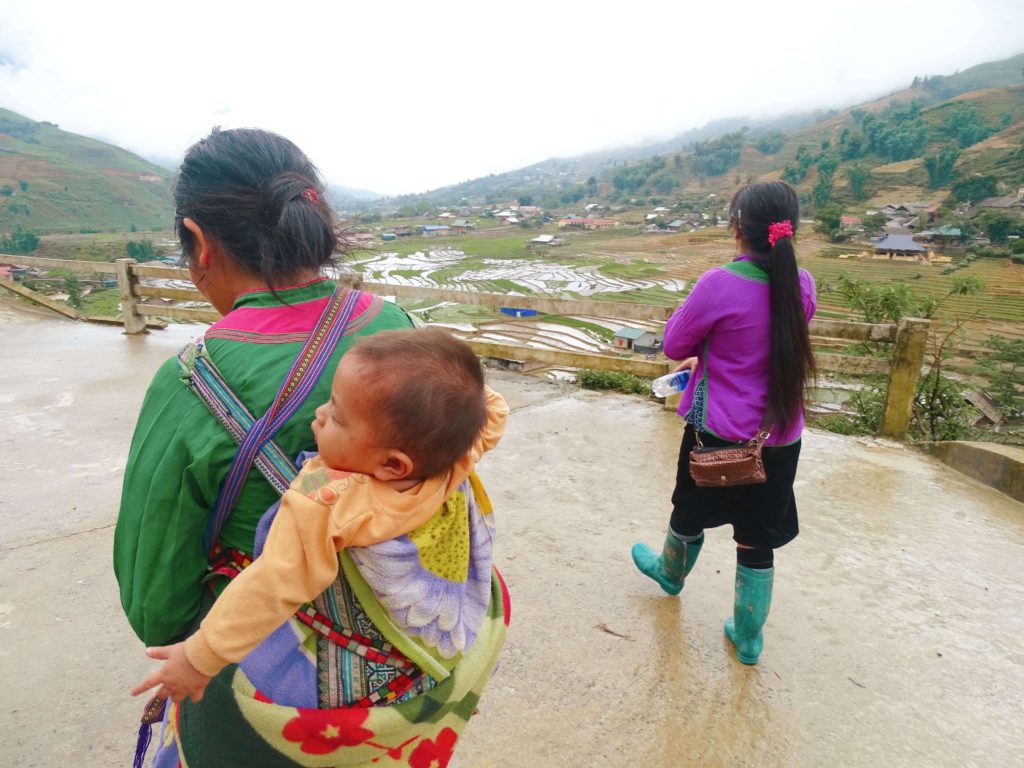
#3 – Southeast Asia itinerary (inc Indonesia and the Philippines)
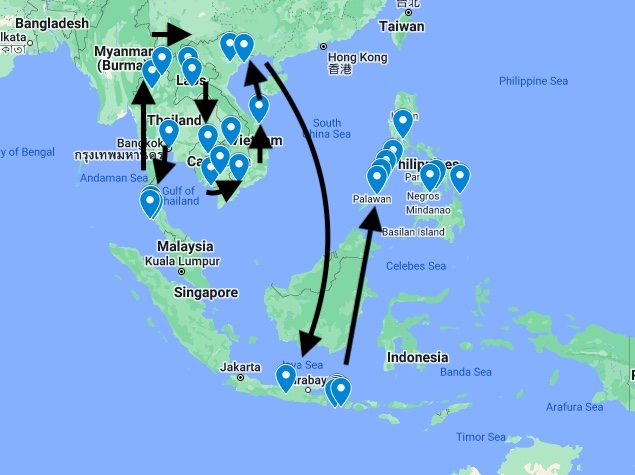
For this final Southeast Asia backpacking itinerary, I’ll include two of my favourite countries: Indonesia and the Philippines. If you’re keen for beaches, diving and island-hopping, this is the Asia itinerary for you!
Overview: 2 weeks in Thailand, 1 week in Laos, 1 week in Cambodia, 2 weeks in Vietnam, 3 weeks in Indonesia, 3 weeks in the Philippines
Weeks 1-2: Thailand
Spend a week in the Southern Islands and a week in the North. For descriptions about these places, see my #1 Southeast Asia itinerary for 3 months (above). Days 1-2: Bangkok . Visit temples, museums, eat and party. Days 3-4: Krabi . Hike and rock climb. Days 5-7: Koh Lanta . Relax, snorkel and hike. Days 8-10: Koh Phi Phi . Enjoy the nightlife. Catch a ferry to Phuket and flight to… Days 11-13: Chiang Mai . Take cooking courses and visit temples. Days 13-14: Chiang Rai. Board the slow boat to Laos from Huay Xai.
Week 3: Laos
For a flying trip to Laos, stick to three locations. For descriptions about these places, see my #1 itinerary above. Days 16-17: Luang Prabang . Eat, temple-hop and chase waterfalls. Days 18-19: Vang Vieng. Take eco tours. Days 20-23: Don Det, Four Thousand Islands . Relax, unwind and spot dolphins.
Week 4: Cambodia
For a flying trip to Cambodia, stick to three locations. For descriptions about these places, see my #1 itinerary above. Days 25-26: Siem Reap . Marvel at Angkor Wat. Days 27-28: Kampot. Beaches and seafood. Days 29-30: Phnom Penh. Museums and history.
Weeks 5-6: Vietnam
Spend a glorious two weeks catching the highlights of Vietnam. Follow my 2 week Vietnam itinerary mentioned above. Days 33-34: Saigon. History and street food. Days 35-37: Hoi An. Wander lantern-lined streets and visit Hoi An cafes . Days 38-40: Hanoi. Explore the vibrant capital. Days 41-43: Ha Long Bay . Take a boat cruise . Days 44-45: Sapa. Hiker’s paradise!
Weeks 7-9: Indonesia
The captivating country of Indonesia is comprised of 17,000 islands, of which Bali, Lombok, the Gili trio and the Nusa islands are the most popular and accessible on the Southeast Asia backpacking route. While there are countless lesser-visited islands to explore, with just 3 weeks in Indonesia , I would suggest exploring both Java and Bali. Follow my Asia backpacking itinerary…
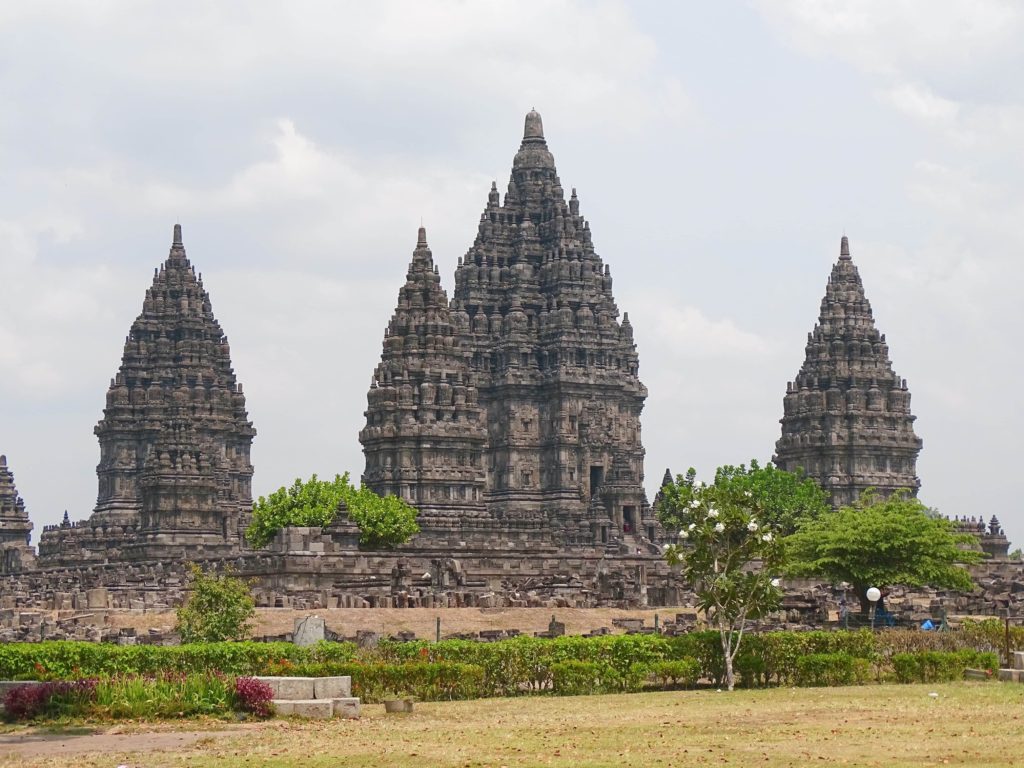
Week 7 (days 46-53): Java . Fly into Yogyakarta (you may need to transfer in Jakarta), the culture capital of Java island. Spend up to four days in Yogyakarta to explore the city’s highlights, sample Javanese food and take a day trip to Borobudur and Prambanan temple sites. Head overland towards Mount Bromo, an active volcano that you can hike for sunrise. Fly from Juanda Airport into Denpasar, Bali. Alternatively, take an overland tour (usually lasting 9 days) from Yogyakarta to Bali visiting Malang and Mount Bromo en route. This arrives in Bali by ferry. Weeks 8-9 (days 54-68) Bali : Spend two weeks in Bali to get the best of the island, from rich Hindu culture, unique Balinese architecture and fresh, veggie-friendly Balinese cuisine . Be sure to get off-the-beaten-track and find the Bali hidden gems especially in North Bali !
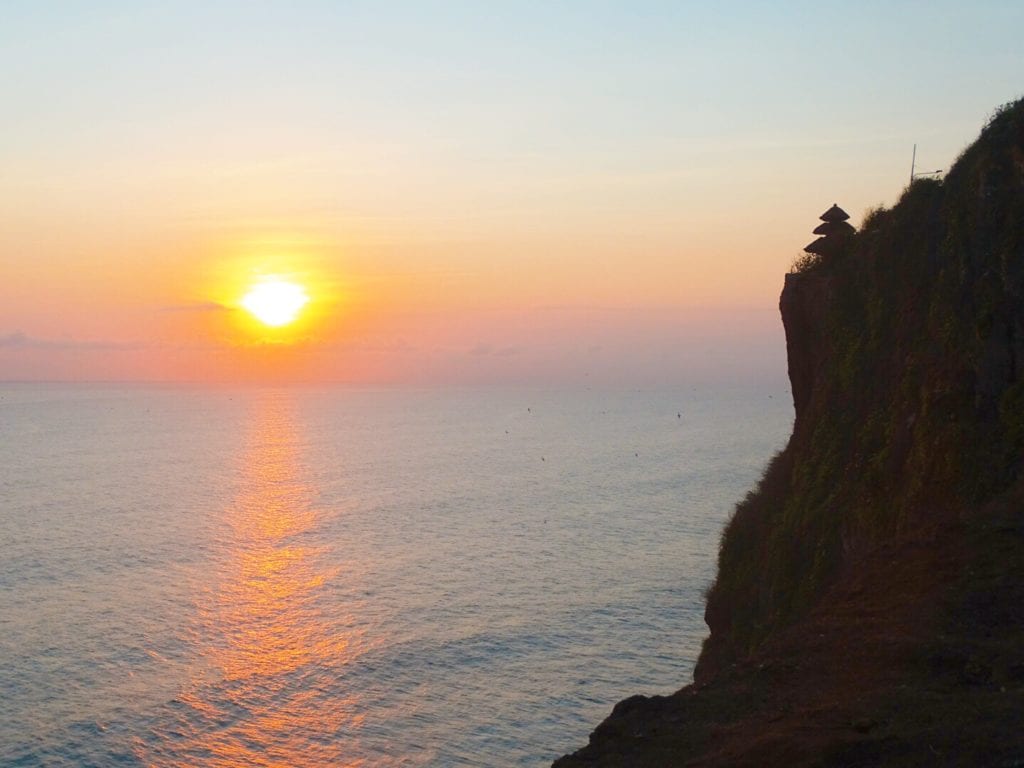
2 weeks in Bali
– 3 days in Ubud . Visit temples, rice fields, do yoga and indulge in the Ubud food scene. – 3 days in Canggu . Relax, eat, surf, repeat! – 3 days in Uluwatu . Visit Uluwatu Temple for sunset. – 4 days on Nusa Penida island. Swim with manta rays!
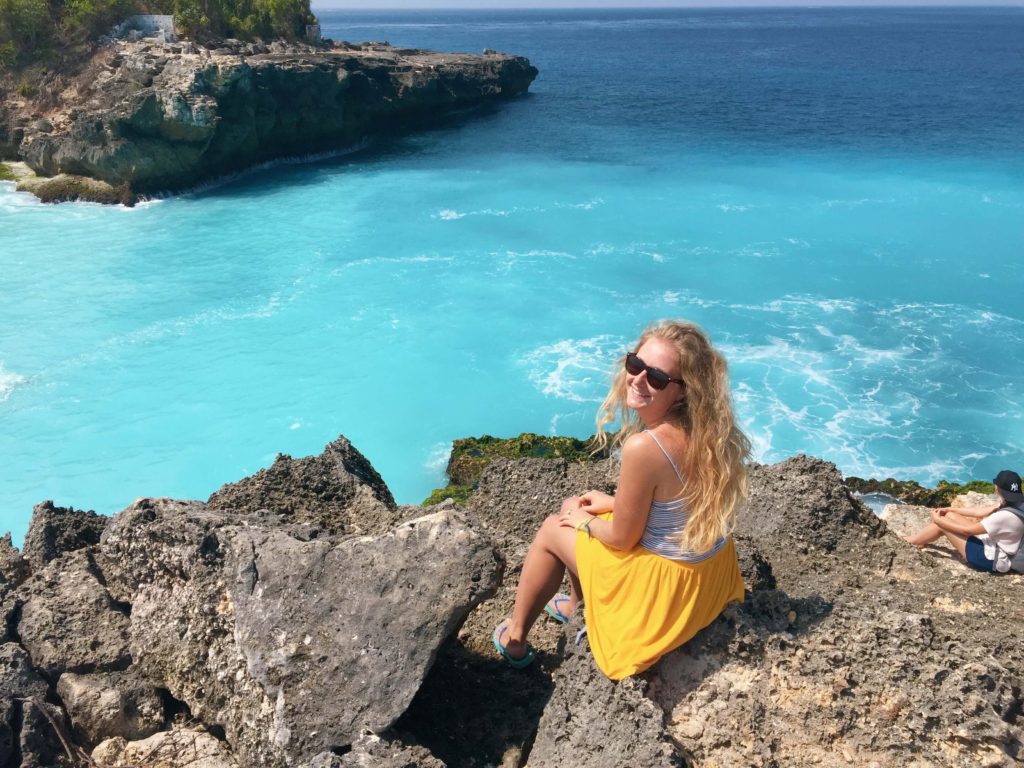
Weeks 9-12: The Philippines
I spent two whole months in the Philippines and can safely say it’s one of the most beautiful countries on earth. If you don’t have that long, no worries – just follow this Southeast Asia itinerary for 3 months. This condensed version whizzes around the Philippines’ highlights in just 3 weeks. There are countless Filipino islands to visit so do your research and pick the ones best suited to you. This 3 week Philippines itinerary includes Coron, Palawan, Cebu and Siargao. Day 69: Manilla. I didn’t love this city so I would recommend moving on fairly quickly to… Days 70-73: Coron . On this picture-perfect island, you can dive a shipwreck and explore beaches aplenty. Day 74: Ferry to El Nido , Palawan .
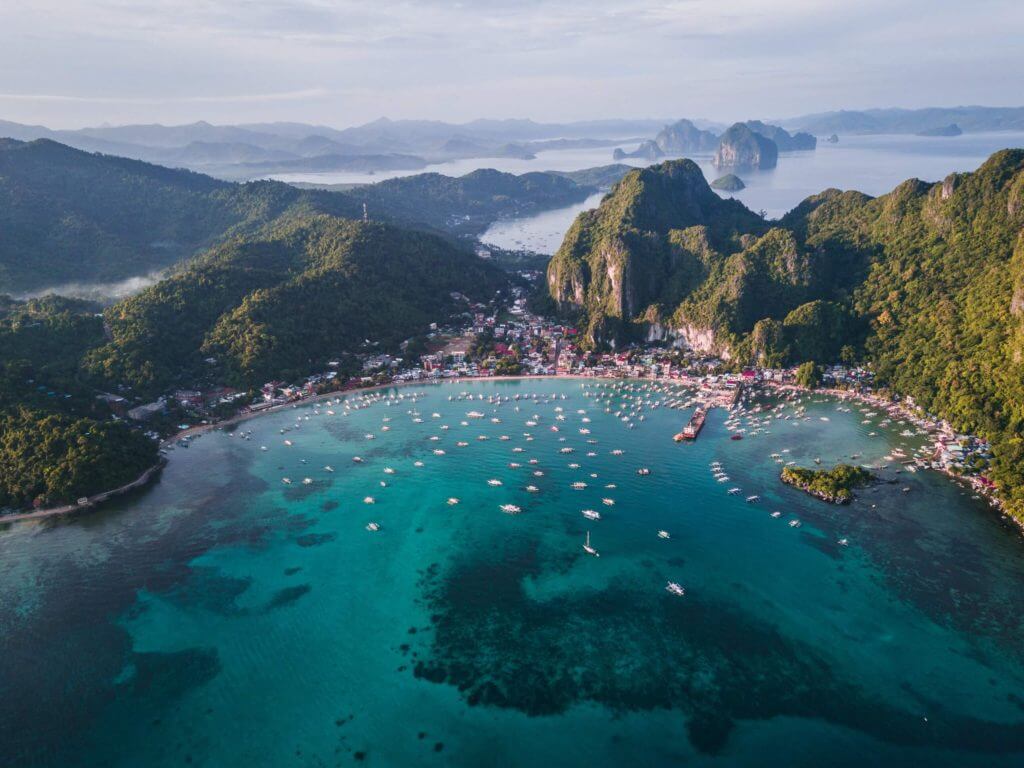
Days 75-77: Island hop in El Nido . Spend a couple of days taking boat trips, hiking to Taraw Peak and visiting Nacpan Beach. Days 78-79: Port Barton . Take more boat trips in Port Barton and find hidden gems in this less touristic version of El Nido. Days 80-82: Puerto Princesa . Visit the Underground River and watch prisoners perform hip hop dance shows to aid their rehabilitation at Iwahig Jail . Day 83: Fly to Cebu . This busy city isn’t the greatest so I’d suggest boarding a bus to… Days 84-86: Moalboal . Here you can snorkel with turtles and sardine shoals, hike to Osmena Peak and swim in Kawasan Falls. Days 87-90: Siargao. Finish your Southeast Asia itinerary in paradise! Things to do in Siargao include learning to surf and taking boat trips to nearby islands. To spend more time here, consider skipping Cebu and Moalboal.
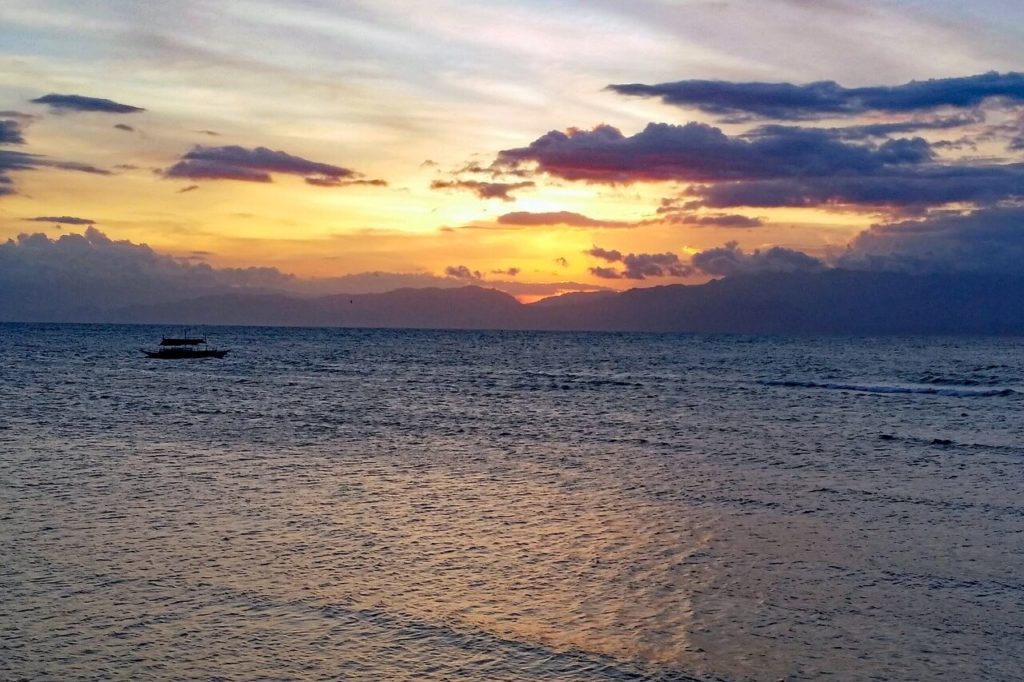
Essentials for 3 months in Southeast Asia
- A power bank to keep your devices alive
- Copy of Lonely Planet Southeast Asia
- A GoPro if you’re into making videos – I use the HERO8 Black
- Sustainability: stainless steel reusable water bottle to reduce the use of plastic bottles
- Alternatively, a filtering water bottle that allows you to safely drink tap water
- Travel luggage: Osprey Farpoint backpack ( men’s ) ( women’s )
- Microfibre quick-drying towel
- Security: A handy bum bag with secure zip .
Southeast Asia bucket list
Check out my ultimate Asia bucket list including 101 experiences to tick off during your Southeast Asia itinerary for 3 months. For a quick rundown, here are my top 15… – Go temple-hopping in Chiang Mai – Take a Muay Thai boxing class – Celebrate Songkran Festival in Bangkok – Cruise through Ha Long Bay by boat in Vietnam – Watch sunset over Angkor Wat – Trek through misty mountains and earn about minority groups during a Sapa tour in Vietnam – Eat famous Penang street food in Malaysia – Climb the rainbow staircase at the Batu Caves, Kuala Lumpur – Visit the world’s largest Buddhist temple site, Borobudur on Java Island, Indonesia – Dive with manta rays around the Nusa Islands, Indonesia – Dive a shipwreck in Coron, the Philippines – Take a cooking class in Hoi An, Vietnam (or anywhere else!) – Stay in a hostel and explore the nightlife with new friends – Learn a few words of a new language – Learn a new skill like kayaking, surfing or boxing.
Thanks for reading my Southeast Asia backpacking itinerary!
I hope you find it easy to follow my Southeast Asia backpacking route and have countless fantastic experiences along the way! Let me know how you get on.
If you liked it, please share it!
See you next time for more adventures,
Ps. Liked my 3 month Southeast Asia itinerary? Pin it for later!
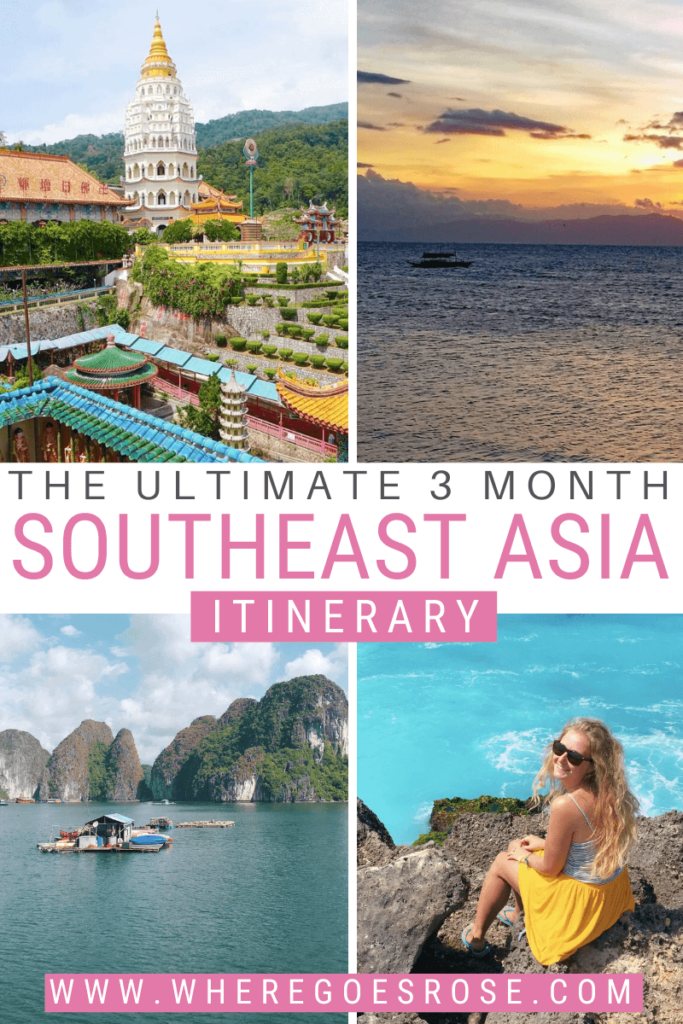
Rose is a solo traveller from the UK who has been on the road since 2015. She wants to show other women that solo travel isn't scary and doesn't have to be expensive! Rose has lived in Mexico, Canada and all over Asia, seeking out food, bubble tea and street art wherever she goes!
41 thoughts on “ 3 Month Southeast Asia Itinerary & Backpacking Route ”
What was your daily budget in SO Asia?
Probably about £30 per day!
The last plan is insane! i genuinely think i wanna follow it and do it! one thing tho, how do you commute between all these spots? it will be my first time travelling solo, so a bit nervous as you can imagine
Hello! Thailand, Laos, Cambodia and Vietnam can all be done by land (mainly bus), Bali you usually need taxis to get around, and Philippines is about flights and boats! Most things can be booked there: just ask at your accom! 🙂 enjoy your trip!
Suuuuch a great website – thank you so much for the insanely helpful info ✌️
Thanks Raph! Enjoy your trip
Hi such great itineraries! i would like to follow the last plan but im a bit unsure how to get from sapa to Indonesia ive tried googling flights but cant find any. Any help would be great thank you!
Hi Elle! Glad you liked them. I would suggest bussing it back to Hanoi to get a flight 🙂
Hi, I’m looking to do the same route for 3 months, do you know how much money you left more or less between everything, to have an idea of the budget to take, thanks.
Hi Mark! On a backpackers budget, I’d say you could do it for as little as $1000 a month 🙂
Hi, thank you for these itineraries they’re amazing! I’m thinking of doing the last one including the phillipines/indonesia – in terms of budgeting does the above budget of approx 1000 dollars a month include flights between countries etc? I can see for some of these they’re super cheap but some a bit pricier so just wanted to triple check. Thank you!
Hi Lara! Great question, I would say my budget of 1000 did not include flights as I mainly took buses where possible. Best add a bit to the budget for them!
Hi, your blog has been so useful for me in planning my backpacking trip next year, they’re great itineraries! I’m probably going to follow your 3 month itinerary for the big 4 to start with, as then have another 3 months to spend in Philippines, Indonesia and Malaysia. I was wondering if you had a map or link to map of your 3 month itinerary with all the locations you visited? As would be great to see how all the locations look on a map to plan travel between those. Thanks
Hi B! I just made and added a map for each itinerary so check back:)
Hey Rose, I love your plans!! Just a quick one about the big 4 how did you get between them without flights and how much did it cost you. Thankyou so much!
Hello! Cambodia to Thailand can be done by bus; Northern Thailand to Laos can be done by bus and boat; Laos to Cambodia can be done by land too and so can Southern Vietnam to Cambodia by bus and boat. The only place you’ll want to fly is Laos to Northern Vietnam as the bus is hellish.
Check 12go for prices!
Hey Rose, really enjoyed reading through your guide as i am preparing my trip to the south at the end of this year. I will do slight the opposite, as i will start in Hanói and make my way down these countries as i plan to end my trip in Australia!
My question is related to Visas! do you have a guide or any advice how i can easily manage to get visas between the different countries? I am slightly worried about this. Apologies if you have this information in your guide but could’t find it.
Hi Jay, glad you liked the guide and hope you have an amazing trip!
All the visas vary per country and depending on what your passport is, and they change from time to time. So I don’t like to give advice and it be wrong – so I would recommend researching them individually 🙂
Hi Rose! This post has been super helpful learning the must see spots and some suggestions with routes. I am planning to go to South East Asia starting Oct/Nov until end of April. Do you have any suggestion on where to start so the weather works in the countries along the way. (Wanting to hit the 6 countries you listed)
Hi Sophia, sounds like a great trip! To my knowledge, they are all pretty good in that season… Apart from Northern Vietna which is cold in winter so maybe you want to save that region until like March!
Hi Rose! How far would you book accomodation and flights in advance?
Hello – accommodation you can do last minute, but flights between Asian countries I’d do a month in advance. For your flights out to Asia, try and do a few months before!
Hi Rose Very helpful post! Would you say that May-July might be too hot/humid/rainy for doing Thailand (including the gulf-side islands), Laos, Cambodia and Vietnam? Ideally would be a better trip Jan- April but timing means I’m likely to travel in May/ June from the UK. I know Malaysia and Indonesia are fine/great May- Sept but seems less so for Thailand/Indochina. Any thoughts?
Hello! I have only been in Vietnam in that season and it’s pretty hot but you can work around it. Not too sure about the others, sorry!
Hey Rose, awesome itineraries thank you 🙂 How far in advance would you recommend booking cross-border trains, boats and buses between South East Asian countries?
Hello, just a day or so before is fine!
Really great article. Thanks for taking the time to explain things in such great detail in a way that is easy to understand.
Absolutely Brilliant Rose Old fart going solo and planning 9-10mths. It’s given me the heads up ive been looking for to look into. Its either 1 or 3 Tks
Hey David! Have a amazing time!
Hey! I love this itinerary. I want to travel to SOA beginning of next year and want to take a very similar route to this one. I initially planned Feb – Apr, but someone warned me about burning season in north Thailand & Laos. Do you have any experience with this issue & how bad is it? If I start in January, are my chances of avoiding this better? Anyway, thanks for this post, it’s helped me tons with planning!
Hello, yes it’s pretty bad! I would avoid the region in Feb and March. Hope you can work around it and have a fab trip!
Hi Rose, this is super helpful – thank you! My wife and I will be spending 6 months in SE Asia next year and want too also include Borneo to go and try and see the orangutans. Would you recommend going from Bali or after the Philippines (potentially on the way back to KL or Bangkok)
Hi Laura, thanks for reading! I think you’ll find it easier and cheaper to get a return flight from KL so maybe do it as a side trip from there? That’s what I did anyway!
Incredible post thank you! Saved for our trip in a year’s time!
Woah, I got tired and anxious whilst reading? Btw, how did you manage accomodations? Did you book them in advance or book them as you arrive to the place? There’s a lot of jumping.
Lol, yes a lot of travel can be tiring and I’m sure anxiety-inducing for some. I usually just book on Hostelworld on my phone the day before arriving!
Hi! Thank you for such detailed itineraries. I’m thinking of doing the last one but only Thailand, Cambodia, Malaysia and Philippines (leaving out Laos and Vietnam). But I only have 6-8 weeks. Do you think this would be possible?
Hi Emma, yes I think so, I would spend the most time in Thailand and Malaysia… Maybe just pick 1-2 places in the Philippines as moving around islands is time consuming!
Hi Rose, Thank you so much for this itinerary! I was wondering (in terms of the 3-month big four trail) if it could work better to fly from the UK to Phuket and start there then work our way up to Bangkok so that we don’t have to double-back on ourselves? Then follow the rest of the trail from there. We are yet to book our flights and thought this could be a good option?
Hello yes great idea! Enjoy!
Thanks Paula!
Leave a Reply Cancel reply
Your email address will not be published. Required fields are marked *
You can see how this popup was set up in our step-by-step guide: https://wppopupmaker.com/guides/auto-opening-announcement-popups/

Three Awesome Southeast Asia Travel Routes For An Unforgettable Trip
Ready for an epic southeast Asia road trip? Here are three unmissable itineraries for the trip of a lifetime.
Southeast Asia. The land of majestic views, awesome beaches and unimaginable adventures.
So… You’ve decided on your dream trip and now you’re wondering what’s the best Southeast Asia travel route to take.
From Angkor Wat and Siem Reap to Krabi and Vang Vieng, we don’t want to hype ourselves up too much, but boyyyy we have put together a killer trio of itineraries. You’ll struggle to decide which Asia trip itinerary to choose (sorry, not sorry).
Whether you’re a beach lover, a culture addict, an adventurer or someone who’s just keen to see a little bit of everything, here are three one-month Southeast Asia travelling routes to help you rock your trip.
Ready? Pack your bags and book those flights, let’s get going…
South East Asia Travelling Routes: At A Glance
- The Beach Lover’s Dream: Vietnam, Cambodia, Thailand and Malaysia
- The Cultural Odyssey: Vietnam, Cambodia, Laos, Thailand and Myanmar
- Adventure and Adrenaline: Vietnam, Laos, Thailand
Travelling Southeast Asia Route 1: The Beach Lovers’ Dream
Southeast Asia has more beaches than you could ever visit, even if you were travelling for a year. It’s a beach bum’s paradise.
But which beaches do you choose? Here’s a Southeast Asia 1 month itinerary with the best beaches on the subcontinent.
Day 1-3: Ho Coc Beach, Vietnam
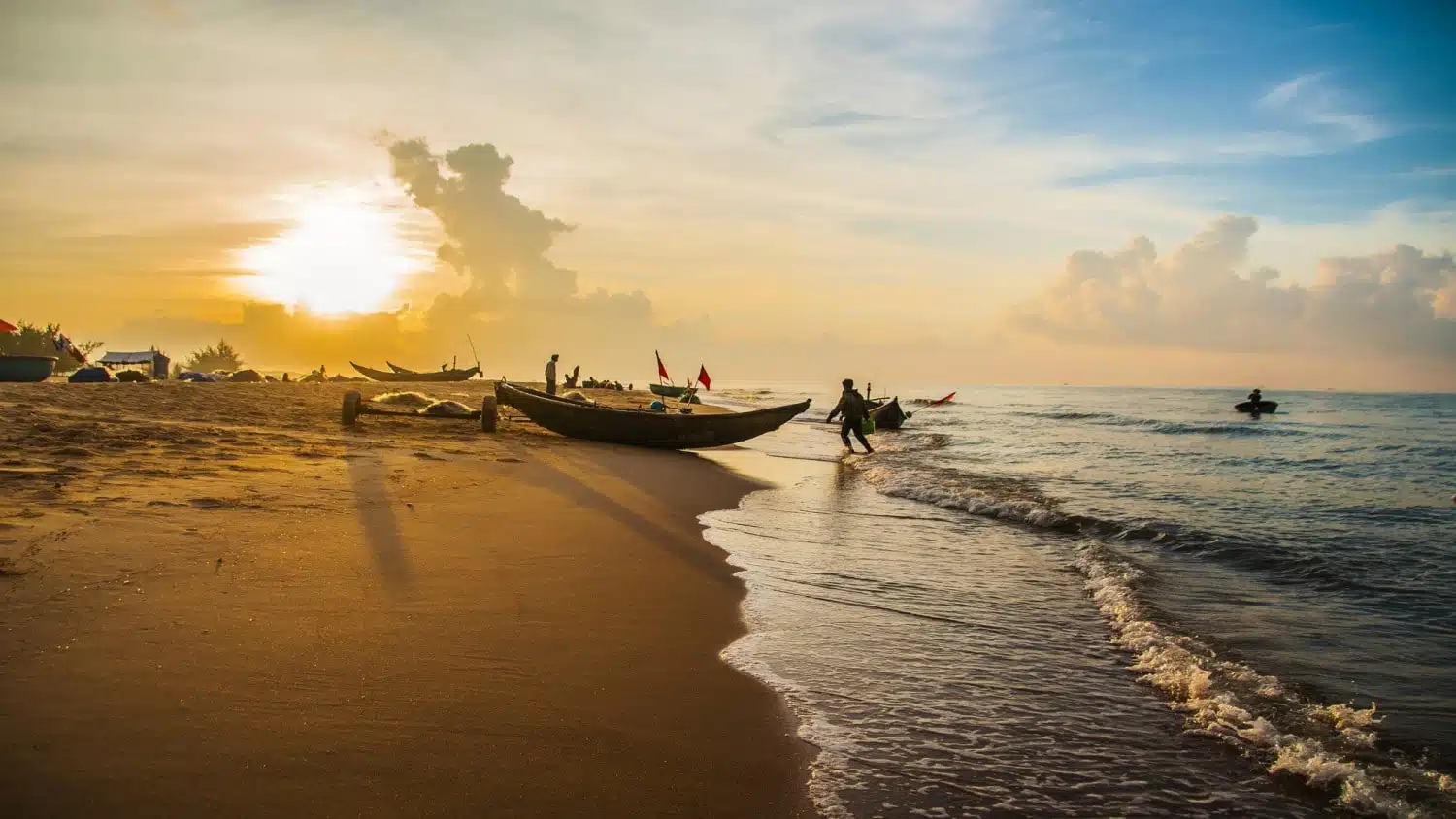
Why go to Ho Coc?
*Checks watch* How long have we got? Ho Coc is a haven for rest and relaxation. We’d wager a bet that Ho Coc Beach is the most beautiful beach on the southern coast of Vietnam, with golden sands and crystal clear blue waters.
Tip: Try to visit in the middle of the week when it’s much quieter and you will have the beach to yourself.
How to get to Ho Coc from Ho Chi Minh City?
Fly into Ho Chi Minh City, and make your way to Ho Coc Beach Resort. The cheapest way of doing this is to hire a car, which will take around 1 hour and 40 minutes.
Suggested Stay: Melia Ho Tram Beach Resort
Day 4-6: Phú Quốc
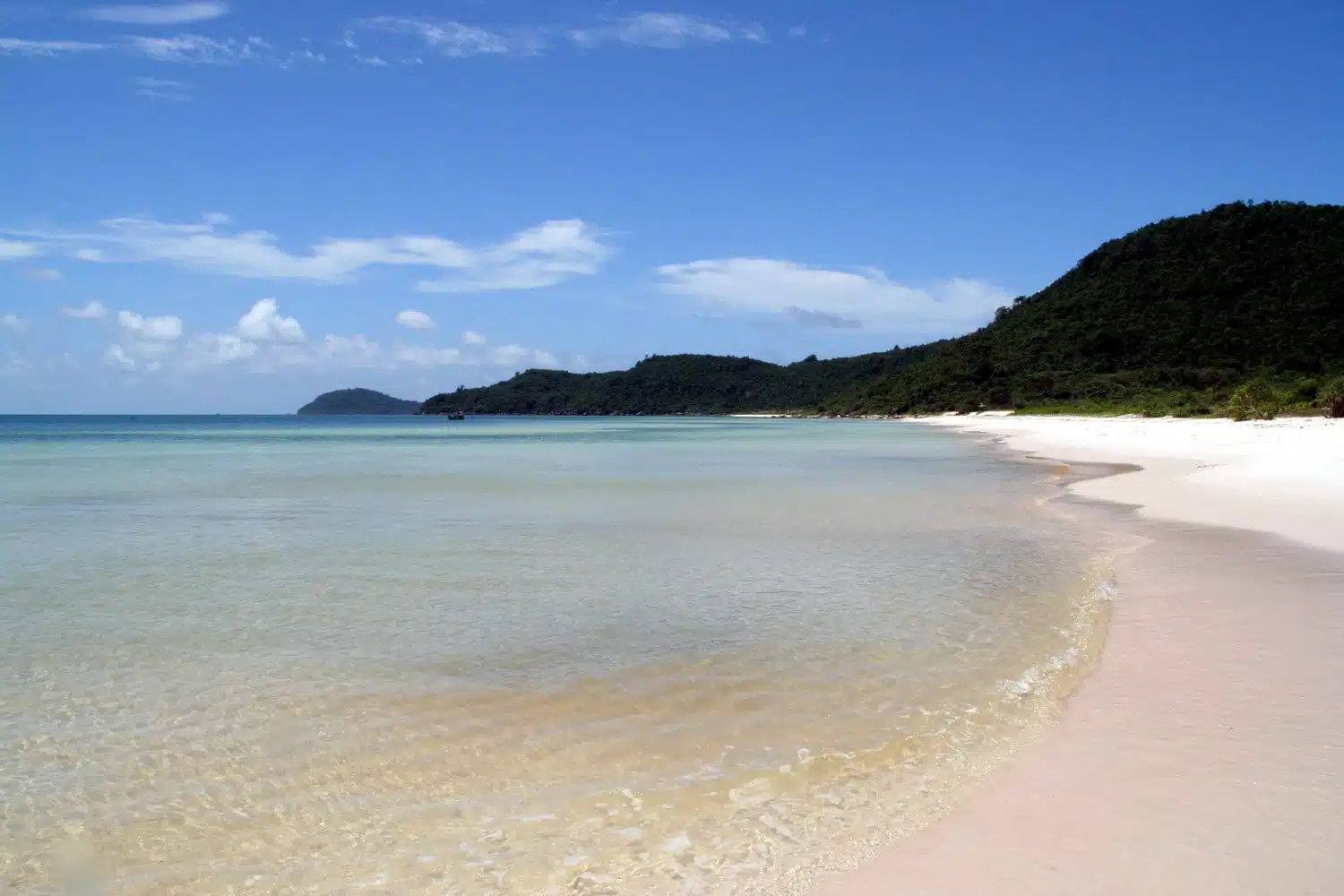
Why go to Phú Quốc?
Alright, I know we hyped up Ho Coc, but you should go to Phú Quốc as the island has some of the best beaches that Vietnam has to offer. Including its most popular beaches, Long Beach and Star Beach.
Sink down into the golden sand and admire the swaying coconut palms (maybe accompanied by the delectable martinis from the beach bar).
Make sure that you stay on the beach for sunset at least one day- Phú Quốc is famous for the dazzling light show it puts on every evening.
Suggested Stay: The Shells Resort & Spa
How to get to Phú Quốc from Ho Coc
It’s an early start today and drive your car back up to Ho Chi Minh City. You then need to take a bus or taxi to Ho Chi Minh Mien Tay, and then jump on the Kumho Samco Bus to Rach Gia.
Once there, take the ferry to Phú Quốc and head onwards to your hotel. This route will take you a little over 9 hours, if you time things right.
Day 7-10: Koh Rong Samolem and Pineapple Island, Cambodia
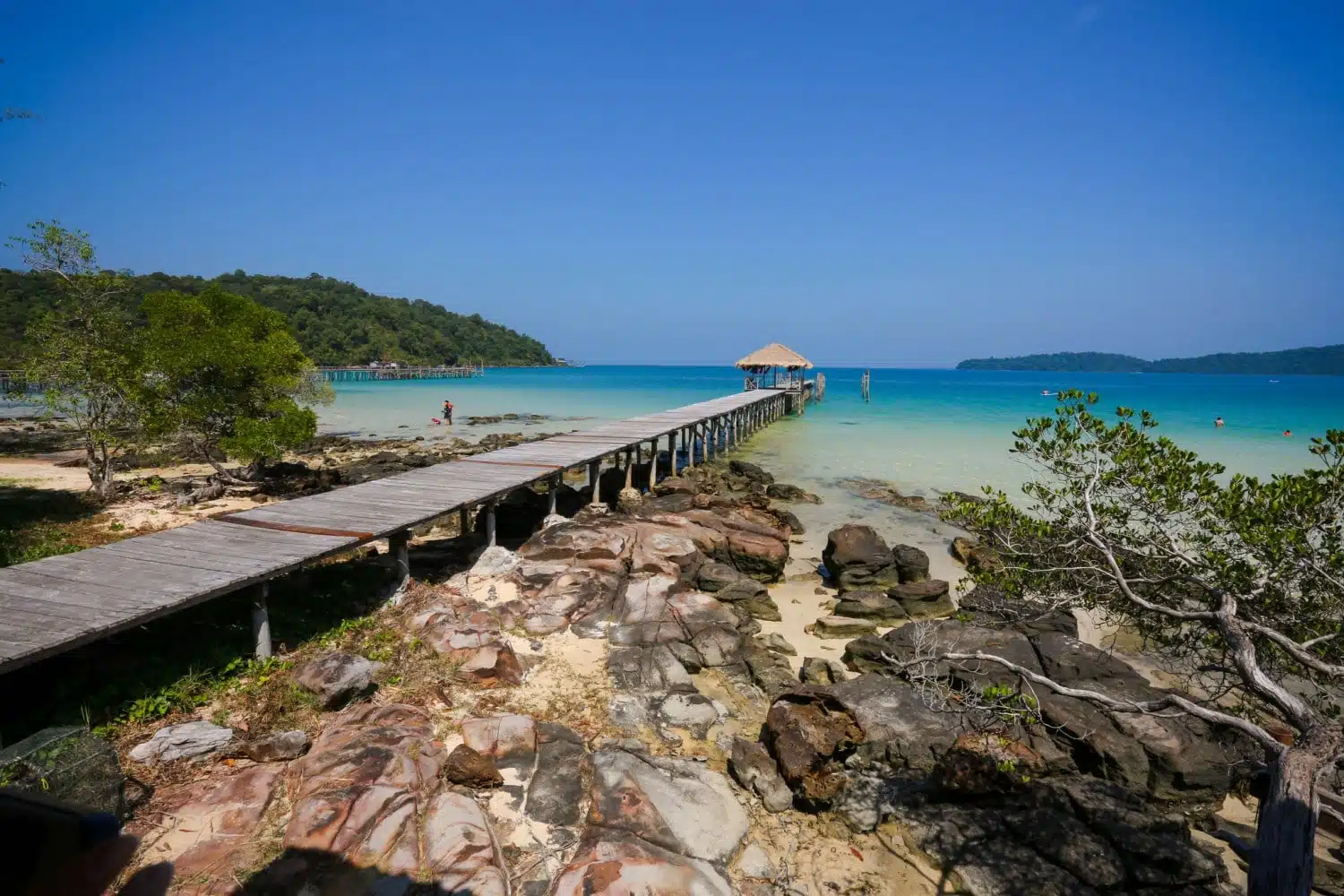
Why go to Koh Rong Samloem?
Koh Rong Samolem, only 9km long and 4km wide, is one of the main beach destinations in Cambodia . This spot is part of a tiny cluster of islands and, don’t tell the others, but this one is our fave.
There are great places to snorkel, kayak, mountain bike and even jungle-trek all over the island. Not to mention sun-bathing on the island’s beautiful beaches.
They also hold Full Moon parties at Good Vibz Camp on the island during the high season. If you have more time, spend at least a few more days exploring the cool things to do in Cambodia.
Suggested Stay: Sok San Beach Resort
How to get from Phú Quốc to Koh Rong Samolem
Catch the ferry from Phú Quốc to Hà Tiên, and then take a taxi to Kampot. From Kampot, take a bus to Sihanoukville, and then a ferry to Koh Rong Samloem. This route should take about 9 and a half hours.
Day 11-14: Ko Samui and Koh Pha Ngan, Thailand
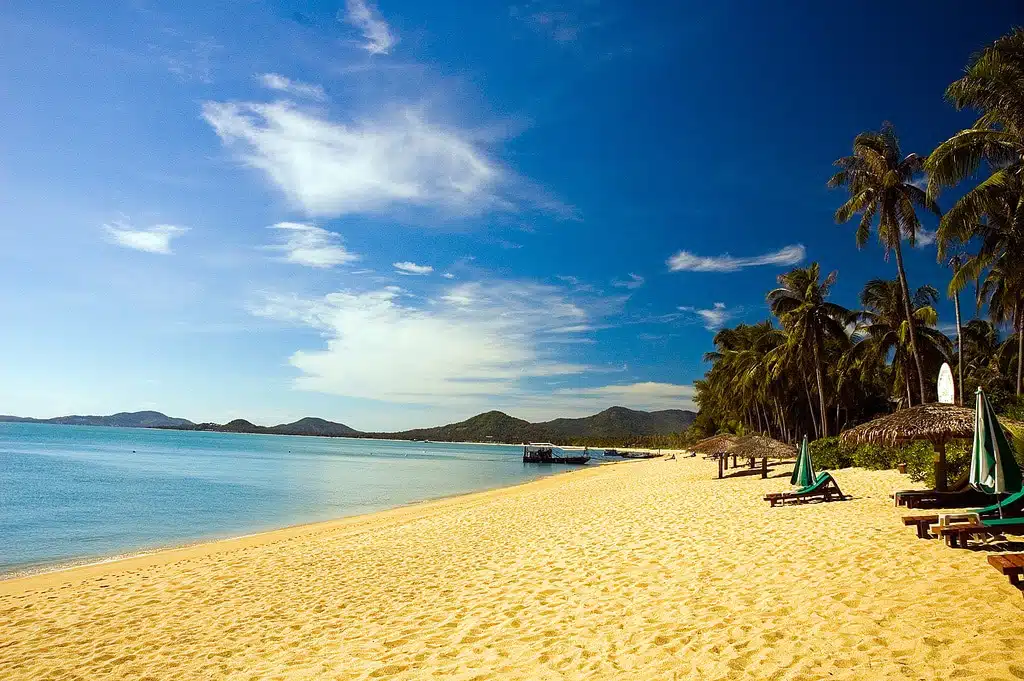
Why go to Koh Samui?
This Southeast Asia travel route is all about the beaches – and there’s no way we could miss Koh Samui off the list.
It’s been a long day of travelling, we’ll give you that. But Koh Samui is more than ready to reward you for your efforts with some spectacular beaches.
Our favourites are Choeng Mon, Taling Ngam (which is the best for the sunset), and Bang Po. The latter has a reputation for being the most laid-back beach in Northern Samui – and I don’t disagree.
By now, after spending pretty much two weeks travelling Southeast Asia on a quest for the best beaches, you should be pretty relaxed. While there’s plenty of scope for more of the same in Koh Samui, take one of your three days to catch the 20 minute ferry ride to Koh PhaNgan.
Pha Ngan doesn’t really need an introduction: the beautiful island is renowned for its white sandy beaches, turquoise waters, and of course its huge full-moon party .
If you have more time, take a detour to Koh Tao, the diver’s mecca and one of the cheapest places to get your PADI qualification in the world.
Is this the best south east Asia travel route? Hells yeah.
Suggested Stay: Moon Cottage, Choeng Mon Beach
How to get from Koh Rong Samolem to Koh Samui
First things first, get up early – you’ve got a long day of travelling to do! Although the distances when you are travelling Southeast Asia are relatively small, this is one that involves a lot of connections.
Catch the ferry back to Sihanoukville and get a taxi to the airport, and then get a flight from Sihanoukville Airport to Bangkok Airport. From there, then take a flight to Koh Samui Airport, and then a taxi to your hotel.
This could take up to 12 hours, after waiting for your connecting flight.
Day 15-16: Railay Beach, Thailand
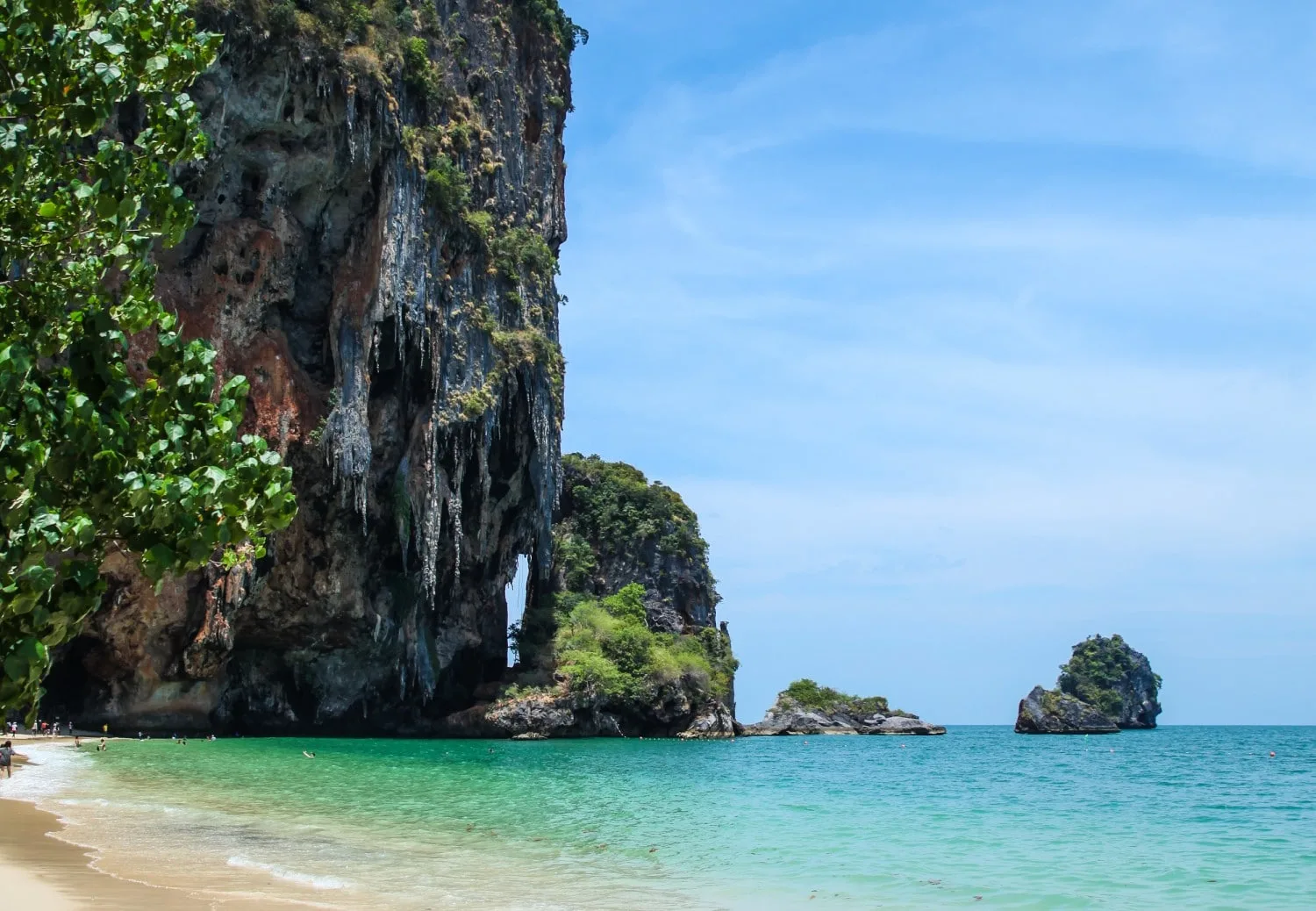
Why go to Railay?
You are NOT ready for Railay. Though it’s increasingly on the tourist radar, Railay has lost none of the chilled-out vibe and friendly atmosphere that attracted travellers in the first place.
This paradise is surrounded by warm blue sea, golden sand and lush jungle – not to mention all of the karst rocks rising from the sea and in the surrounding areas.
The area is a rock-climber’s dream and a great place to test your vertical skills if you can peel yourself off of your beach towel.
Suggested Stay: Sand Sea Resort
How to get from Koh Samui to Railay
From Koh Samui, take a ferry to Don Sak Pier. Grab a taxi to the Lomprayah Donsak Pier, and then get a bus to Krabi. Walk 9 minutes to the Krabi Town Pier, and then get a ferry to Railay Beach.
This journey should take about 6 and a half hours. Once there, if you’re not too tired, head straight to the beach!
Day 17-19: Ko Phi Phi, Thailand
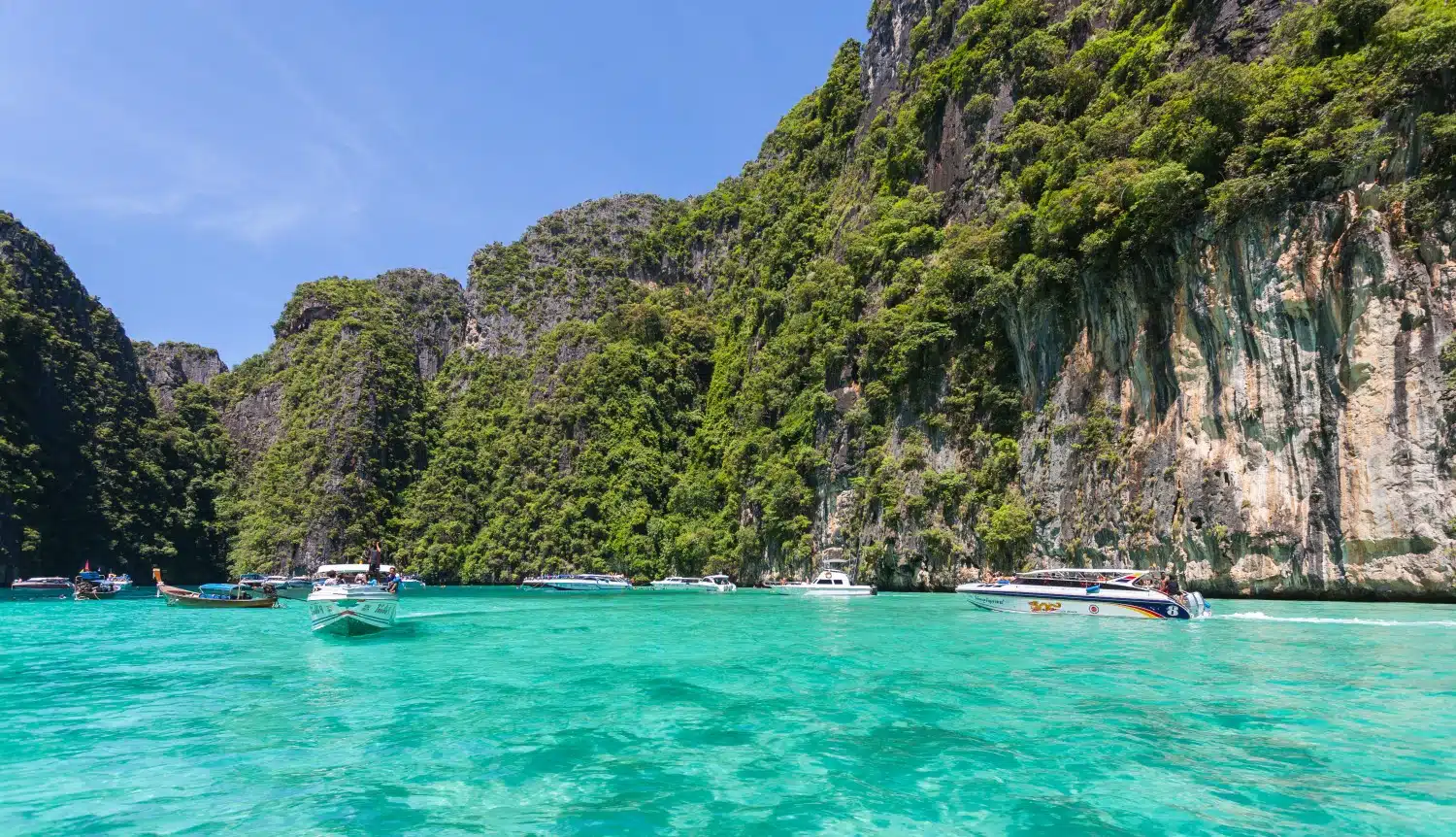
Why go to Koh Phi Phi?
You didn’t really think we could make a beach lover’s South East Asia travel route without including THE Beach did you?!
The Phi Phi island group is made up of 6 islands, but the two main ones are Phi Phi Don and the uninhabited Phi Phi Leh. Not heard of Phi Phi Leh? How about Maya Bay, where Leonardo DiCaprio’s ‘ The Beach ’ was filmed? Thought so.
These picture-perfect islands, with their tropical beaches, amazing rock formations and colourful marine life are pretty close to paradise on earth. Just don’t blame us if you don’t want to leave.
Suggested Stay: P.P. Blue Sky Resort
How to get from Railay to Koh Phi Phi?
Take the ferry from Ao Nang Pier to Phi Phi Island, which takes about an hour and a half.
Day 20-21: Ko Lanta, Thailand
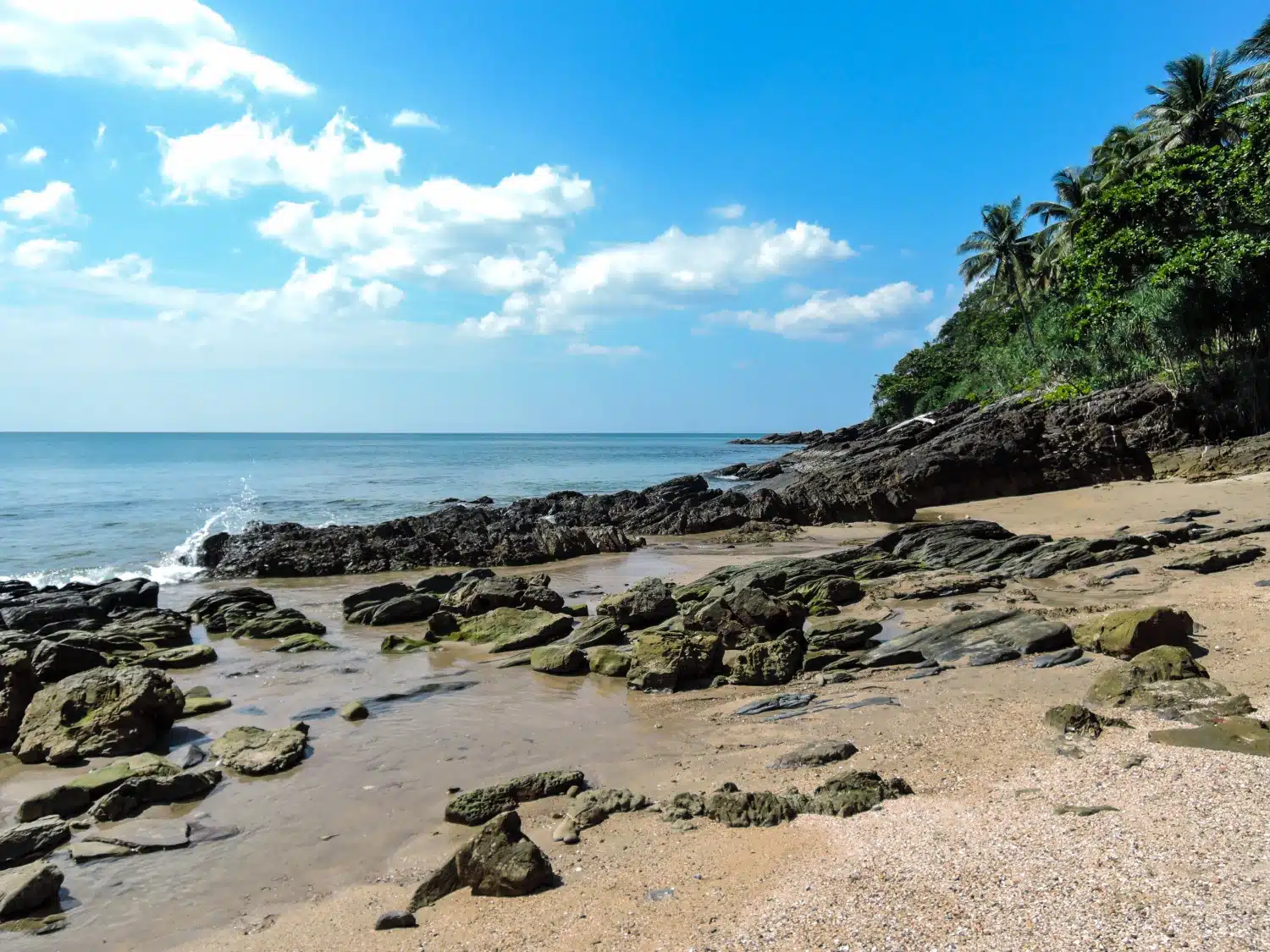
Why go to Koh Lanta?
For the beaches, DUH. There are plenty of beaches on Koh Lanta (which is actually several islands), but we recommend checking out Long Beach and Klong Dao Beach, on the north of Ko Lanta Yai.
Both have huge stretches of beautiful white sand with clear water, which make them perfect for swimming. Koh Lanta’s got a really cool vibe overall, just one of the reasons we’ve named it one of the top places to go in Thailand.
Long Beach has got something of a reputation as the island’s trendiest beach: head there for a (slightly) more upmarket vibe and lots of people spotting.
Suggested Stay: Lanta Pearl Beach Resort
How to get from Koh Phi Phi to Koh Lanta
Take the ferry from Koh Phi Phi to Koh Lanta, and then take a taxi to your hotel. This journey should take around 2 and a half hours. Now it’s time for you to explore…
Day 22-23: Ko Lipe, Thailand
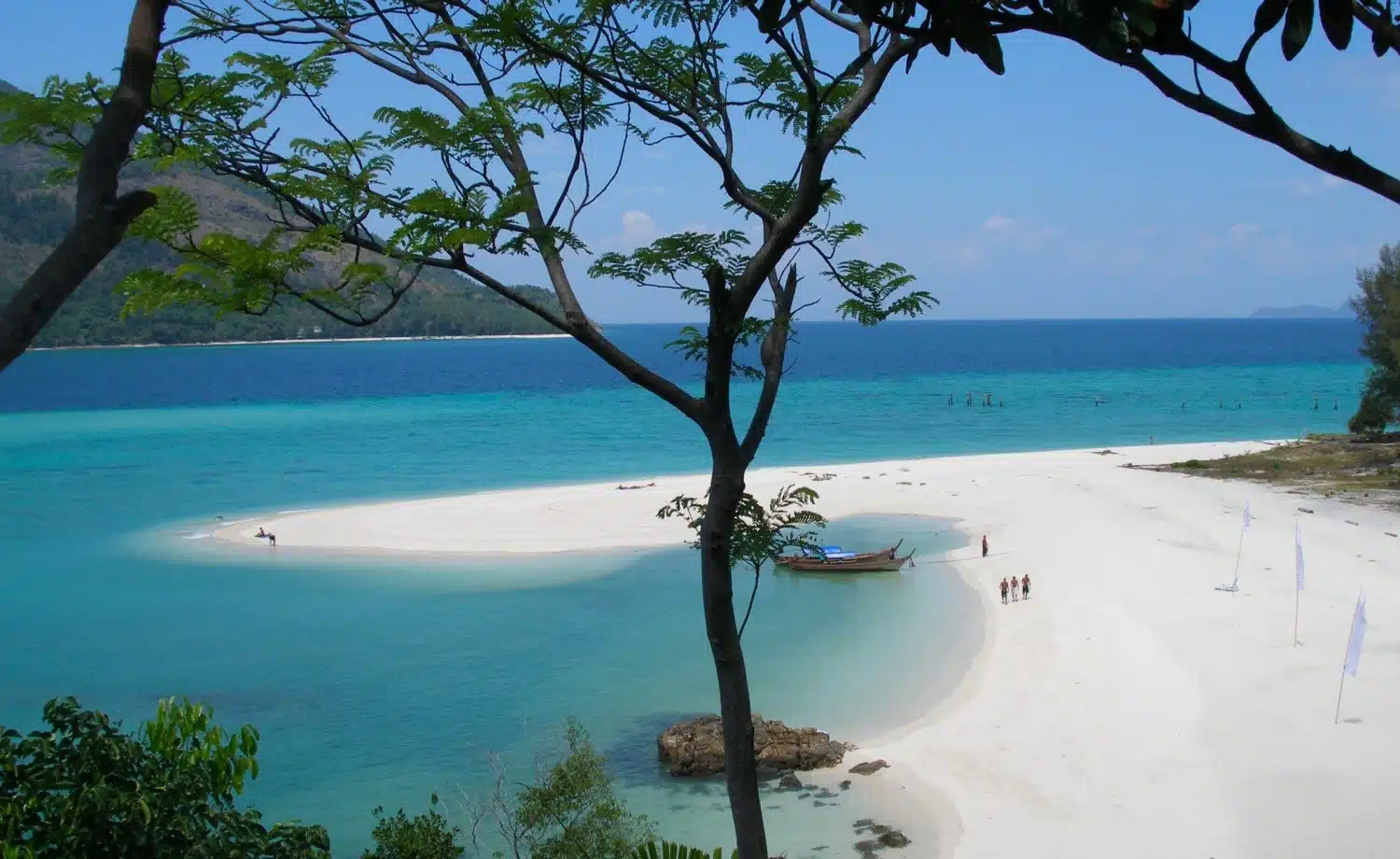
Why go to Koh Lipe?
Koh Lipe is what everyone thinks of when they think of travelling Southeast Asia.
The island has 3 beaches: Sunrise Beach (our personal favourite with great views of the sunrise of course). There’s also Sunset Beach, a quieter beach with views of the sunset, and Pattaya Beach, the liveliest beach on the island, with great bars, restaurants and nightlife to entertain you.
Guess where we spent most of our time? Answer: Pattaya.
That said, we recommend staying at Sunrise Beach, because it has got all the best bits of Pattaya without the crowds! And a tip – if you go to the top of Sunrise Beach, you can see the sunrise and also the sunset from the same spot – it’s out of this world.
Suggested Stay: Salisa Resort
How to get from Ko Lanta to Koh Lipe?
Take a taxi to the Ko Lanta Port, and then jump on a ferry to Koh Lipe, which should roughly take around 3 and a half hours.
Looking for more inspiration for a beach holiday? Our beach destination guides and tips are filled with ideas galore.
Day 24-26: Perhentian Islands, Malaysia
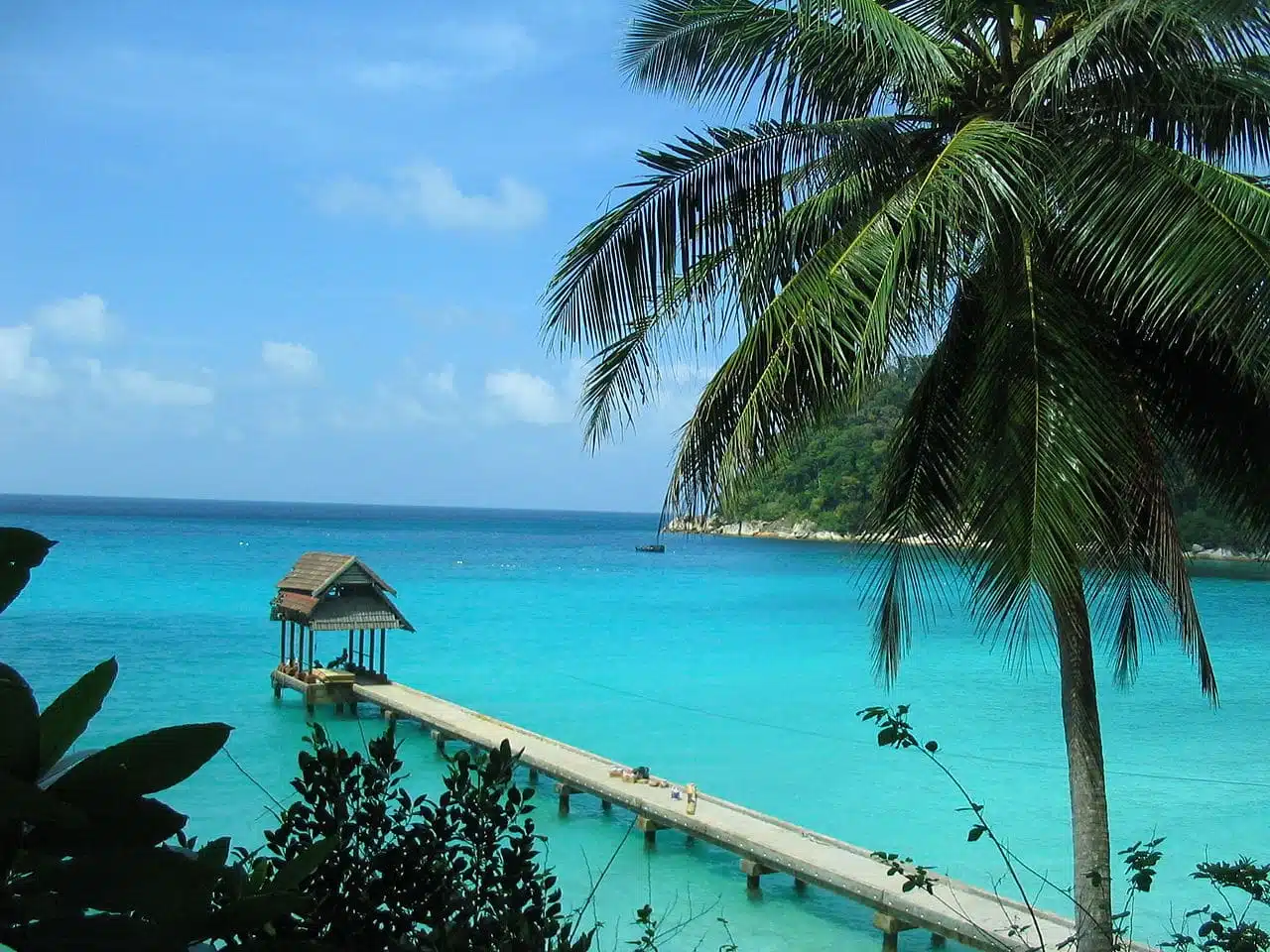
Why go to the Perhentian Islands?
After a few days in more popular spots, head to these islands to simply get away from it all.
There are 2 main Perhentian Islands, Kecil, which is popular among the backpacking crowd, and Besar, which is more relaxed, full of blindingly white sand and crystal clear water.
While not as party-orientated as their Thai neighbours, you can usually find a beach party on the Perhentian Islands, and there’s always a bonfire. They’re like the Thai islands 20 years ago – all beauty and chill.
Suggested Stay: Perhentian Island Resort
How to get from Koh Lipe to the Perhentian Islands
You’ll spend most of the day travelling but it will be worth it. First take a ferry to the Pakbara Pier from Koh Lipe, and then take a taxi to Padang Besar.
From there, get the train down to Sungai Kolok. Take a taxi or rent a car to Kota Bharu, and then take a bus to Kuala Besut. From there get the ferry to Malaysia’s stunning Perhentian Islands.
Although this route is long, taking about 12 hours, it is by far the cheapest.
Day 27-29: Tioman Island, Malaysia
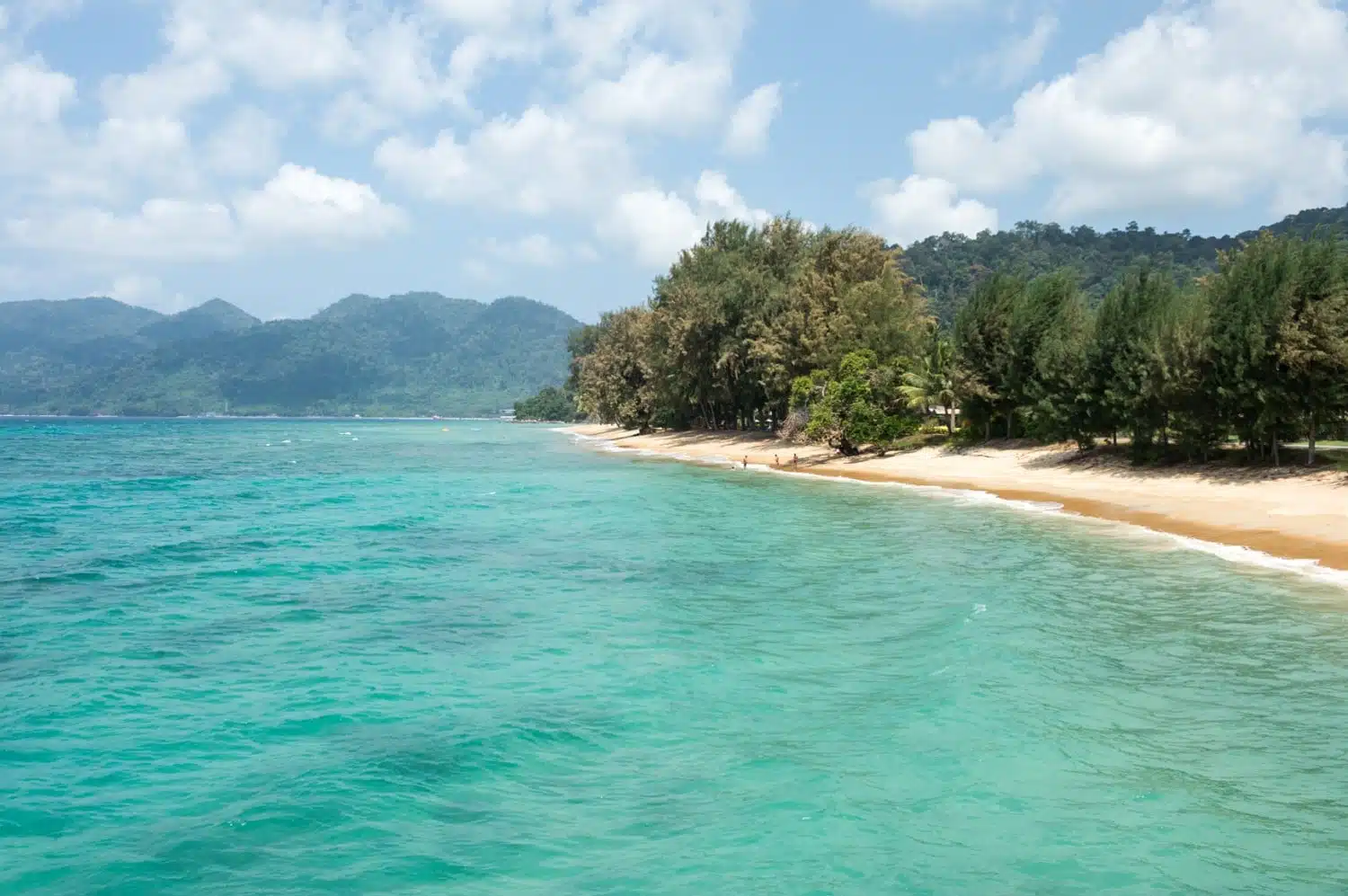
Why go to Tioman Island?
Shhhh… Tioman Island is still something of a hidden gem and you should put it onto your Southeast Asia travel route before everyone else does. It’s only 20km long by 11km wide, and the surrounding emerald sea is a perfect place to swim, snorkel and even dive.
And it doesn’t stop there – there are cascading waterfalls, thrilling jungle hikes and laid-back island villages to bring out your adventurous side. You’ll never want to leave… Unfortunately though, your Southeast Asia travel adventure is almost over.
On Day 30, head to Singapore Changi Airport to depart for home.
Suggested Stay: Tunamaya Beach & Spa Resort
How to get from the Perhentian Islands to Tioman Island
From the Perhentian Besar, take a ferry back to Kuala Besut. From there, take a bus to Mersing, change at Kota Bharu, and then take a ferry from Mersing Jetty to Tioman Island.
This route will take about 13 hours, so make sure you get up early.
Want more Southeast Asia travel ideas? Check out my collection of Southeast Asia travel guides to help you plan your trip.
Travelling Southeast Asia Route 2: A Cultural Odyssey
Southeast Asia has incredible architecture, ruins and monuments, all oozing with culture (not to mention the perfect Instagram opportunity or two).
Love culture and looking for the best Southeast Asia route for your trip? This backpacking Southeast Asia route will take you to the best of them. You can thank me later.
Day 1-3: Hué Monuments, Vietnam
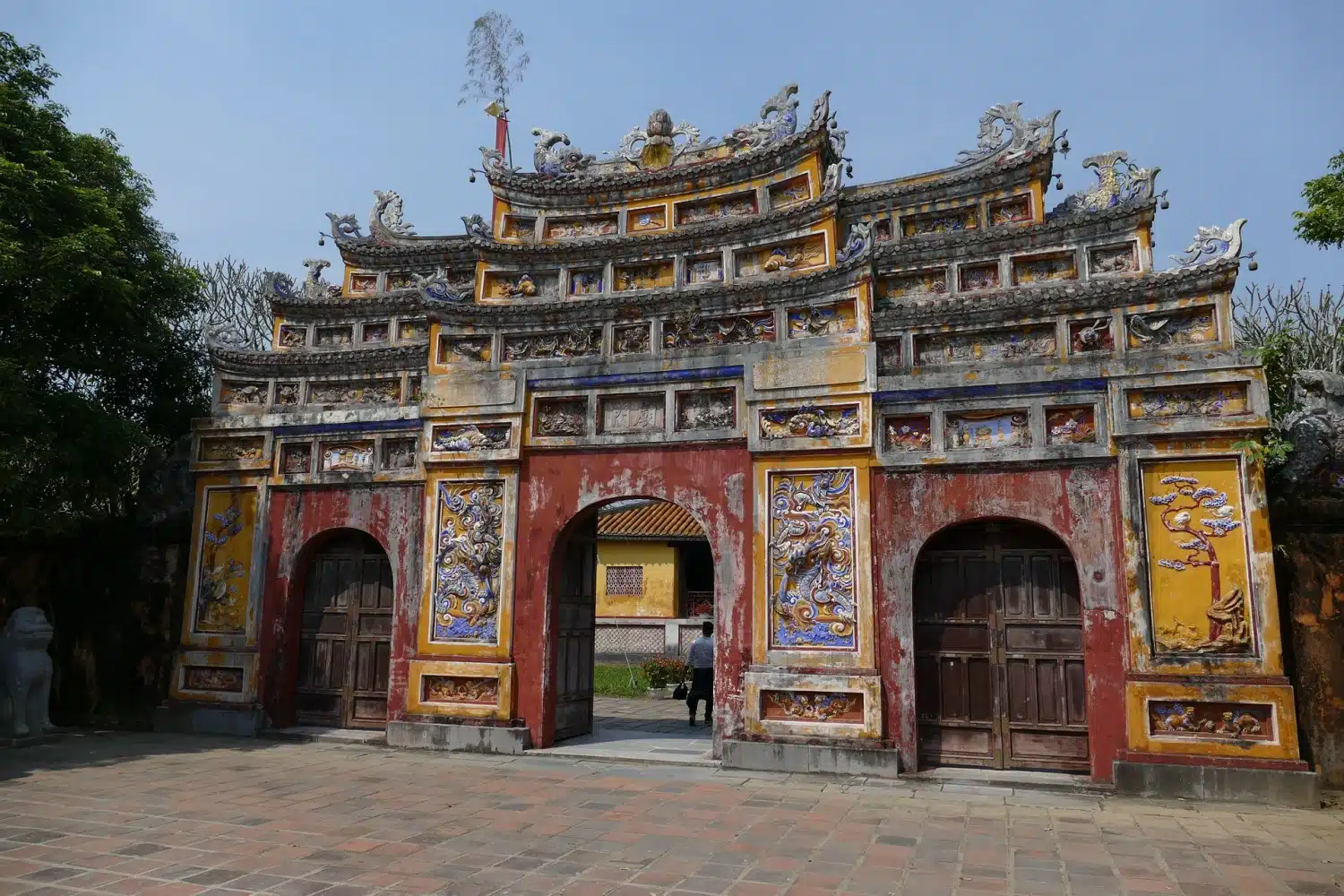
Why go to Hué?
If the impressive visuals alone don’t convince you, the fact that the complex of Hué Monuments is a UNESCO world heritage site and it is located in and around the city of Hué, really should.
History buffs will adore Hué. Designated as the capital of unified Vietnam in 1802, the huge complex features a number of monuments and ruins, such as the Imperial City, the Forbidden Purple City, and royal tombs, pagodas and temples.
Rich in architecture and with a beautiful landscape surrounding, a visit to the Hué Monuments is definitely worth a visit if you’re on the lookout for some of the best cultural sites in Southeast Asia.
Suggested Stay: Cherish Hué Hotel
How to get to Hué from Hanoi?
Start your Southeast Asia 1 month itinerary by flying into Hanoi (if you have time – spend a day or two here checking out the best things to do in Hanoi, which has more than a few cultural sites of its own), and then get a 1 hour flight to Hué.
Alternatively, you can take the (much slower but more panoramic) train from Hanoi to Hué. It’s one of the classic Southeast Asia travel experiences and worth it if you have the time.
Day 4-5: Mỹ Sơn Sanctuary, Vietnam
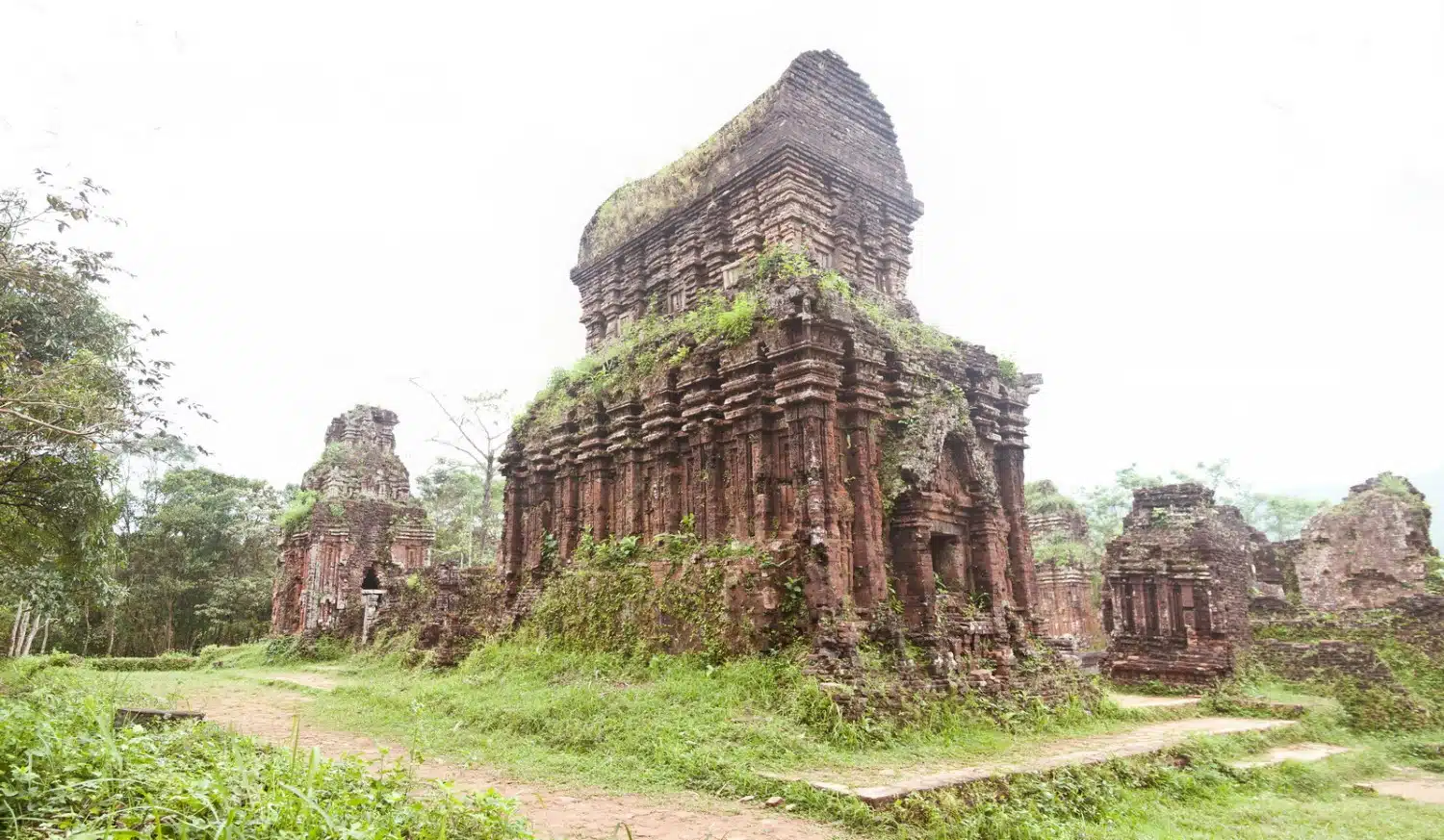
Why go to Mỹ Sơn?
The Mỹ Sơn Hindu Sanctuary is a cluster of more than 70 partially ruined Hindu temples, devoted to Hindu Gods and Goddesses, especially the God Shiva.
The intricate temples contain grand stone sculptures and towers in lush, tropical jungle settings.
Learn from our mistakes, people. We recommend getting there in the morning, before it gets too hot and before the crowds arrive, and then returning to Hoi An in the afternoon/evening, so you can explore its Ancient Town.
An increasing number of those travelling Southeast Asia visit the temples, but they’re still a relatively quiet spot.
Suggested Stay: Mỹ Sơn Hội An Resort and Spa
How to get from Hue to Mỹ Sơn
From Hué, take a bus to Da Nang, and then take a taxi to Mỹ Sơn. This should take about an hour and 40 minutes, but it’s best to stay in Hội An, as it is the closest big town to Mỹ Sơn.
Day 6-7: Temple of Preah Vihear, Cambodia
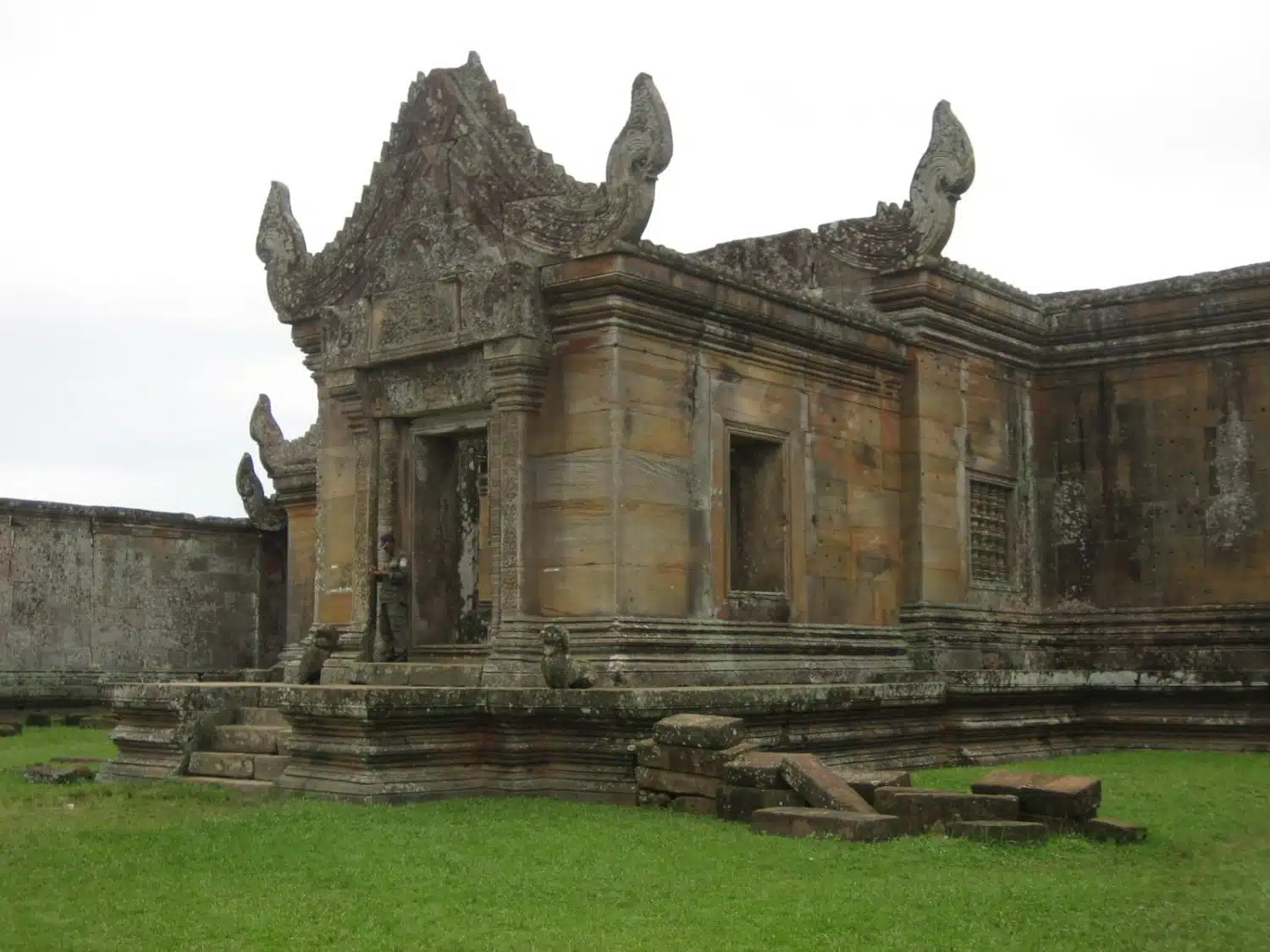
Why go to Preah Vihear?
This is where history nerds will really come into their own – bring your A-Level History knowledge with you. Dating back to 11BC, the site’s architecture and carved stone ornamentation is very high quality, and so well preserved for its remote location.
Stay in a hotel in Preah Vihear for the night and then carry on exploring in the morning, before heading back to Siem Reap for night seven.
Suggested Stay in Preah Vihear: Sokha Home
How to get from Mỹ Sơn to Preah Vihear?
Take a taxi to Danang Airport and then take a flight to Siem Reap, which should take around 2 hours in total.
In order to get to Preah Vihear, the easiest method is to rent a car, which should take about 3 hours. Preah Vihear is a temple situated on the top of a 525m cliff in the Dângrêk Mountains, dedicated to the God Shiva.
Day 8-10: Angkor Wat and Angkor Thom, Cambodia
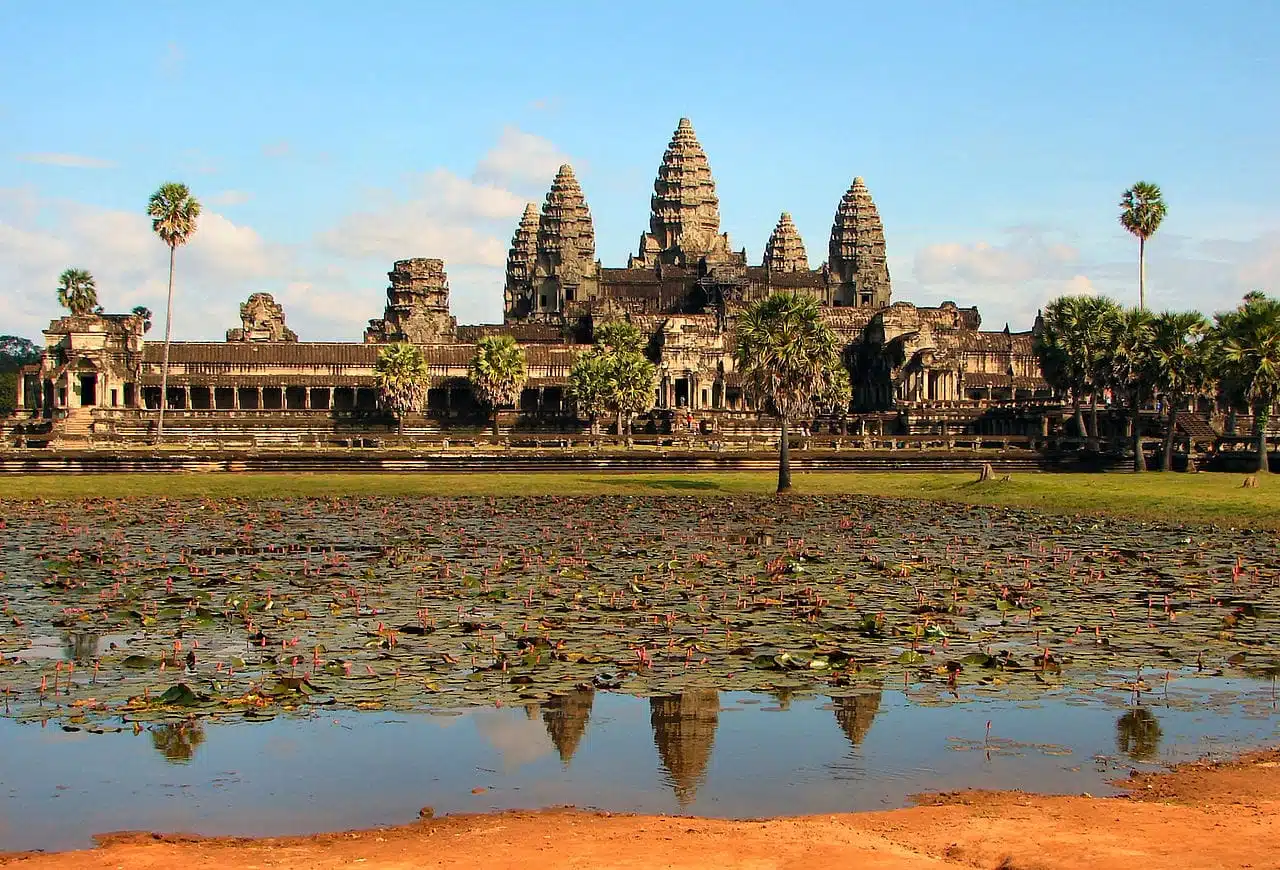
Having spent the night in Siem Reap, head into Angkor Wat, a 5 minute taxi ride away. We recommend hiring a tuk tuk or bike to get around between the temples as some of the distances between the less visited ones are quite far.
Why go to Angkor Wat and Angkor Thom?
Because it’s one of the most fascinating architectural complexes on the planet – ‘nuff said.
But seriously, Angkor Wat is a complex of temples which also happens to be the largest religious monument in the world. Designated a UNESCO World Heritage Site in 1992, this huge and incredibly detailed temple is awe-inspiring.
Angkor Thom was the last capital of the Khmer Empire, and was a city with the residences of palace officials, military and priests inside, enclosed by a 12km high wall and a moat.
Some of the best attractions and most important monuments in Angkor Thom to check out are the Royal Enclosure, Baphuon, Bayon and the Terrace of Elephants.
We recommend spending about 3 days in the Angkor complex to see everything in depth.
Suggested Stay: Lotus Blanc Resort
Day 11-13: Grand Palace Bangkok, Thailand
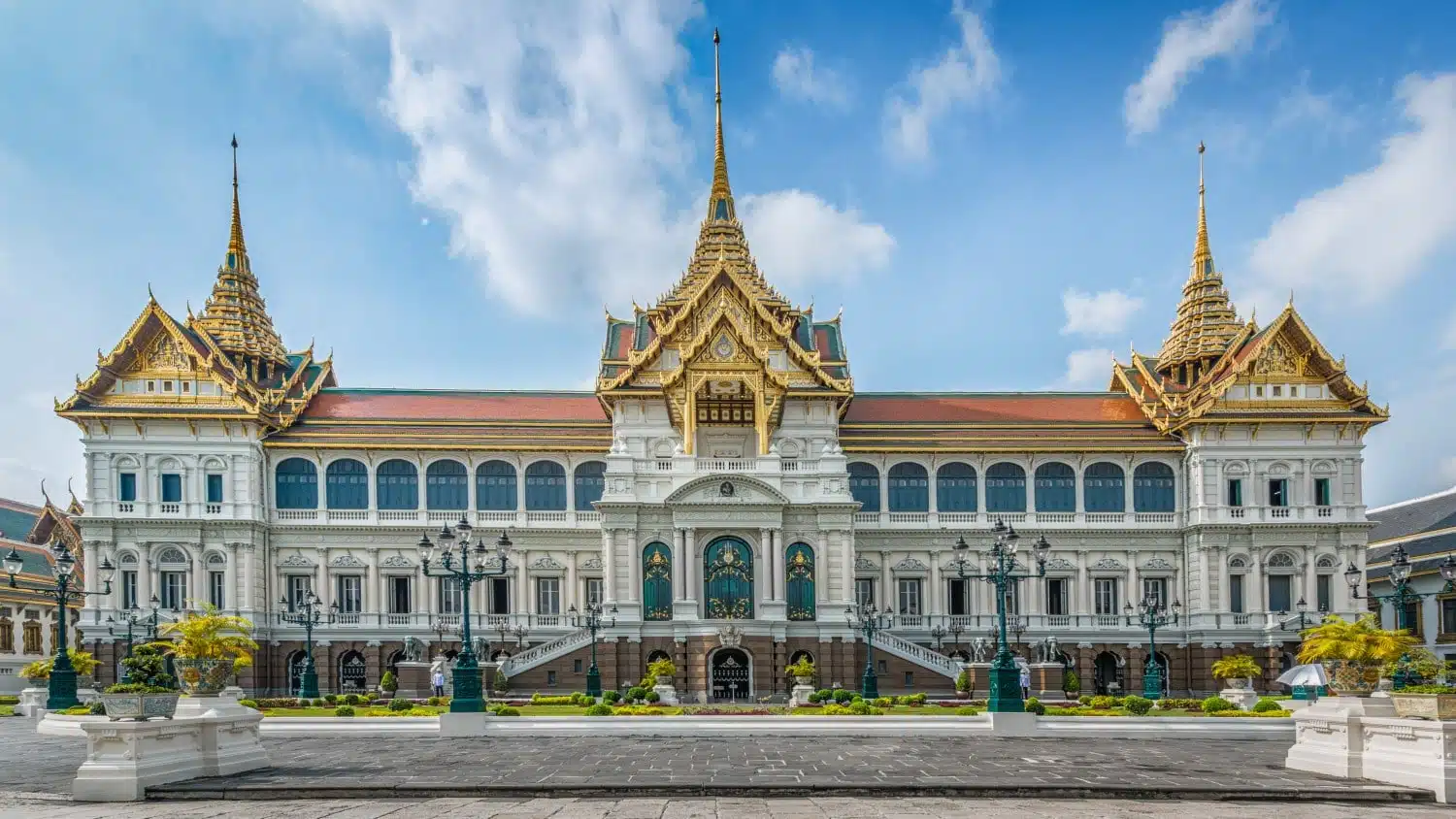
Why go to the Grand Palace in Bangkok?
Seriously… just look at that photo! The Grand Palace is a huge complex of ornate buildings that have been the official residence of the Kings of Thailand since it was built in 1782.
There are 35 sights to see in the Grand Palace Complex, including the Phra Maha Monthian and Dusit Maha Prasat Throne Hall, the two oldest, and the Temple of the Emerald Buddha, which contains a Buddha Statue over 2000 years old.
The beautiful complex of buildings is a must-see on your cultural sites itinerary.
The Grand Palace also features in our pick of the best things to do in Thailand – here’s why .
Suggested Stay: Chatrium Hotel Riverside Bangkok
How to get from Siem Reap to Bangkok?
From Siem Reap, get a bus to the Bangkok Mochit Bus Terminal. This will take about 7 hours, so after arriving, head to your hotel and then explore Bangkok for the evening.
The next morning, take a short taxi ride to the Grand Palace Bangkok, located on the banks of the Chao Phraya River in the old city.
Day 14-15: Phra Nakhon Si Ayutthaya
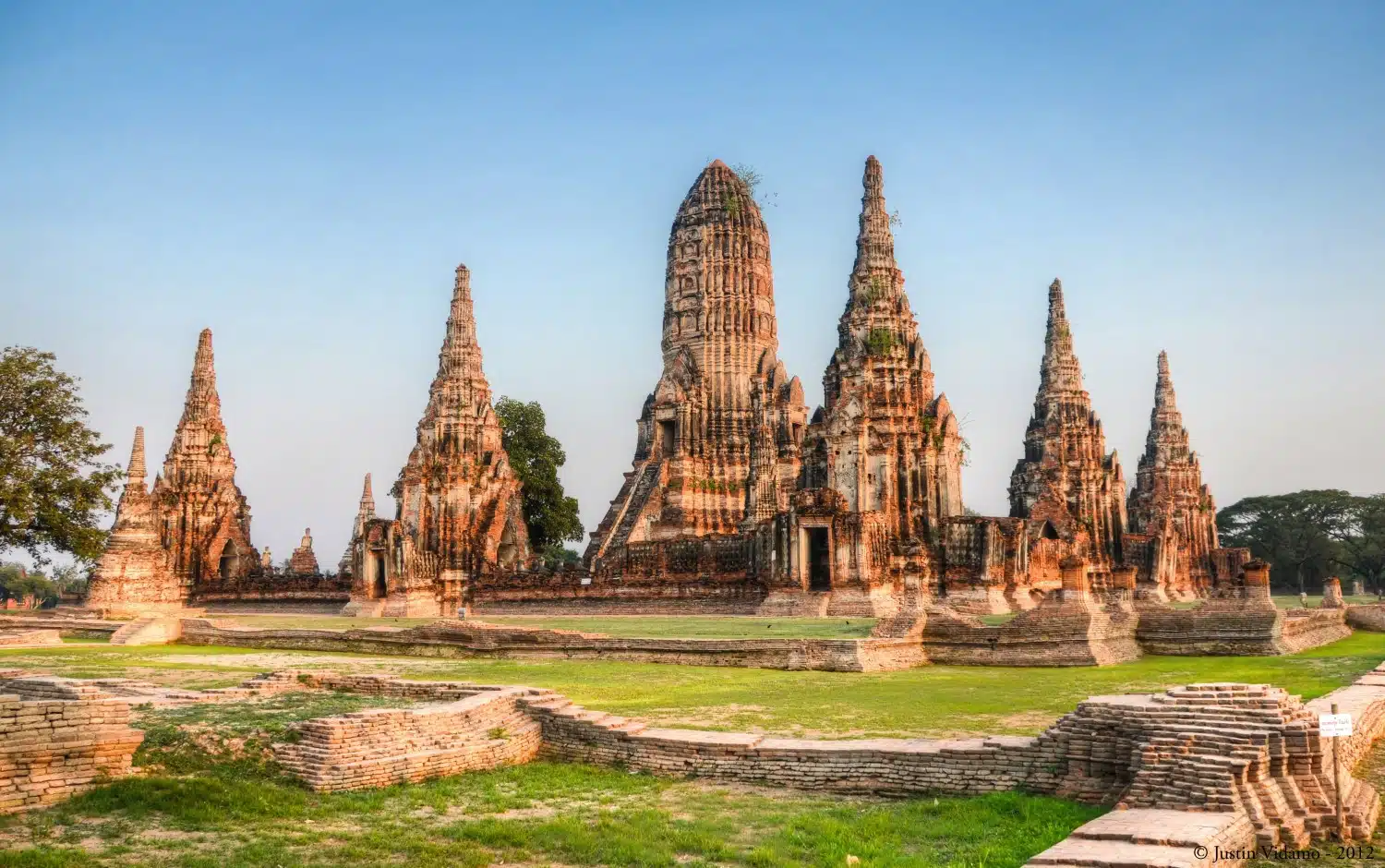
Why go to Ayutthaya?
Who doesn’t want to walk among these beautiful ruins? Founded in 1350, Ayutthaya was the second capital of the Siamese Kingdom, after Sukhothai, and is an island at the meeting of the Lopburi River, the Chao Phraya River, and the Pa Sak River.
The ancient city continued to flourish until it was attacked in 1767 by the Burmese Army, and today the site boasts incredible ruins, such as the Wat Phra Si Sanphet, the largest temple in Ayutthaya, and the Phra Chedi Suriyothai, a white and gold chedi built in memory of a past queen.
Suggested Stay: iuDia Hotel
How to get from Bangkok to Ayutthaya?
Get the train from Bangkok to Ayutthaya Station, taking only about 1 hour, and then get a short taxi ride to Ayutthaya.
Day 16-18: Sukhothai Historical Park, Thailand
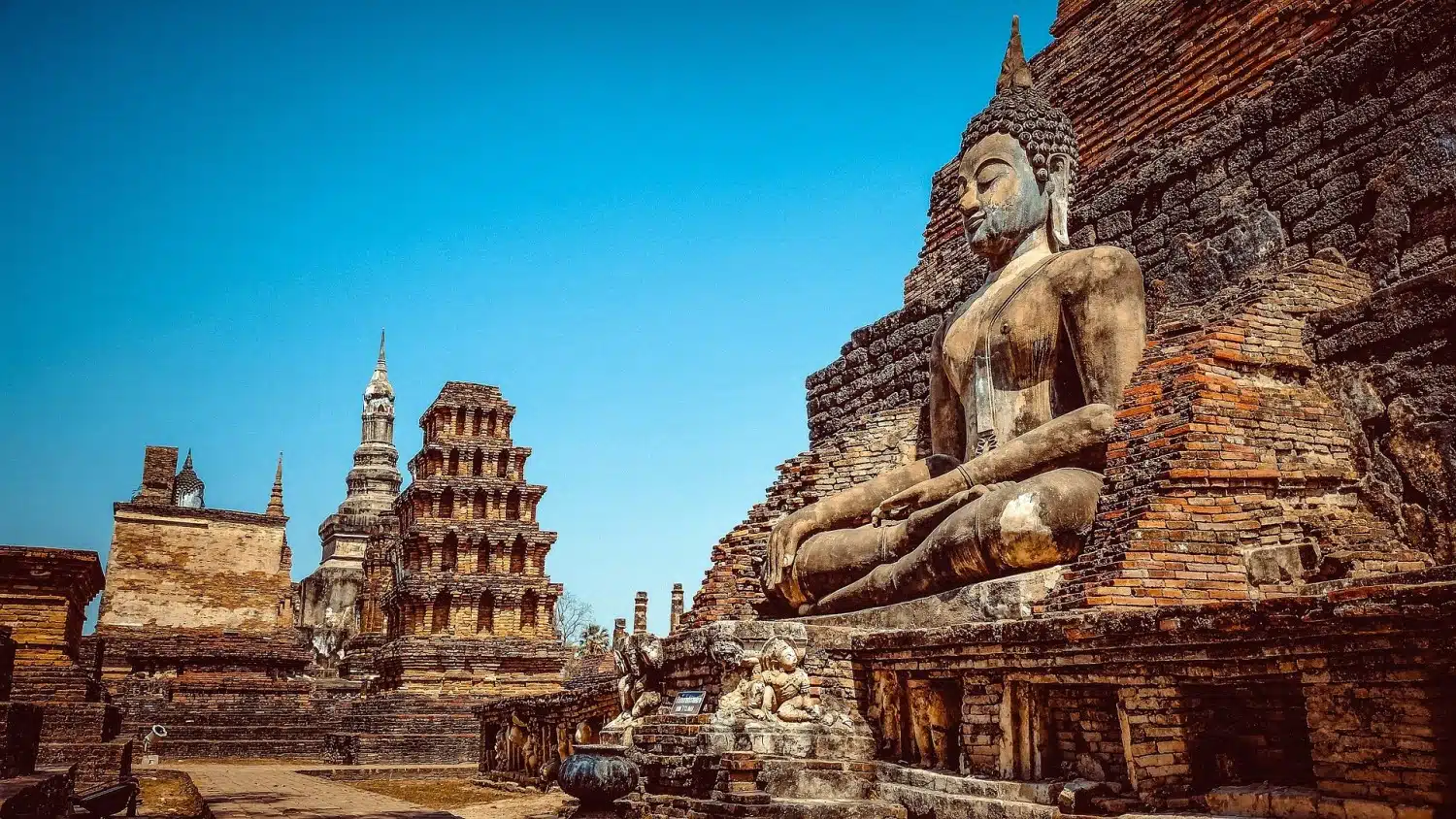
Why go to Sukhothai?
Sukhothai Historical Park contains 193 ruins of Sukhothai, the capital of the Kingdom in the 13th-14th century. The entire area smacks you in the face with impressive temples and ruins.
Declared a UNESCO World Heritage Site in 2003, inside the park sits the remains of the Noen Prasad (the Royal Palace), Wat Mahathat (the most impressive and important temple in the park), and our favourite, Wat Sa Si, which is beautifully situated in the middle of the Traphang-Trakuan Lake.
Suggested Stay: Sawasdee Sukhothai Resort
How to get from Ayutthaya to Sukhothai?
From Ayutthaya, get a 6 hour bus journey to Sukhothai, and then get a short taxi ride to the Sukhothai Historical Park.
Day 19-21: Luang Prabang, Laos
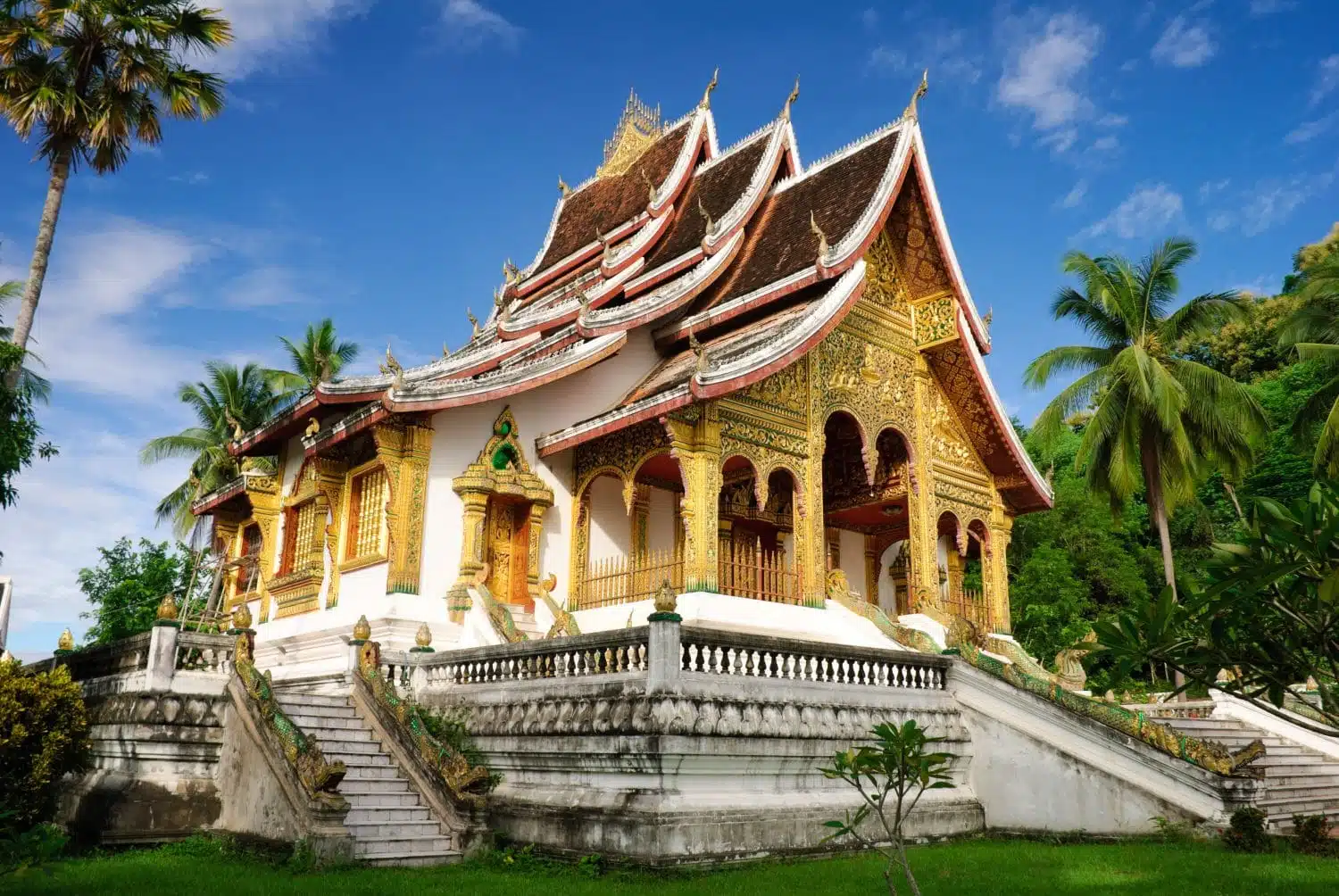
Why go to Luang Prabang?
We could ramble on about our love of Laos for hours, but Luang Prabang might just be our fave spot. This is an ancient town in Northern Laos , which lies between the Mekong and Nam Khan rivers.
As a UNESCO World Heritage Site, the town is well known for its beautiful and ornate Buddhist temples and monasteries, including the Wat Xiang Kong Temple, and also for its natural sites, such as Mount Phou Si and the Kuang Si Falls.
Suggested Stay: Indigo House Hotel
How to get from Sukhothai to Luang Prabang?
Get up early because you’ve got a whole day of travelling to do! Get a bus from Sukhothai to Phitsanulok, and then a bus to Loei.
All in all this should take about 15 hours, so we recommend heading straight to your hotel and resting before you start exploring tomorrow.
Laos is also one of the cheapest countries in the world and the perfect destination to help your cash go further. Check out the full list of affordable holiday destinations for a luxury trip .
Day 22-24: Chiang Rai, Thailand
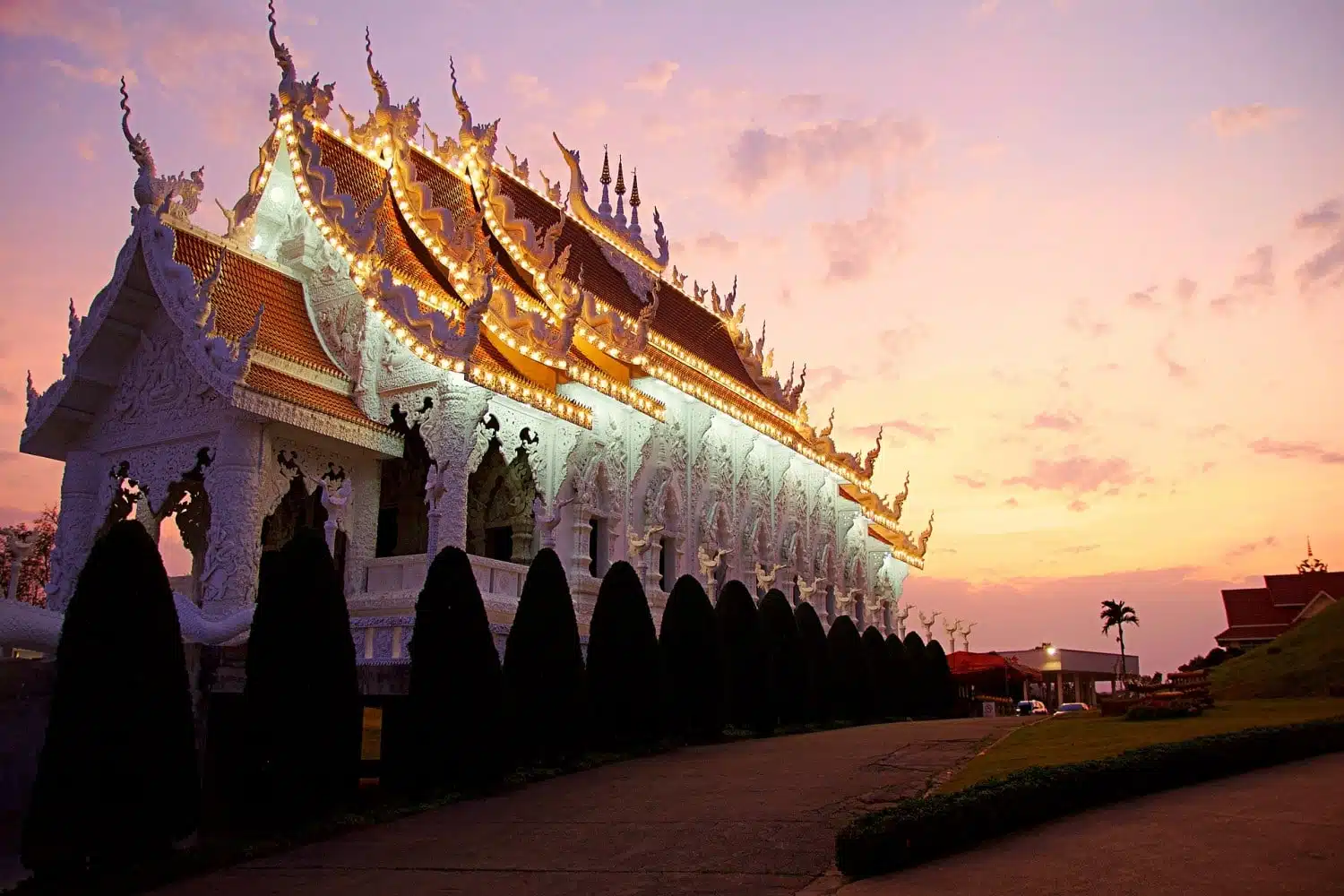
Why go to Chiang Rai?
Views, views, and more views. This south east Asia route is a killer.
Chiang Rai is a big city in Northern Thailand, and it is home to some of the best sights in the country, such as Wat Ming Meuang, Wat Phra Singh and White Temple.
But one of our favourite things was going up to the top of Buffalo Horn Hill – the views over the city were incredible.
Suggested Stay: Maryo Resort
How to get from Luang Prabang to Chiang Rai?
From Luang Prabang, get a bus to Chiang Kong, and then another bus to Chiang Rai. This in total will take about 13 hours, so head to your hotel when you get there.
The other option is to take a two-day slowboat from Luang Prabang up the Mekong river to the Thai border, cross into Thailand and then get another bus to Chiang Rai from there.
Day 25-27: Chiang Mai, Thailand
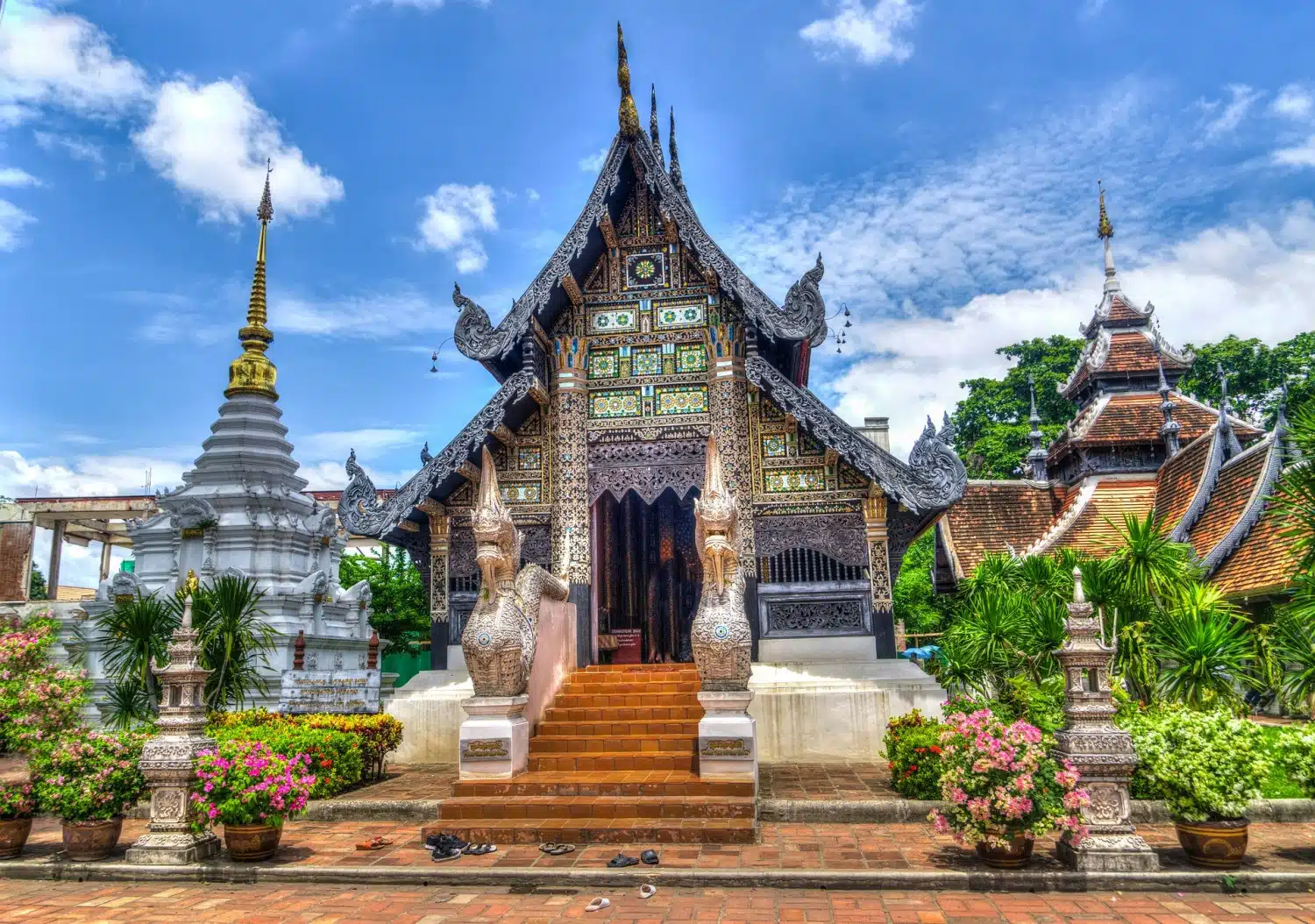
Why go to Chiang Mai?
Chiang Mai is the largest city in Northern Thailand – it’s comparable to Bangkok, but with far fewer people. Which makes for a far more pleasant experience, if you ask us.
There’s a vast array of things to see in the city, including Wat Phra That Doi Kham, Wat Chedi Luang and Wat Phrathat Doi Suthep. If you want a more relaxed day, it’s also the kind of place where you can just leisurely walk and take in the Thai atmosphere, sampling scoffing some of the local cuisine.
And if nature is more your thing, take a short scooter or Tuk Tuk ride out of the town into the rain-forested countryside, which is interspersed with beautiful waterfalls.
Suggested Stay: Anantara Chiang Mai
How to get from Chiang Mai to Chiang Rai?
Get a bus from Chiang Rai to Chiang Mai, which takes about 3 hours.
Day 28-30: Bagan, Myanmar
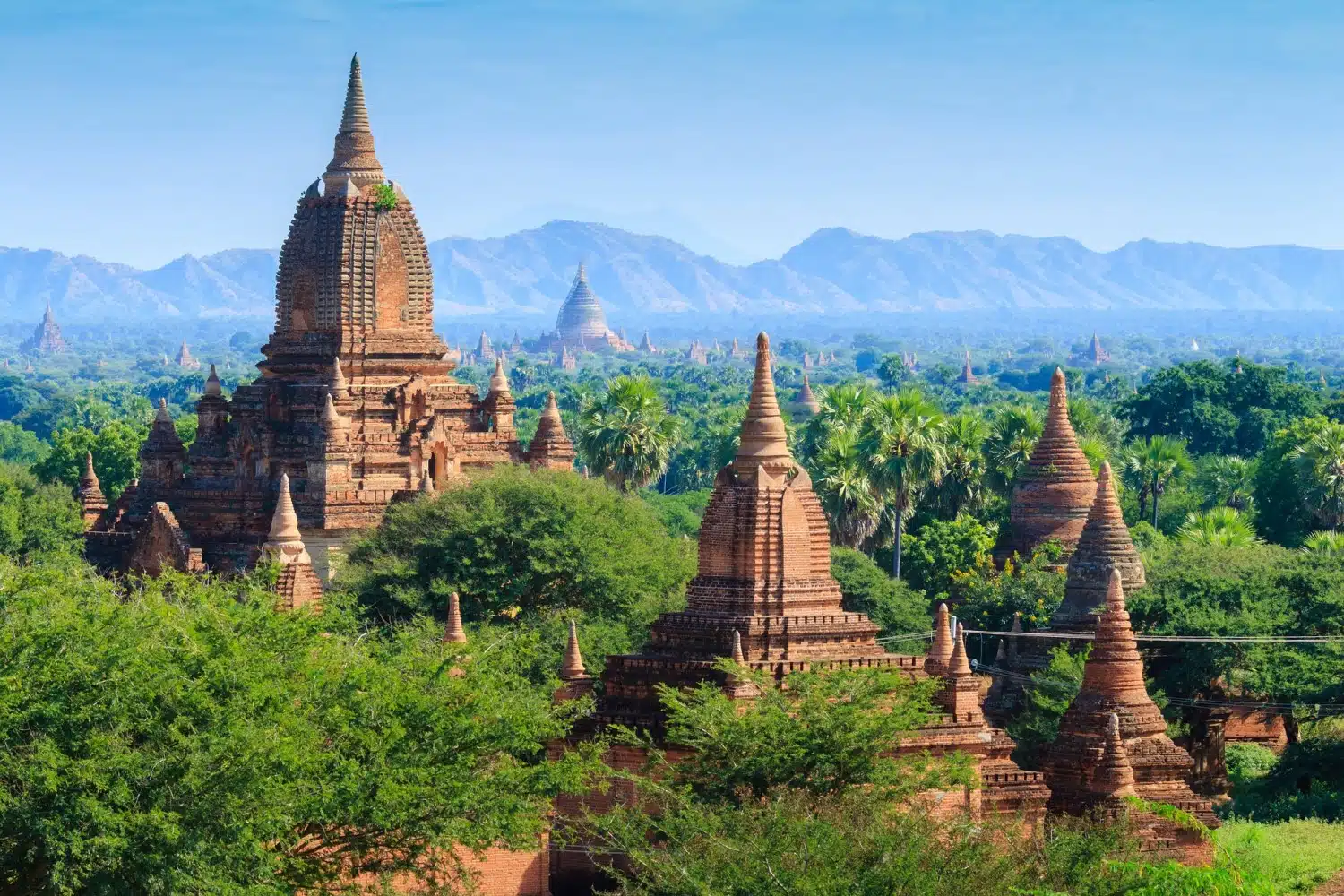
Why go to Bagan?
It’s a hidden gem! Bagan is an ancient city in Myanmar, known as the temple town, and home to 2,229 temples and pagodas. Trust us, Bagan is guaranteed to be one of the highlights on your cultural Southeast Asia travel route.
We recommend seeing the Ananda Temple and the Shwesandaw Temple, also known as the ‘sunset temple’ – head here in the evening to see the fantastic Bagan sunset.
On your last day, head to Mandalay Airport to get a connecting flight home.
Suggested Stay: Royal Bagan Hotel
How to get from Chiang Mai to Bagan?
Fly from Chiang Mai to Yangon, the Myanmar capital where you will connect onto another flight to Nyaung-U and get a taxi from there to Bagan.
Travelling Southeast Asia Route 3: Adrenaline + Adventure
Adventure opportunities abound when you travel Southeast Asia, so if you’re an adrenaline-seeker, this is the place to go.
Whether you’re into diving, hiking or climbing, this continent’s got it all. This is your backpacking Southeast Asia route for ultimate thrills.
Day 1-2: Sandboarding at Mũi Né, Vietnam
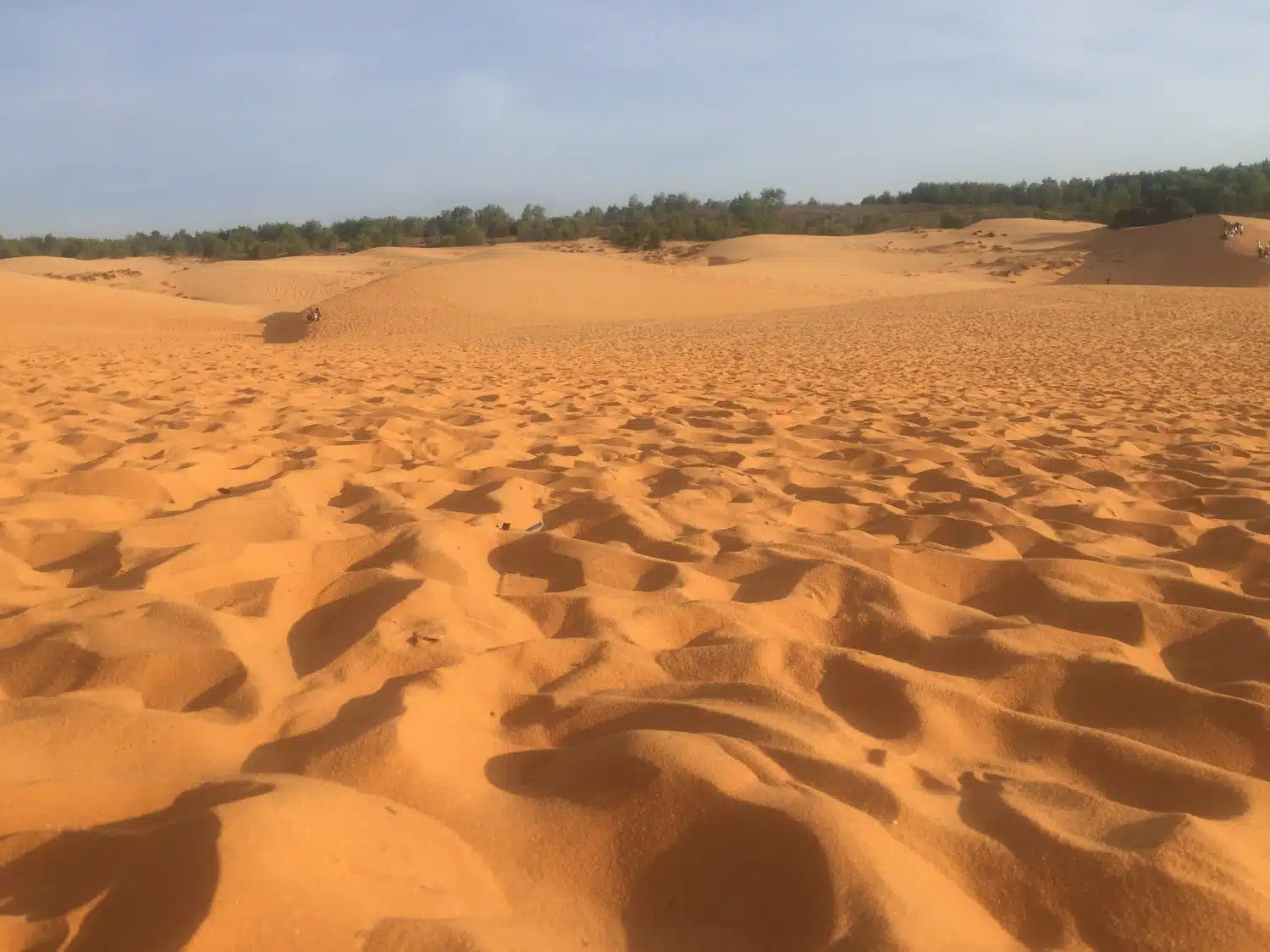
Why go to Mũi Né?
Not that you’ll ever be bored on this trip, but this is the place where thrillseekers will thrive.
Mũi Né is a beach resort town in Southern Vietnam, famous for its Saharan-like white and red sand dunes, which are perfect for sandboarding down. And if you want something even more upbeat, try the quad bikes or the dune buggies.
Suggested Stay: The Cliff Resort and Residences
How to get to Mũi Né
Start your Southeast Asia 1 month itinerary by flying into Ho Chi Minh City, and then from there take a bus to Phan Thiet, and then a bus from there to Mũi Né. This all in all should take around 4 hours.
On your first day, I suggest heading to your hotel for an early night before your month of adventure begins. Of course, it’s completely up to you whether you take that advice or not and you could start your Southeast Asia travel itinerary with a bang.
Day 3-5: Spelunking (Caving) at Hang Sơn Đoòng, Vietnam
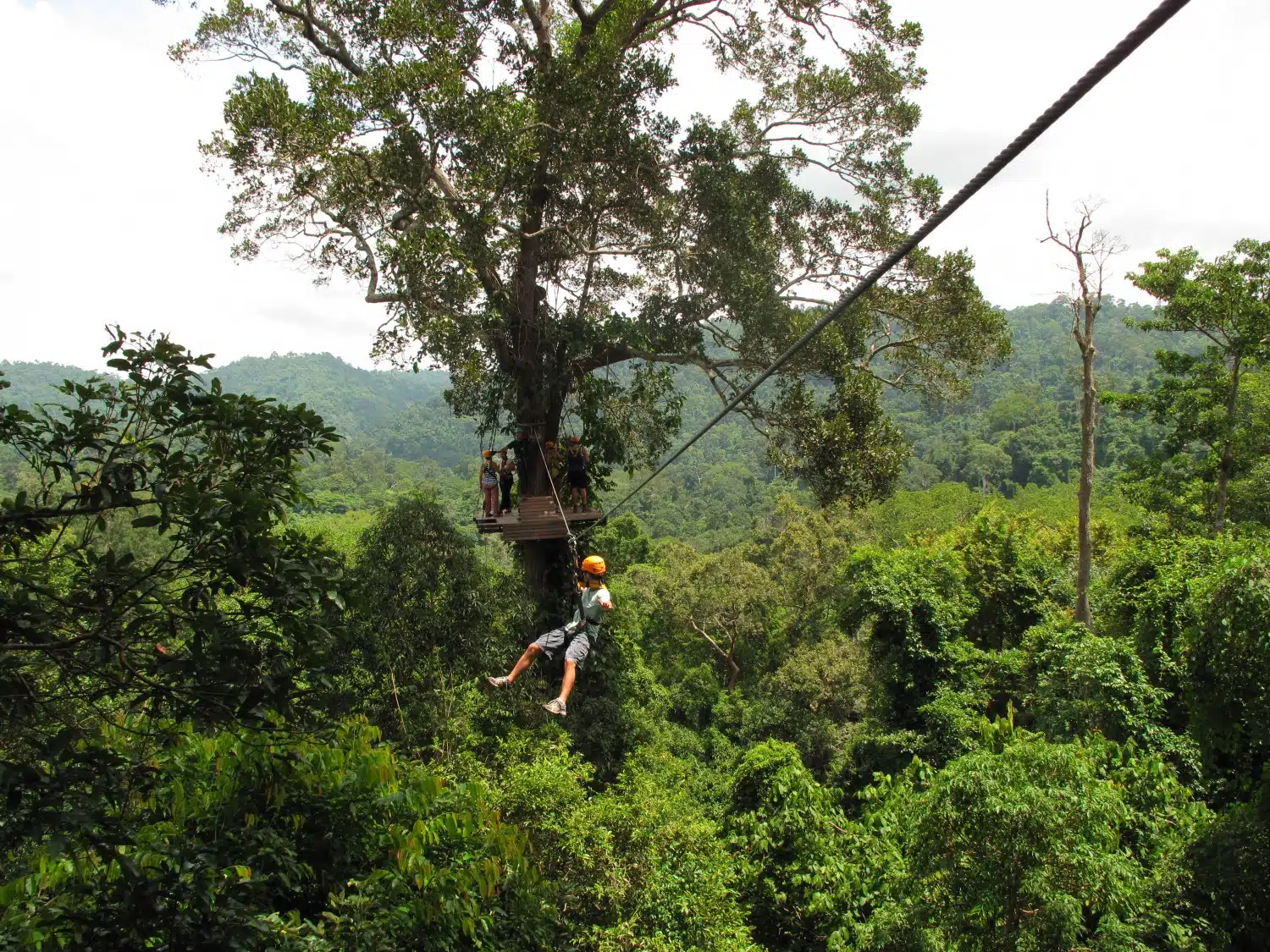
Why Visit Hang Sơn Đoòng?
Nature lovers will adore this beautiful Vietnamese spot.
Located in the middle of the Vietnamese jungle in the Quang Binh Province, Hang Sơn Đoòng is the world’s largest cave – it’s 3 sizes of Wembley Stadium! And inside there is even a fast-flowing subterranean river.
One of nature’s most incredible natural marvels, you can’t miss this on your Southeast Asia travel route.
Suggested Stay: Riverside Hotel – Quang Binh
How to get from Mũi Né to Hang Sơn Đoòng
Get up early, as you have a long travel day ahead. From Mũi Né, take a bus back to Phan Thiet, and then take another bus to Nha Trang Dien Thuan.
Take one more bus from there to Dong Hoi Quang Binh, and then take a taxi to your hotel.
Day 6-8: Rock Climbing in Vang Vieng, Laos
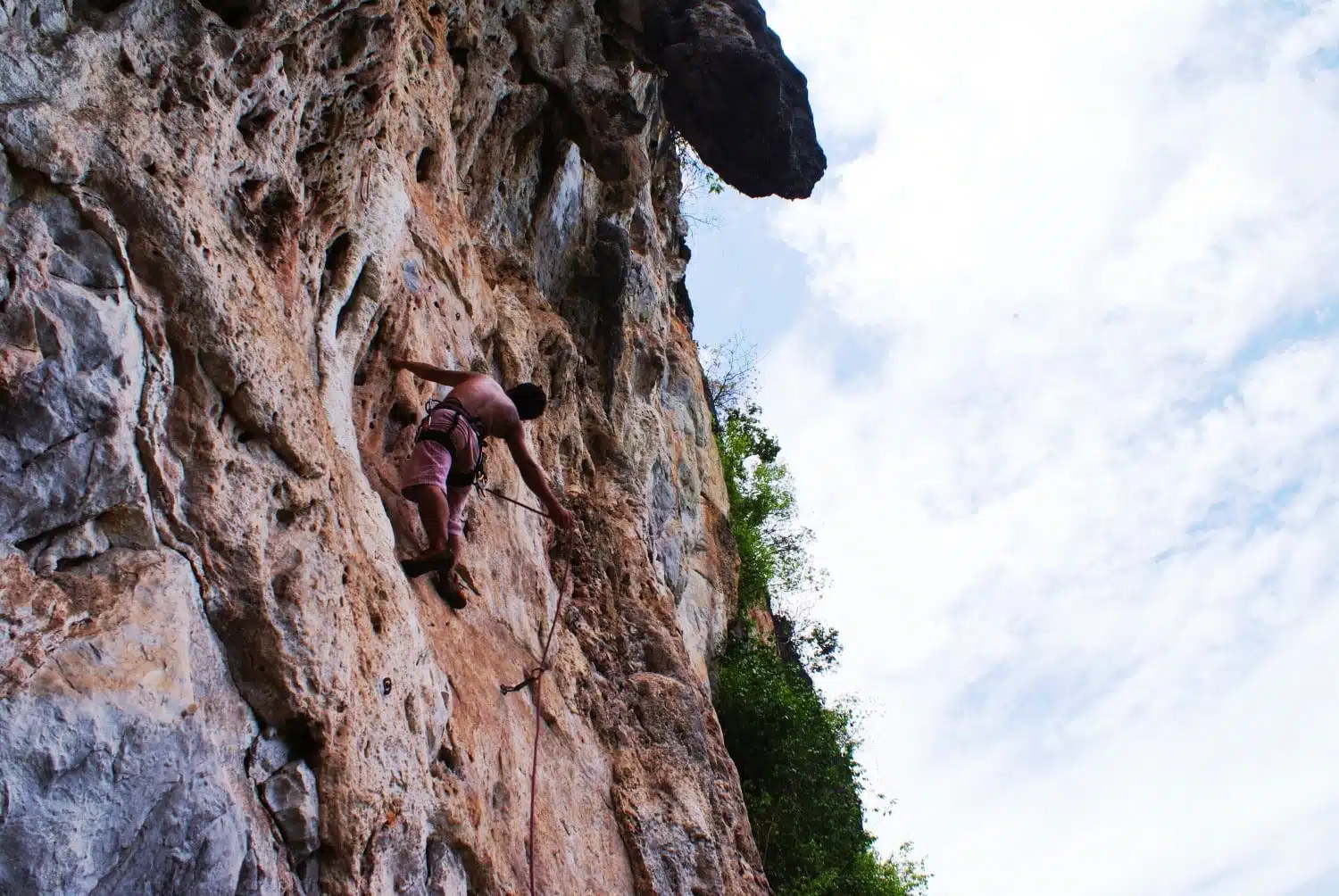
Why go to Vang Vieng?
Vang Vieng is a tourist-oriented town in Laos. Originally, it’s known for its bars, partying and tubing, it’s a cool destination in itself.
Rock-climbing is Vang Vieng’s hidden gem. The small town is surrounded by beautiful cliffs overlooking idyllic greenery and rice paddies. So clip on your gear and hold on to your ropes – there are cliffs for you to climb!
Check out our guide to rock climbing in Vang Vieng.
Suggested stay: Silver Naga Hotel
How to get from Hang Son Dong to Vang Vieng
Get the bus to Dong Hoi airport, fly to Luang Prabang and then get the bus from Luang Prabang to Vang Vieng.
Day 9-11: Hiking from Luang Prabang to Ban Hadkhor, Laos
Why hike from luang prabang to ban hadkor.
This two day hike starts at Luang Prabang, passing through Ban Hadkhang, Pha Theung, and finishing in Ban Had Khor. We love this route because you get to see a massive area of jungle landscape, as well as walk through local villages and trek across rice paddies.
Camp on the riverbank overnight and then kayak to the Holy Pak Ou Cave on the second day, before heading back to Luang Prabang. It’s fabulous.
Green Discovery Tour from Luang Prabang to Ban Hadkhor
How to get to Luang Prabang from Vang Vieng?
Catch a direct bus from Vang Vieng to Luang Prabang, which takes around 6 hours. Then it’s time to get your hiking boots on.
Day 12-17: Hiking, Ziplining and Waterfall Abseiling in Chiang Mai, Thailand
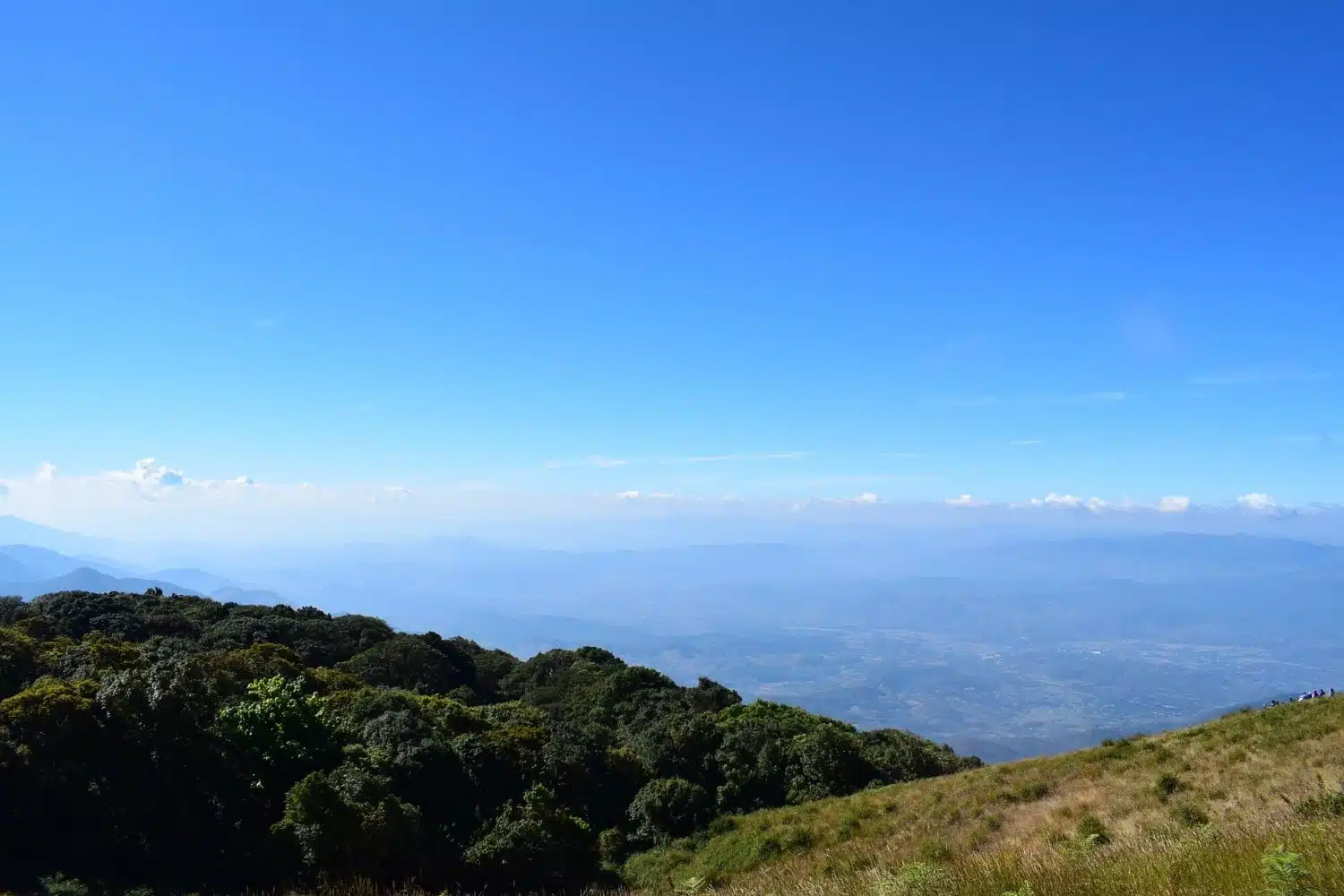
Chiang Mai is filled with an abundance of things to do.
First off, head into the jungle for a three-day hike. This trek allows visitors to hike all over the landscapes of Chiang Mai, swim in waterfalls and walk in the jungle.
We’ll level with you – we don’t recommend taking a tour that visits the Karen Hill tribes, thanks to the questions of exploitation and ethics that surround these, nor do we advocate any treks that involve elephant riding.
We think that hiking through the Chiang Mai jungle is an adventure enough though, so you should definitely do it.
Next up is ziplining. Nothing says adventure like zipping through the sky at fast speed. Chiang Mai’s ‘Flight of the Gibbon’ zip-line is not only the first in Chiang Mai, but the first in all of Asia! It features 5km of zip lines with 33 platforms, as well as abseiling and sky bridges.
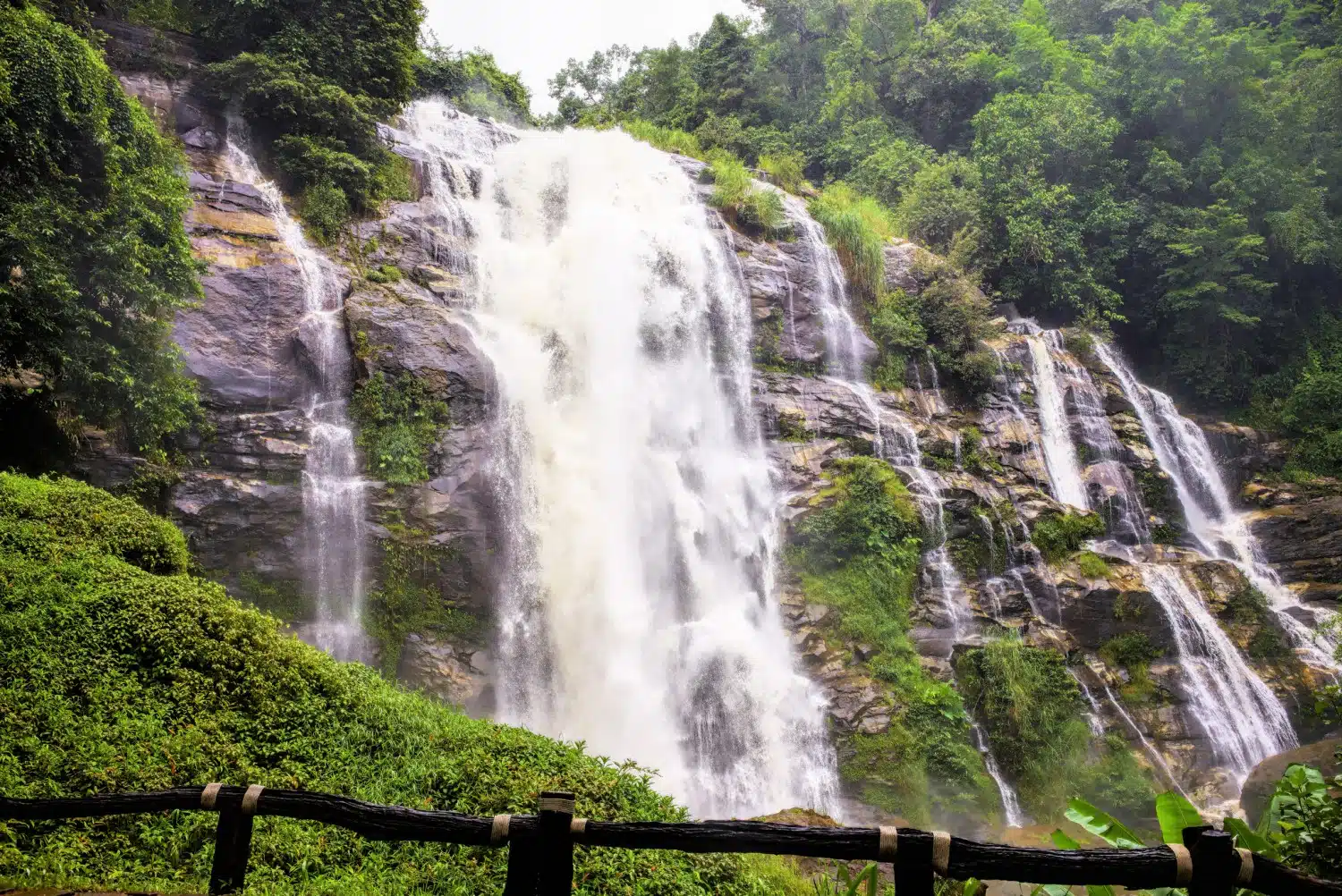
If you’re not exhausted from your days of thrills, it’s time to go waterfall abseiling . After trekking in the forest and jungle, you can abseil down a 100m rocky waterfall in the middle of the jungle.
If you want an adrenaline rush paired with some beautiful scenery, this is the one for you.
Suggested Stay: Wing Bed
How to get from Luang Prabang to Chiang Mai?
The easiest way to travel from Luang Prabang to Chiang Mai is to take a direct flight. The much slower and more scenic way is to take a two-day slow boat from Luang Prabang to Chiang Khong and then get the bus from Chiang Khong to Chiang Mai.
Day 18-20: Scuba Diving in Koh Tao
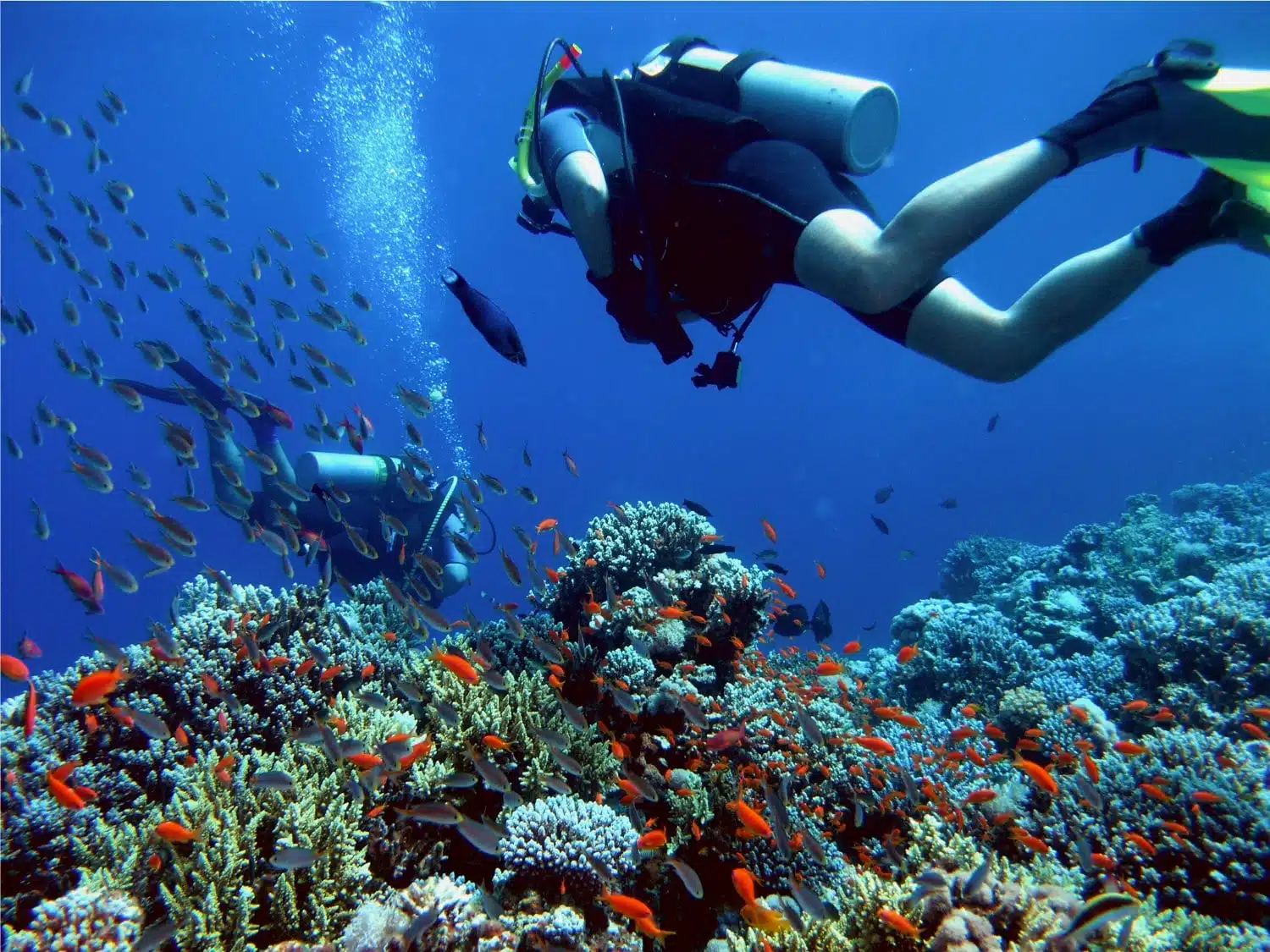
Why go to Koh Tao?
We’re sure you’ve heard plenty of tales about Koh Tao – but mainly, Koh Tao is a fabulous place to scuba dive. With over 20 different dive sites, and we recommend using Crystal Dive as your guides.
If you’ve ever thought about getting your PADI diving qualification, Koh Tao is the place to do it.
There aren’t many places where your first dives will be in such spectacular sites. Crystal Dive offers normal dives and also wreck dives for the more adventurous among you, with all sites boasting stunning reefs.
Suggested Stay: Mango Bay Boutique Resort
How to get from Chiang Mai to Koh Tao?
From Chiang Mai Airport, fly to Koh Samui. From there, take the ferry to Koh Tao. All in all, this should take around 6 hours.
Day 21-23: Rock Climbing at Railay Beach, Thailand
Why go to railay beach.
Around Railay Beach is a rock climber’s paradise – all of the rock is limestone and part of the world’s largest coral reef. With over 700 routes around Railay Beach, ranging from beginner to extreme, there’s something for everyone.
And if that’s not enticing enough, the views of the beautiful beaches should have you hooked. We recommend climbing with Real Rocks Climbing School .
How to get from Koh Tao to Railay?
From Koh Tao, take a 2 hour ferry to Koh Samui, and then take a bus to Krabi. Take a short walk to the Krabi Town Pier, and then get a ferry to Railay Beach. This journey should take about 6 and a half hours.
Day 24-26: Scuba Diving in Andaman Islands
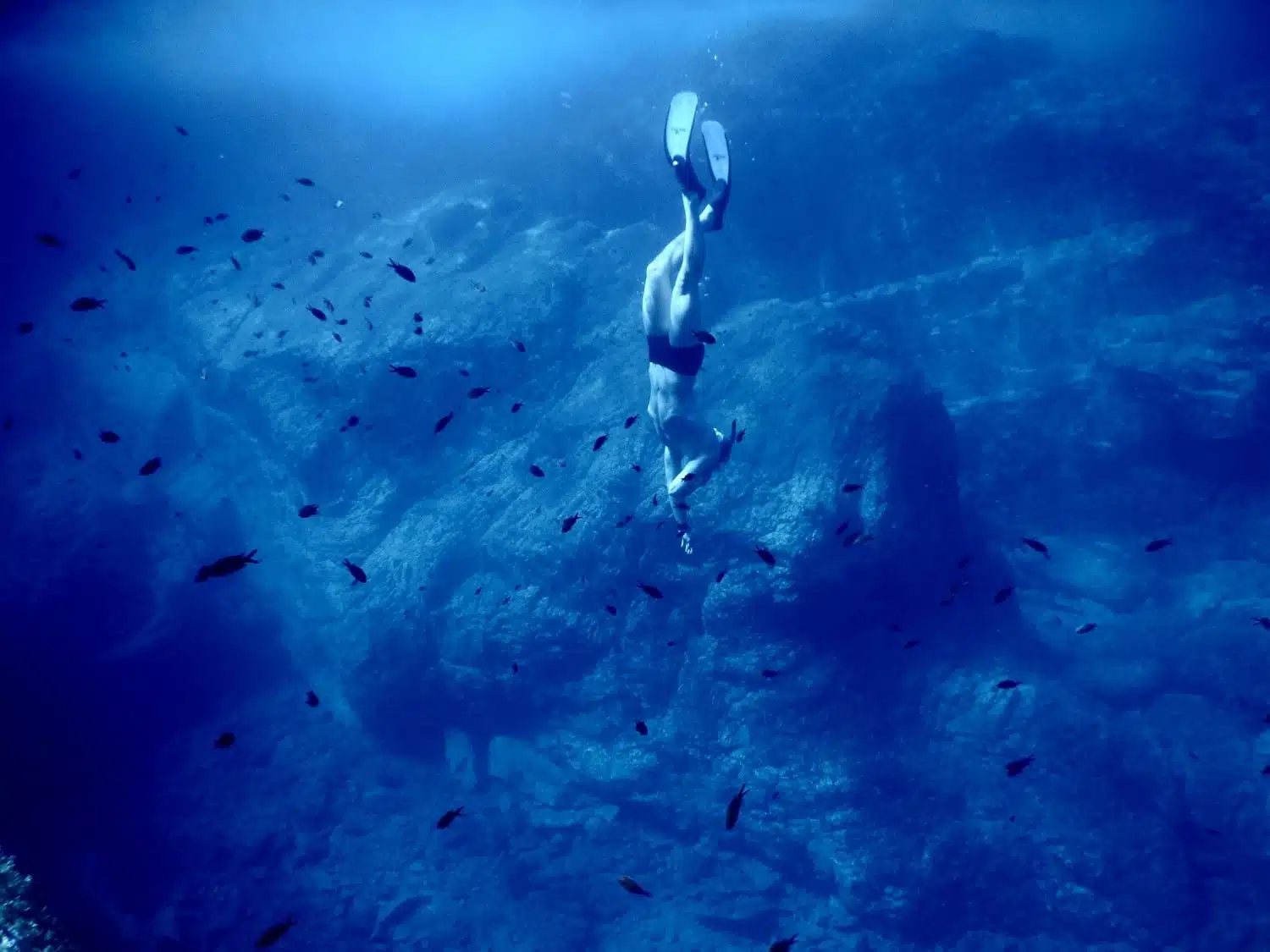
Why go to the Andaman Islands?
Because who doesn’t dream of spending a couple of days on what feels like a private island? The islands are very remote and so have excellent areas for diving with stunning turquoise waters.
In fact, diving in the Andaman Islands is some of the best in the world. That’s why it deserves its place on this epic southeast Asia itinerary.
There are hundreds of deserted islands to explore, a chance to snorkel with swimming elephants, and a dive site at a live volcano with beautiful marine life, near Barren Island. What more could you want?!
We recommend diving with Original Diving . After you’ve finished your scuba diving, fly to Delhi, where you will make your trip home, until next time.
Suggested Stay: Advhasaha Resort
How to get from Railay to the Andaman Islands?
The last stop on your adventurous trip is probably the longest to get to, but it is probably also the best – so don’t stop now! Go to Krabi Airport and then get a flight to Port Blair, stopping at Bangkok and Madras, taking a total of about 17 hours.
Useful Resources
Travel currency.
UK travellers can take advantage of the fee-free Monzo prepaid card. Spend your money on cocktails and hotels, not on bank charges.
The Lonely Planet and Rough Guides are go-to reliable books for your Southeast Asia trip.
Love This? Save and Share on Pinterest!
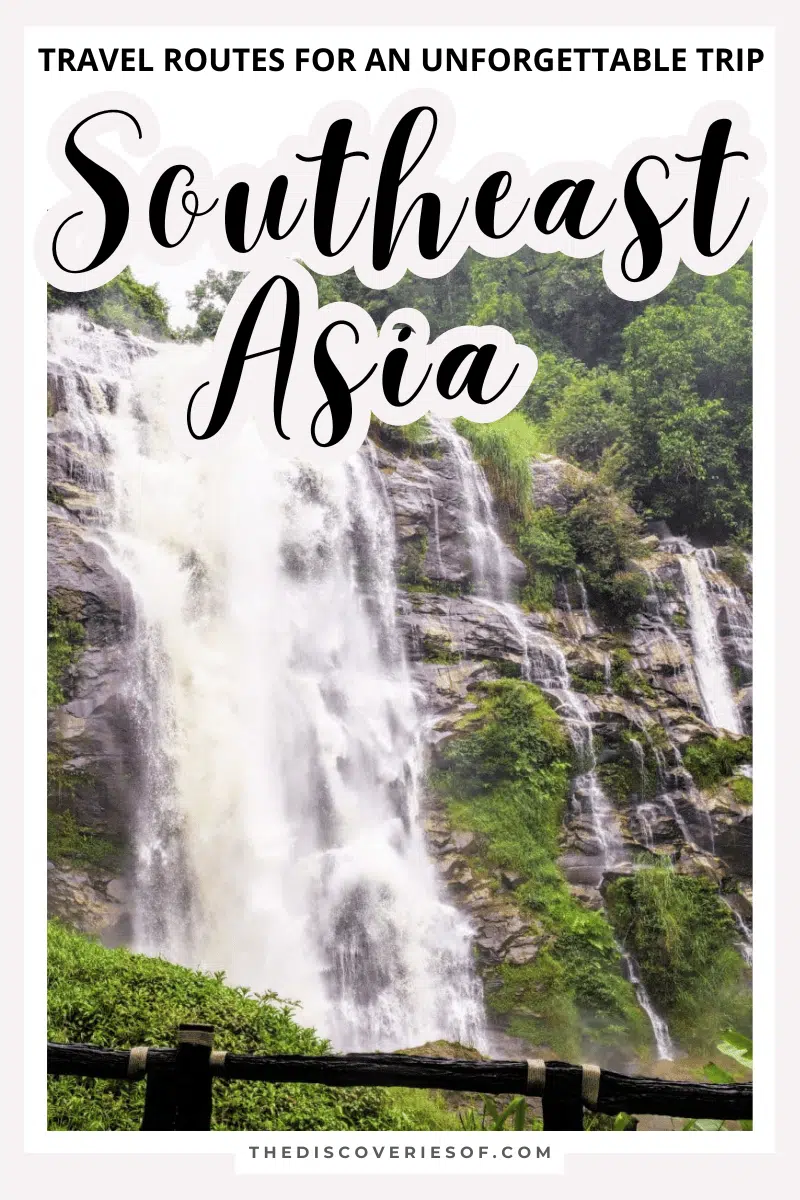
Sophie Ritchie is a writer for The Discoveries Of. She’s had a passion for travelling since a young age, and loves to visit new places every year. If she had to pick a favourite place it would be Cuba. Her ultimate dream? To travel to every country in South America.
Related Posts
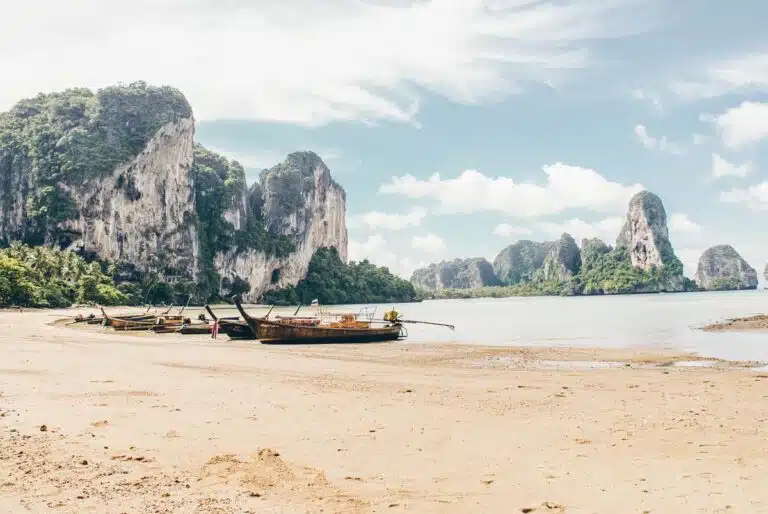
Railay Travel Guide: Discover This Gorgeous Corner of Thailand
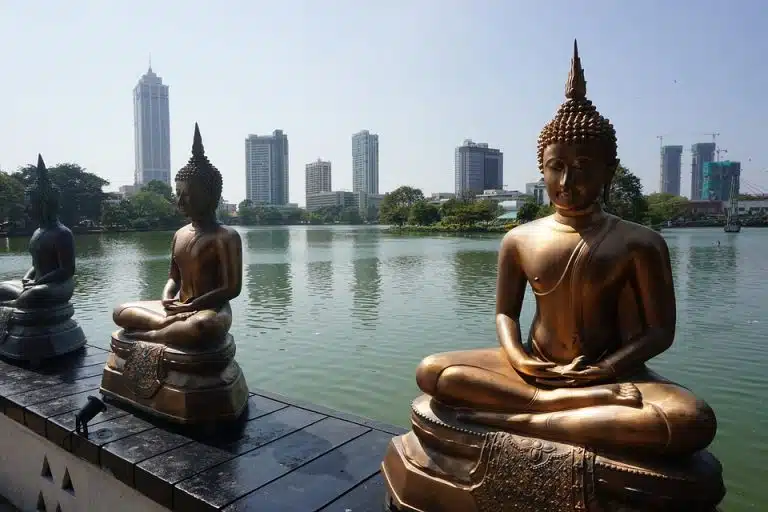
The Best Things to Do in Sri Lanka: 20 Top Sri Lanka Attractions
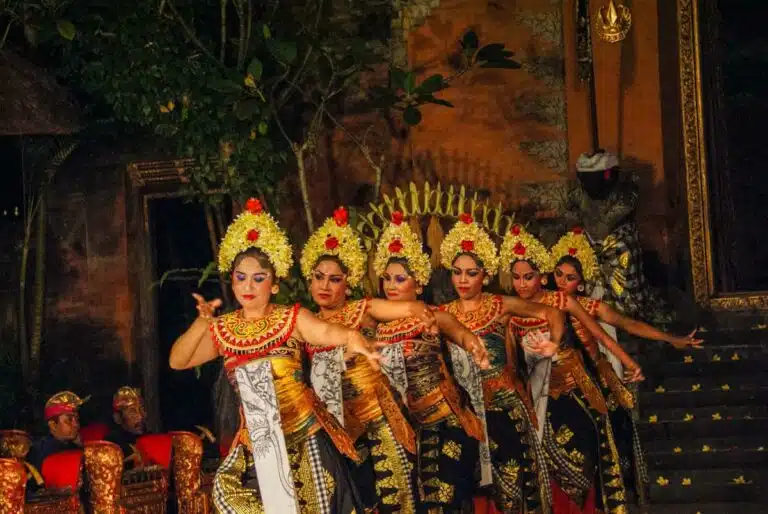
16 Fabulous Things to do in Indonesia Beyond Just Bali
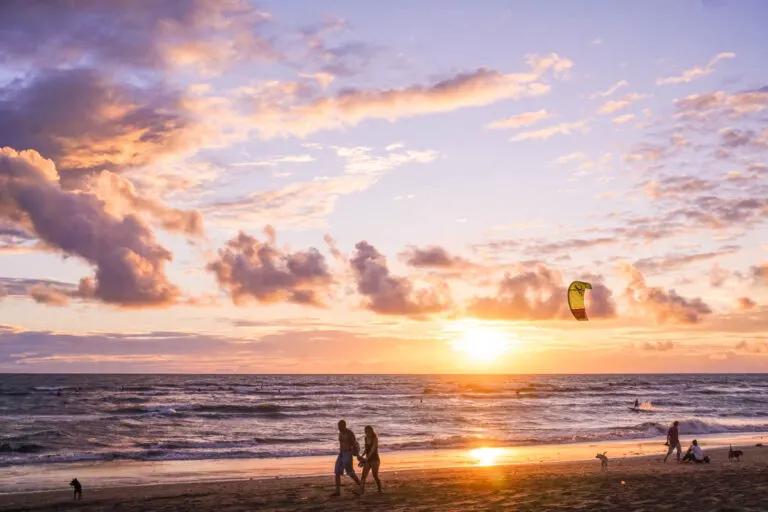
Where to Stay in Bali + The Best Hotels in Bali – The 2024 Guide
If you have more time you could add Da Nang at the beginning of the trip and then to Nha Trang to go to Cam Ranh Bay. At the other end of the trip you could add the Mentawai islands and then the Gili Islands.
Thanks for the suggestions – totally agree. Although there’s a lot you can add in if you are going to Indonesia as well as SE Asia.
Thailand looks insane!! It has been on my mind for a while and after reading this, I know its my next destination!! Great guide and options for different types of travelers!
Hey Aaren – it’s really cool and I love it. In fact, heading back later this year. I hope you have a brilliant time!
Leave a Reply Cancel reply
Your email address will not be published. Required fields are marked *

Follow me on Instagram for travel inspiration, tips, and guides.

- 2 Weeks for Couple
- 2 Weeks for Family
- Thailand Lantern Festival
- Indonesia(Bali)
- South Korea
- China (HK, Taiwan)
- Itinerary Ideas
- Asia Highlights Travel Reviews
- Thailand Travel Reviews
- Vietnam Travel Reviews
- Cambodia Travel Reviews
- Japan Travel Reviews
- Myanmar Travel Reviews
- China Travel Reviews

4 Weeks in Southeast Asia: Itinerary & Planning Tips 2024
With more than a dozen countries in Southeast Asia, 4 weeks/1 month can satisfy your ambitions to travel to many places. Check out recommended plans for your 4 weeks/1 month in Southeast Asia and expert advice.
- Which Southeast Asia Countries to See in 4 Weeks
Week 1: Myanmar
Week 2: vietnam, week 3: laos and cambodia, week 4: thailand, how much is a 4-week trip to southeast asia, guided or independent tours, which countries to visit in southeast asia in 4 weeks.
The most popular destinations in Southeast Asia are Thailand, Vietnam, Cambodia, Myanmar, Laos, Bali (Indonesia), and Singapore. For a 4-week trip to Southeast Asia, we recommend you visit 4-5 countries .
A highly recommended combo for a 4-week tour in Southeast Asia is Thailand, Vietnam, Cambodia, Laos, and Myanmar . This combination offers a rich tapestry of experiences, ranging from pristine beaches and ancient temples to a vibrant religious vibe, exotic culinary delights, encounters with elephants, and the lush wonders of the rainforest.
If you prefer a more relaxed pace , consider focusing on three or four of these nations. You might choose to omit Laos or Myanmar from your itinerary for a more leisurely experience while still enjoying the diverse offerings of the region.
Free feel to tell us your preferences and requirements. We will make a trip based on your ideas. If you don't have some ideas now, you can check our Best Southeast Asia Tour Packages for inspiration.
Discover real reviews of Highlights Travel Family 's best-rated service across trusted platforms.
A Classic 4-Week Southeast Asia Itinerary to Thailand, Vietnam, Cambodia, Laos, and Myanmar
Considering the overall tour experience and transport connections, usually our route goes Myanmar–Vietnam–Laos–Cambodia–Thailand.
Myanmar and Vietnam, rich in attractions and activities, are good to place at the start of the trip. Laos and Cambodia, centering around temple visiting, are suitable for the middle part, and finally end at Thailand's beaches.
Days 1-2: Mandalay Days 3-4: Began Days 5-6: Inle Lake Days 7-8: Yangon
Days 1-2: Mandalay
Embark on a captivating tour of Mandalay's highlights, including the magnificent Kuthodaw Pagoda, home to the world's largest book. Explore the remnants of Bargaya Monastery in the former royal capital of Inwa. As the sun sets, witness the breathtaking sunset over the iconic U Bein Bridge , a symbolic landmark of Mandalay.
Days 3-4: Bagan
Immerse yourself in local life with a cooking class supported by JICA . Wander Nyuang U Market, absorbing vibrant flavors. Explore the awe-inspiring Shwezigon Pagoda and delve into Bagan's history at the Archaeological Zone. Visit iconic sites like Ananda Temple, Shwesandaw Pagoda, and Htilominlo Pahto. As dusk falls, be captivated by the sunset over the pagoda complex, a moment of tranquil beauty.
Days 5-6: Inle Lake
Discover the serene beauty of Inle Lake, where leg-rowing fishermen showcase their unique skills . Enjoy the tranquility and explore the local way of life.
Days 7-8: Yangon
Explore Myanmar's history at the National Museum and witness the stunning sunset from Shwedagon Pagoda. Visit the heart of the city at Sule Paya and contribute to the community at Thadama Myintzu Nunnery. Experience local life aboard a train and conclude your day with a stroll through Bogyoke Aung San Market, offering an array of souvenirs and crafts.
Days 9-10: Ho Chi Minh City Days 11-12: Hoi An Days 13-14: Hanoi Days 15-16: Halong Bay
Days 9-10: Ho Chi Minh City
Feel the bustling energy of Ho Chi Minh City, exploring the War Remnants Museum, Notre-Dame Cathedral Basilica of Saigon, and the historic Cu Chi Tunnels . Dive into local cuisine with a street food tour.
Days 11-12: Hoi An
Explore Hoi An's waterways on a traditional round basket boa t. Visit the ancient town, a UNESCO World Heritage site, with its charming architecture, lantern-lit streets, and enjoy a cooking class.
Days 13-14: Hanoi
Uncover the cultural gems of Hanoi, including the Ho Chi Minh Mausoleum, Temple of Literature, and the vibrant Old Quarter.
Days 15-16: Halong Bay
Cruise through this UNESCO World Heritage site, surrounded by stunning limestone karsts, and partake in a kayaking adventure. Marvel at the ethereal beauty of the bay's unique landscapes.
Days 17-19: Luang Prabang Days 20-21: Siem Reap
Days 17-19: Luang Prabang
Interact with elephants at Elephant Village and explore their world. Visit the hospital, museum, and dung paper-making facility. Trek the Trail of Falls. Witness the morning alms-giving ritual and explore Luang Prabang's cultural gems.
In the afternoon, relax at Kuang Si Waterfall. Luang Prabang offers a blend of nature and cultural charm.
Days 20-21: Siem Reap
Explore Angkor's exquisite temples, including iconic landmarks like Angkor Wat , Bayon, Ta Prohm, and Banteay Srei. Delve into Cambodia's history at the Landmine Museum. Discover remote temples like Beng Mealea and Preah Khan, adding layers to the Angkor experience.
Days 22-24: Bangkok Days 25-27: Phuket Day 28: Departure
Days 22-24: Bangkok
Embark on the final leg of your journey in Bangkok. Explore the Grand Palace, Wat Pho, and Wat Arun. Experience the vibrant street life at Khao San Road and indulge in local street food.
Days 25-27: Phuket
Relax in the tropical paradise of Phuket, visiting Patong Beach, Phi Phi Islands, and Big Buddha. Enjoy water activities, explore Old Phuket Town, and savor Thai cuisine.
Day 28: Departure
As your 28-day odyssey concludes, depart with a treasure trove of memories, having explored the best of Southeast Asia's history, culture, and natural beauty.
Southeast Asia offers good value for money. For the price of a mediocre restaurant in Western countries, you can enjoy a superb meal at a Michelin-starred establishment in Southeast Asia.
- If you have a lower budget, you will need around 180–200 USD /day per person (including airfare within Southeast Asia, 3-star hotels, lunch, attractions, guide, and transfers). 4 weeks is about 5500–6000 USD.
- For a medium budget, it will cost around 200–250 USD per day per person (including airfare within Southeast Asia, 4-star hotels, lunch, attractions, guide, and transfers). Thus, it may cost about 6,000–7,500 USD for 4 weeks.
- For a higher budget, US$250–350 per day per person is needed (including airfare within Southeast Asia, 5-star hotels, lunch, attractions, guide, and transfers). The cost for 4 weeks is around 7,500-10,000 USD.
>>> Planning a Trip to Southeast Asia: A Beginner's Guide
Although Southeast Asia is a paradise for backpacking, it has its drawbacks. With an independent tour , you must handle all things by yourself : booking the transport and hotels, making detailed itineraries… But, you may be unfamiliar with these countries and will probably face unexpected events, especially if yours is a multi-country trip.
With a guided tour , all you need to do is concentrate on fully enjoying your holiday. With a well-planned itinerary created by an expert travel consultant, you can make the most of your vacation without unnecessary stress or missing out on the best of every city.
With private transport, you can reduce your time on the road, and spend more at the highlights. With a local guide, you can learn more of the culture's secrets and stories behind the attractions. He/she can help you travel safely and solve any problems — expected or unexpected.
Thus, a guided tour is recommended if you don't have much time to sit and plan. Contact us to create a worry-free tour .
Contacting Us for a Booking/Inquiry
You are warmly welcome to have us customize your trip based on your group size, interests, budget, and other needs. For a personalized tour and quote, sit back and use our Create My Trip service.
Or start from a recommended fully-modifiable itinerary:
- 28-Day Grand Indochina Tour
- 19-Day Highlights of Thailand, Cambodia, and Vietnam
- 21-Day Thailand and Vietnam Adventure Tour
- 3-Week Best of Thailand, Cambodia, and Vietnam Tour for Couples
- More Southeast Asia Tours
Why Asia Highlights (10,000+ reviews & 98.8% 5-star rating)
- Save Your Time:
- Less research, more enjoyment!
- Real-time 1V1 expert planning
- Maximize Your Flexibility:
- Personal local guide and ride
- Explore at your own pace
- Celebrate Your Journeys:
- Specially-crafted family adventures
- Celebrate milestones with style!
Get Inspired with Some Popular Itineraries
At Asia Highlights, we create your kind of journey — your dates, your destinations, at your pace. You can have any trip tailor made for your travel.
More Travel Ideas and Inspiration
Sign up to our newsletter.
Be the first to receive exciting updates, exclusive promotions, and valuable travel tips from our team of experts.
Why Asia Highlights
Where can we take you today.
- Middle East
- African Safari
- Travel Agents
- Loyalty Program
- Our Differences
- Privacy Policy
Address: Building 6, Chuangyi Business Park, 70 Qilidian Road, Guilin, Guangxi, 541004, China

3 Weeks in Southeast Asia: 9 itineraries
DISCLAIMER: This post might have links to travel services and products that we enjoy. We might make a commission from it at no extra cost to you.
A perfect itinerary doesn’t exist, but an epic one can be experienced . There’s no such thing as a perfect itinerary when you’re immersed in a culture very new to you. There are places and things you wish to visit and try, but there are bumps on the road to consider.
Do you have the budget? How good are you with directions? What language do they speak? Are the locals, and will they show you the way? An epic trip starts the moment you realize that sometimes your perfect itinerary can go unexpectedly wrong.
I’ve travelled Southeast Asia in so many different ways in the last 8 years . On my first trip, I visited Vietnam, Laos, Thailand, and Myanmar for three months. On my second trip, I was in Thailand, Cambodia, and Malaysia for one month.
On the most recent trip, I was in Vietnam and Indonesia for three weeks. There’s no “correct way” to explore Southeast Asia. Only good planning, thirst for adventure, and willingness to accept mishaps.
Coursing through top spots in Southeast Asia can fill up your exploration bubble, and all the best places can’t fit in a single article. And many times, you may want to travel to all destinations in a single day. But that’s not possible .
So, I made an excellent way to chop up your 3 weeks in Southeast Asia itinerary in a smart way of planning to not overwhelm you. Perhaps after this trip, just like me, you won’t be able to stop coming back for more.
IMPORTANT TIP : This is a long-form article, and there are 9 itineraries. I recommend you click the “Table of Contents” to make navigating easier. That will help you determine which part of the article is most interesting and helpful for your planning.
THINGS TO KNOW BEFORE GOING TO SOUTHEAST ASIA
There is so much information I could give for travelling around Southeast Asia. But then this will be a book! Here are a few must-know and vital information for exploring this magnificent and diverse region.
When is the best time to go to Southeast Asia
It varies a lot. Although the countries around Southeast Asia are located close to one another, the seasons are still very different for each . For example, the typhoon season in the Philippines is between June and October, but in Thailand, it starts earlier, around April.
For Vietnam, it varies from north, central, to south . The best time to visit Indonesia is between July and August, but for surfing, it’s April all the way through October.
December to January is the safest bet when it comes to visiting Southeast Asia , but it’s the busiest. So, the prices are high, and everything must be booked in advance due to the Christmas and New Year crowd.
What is the average cost of 3 weeks in Southeast Asia
I personally would say around $1,000 is a good budget if you plan to visit 1-2 countries . You can stay in private rooms and eat at nicer restaurants. If you’re a backpacker , you might be able to do it at $800 , but that excludes flights between countries and tickets from and to home.
It’s safe to say around $1,500 is a great budget for 20 days in Southeast Asia , and you can count on staying at better hotels and booking premium tours.
For a luxury trip such as a honeymoon, plan to spend around $3,000 or more for two people . This will allow you to stay in luxury resorts, join culinary classes, and private tours, and dine at fantastic restaurants.
Visas to Southeast Asia
Each countries in Southeast Asia has its own visa policies, although most of them offer visa-free or you can apply for an evisa online. I always use this site when I personally process my evisa or visa-on-arrival.
Other travel tips
When travelling around Southeast Asia, I use these sites and tools to book my hotel, flights, tours, and travel insurance. I like how many of these allow me to cancel at the last minute in case my travel plan changes.
CREATING 3 WEEKS IN SOUTHEAST ASIA ITINERARY
There are about 11 countries in Southeast Asia, and each differs in geography, culture, and cuisine.
- Philippines
- Timor Leste
The Philippines, for example, is the gateway to gems of white-sand beaches. Laos has been named The Land of Serenity and Bountiful Nature. That’s just two countries. I’ve listed some of the wondrous combinations of places to be in Southeast Asia.
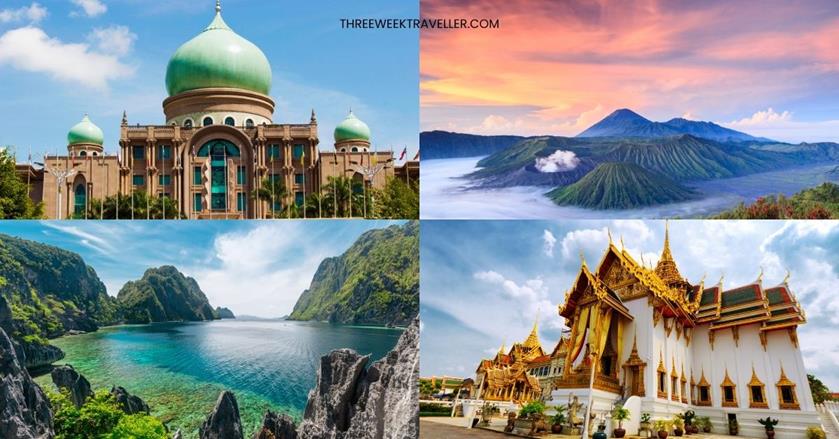
Package tours
A package tour is when you book a multi-day trip, and hand all the planning and booking to a tour company. They arrange the hotel, activities, food, transport, guide, and porters. The first time I did this was in Nepal as I was doing the 14-day trek to Everest Base Camp – it was worth it!
So, if you’re a person who prefers to simply pay a company, book your own flight to Southeast Asia, and show up at the airport, booking a package tour might be more suitable for you .
Let’s say you have 3 weeks in Southeast Asia . You can book an entire 18 to 20-day tour. But you can also do two tours; a 10-day trip to Thailand and Cambodia and then a 10-day trip to Indonesia. Or you can book a 15-day tour and leave yourself with 5 days of doing what you want either at the beginning or end of the tour.
If this is not something for you, below is a list of various travel itineraries for 20 days in Southeast Asia.
Itinerary #1: Vietnam + Cambodia
Vietnam and Cambodia are neighbours and ideal for 3 weeks in Southeast Asia , and they border each other. However, they differ almost entirely. Stepping into Cambodia from Vietnam almost feels like you’ve been warped to the other side of the planet.
It’s advisable for travellers to visit Vietnam and Cambodia together , given that both countries offer a wealth of natural and historic sites. Both countries are very touristy, but you can still see sites established way back in the 9th-15th century.
Khmer Empire sites and Angkor temples attract tourists to Cambodia, considering it’s one of the world’s wonders and offers bricks and layers of the country’s stories. At the same time, Vietnam is the land of caves and, simultaneously, the country in Southeast Asia with the most cable cars.
Aside from the vast history, the enormous maze of rivers or the Mekong River is famously known between the two countries.
MUST-READ: 3 weeks in Vietnam and Cambodia itinerary and this specific 3 weeks in Cambodia itinerary
North of Vietnam (Hanoi, Sa Pa, Halong) for 1 Week
Hanoi, the capital city of Vietnam, draws its complex cultural background from the French Inquisition. You can still witness French infrastructures like century-old Gothic churches and opera houses.
What makes them unique is through time, French perceptions have gradually been infused with the rich culture of Southeast Asia.
Sa Pa, not far from the borders of China, is a sight that lies in the beautiful mountains of the northwest. It is a great spot for tourists wanting to experience naturally preserved golden and green fields of rice terraces. You must spend at least 1 night in Sa Pa and do a rice field trek. You can also hike the highest point of Indochina – the Fansipan.
It’s also a must to experience the popularity of Halong Bay on your weekly journey. It surrounds the bay with fine sand beaches and emerald colours of water, perfect for overnight cruises.
MOVING AROUND : Arrive in Hanoi (Noi Ba International Airport) which is 1 hour from downtown Hanoi. It’s recommended to book an airport pickup instead of using a local taxi to avoid any taxi scam. You can also book a ride or taxi through the Grab app). You can take a night bus, minivan, or train from Hanoi to Sa Pa . But you have to go back to Hanoi and take a bus to Halong Bay
Central Vietnam (Hue, Hoi An, and Da Nang) for 5 days
Central Vietnam stands as the heart of Vietnam. It is packed with fantastic beaches and stunning national parks. If you still have the energy, consider walking around the streets of this well-preserved Ancient Town along the central coast.
On the other hand, Hue, Vietnam, is the house of tombs of ancient emperors. You can walk around the perfume pagoda, one of the waterways locals cherish. Exploring Princess Temple, Imperial Citadel, Thien Mu Pagoda, Alba Thanh Tan, and Royal Theatre has got to your itinerary when planning to visit Vietnam and Cambodia together.
Da Nang is a valuable trading port in Vietnam. Here rests the dragon bridge with its unique design and the best place to experience light shows, and as the lights turn out, the dragon breathes actual fire. It’s also a more metropolitan city with towering skyscrapers than Hoi An and Hue.
MOVING AROUND : Book a flight from Hanoi to Da Nang , the travel time is about 2 hours. You can take a bus from the airport to Da Nang or Hoi An or also arrange an airport pickup . Choose between these Da Nang and Hoi An as your base. These two places are very close to one another. From either city, you can reach Hue by bus or a private car.
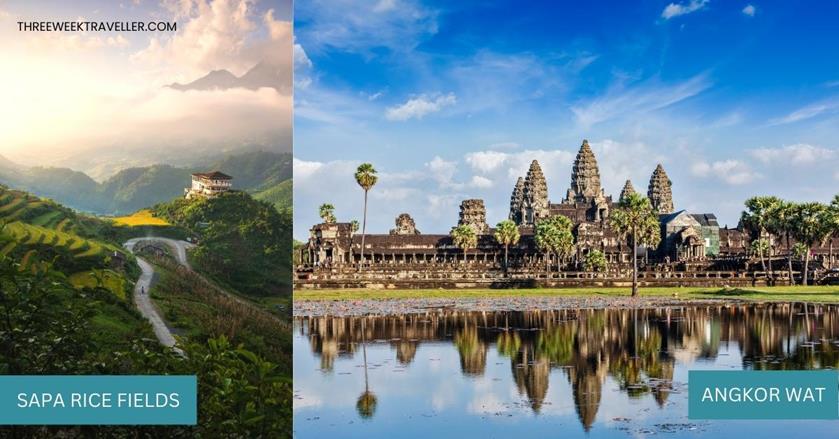

Cambodia (Phnom Penh) for 2 Days
Phnom Penh is a hub for both the Khmer empire and French inquisitors. It is also one of the busiest capitals of Cambodia. The place is considered a Gem of Indochina because three rivers merge and pass through Phnom Penh. The city still receives a lot of commendations from tourists for its charm of numerous places to see.
You can stay for a while and mesmerize by the Royal Palace, Tuol Sleng, Wat Phnom, National Museums, Theatre Shows, and many more. Around the market are vendors selling hand-made and locally created crafts of carvings, paintings, silks, silver, gems, and antiques — a perfect spot to buy personal collections, key chains, souvenirs, and gifts.
MOVING AROUND : You can get to Phnom Penh by taking a flight from Da Nang . You can also travel on land by taking a train from Da Nang to Ho Chi Minh City then taking a 6-hour bus to Phnom Penh . But this will easily take 1-2 day travel time.
Siem Reap and Battambang for 5 Days
Siem Reap is the gateway to the magical and mesmerizing Angkor Wat of Cambodia, easily one of the most popular temples in Southeast Asia . Angkor Wat is one of the most massive religious monuments in the world. The site has around 162 hectares, which can be tiring as you walk, duck, temple hop, and learn more about the ancient temple ruins.
Aside from Angkor Wat, Siem Reap extends its myriad cultures to its night market, floating village, landmine museum, old market, Cambodian circus, and many more. You have enough time to cover Angkor temples and other attraction sites in three days.
MOVING AROUND : The travel time between Phnom Penh and Siem Reap is about 5-6 hours by bus for $10-$15.
Itinerary #2: Thailand + Cambodia
Thailand and Cambodia are also the right combinations of destinations for staying 3 weeks in Southeast Asia. They are both Buddhist kingdoms with extraordinary wonders. Thailand is in northern Cambodia and can easily be traversed by air or crossed by land. Tourists may want to consider heading first to Thailand and end the trip on Cambodia’s cheaper and solid beach party vibes.
Thailand may be wealthier and more well-developed than Cambodia. Still, there is so much to experience, like the hidden culture of the Khmer Rouge and its dark ruling of the country. It’s also where you will see the awe-inspiring Angkor Wat.
MOVING AROUND : You will mostlikely arrive in Bangkok, however, I recommend you take a flight right away to Krabi/Phuket. You can explore Bangkok later before you go to Cambodia.
CHECK-OUT: How to spend 3 weeks covering Vietnam, Thailand, and Cambodia
Krabi/Phuket for 4 Days
Krabi is a place perfect for making the 4th day out of 3 weeks in Southeast Asia. Krabi is also close to Phuket, which means you can pretty much explore both areas during your trip. It sprawls on a resort town near Andaman Coast.
Imagine a place crowded not by people but by limestone karsts, islands, white sand, and mangrove forests, and it will make time fly.
Beach bumming, island hopping and snorkelling are some of the best things to do because Krabi offers countless islands. Rent a motorbike to move around the islands and do your own sightseeing.
You can instantly visit four islands named Tup Island, Chicken Island, Poda Island, and Railay Phra Nang Cave and Beach, on a single boat trip. There are also underrated destinations in Krabi: Emerald pool, Pa Phru Tha Pom Khlong Song Nam (Mangrove Reserve), and Khorana National Park.
Chiang Mai and Chiang Rai for 4 Days
Chiang Mai is a city on the high side of northern Thailand. Being at the top of the mountains emerged the independent kingdom of Lanna until 1558. Here you can witness the Doi Suthep, a hill with an incredible view of the city. Surrounding the area is the 13th-century temples and the birthplace of the elephant shrine.
You can also visit Doi Inthanon National Park, Thailand’s highest mountain. The Mae Ping River is also where tourists can enjoy a boat trip that heads to traditional teak houses, rural greeneries, and a meadow of jasmine rice. You can also stop and swim in their own Grand Canyon.
Moving around : There are direct flights from Phuket/Krabi to Chiang Mai . The flight time is about 2 hours. You can take a bus as well, but that will nearly be around 24 hours.
Bangkok for 3 Days
Bangkok attracts millions of tourists each year and garners the reputation of being a city with a culture that meets modernity. Lively nightlife is what usually comes to our minds when Bangkok is in question.
Tourists also come and go to experience their large floating and night markets. They are also proud of the architecture of the Temple of Dawn and The Grand Palace. Plus, cruise your night on the Chao Phraya River – the city’s lifeline.
MOVING AROUND : The bus between Chiang Mai and Bangkok will take around 9-10 hours. Plan to travel overnight to save time. You can also take a direct flight instead, which is affordable and more convinient. Another option is by train, but it’s no cheaper than flying.
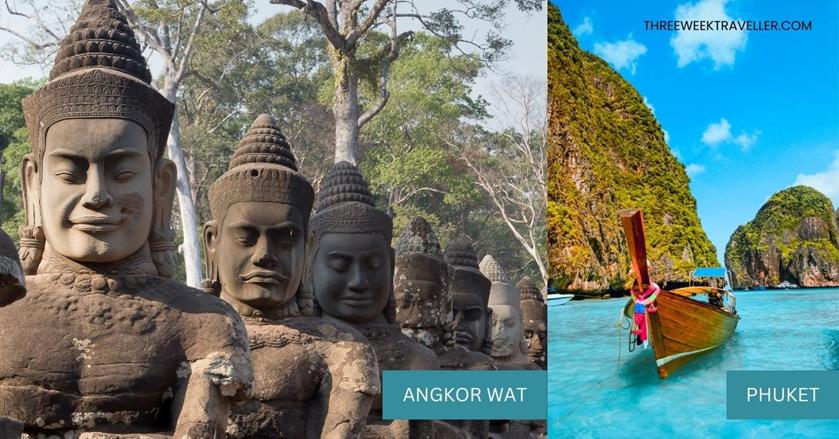
Siem Reap (Cambodia) for 3 Days
Three days is good enough to drench yourself with the wonders of Angkor Watt and bizarre places like the Bayon and its smiling faces. You can also visit the 10th-century Cambodian temple made for the God Shiva. It is also good to make a side trip to the temples overgrown with trees (Ta Prohm Temple).
If you want more adventure, consider renting a bike and making your way to the Tomb Raider temple. Some also suggest going around 4 pm to witness the sunset from Phnom Bakheng.
MOVING AROUND : You can take a 6 to 7-hour sleeper bus from Bangkok to Siem Reap for $40. A direct flight is only an hour trip and usually costs $100-$140.
Phnom Penh for 2 Days
Phnom Penh will take you to the Royal Palace, the landmark of the hustling capital city of Cambodia. The city is glorious for its harrowing tourist sites, such as the killing fields of Choeung Ek, Tuol Sleng Genocide Museum, and Throne Hall.
Phnom Penh is also famous for travellers with a touch of artisans. Many galleries include Kbach Arts, Long After Dark, House of Scott, Ambre, Artisans Angkor, and Ramayana Mural.
MOVING AROUND : The bus travel time between Phnom Penh and Siem Reap is a 5-6 hours. There are also direct flights which will only take an hour.
Sihanoukville and Koh Rong for 4 Days
After Phnom Penh, you can head over the coasts of Sihanoukville. They are known for tourists wanting to have the perfect ending to a trip. Here you can chill and rest on numerous beach resorts and island hopping. Sihanoukville is also known as the jumping point for the island of Koh Rong.
Koh Rong is an island with a dense jungle with all the definitions of perfect island life. The island itself has a tremendous amount of palm trees and a decent number of waterfalls. Long are the days that you get bored in Koh Rong.
Many outdoor activities are emerging today, including adventure parks, beach parties, snorkelling, diving, kayaking, and many more.
INFO: You can honestly skip out on Sihanoukville unless you like casinos. The beach here is not the best, although you have to get here to take a ferry to Koh Rong.
MOVING AROUND : Phnom Penh to Sihanoukville is only 4-5 hours on a bus . You will have to take a boat to get to Koh Rong. When you finish your trip, you will either have to make your way back to Phnom Penh or Siem Reap to take your flight to the next destination/back home.
ALSO CHECK: Our itinerary for 3 weeks in Thailand only
Itinerary #3: Thailand + Myanmar
There are thousands of reasons to explore Thailand, but adding Myanmar to your Southeast Asia destination can be as thrilling as ever. Myanmar is sheltering one of the most abundant archaeological sites in Southeast Asia. And when you’re coming from Thailand, you can take advantage of the border crossing with more relaxed visa restrictions.
Backpackers always trust Thailand to be a place that doesn’t falter when it comes to admiring and shocking tourists worldwide. Undoubtedly, once you’ve cruised on the River of Kings, haggle with the locals in the famous floating market and immerse yourself in cultural and Buddhist experiences.
Thailand Southern Island for 4 Days
You can choose between Phuket, Krabi, Koh Phangan, Koh Tao. and Koh Samui. All of these southern islands will bring your sandy white beaches, spectacular diving and snorkelling spots, and of course, fantastic parties.
Bangkok for 3 Days, Applying for a Visa to Myanmar
They say that Bangkok is a city where you never get tired of visiting. There are so many activities to do, and the city never sleeps! You can always find something new to do. It was one of the world’s most visited cities in 2018.
Bangkok dominates these recreational activities if you’re into shopping, street food tasting, embracing the culture, sightseeing, and nightlife. Bangkok’s highlights include its floating market, the Reclining Buddha, Grand Palace, Chatuchak Market, Baiyoke Tower, and Wat Arun.
Before you start exploring this city, collect your documents and apply for a visa to Myanmar. Some nationalities may not need to do this, but it’s easy and pretty affordable if you do.
It takes a few days to process; hence, you should start your application before heading to Myanmar, especially if you are planning to cross the land border. For those flying in, you can apply for the visa online.
Chiang Mai for 3 Days
If you’ve been exposed to the cities of Thailand for quite a while, you may want to consider heading to Chiang Mai, located on the steep side of the country. It’s a place of countless mountains and hill tribes with endless sceneries fantastic for travellers who love outdoor trekking, sightseeing, and embracing Thailand’s urbanity.
Through time, the evolution of Chiang Mai paved the way for such incredible architecture inspired by ancient temples and Buddhist culture. You can also visit Wat Phrathat Doi Suthep, Wat Chedi Luang, Wat Phra Sing (Gold Temple), Doi Suthep, Pui National Park, Chiang Mai Zoo, Night Safari and Bazaar, and a lot more.
MOVING AROUND : You can book a 9-10 hours bus for $25 , but it’s better to fly for $40 . You have to pay an extra fee for your check-in bag if you book a budget airline tho. The travel time is 1 hour and 15 minutes. You can also take the train which is slower than the bus, but more comfortable.
Cross the border to Myanmar and Head to Yangon for 2 Days
From Chiang Mai, you should make your way to the Mae Sot border. Get your Thailand exit stamp, walk to the Myawaddy border, show your visa, fly out of Myanmar ticket, and get your entry stamp. Walk a little further until you reach the town/market. You should be able to find a bus that will take you to Yangon.
Yangon or Rangoon was Myanmar’s former capital. Today the capital city is called Naypyitaw, which is North of Yangon.
There are many things to do in Yangon, but first, get yourself a local sim card if you don’t have data for roaming. This will help you get around Myanmar a little easier.
While in Yangon, visit the Shwe Dagon Pagoda and experience Yangon Circular Railway, a train system that goes around the city. After a long day, head down to the market and try out some unique Burmese dishes.
MOVING AROUND : From Chiang Mai, head to either Mae Sai Border or Mae Sot (closer to Yangong) – both are 5 hours from Chiang Mai. You should be able to find a bus from city centre or ask your accommodation receptionist. These buses cannot be booked online and only goes a few times a day. From the border, of Myawaddy, there should be a bus or minivan to Yangon, or you can take the minivan to Mawlamyine, then get on another van/bus to Yangon. Most accommodations/transporation for Myanmar cannot be booked online. It’s an old school style of travel where you simply arrive and look for a place to stay.

Bagan for 2-3 Days
Bagan has this magnificent view that many travellers dream of exploring. Being one of the most preserved archaeological sites and a class of thousands of temples. Bagan is a protected site and requires entrance fees for non-citizens.
The tangerine sunset over Bagan has gone to bring more peace and love to each other. It’s maybe why crimes in Bagan are never unheard of and rare. Aside from marvellous temples and the remarkable sunset. You can also set off to Nan Paya, a shrine that was once used as a prison.
MOVING AROUND : There are plenty of buses from Yangong to Bagan. One thing to remember though, you might be asked to pay for your entrance fee while in the bus as it enters the protected area of Bagan. Keep your ticket, as this will be asked a few times whenever you enter a pagoda or temple around Bagan.
Kalaw for 1 Night
Personally, I didn’t have time to explore Kalaw. For many, this is the gateway to a great hike to Inle Lake. The famous trek from Kalaw to Inle Lake lasts about 3-4 days. I recommend you spend one night here to find the best-guided hike for you and prepare for a long trek ahead.
Your tour guide will manage the rest of your luggage, but before that, pack a piece of luggage that will be enough for you during the hike since you won’t see the rest of your stuff until you reach Inle Lake.
MOVING AROUND : from Bagan to Kalaw, you can take a bus or minivan, the travel time is around 6 hours.
Hike from Kalaw to Inle Lake and Explore Inle Lake for 3-4 Days
The hike from Kalaw to Inle Lake can be reached within 3-4 days of transiting on foot. And it’s not that far, just kidding, it’s 61 km away! You may think that it’s not possible or only soldiers can make the trail, but trust me, it’s one of the unique culture enlightening multi-trek you’ve been longing for.
However, the good news is that the trek doesn’t have extreme altitude or extreme high-end trails to tackle. It’s a trek to the hilly countryside on a mud trail that takes you to bamboo forests, orange plantations, tea bushes, and hill tribes, where you can spend the night with fellow hikers. You’ll also get to enjoy and embrace the vibes of the village people and the simplicity of their lives and enjoy local dishes.
MOVING AROUND : Take a bus back to Yangon from Inle Lake if you need to catch an internatinal flight out of Myanmar. You can also take a bus back to the border if you want to cross back to Thailand by bus.
Itinerary #4: Philippines
3 weeks in Southeast Asia itinerary is not complete without visiting the magnificent islands that make up the Philippines. With 7,000+ islands and mountainous regions, you can enjoy high mountains and sunny beaches. >> Related post : 3 weeks in the Philippines itinerary
Manila for 1 night
For foreign travellers wishing to travel to the Philippines, you should make Manila a transit hub. Manila may strike you with disappointments; it’s crowded, hot, and doesn’t have that much to offer to the tourist. Although it’s a bizarre journey, airports in Manila can take you to almost all of the places in the Philippines. This is also where you can get local currency and purchase a local sim card with mobile data.
As awful as it sounds, the Philippines doesn’t have the best design for transportation. If you plan to get from A to B, you will most likely connect in Manila if you don’t plan properly. This is why you should carefully write your 3 weeks in the Southeast Asia itinerary when exploring the Philippines.
MUST-READ : The first thing you should do is to choose between exploring the country’s mountains where you can hike or head down to the south where you can soak up to its beaches and do some diving and boat tours. Below, you can see which one is more suitable for you.
Baguio, La Union, Sagada, Mount Pulag for 1 week
Baguio, La Union, Sagada, and Mount Pulag are the only place in the Philippines where you can experience cold temperatures throughout the day and are located in the northern part of the country. Baguio is an independent city prosperous with traditional arts.
You can spend one day touring around Mines View, BenCab, Botanical Garden, Burnham Park, Diplomat Hotel, and The Mansion.
Mt. Pulag is the highest mountain in Luzon, and the summit can be reached in 4-7 hours. You’ll be mesmerized by the sea of clouds once on top. And if you are craving more tropical, going to La Union is the beachside of Luzon. If you’re not into hiking, you can skip Mt. Pulag, and if you’re not into surfing, you can cut off La Union.
Sagada, however, is a must destination to be when you’re already in the northern part of Luzon. If you’re the kind of traveller who loves traditional tattoos, lead yourself to Whang-Od, a 100-year-old headhunter, a famous traditional tattoo artist amongst local and international tourists.
MOVING AROUND : From Manila, you will be travelling by road most of the time to visit the northern part of the country. You will then make your way back to Manila to catch your flight to Indonesia which will cost around $70 for one-way.
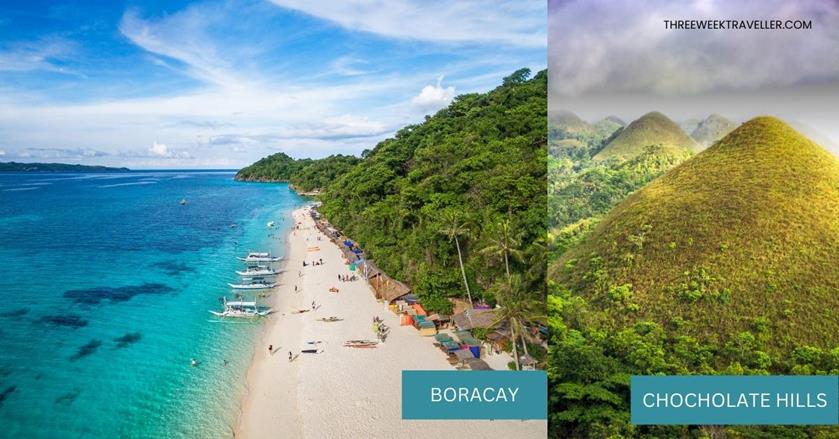
The Visayas Trail (Cebu, Oslob Dumaguete, Siquijor, Panglao, Bohol) – 10 Days
The Visayas is a region that consists of seven large islands and hundreds of islets. This is a place where the gems of the Philippines are settled. From Manila, fly over to Cebu and be charmed by the Magellan’s Cross and Fort San Pedro. Once you’re in Cebu, direct flights to Oslob, Dumaguete, Siquijor, and Bohol.
Oslob is a perfect getaway for tourists wanting to swim with underwater creatures. From here, go to Bohol and admire the famous Chocolate Hills, Panglao Island, Hinagdanan Cave, and Alona Beach. And also, from Bohol, you can take a ferry heading to Siquijor. It’s one of the best islands of Visayas with barely touched natural attractions, waterfalls, beaches, caves, cave pools, butterfly sanctuaries, and beautiful white-sand beaches.
You can also fly to the province of Dumaguete and rush over and check out one of the active volcanoes of the Philippines, Mt. Kanlaon. Dumaguete is also famous for Siliman University- the oldest university in Asia, founded by the Presbyterian Board of Foreign Mission of the USA.
MOVING AROUND : You can take a direct flight from Manila to either Cebu, Panglao, or Dumaguete and start your trip theere. You can also finish your trip in either of those cities and take a flight back to Manila to catch your plan to Indonesia.
Palawan or Siargao for 4 Days
You can also fly to Palawan or Siargao from Cebu and experience a world-class island beach on Kayangan Lake, Coron, El Nido, Port Barton, and tons more. Palawan is an island in the Philippines famous for its crystal-clear water and the underground river in Puerto Princesa. In 2012, the global community cast a vote and made Palawan the first place in the Philippines that garners the title of the New 7 Wonders of the World.
If you’re into surfing, Siargao can offer you Cloud 9 and Quicksilver, a tropical island paradise home for surfers. Meanwhile, you can always chill on this bizarre Naked Island, which got its name because there’s no shade once you get there, except only the exceptional white sand and crystalline water. You can’t escape from the bliss and extreme euphoria once you experience the numerous attractions in Siargao.
MOVING AROUND : There are direct flights from Manila to Palawan (either to Coron, El Nido, or Puerto Princesa) and Siargao. The travel time is between $100-$200 one-way.
Itinerary #5: Indonesia
Three weeks is never enough to take a trip and delve into all the 17,000 islands of Indonesia. However, I’ve listed places that demand to be travelled when planning to fulfil your vacation in this beautiful country. One should visit Indonesia, which includes its vast culture, exotic animals, and a bulk load of exciting experiences to offer. >> We have a specific 3 weeks in Indonesia itinerary
MUST-READ : Just like the Philippines, when visiting Indonesia, it’s best to focus your time to one region and make the most out of it. You should be able to find a flight out of Manila to Jakarta or Bali (Depansar).
Focus on Java Only for 10 days
Java is the heart of Indonesia, and three weeks itinerary will feel like just a couple of days. You’ll enjoy everything from the UNESCO World Heritage Sites, the city of Surabaya, Borobudur Temple, Anyer, Candi Prambanan, Batu Karas, Bogor, and the seaside of Pangadaran.
And if you want more activities besides seeing antiquity, hike on Mount Bromo, Mount t Ljen, and visit waterfalls such as Baturaden.
Java is known to combine Hindu, Buddhist, Islamic, and the Dutch East Indies. So, expect to see different characteristics of temples and diverse cultures. It’s also one of the most populated islands in Indonesia, but worry not, and there are plenty of places to crash.
From Surabaya, you can make your way to Mount Bromo, an active volcano. From here, you should be able to hike Mount Ijen as well.
MOVING AROUND : If you end up in East Java near Mount Ijen, you can take a bus to Bali Island, but also requires a boat transfer. If not, it’s best to take a domestic flight to Bali (Ngurah Rai International Airport DPS), the ticket will costs $40 or more depending on your luggage.

Bali Island and Lombok Island for 10 days
Meanwhile, Bali is an Island with underlying volcanic mountains, beaches, and coral reefs. They also have the best cliffside infinity pools overlooking the Indian Ocean.
And also, these are the places you may want to visit on your 3-week itinerary; Gili Islands, Mrs Sippy, or the largest saltwater pool in Bali, Tanah Lot Temple, Kelly’s Warung, Tegenungan Waterfall, Bali Swing, Bingin Beach, and Nusa Penida.
Are 3 weeks Southeast Asia itinerary even justified without a visit to the famous island of Bali? And one of the most efficient ways to get to each corner of Bali is by renting a scooter. It is common transportation used by tourists to go wherever their heart desires.
Apart from heading to top destinations, you may also want to witness their culture naming a few; the Kecak Fire Dance, Canggu Foodie, Ubud Art Culture, and Puru Ulun Danu Bratan. You should check out our 3 weeks in Bali itinerary .
MOVING AROUND : There are a lot of boat tours and day trips from Bali to Lombok Island, but you can also get on a boat and stay in Lombok for a few days.
Itinerary #6: Malaysia + Singapore
These two countries are perfect for 3 weeks in Southeast Asia. They share a land border, and the capital cities fly to Europe and North America directly. This means that you can fly into and leave the region back home much easier with fewer connecting flights to take.
Firstly, it’s always better to head first to Singapore and stay here for a while. You can visit Chinatown, Gardens by the Bay, Marina Bay Islands, Sentosa Island, and the Orchards. Once you’ve got enough of Singapore, take your journey to northern Malaysia (Langkawi) and eventually end up in Thailand if you still have more time.
It may take 5-7 hours of transit, and a train company runs between Kuala Lumpur and Singapore. However, there is no point-to-point from Singapore to Kuala Lumpur. So, expect train and bus hopping when crossing the borders.
>> CHECK OUT : 3 weeks in Malaysia and/or 2 weeks in Malaysia and Singapore
Singapore for 5 days
Singapore is a small country, yet it doesn’t stop visitors from anywhere in the world from visiting this place at least once in their lifetime. Most of Singapore’s top attractions rely on modern and futuristic architecture. The country also has one of the best public transportation in the region, making it so much easier to explore, and the locals communicate in English very well.
Spending 5 days in Singapore out of 3 weeks in Southeast Asia is much more than you need. But it will allow you to travel slowly and meet locals. If you would rather cut it down to 3 or 4 days, that works too, and you can add that extra day somewhere in Malaysia.
MOVING AROUND : You can get to Melaka (Malaysia) by crossing the land border between the two countries. The journey time is abour 3-4 hours on a bus .
Melaka (Malaysia) for 2 days
Melaka is a coastal town north of Singapore. It’s a city with well-preserved colonial architecture and spectacular places of worship for Christians, Catholics, and Muslims. The best way to travel around Melaka is by renting a push bike.
If you want to skip this city, you can simply book your bus directly to Kuala Lumpur or take a direct flight. You can instead switch Melaka with a visit to Cameron Highlands if you like coffee, hiking, and tea.
Kuala Lumpur for 3 days
Kuala Lumpur (KL) is the capital of Malaysia. Famous for its skyscraper twin towers and fantastic shopping malls. It’s also home to the colourful stairs that lead to Batu Caves. KL has a great mini forest in the heart of the city, offering a nice spot if you want to get away from the hustle and bustle of the city.

MOVING AROUND: From Melaka, you can get to KL via bus that travels for 2-3 hours. You can also rent a private car with a driver, the journey is only 2 hours. Geting around Kuala Lumpur, you can either take the reliable train and buses. You can also use ride-hailing apps such as Grab, inDriver, and MyCar.
Penang for 3 days
Penang is the food capital of Malaysia. Its diverse culture comes with incredibly diverse cuisine. You’ll see and taste dishes from China, Malay, South Asia, and other parts of East and Southeast Asia. Apart from mouthwatering dishes, Penang is also famous for its street art, which is in 3D.
The local government of Penang wanted to showcase its diversity through its food, architecture, and people and through art. These paintings replicate the daily life in Penang and share it with its visitors.
MOVING AROUND: You can hop on a direct flight from Kuala Lumpur to Penang for $15-$25. You can also opt for taking the bus which is a 4-5 hours drive. But if you choose to visit Cameron Highlands, it’s 5-6 hours on a bus.
Langkawi for 3 days
You have seen the tall buildings and tasted the best dishes in Malaysia. It’s not time to see its beautiful beaches with affordable chocolate, alcohol, and accommodation.
Langkawi is a duty-free island in the north of Malaysia near the border with Thailand. Duty-free means all the international products sold here are much more affordable. Compared to other parts of the country, alcohol is much cheaper here as well, and accommodation costs are more affordable.
MOVING AROUND: Getting to Langkaw from Penang is quite fun. You will have to take the ferry for 3 hours. You can also take a direct flight between these two islands. Once you arei n Langkawi, it’s best to rent a motorbike to chauffer yourself around.
Perhentian Islands for 4 days
Perhentian Islands is the main pride of Malaysia’s mainland regarding pristine beaches. This paradise has been famous amongst local and foreign visitors for decades now but has managed to stay “rural” in many ways.
This destination is perfect if you’re looking for a low-key spot to enjoy the beach and water activities.
MOVING AROUND: Reaching Perhantian Islands is a bit more complicated. The easiest way to take a flight Kota Bharu or Terengganu from Langkawi (which connects either in Penang or KL). Then, you must take a minibus or minivan from the airpor to Besut. And finally, take a ferry to Perhentian Islands.
Itinerary #7: Vietnam + Laos
Vietnam with Laos itinerary is an excellent Indochina trip and 3 weeks in Southeast Asia destinations since they share a land border. Vietnam to Laos and vice versa can be travelled via land. Travelling through these two countries means you will do lots of fantastic hikes, visit pagodas, and learn about the culture and differences between the two places.
Vietnam is much more touristy than Laos. Many people go to Laos to enjoy its serenity. It’s the ideal destination if you want to be around nature but will find places to meet other travellers and share stories with them.
If you’re checking the Indochina map right now, Vietnam and Laos are near each other, but it can get exhausting once you make the trip. It’s either you fly or make it by bus. The drive takes around 27 hours, so prepare yourself physically and keep your patience intact. You can also cross the border with your motorbike (read below).
At the present moment, there are six border points, and each route has its unique policies. The chances of getting bored on the bus journey are high. It is advisable to bring something you’re comfortable doing just to pass the time. Roads can be bumpy, and most buses don’t have cushions, so bring your commuting gear with you.
MOVING AROUND: If you are travelling with a motorbike (let’s say you bought one in Vietnam for this trip), you can bring that to Laos. The borders you can check are Cha Lo Bordergate (near Dong Ha), La Lay Check Point (near Hue), and Bo Y Border Gate (near Pleiku). Not all borders will allow you to bring your motorbike, but the hotel you’re staying or people who work at hostels will know the most updated information). The border in the northern part of Vietnam can be more confusing to cross and the journey is often longer due to crossing through the moutains.
Choose between North + Central Vietnam or Central + South Vietnam for 10 days
Take a look at our Itinerary #1. It has an intensive description of Vietnam that will help you decide which part you want to visit.
To give you a quick idea, the north of Vietnam is more traditional than the south. If you want to see Hanoi, Halong Bay, Sa Pa, and Ninh Binh, you definitely want to go to that region.
On the other hand, the south of Vietnam is known as the business region of the country, and the culture is a little more liberated compared to the north. The top destinations in the south are Ho Chi Minh City, Dalat, Nha Trang, Mui Ne, Mekong Delta, and Phu Quoc Island.
The Vietnam central region is an excellent choice for its hiking trails. Go to Phong Nha or explore the most extensive cave system in the world – Son Doong. The cities of Hue, Hoi An, Da Nang, and the famous Hai Van Pass are the must-see spots in this region.
MOVING AROUND: You will likely land in Hanoi or Ho Chi Minh City. If you finish your Vietnam trip around the central region, you can either cross the border to Laos by bus or motorbike. You can check if there are flights from Da Nang to Vientiane or Pakse .

Vientiane (Laos) for 2 days
Vientiane is the capital of Laos, however, compared to its neighbouring capital city, it offers a more rural and scenic view. As you wander through Vientiane, you’ll notice how many buildings are designed with traditional architecture.
Of course, you will see modern buildings, but this Laotian city has no towering skyscrapers. Most buildings are low-rise which is usually developed as luxury hotels or shopping malls.
The city crawls with Buddhist temples, French colonial architecture, matched with slow-paced life. Laos generally doesn’t get as many tourists as the other Southeast Asian neighbours. Due to the lack of tourism presence, it’s the perfect place to go if you want to be close to nature, learn more about this quiet city, and find tranquillity.
Vang Vieng for 3 days
Love thrilling adventure? Vang Vieng is the place for you. Book a trip with tubing, zip lining, rock climbing, rapelling, and kayaking. This little town also has many caves, so you must have a caring experience where you can explore different caves with a knowledgeable tour guide.
Spend your last day relaxing. Vang Vieng is a laid-back destination where most people simply enjoy the scenery, good food, and quiet atmosphere that is now a rarity in Southeast Asia tourist trails.
MOVING AROUND: There are minivans you can take from Vientiane to Vang Vieng for only $11-$15. The travel time is around 1 hour and 30 minutes to 2 hours.
Luang Prabang for 3 days
Luang Prabang is a city in the north of Laos which is also the first major city you’ll see if you are crossing the land borders from Vietnam and Thailand. Luang Prabang is known for its lively night markets, dazzled by unique and affordable handicraft products and traditional Laotian snacks and dishes.
If you’re a morning person, you’ll notice a daily routine of monks walking the streets to receive offerings and alms from the locals (although you are more than welcome to give as well). This is called alms giving ceremony, which the monks will take to the temple, offer a prayer to their ancestors, and give thanks for the blessings they received.
MOVING AROUND: There’s a train that you can take from Vang Vieng to Luang Prabang, the travel time will take abuot 2 hours nd costs $15 to $20 per preson. There’s also an option for a minivan, but it will over 6 hours.
Itinerary #8: Thailand + Laos – Hiking itinerary
Thailand and Laos are actually quite popular destinations to combine for 3 weeks in Southeast Asia. This trail is suitable if you love hiking because you can travel from Bangkok to Chiang Mai and then to Chiang Rai. From there, you can cross the border to Laos by land and boat.
Chiang Mai and Chiang Rai are great hiking regions in Thailand, while Laos generally has many national biodiverse conservation areas and parks open for hiking.
Bangkok for 4 days
Four days in Bangkok is ideal. You can visit the must-see temples and pagodas, explore the floating market, and go on a food adventure. If you love parties, Khao San Road is just around the corner. You can also use it to plan how you want to get to your next destination.
Chiang Mai and Chiang Rai for 5 days
Chaing Mai and Chiang Rai are both great locations for hiking. But both also offer incredible cultural and historical sites for you to explore. Spending five days between these two amazing cities will be filled with exploring nature and learning more about Thai culture.
The most popular hiking trails in Chiang Mai are Doi Inthanon, Mae Sa Valley, Mae Sa Valley, Mon Cham, and Doi Suthep (an easy hike). For Chiang Rai, you can check out Phu Chi Fa, Mae Salong, Doi Chang, Khun Korn Waterfall, Chiang Dao.
Most of these hikes can be done in just a day, so you can choose between Chiang Mai and Chiang Rai as your base in northern Thailand. The tour agencies will also offer pick up and drop off from your accommodation.
MOVING AROUND: You can reach Chiang Mai in three different ways; by bus, train, and by air. The bus will take a bit over 9 hours, and the train journey is about 10 hours. Flying will be fastest and most convinient.
Cross the border to Laos (Huay Xai)
Now that you are ready to say goodbye to Thailand, it’s time to cross the border between Thailand and Laos. This is a famous border crossing, so you should not have difficulty finding a bus that will take you to the border.
Although there is a bridge between the two countries, you cannot cross it on foot. You can take a slow boat or book a car or bus to take you through the border gate. Taking the slow boat means you need a service from Huay Xai (Laos) to take you to Luang Prabang or other destinations you have in mind.
The visa for Laos is easy. Everyone can pretty much get a visa on arrival, which means all you need to do is show your passport, pay, and get on your trip. If you have a Thai driver, they get a free visa to cross back and forth without trouble.
TIP: Change all your Thai Baht on this border since it will be useless (or hard to convert) once you cross the border to Laos.

Luang Prabang for 4 days
Luang Prabang is also known for its stunning scenery. There are dense forests surrounding the city highlighted with magnificent waterfalls. This is a fantastic destination for hiking, wild swimming, or anything related to outdoor activities and nature.
When it comes to hiking, the popular areas are Kuang Si Waterfall, Pak Ou Caves, Mount Phousi, Tad Sae Waterfall, Nam Khan River.
Apart from that, you’ll also enjoy some French colonial architecture influenced by French colonialism. The Royal Palace is a great example which is now open to the public as a museum where you can learn about the story of Laos while under the colony.
If you have 3 weeks in Southeast Asia and enjoy exciting activities, then Vang Vieng is the place for you. Vang Vieng is a small town surrounded by towering karst mountains and lush jungles.
This is a destination known as “adventure tourism” because you can do plenty of exciting excursions such as tubing, rock climbing, kayaking, caving, and zip-lining through the forest.
For hikers out there, make sure to explore Pha Ngeun Viewpoint, Blue Lagoon 3, Tham Jang Cave, Pha Poak Viewpoint, and Pha Thao Viewpoint.
Due to its affordability, it’s also right along the backpacker’s trail. when you get here, you’d be surprised at how many people simply come here to lie on the hammock, read a book, sleep while surrounded by chirping birds and trees.
MOVING AROUND: The best way to get to Vang Vieng from Luang Prabang is by train. It’s only a 1 hour and 30 min to 2-hour trip. It’s the same cost as taking a 6-hour minivan which is around $20 per person.
Vientiane for 2 days
Spend your 2 days discovering hiking spots in Vientiante, which includes Chao Anouvong Park, Phou Khao Khouay National Protected Area, Nam Ngum Reservoir, Buddha Park, and Pha That Luang.
If you’re not tired of visiting temples and pagodas yet, Vientiane has many of them, making Pha That Luang the most popular and must-be visited. For those looking to buy souvenirs, head to the night markets to find vibrant options such as handicrafts and textiles at affordable prices.
You should also not miss your last chance to enjoy traditional Laotian dishes with a hint of French influence. There are cooking classes that you can sign up for, or simply join a food tour to learn more about Laotian cuisine.
Finish your trip to Vientiane, where an international airport is located. Although you can also cross the border to Thailand and head to Bangkok for more international flight options.
MOVING AROUND: You can take the train from Vang Vieng to Vientiane, the journey time is 2 hours for $15 or take a minivan for 2 hours and 30 minutes for $10.
Itinerary #9: Timor Leste + Brunei + Borneo
If you really want to max out your 3 weeks in Southeast Asia itinerary, Timor Leste, Brunei, and Borneo trio are the one for you. Timor Leste and Brunei are some of the most overlooked destinations in Southeast Asia. One of the reasons is that Timor Leste just gained independence in 2002.
Its geographical location is spread over four different seas. However, it begins to show tourism potential. And the remnants of the resistance to the Indonesian occupation have also attracted many travellers.
Borneo is a big island in the heart of Southeast Asia. It’s divided into three countries; Malaysia (northern region, Brunei, and Indonesia (southern region. It contains the oldest rainforest in the world, with 140 million years of existence.
It’s a home for much-endangered wildlife, which appeals to many conservationists. It also opens the doors of interest in travelling to Brunei, with some of the best Islamic infrastructure and architecture.
Make sure to go to Sandakan, where you can see the unique proboscis monkeys. Northern Borneo is also where the national flower of Malaysia, called “rafflesia”, can be found. Go to Turtle Island in September/October, which is the hatching/freeing season of turtles.
MOVING AROUND: When it comes to Borneo, taking the bus is the main mode of transportation. There are also options to take a ferry such as between Labuan and Brunei. There are also flights you can take. Most are not direct flights and requires long connection though.

TOP THINGS TO DO AND SEE IN SOUTHEAST ASIA (by country)
This list of travel itineraries for 3 weeks in Southeast Asia is long enough that adding a mountainous list of must-do activities will be just too much. So below, I linked the separate itineraries per country to help you plan your trip better depending on the destination/s you have chosen.
- Brunei/Borneo
SUMMARY OF 3 WEEKS IN SOUTHEAST ASIA
Southeast Asia consists of 11 countries, three weeks will never be enough to visit all its magnificent corners. However, it doesn’t mean you should not go and travel here just because you have a limited time. You can start by choosing two countries and splitting your time. Perhaps you’ll like it, and next time you come back, you will visit two different countries.
I hope you found this 3 weeks in Southeast Asia itinerary helpful. I know it’s a long article, but I really just want to give a few samples of how you can create your own itinerary and max out your visit.
SAVE THIS TIP AND ITINERARY ON YOUR PINTEREST:

- Privacy Policy
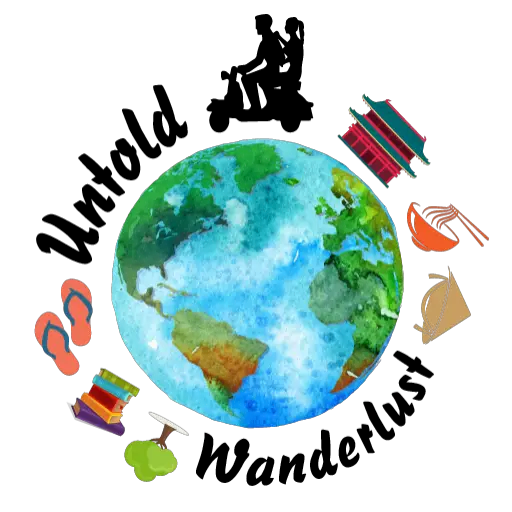
- Disclosure Policy
- Travel Tips
- 109 Genius Travel Hacks
- Teach Abroad
- Work With Us
Asia Guides
The most amazing 3 month southeast asia itinerary.
If you’re thinking of going on a backpacking adventure, Southeast Asia is a great choice. In fact, this fascinating region is a very popular choice for first-time backpackers, as well as avid adventurers. Coupled with the low cost of travel, incredible activities, and sights to offer everyone, you can’t go wrong. This sub-region boasts out of this world scenery, unique cultures, mouth-watering food, buzzin’ metropolitan cities, and heavenly tropical beaches. So, without further ado, let’s dive right into this 3 month Southeast Asia itinerary. We cover a whopping 8 countries, recommend the best route to take, how long to spend in each place, the must-see attractions, and give recommendations of where to stay.
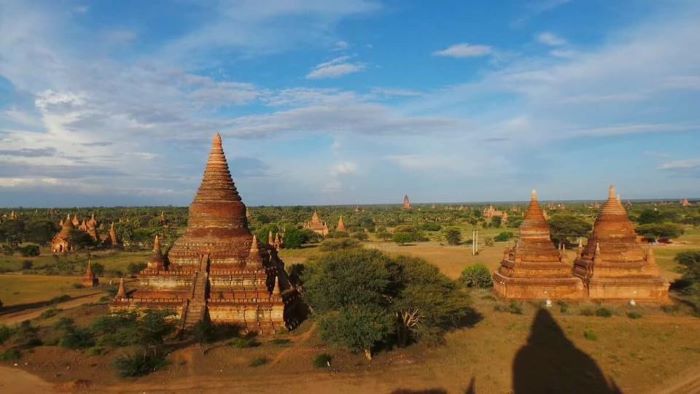
Disclosure: Untold Wanderlust contains affiliate links. If you click on these links and make a purchase, we will earn a small commission at no extra cost to you. You can find our full disclosure policy and privacy policy here.
Northern Thailand (13 days)
Bangkok (3 days).
This Southeast Asia travel route starts in the heart of Thailand; Bangkok.
How to get to Bangkok: This itinerary kicks off in the hustle and bustle of Bangkok. Bangkok boasts a large international airport, making it super easy and convenient for tourists to find cheap flights from places such as Europe or the USA. We recommend checking Skyscanner for the best deals and prices.
Top attractions:
The Grand Palace Wat Arun Shopping at Chatuchak Market Party on Khao San Road Taling Chan Floating Market Wat Samphan Temple (Pink Dragon)
Where to stay in Bangkok: Comfy Bed Hostel for a dorm, or Amarin Inn for a budget private room.
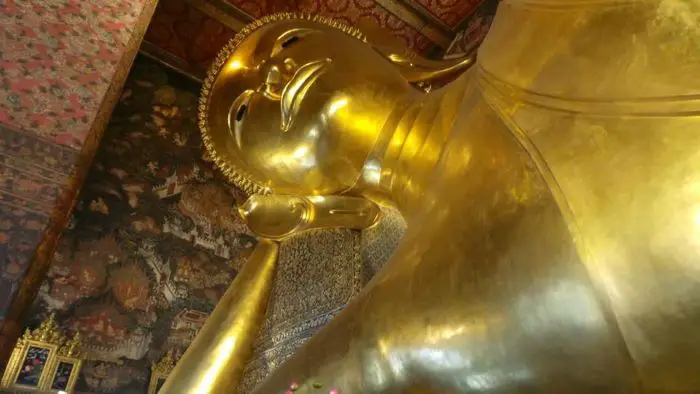
Ayutthaya (2 days)
How to get to Ayutthaya: 2-hour minivan from Moh Chit BTS Station in Bangkok. The cost is 50 Baht ($1.65). Or take a tour from Bangkok .
Ancient town Cycle ride around the temple complex
Where to stay in Ayutthaya: A cute boathouse with cheap double rooms, Ayutthaya Riverside House.
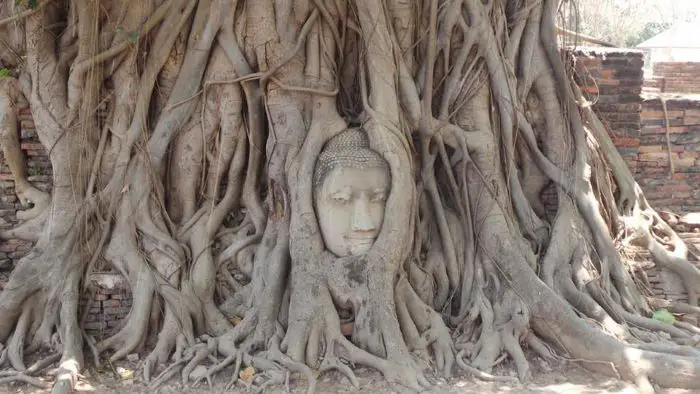
Chiang Mai (3 days)
How to get to Chiang Mai: A comfy 9-hour VIP bus for $24.
Wat Phra That Doi Suthep Temple Take a Thai cooking class Doi Inthanon National Park Eat at the night markets or take a food course and tour Go water crazy at the Songkran festival (April)
Where to stay in Chiang Mai: Red Brick Guesthouse for a dorm room
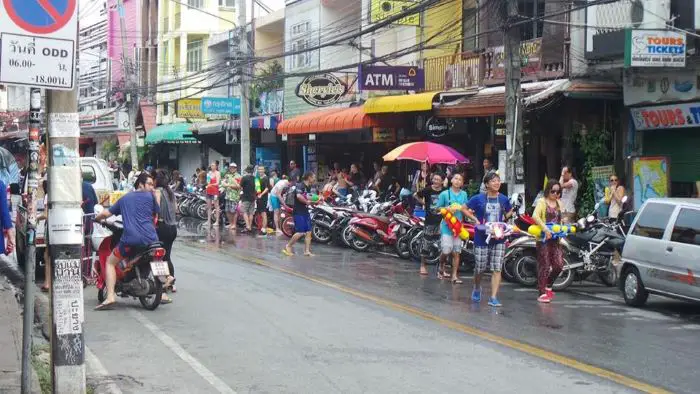
Pai ( 3 days)
How to get to Pai: Take a 3 hours mini-van ride for $6
Explore on a scooter Pai Canyon Pam Bok Waterfall Love Strawberry Farm Land Split Bamboo Bridge
Where to stay in Pai: Pai Loess Resort for a private double room
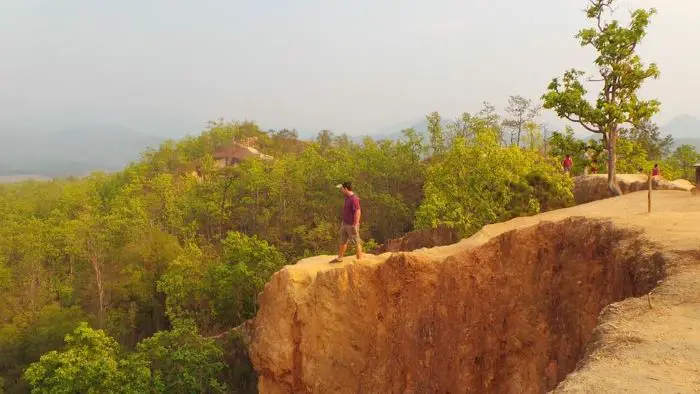
Chiang Rai ( 2 days)
How to get to Chiang Rai: 7.5 hours mini-van journey , costing $18
White Temple Black House Tea plantations Golden Triangle House of opium
Where to stay in Chiang Rai: Busket Hostel for a cheap modern dorm
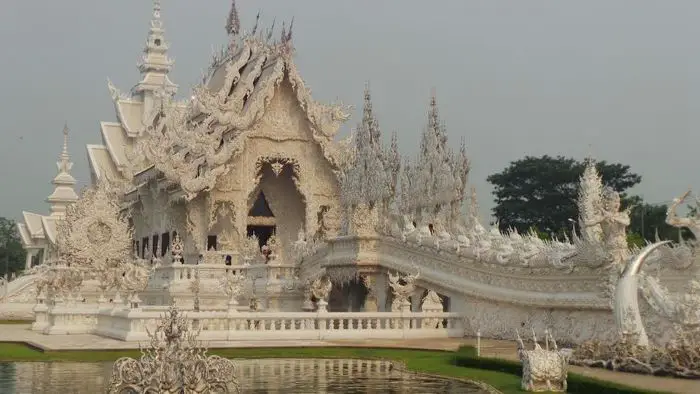
For a more detailed Thailand backpacking guide, don’t miss this post!
Laos (8 days)
Luang prabang (3 days).
How to get to Luang Prabang: 2-day slow boat from Chiang Rai
Kuang Si Waterfalls Watch the morning Tak Bat Phousi Hill & Temple Night market Late-night bowling alley
Where to stay in Luang Prabang: Sok Dee Guesthouse for a cheap cosy double room
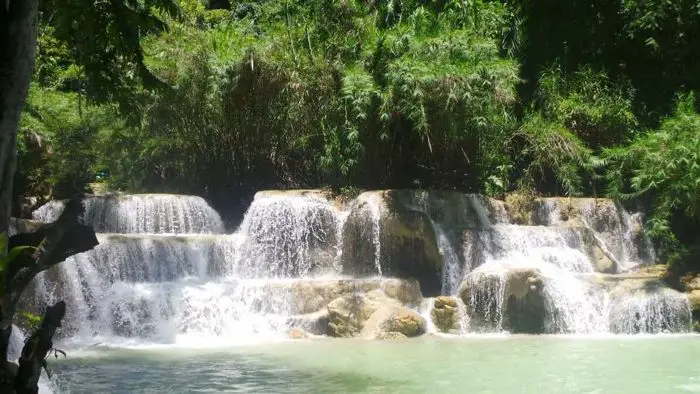
Vang Vieng (3 days)
How to get to Vang Vieng: 5-hour mini-van ride for $16
Tubing on the Nam Song River Blue Lagoon Phu Kham Cave
Where to stay in Vang Vieng: Faraway Suites for either a dorm room or a private room
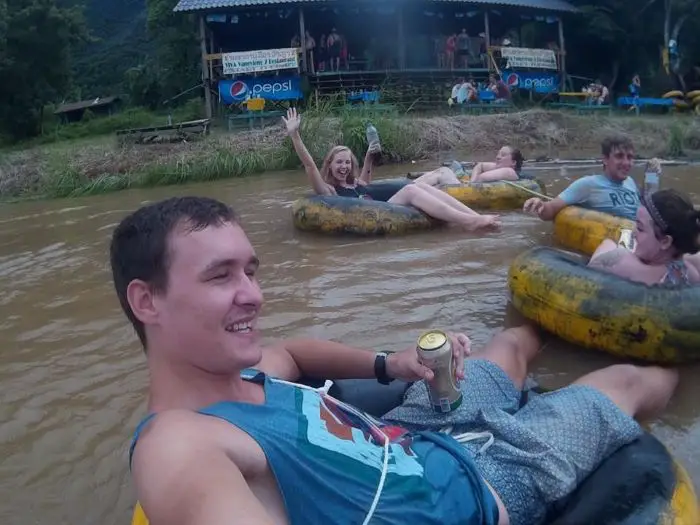
Vientiane (2 days)
How to get to Vientiane: 4-hour bus that costs $9
Explore the city by bicycle Buddha Park COPE Museum
Where to stay in Vientiane: My Box Hostel & Cafe , great value for money dorm rooms
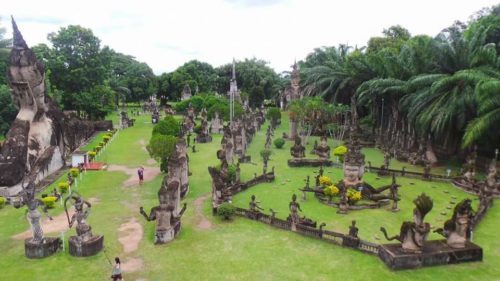
Don’t forget to check out our ultimate 2-week Laos itinerary here!
Vietnam (20 days)
Hanoi (3 days).
How to get to Hanoi: 22-hour sleeper bus that costs $32. This is a super long journey so you may prefer to fly instead.
Hoan Kiem Lake St. Joseph’s Cathedral Hoa Lo Prison Train Street Take a food tour Bia Hoi Street Hanoi Night Market Drink egg coffee at the Note Coffee shop
Where to stay in Hanoi: Nexy Hostel for a super clean, modern dorm
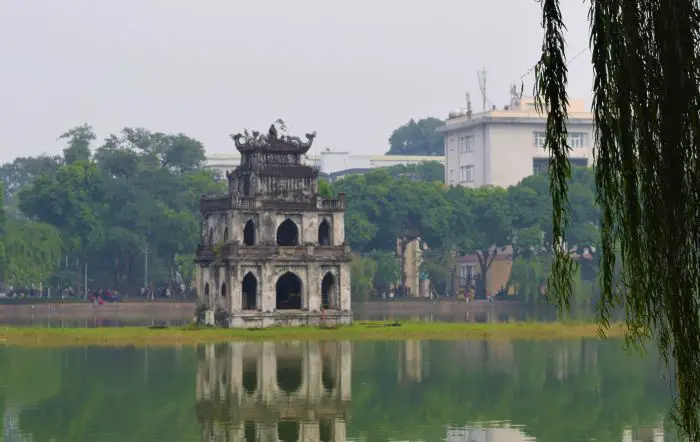
For more things to do in Hanoi at night, don’t miss this post!
Ha Long Bay (2 days)
How to get to Ha Long Bay: Scheduled tour from Hanoi
Limestone islands Kayaking
Where to stay in Ha Long Bay: On the boat.

Sapa (3 days)
How to get to Sapa: 6-hour bus for $12
Ride the Fansipan cable car Go on a trek through the rice terraces Meet H’Mong tribes Drink at the H’Mong Sisters
Where to stay in Sapa: Sapa Village Hotel for a modern stay overlooking the mountains
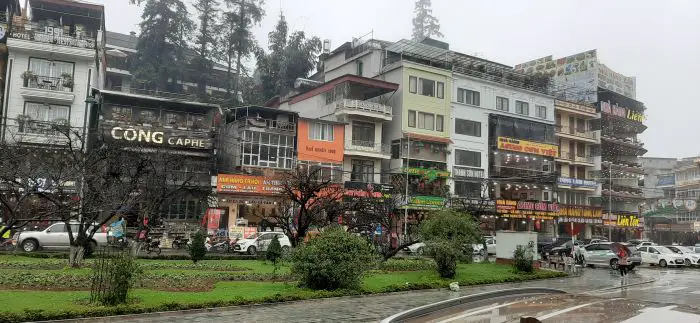
Ninh Binh (2 days)
How to get to Ninh Binh: 9-hour bus for $17
Cycle through rice paddies Eat at Chookies Hang Mua Caves Tang An boat ride Bich Dong Pagoda
Where to stay in Ninh Binh: Amira Homestay for a cosy stay & free bicycle rental
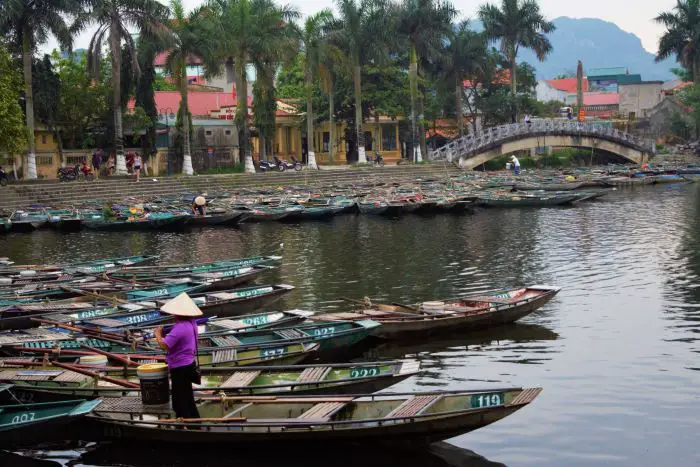
Hue (2 days)
How to get to Hue: 11-hour bus for $14
Old Citadel Abandoned water park Thien Mu Pagoda
Where to stay in Hue: Bon Ami Hostel for cheap private rooms in a central location

Hoi An (4 days)
How to get to Hoi An: Ride the Hai Van Pass
Cycle around the old town Take a boat ride Shop for lanterns Stroll around the rice paddies Go shopping for lanterns Take a day trip to Ba Na Hills Eat Cao Lao noodles
Where to stay in Hoi An: The Serendipity Hostel for a dorm bed, or Aroma Homestay & Spa for a budget private room.
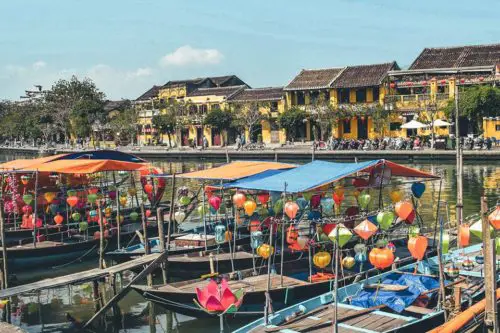
For a more detailed Hoi An guide, click here!
Dalat (3 days)
How to get to Dalat: 14-hour sleeper bus for $17
Drive around the mountains on a scooter Sip coffee by the romantic lake Go canyoning Crazy House The Clay Tunnel Eat Dalat Pizza
Where to stay in Dalat: Dalat Backpackers Hostel for a social dorm or private room, or Original Kens Backpacker Hostel for a more relaxed vibe
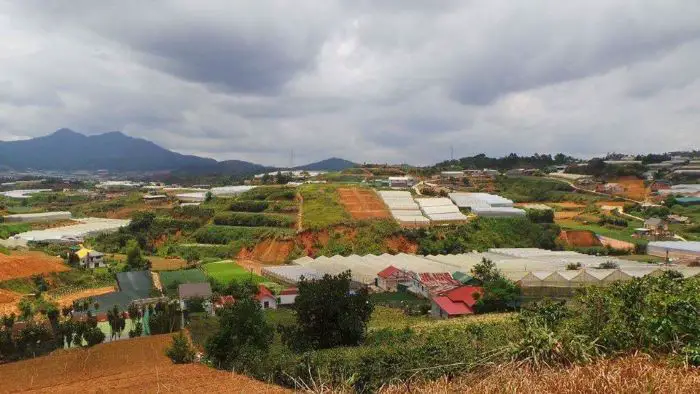
Don’t miss this amazing detailed Dalat itinerary !
Ho Chi Minh City (3 days)
How to get to Ho Chi Minh City: 7-hour bus for $22
Bui Vien drinking street Ben Thanh Market Saigon Notre Dame & Post Office War Remnants Museum Bitexco Tower Half-day trip to the Cu Chi Tunnels Day trip to the Mekong Delta
Where to stay in Ho Chi Minh City: Galaxy Capsule Hotel for a modern stay in the heart of the city
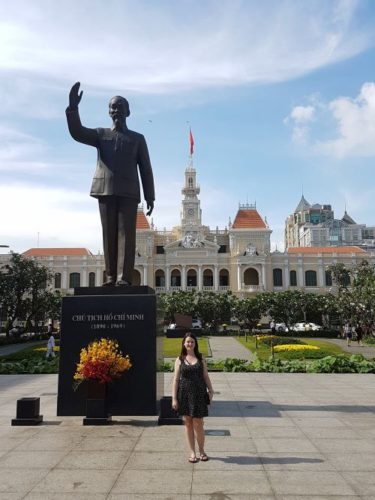
For a more detailed Vietnam itinerary, make sure to check out this awesome 3-week in Vietnam itinerary. Or, click here for a super detailed Vietnam travel guide .
Cambodia (9 days)
Phnom penh (2 days).
How to get to Phnom Penh: 6-hour bus for $12
The Killing Fields S21 Prison Royal Palace Silk tour at Angkor Artisans
Where to stay in Phnom Penh: Golden Boat 72 Guesthouse for a cheap, quiet retreat
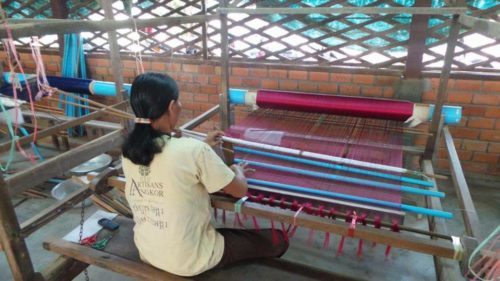
Kampot (3 days)
How to get to Kampot: 3.5-hour mini-van for $9
Ride a scooter up Bokor Mountain Abandoned casino Kep fishing town Pepper farm Fireflies boat tour
Where to stay in Kampot: Marany Guesthouse for a private double room
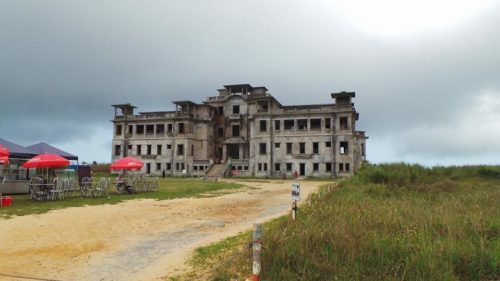
Siem Reap (4 days)
How to get to Siem Reap: Take a bus back to Phnom Penh , which takes 3.5 hours and costs $9. You can either stay one night in Phnom Penh or if you leave early enough, take another direct minivan from Phnom Penh to Siem Reap . It takes 6 hours and costs $10.
Take a tuk-tuk tour of Angkor Wat and the other ancient temples Siem Reap Silk Farm Pub Street
Where to stay in Siem Reap: Pub Hostel for a social vibe with choices of dorms or private rooms
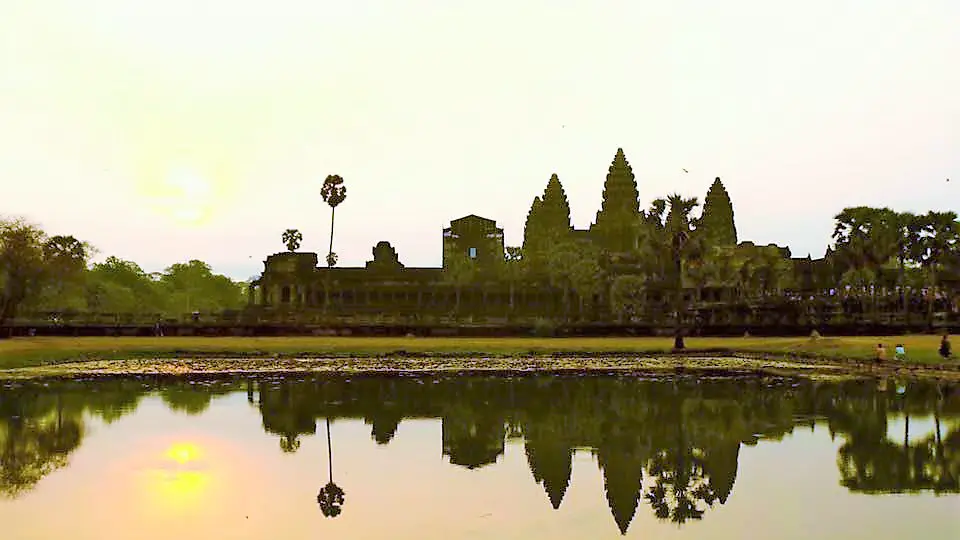
If you need a more in-depth itinerary for Cambodia, don’t forget to check out our backpacking Cambodia guide! Also, don’t forget to check if a Cambodia visa on arrival is available for your nationality or not.
Southern Thailand (10 days)
Bangkok (1 day).
How to get to Bangkok: 9-hour bus for $24
Koh Phangan (4 days)
How to get to Koh Phangan: From Bangkok, you will need to take an overnight bus and ferry. You can read in more detail about the trip here.
Thong Sala Night Market Phaeng Waterfall Paradise Waterfall Lazy beach days Explore by scooter
Where to stay in Koh Phangan: Backpackers Hacienda for a cheap stay with a pool overlooking the beach
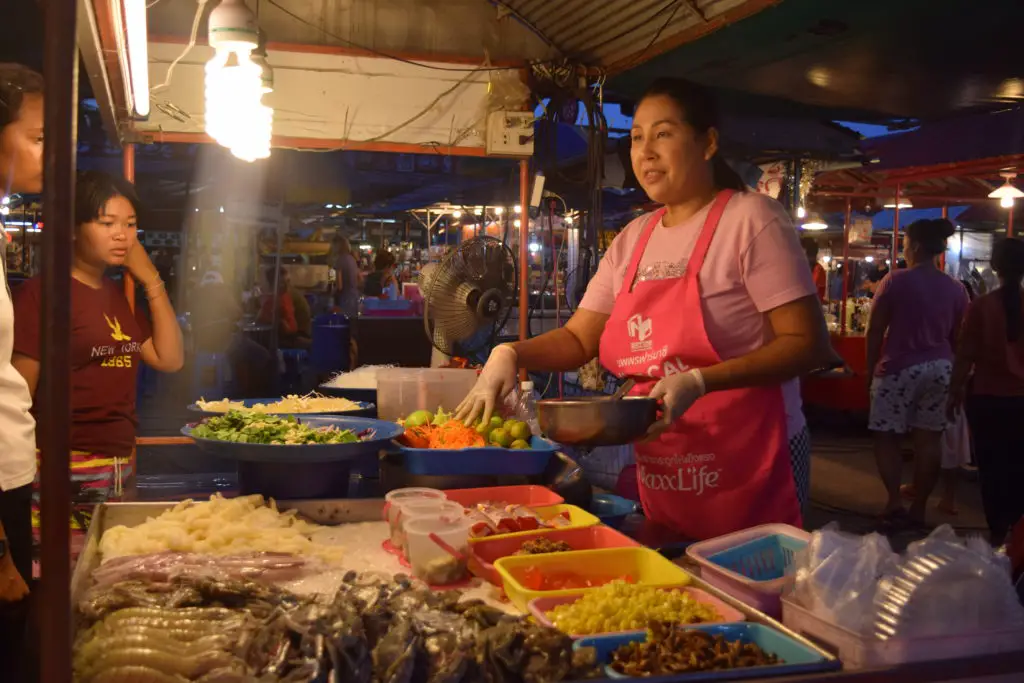
Krabi (3 days)
How to get to Krabi: 6-hour high-speed ferry and bus that costs $18
Railay Beach Tonsai Beach Tiger Temple Emerald Pool
Where to stay in Krabi: J Hotel for a cheap double room with balconies overlooking the sea
Phuket (2 days)
How to get to Phuket: 3-hour mini-van costing $15
Beach days Bangala Road
Where to stay in Phuket: Bed Hostel for a social atmosphere and a choice of a dorm bed or private twin room
Malaysia (14 days)
Penang (5 days).
How to get to Penang: Take a direct flight from Phuket
Ride a bicycle around the street art Drink beer at the Elbow Corner Eat Wan Tan Mee Chew Jetty Kek Lo Si Temple Kapitan Keling Mosque
Where to stay in Penang: Rainbow House for a quiet stay, or Drippin’ Dragon Hostel for a social vibe & pool.
For a more detailed post on things to do in Penang at night , make sure to check out this awesome post!
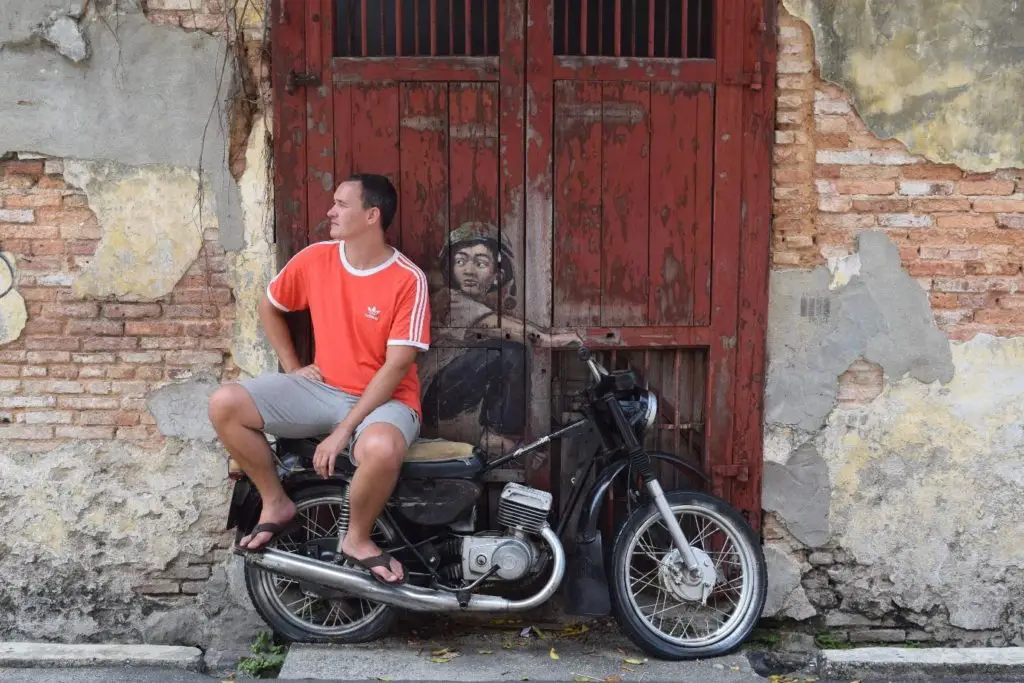
Cameron Highlands (3 days)
How to get to Cameron Highlands: 4.5-hour bus for $10
Tea plantations Strawberry farm Parks
Where to stay in Cameron Highlands: Traveller Bunker Hostel for a range of dorms & a lively atmosphere
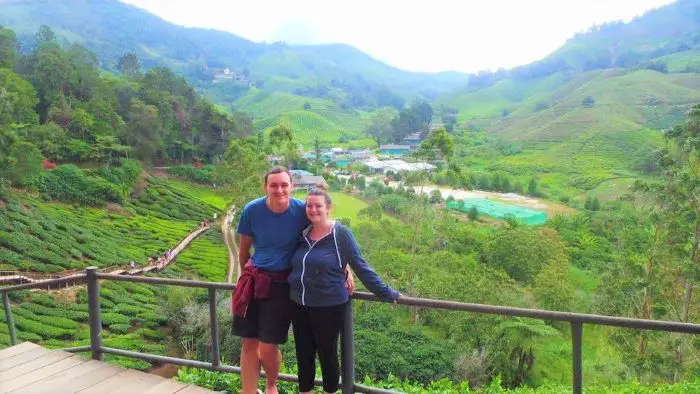
Kuala Lumpur (4 days)
How to get to Kuala Lumpur: 4.5-hour bus for $11
Petronas Towers KLCC Park China Town Little India Merdeka Square National Mosque Bukit Bintang
Where to stay in Kuala Lumpur: Big M Hotel for affordable, modern private rooms, or Dorms KL 2 for cheap but super clean dorm beds.
If you only have 2 days spare for Kuala Lumpur, make sure to check out this ultimate Kuala Lumpur itinerary!
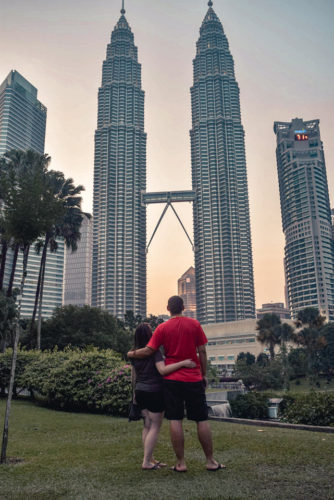
Melaka(2 days)
How to get to Melaka: 2-hour bus for $5
UNESCO town Dutch Square Ride a funky tri-shaw Hang out at the mall
Where to stay in Melaka: The Pillohouzzze for dorms and private rooms
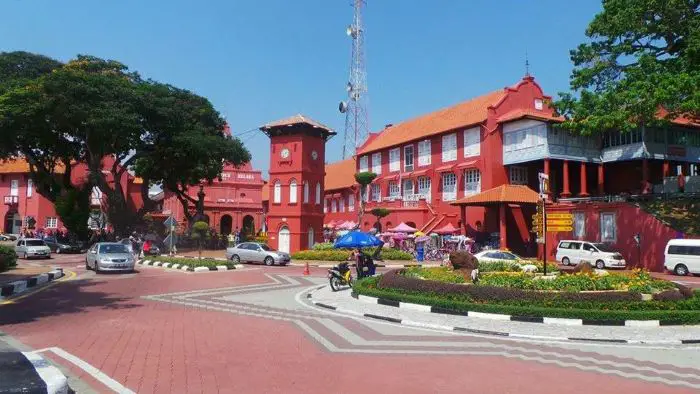
For a more detailed itinerary, make sure to check out our backpacking Malaysia post!
Singapore (2 days)
How to get to Singapore: 4-hour bus for $8
Marina Bay Sands Gardens by the Bay Little India China Town Sentosa Island Universal Studios
Where to stay in Singapore: OSS Backpackers Hostel for a dorm bed, or Hotel Classic by Venue for a cheap double room
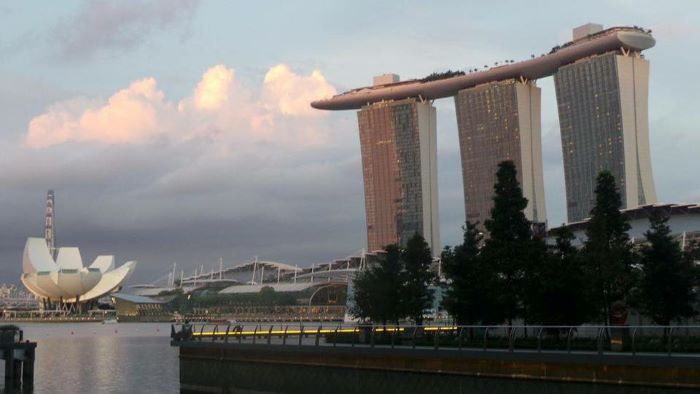
Click here for a more detailed Singapore itinerary!
Indonesia (9 days)
Yogyakarta (4 days).
How to get to Yogyakarta: Fly from either Singapore or Kuala Lumpur. If you choose to fly from Kuala Lumpur, you can take a direct 5-hour bus for $17 from Singapore to Kuala Lumpur.
Borobudur Temple Prambanan Temple Malioboro Market Taman Sari Rent a motorbike & ride in the mountains Eat gudeg
Where to stay in Yogyakarta: The Journey Hotel for budget stylish private rooms
You can read our full Yogyakarta itinerary here!
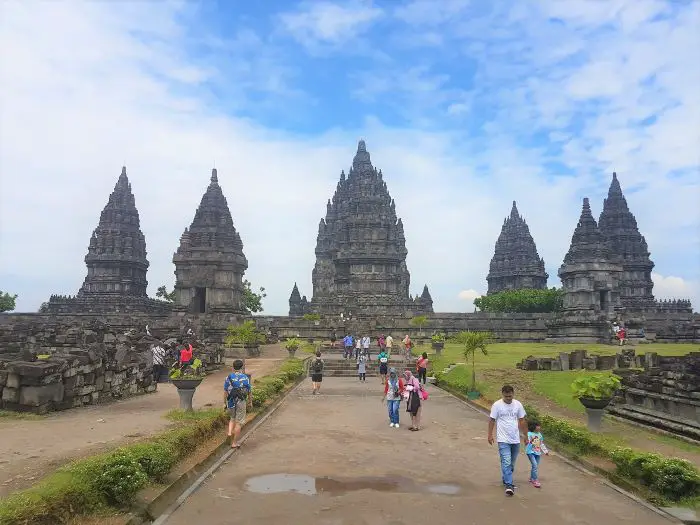
Bali (5 days)
How to get to Bali: Take a flight from Yogyakarta
Visit the rice terraces Relax on the beaches Explore waterfall after waterfall Go temple hopping Snorkelling on Gili T Party in Kuta
Where to stay in Bali: Grandmas Hotel for a cheap relaxing stay
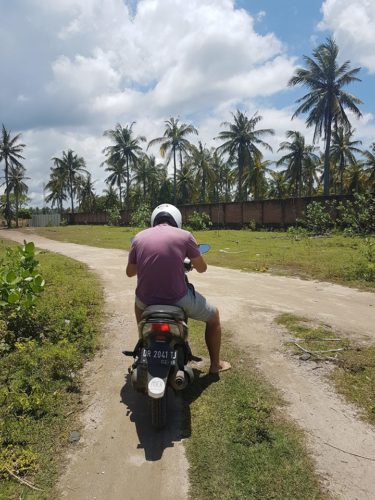
Read a more detailed Indonesia itinerary here!
Myanmar (11 days)
Yangon( 2 days).
How to get to Yangon: Take a flight from Bali
Shwedagon Pagoda Ride the circular train Eat on 19th Street Watch a movie with the locals
Where to stay in Yangon: Agga Youth Hostel is one of the few properties that offer dorm beds. They also have private rooms too.
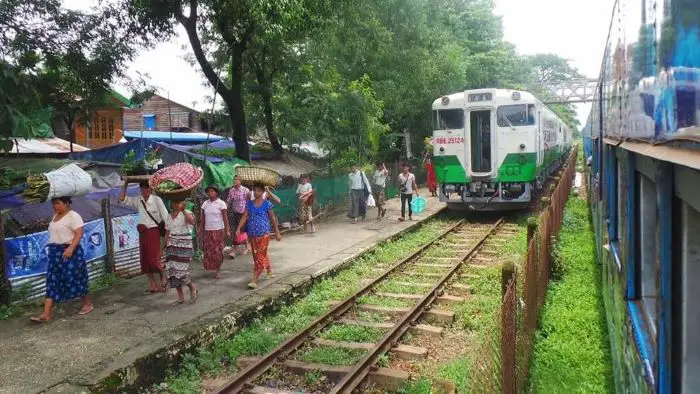
Bagan (3 days)
How to get to Bagan: Take a 10-hour night bus for $10
Watch sunrise and sunset over the thousands of ancient temples Get around by electric motorbike Jasmine Lacquer Ware Factory
Where to stay in Bagan: Shwe Na Di Guesthouse for a cheap homely guest house
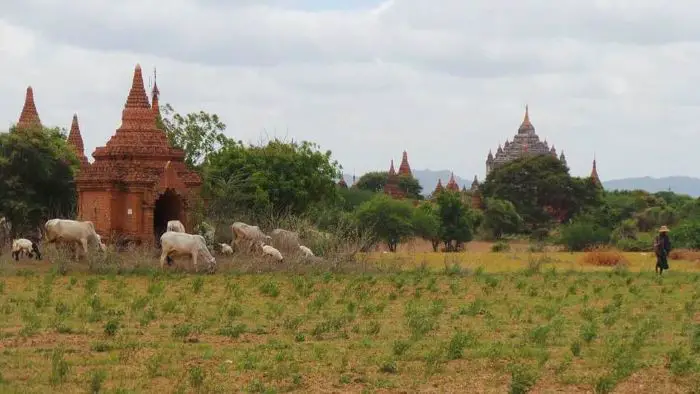
Mandalay (2 days)
How to get to Mandalay: Take a 5.5-hour bus for $6
Mandalay Hill U Bein Bridge Hsinbyume Pagoda Old British Fort Watch the local football team, Yadanarbon
Where to stay in Mandalay: Hotel 82 for a cheap but heavenly stay
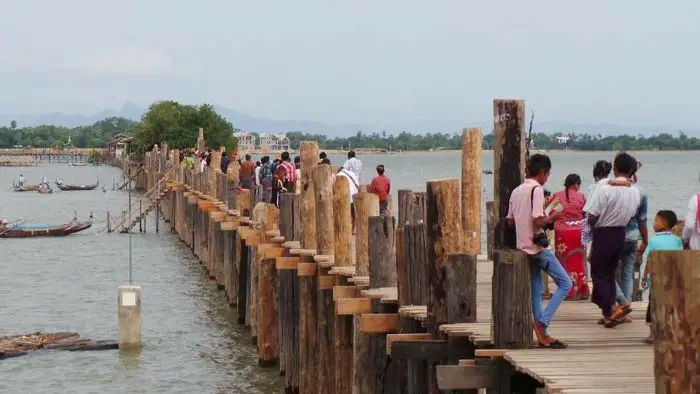
Inle Lake (4 days)
How to get to Inle Lake: 9-hour bus for $12
Take a tour of In le Lake Marvel at the floating villages Visit a silverware factory Visit a boat-making factory Explore the village by bicycle
Where to stay in Inle Lake: Silver Lake Hotel for a private double room
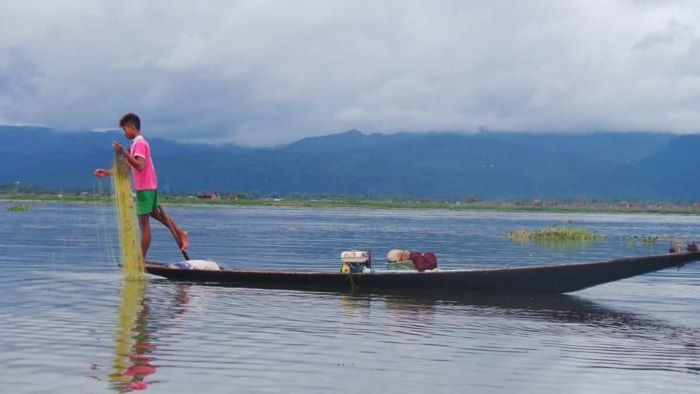
Don’t miss our ultimate Myanmar backpacking guide!
Your 3 month Southeast Asia travel route has come to an end
Phew! What an epic 3 month Southeast Asia itinerary . From Inle Lake, you can take a bus back to Yangon. From Yangon, you can either try to find cheap flights back home. However, we recommend heading back to Bangkok to fly from there, as international flights tend to be much cheaper.
How much does it cost to travel to Southeast Asia for 3 months?
This is a hotly debated topic among backpackers. One would proudly announce you can get by on as little as $15 a day, and one would argue that you would easily need $50. The truth is, is everyone is different, and so is their travel style. However, we won’t leave you hangin’. We will give you our recommendation on how much to budget for this 3-month Southeast Asia itinerary. Just remember, your travel style could be totally different from ours, so take this with a pinch of salt and judge your budget according to your preferences.
Our 3 month Southeast Asia itinerary budget
From our previous travels in Southeast Asia and living in Vietnam for 4 years, we would personally budget $50 per day for the two of us. Clean modern dorm rooms average $7 per night, whilst private double rooms average $12. Furthermore, local food in this region is super cheap and convenient, with almost every city and town serving up the most delicious meals from a cart on the market or the side of the road. You can easily eat three square meals a day for less than $10. In terms of activities, if you plan, you can do lots of exciting things for free. Most of the time, there is no need to pre-book tours! Getting around is made easy too, with plenty of scooter rentals, and motorbike taxi apps such as Grab.
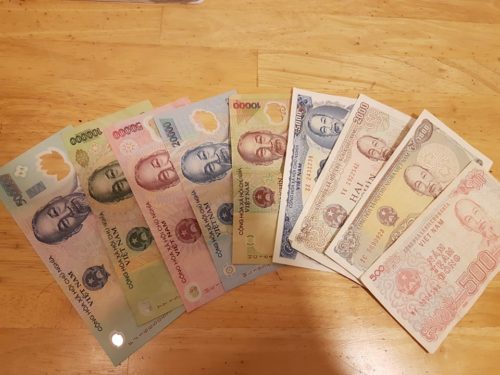
Additional costs to consider
Further to your daily budget for your Southeast Asia trip, you will need to factor in the cost of flights and any visas you may need. Again, this is just our personal opinion of how much a reasonable budget for this itinerary is. If you want to go out partying every night, tuck into Western food, or sit back and relax in the comfort of air-conditioned taxis, you will, of course, need to increase your budget.
Looking for what to pack? Check out this essential Southeast Asia packing list !
Essential resources for this 3 month Southeast Asia itinerary
Travel Insurance – No matter whether you’re travelling around Asia for 3 months or just a week, it’s a good idea to make sure you’re covered for any accidents or losses. We spent days and weeks searching for insurance, but most insurers would not allow us to take out a policy as we were already abroad. Our personal choice is Safteywing . You can opt for automatic monthly payments, just like a subscription. More importantly, it is available in 180 countries and can be purchased whilst already travelling. There is no cap on the duration of travel.
Visa – Before you travel to any country, make sure to check if you need a visa. iVisa is a fantastic website that is super easy and quick to use. Just type in where you are from. and where you are going. to check if you need a visa. If you do, you can quickly make an application online.
Accommodation – Booking.com is our go-to when looking to pre-book accommodation online. Booking.com tend to almost always have the best rates and a FREE cancellation policy for most properties.
Overland transport – Our go-to website for overland transport is Bookaway . Bookaway offers multiple forms of transport, from buses, mini-vans, trains, and ferries. The routes on offer are extensive and certainly cover most of the backpacker trails. Bookaway works a little like Skyscanner but for overland transport. You will find plenty of transport options from a range of companies. All you simply need to do is book online and receive your ticket by email. The email will contain essential information, such as where the bus leaves from and departure and arrival times.
Tours & Activities – If you want to book tours and activities online, make sure to check out Get Your Guide . Get Your Guide takes the stress out of booking activities abroad. You will also find a range of benefits, such as skip-the-line passes, lunch included in your tours, and so much more.
Travel tips ebook -Before you head off on your adventure, make sure to download our free ebook. It has a whopping 109 budget travel tips to help you make your hard-earned cash go further. Click here to download your FREE ebook.
Like this post? Pin it!
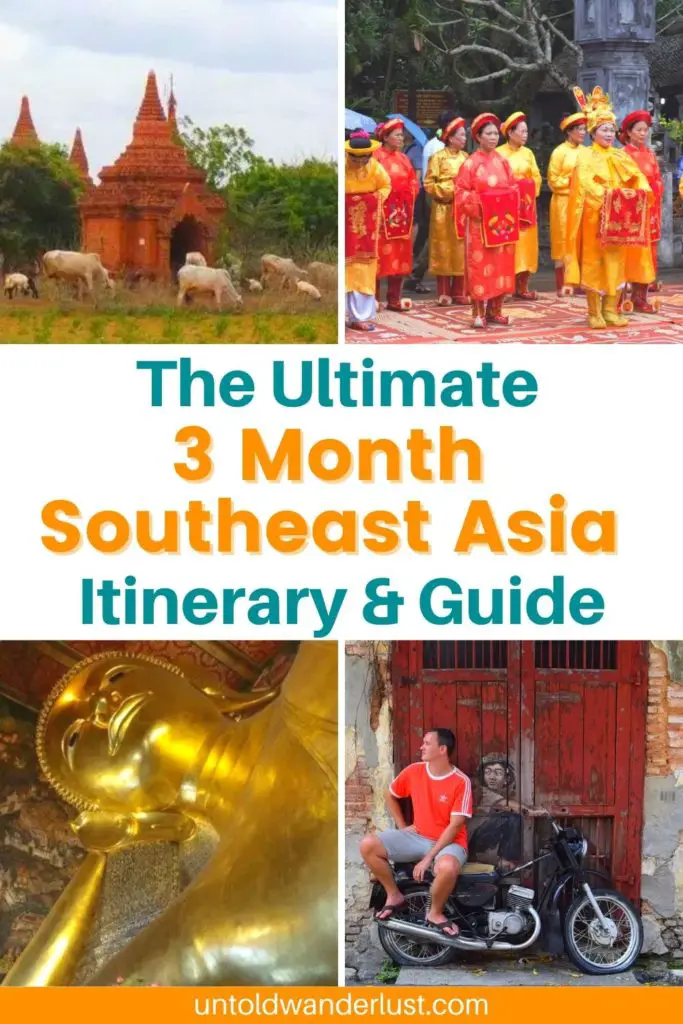
2 thoughts on “ The Most Amazing 3 Month Southeast Asia Itinerary ”
That s a great summary of your trip! How long did it take by boat to get to Luang Prabang? and similarly how long did it take to get to Hoi An? I d love to know the time it took with public transportation ??
Hi, Thanks for the comment. The slow boat to Luang Prabang takes 2 days. We have an entire post on it 🙂 check it out.
Leave a Reply Cancel reply
You must be logged in to post a comment.
This site uses Akismet to reduce spam. Learn how your comment data is processed .

Where to Travel in Southeast Asia for 3 Months
If you’ve only got three months, this Southeast Asia itinerary will take you through the region’s best bits—both the highlights and the hidden gems.
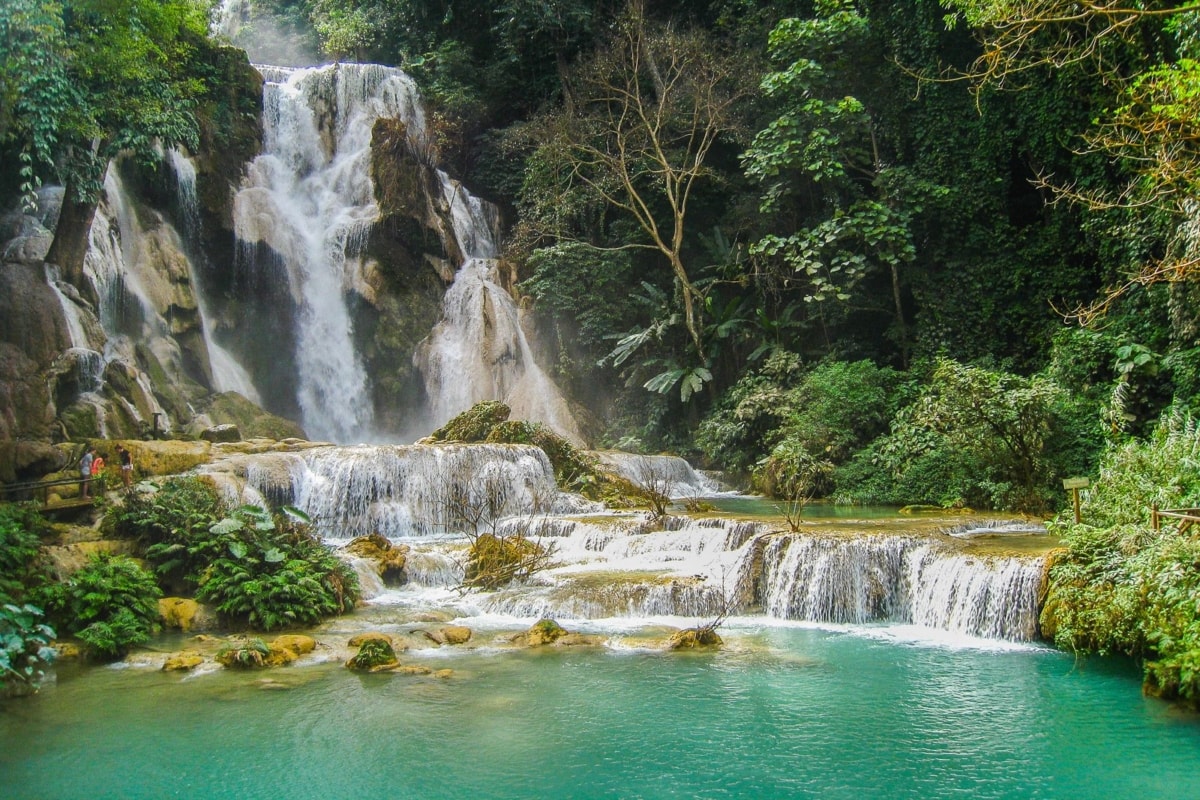
When you tell your friends you’re leaving to “backpack Southeast Asia,” they’ll probably envision you in harem pants, partying with fire dancers on Thai beaches.
Your parents probably think you’re off to volunteer caring for elephants or teaching Cambodian kids English. And you’re probably getting excited to break some serious boundaries—like summiting mountains, eating scorpions in night markets and practicing your meditation from temples.
The truth is that it’ll probably be an amalgamation of it all—and Southeast Asia is a sunny, culturally diverse and cheap ( like really cheap ) place to do it all.
When I say Southeast Asia, I’m talking specifically about Thailand, Laos, Vietnam and Cambodia. While there are other plenty of other countries in the region, there are time constraints when traveling Asia for just three months.
Meanwhile, in the “core four,” and with this Southeast Asia itinerary, you can travel freely without having to book tickets in advance.
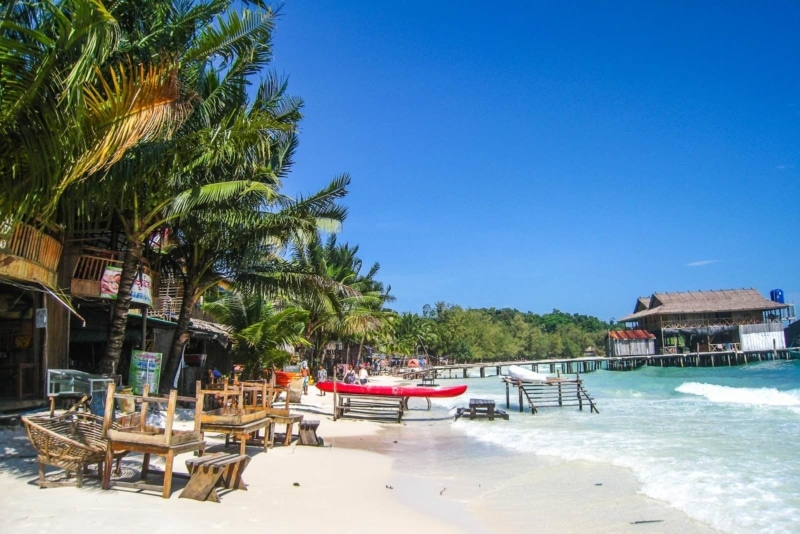
Southeast Asia is often touted as a backpacker’s haven, likely because you and other travelers are spoiled for choice when it comes to hostels. There are also clearly defined routes that run throughout the region, and most backpackers in the area are heading in the same general direction, which means making travel buddies in those hostels is easy.
There is no need for flights because day and night buses between all of these countries are simple and cheap, and hitchhiking is even common due to the population of backpackers.
And, for the more experienced backpacker who feels comfortable venturing off the beaten path, there’s more to Southeast Asia than the standard route. It’s stupidly simple to rent a motorbike for days on end and explore these countries without seeing others for days.
If you’ve only got three months, this itinerary will take you through the best bits and hidden gems.
Thailand: One Month
Thailand should be your first stop since Bangkok’s airport, Suvarnabhumi Airport, is the largest hub in and out of Southeast Asia. Most international flights will fly into there. More than 35 million people visited Thailand in 2017, which means that the country caters to tourists, and you’ll have an easier time navigating the different cities and finding accommodation in each place.
If you have never been to Asia before, Bangkok will induce serious culture shock, but embrace it; you’re not in Kansas anymore, Dorothy.
Your one month in Thailand is going to be all about visiting temple ruins, trekking through the jungles and consuming fresh, fragrant foods. You will see, hear, smell and taste things you’ve never experienced before and you will be immersed in a new and fascinating culture. Say yes to everything (except maybe “Ping Pong” shows… just trust me).
Day 1-3: Bangkok
As you travel from the airport into city (I recommend the tram) you’ll be hit with an explosion of color and sound. Multi-colored taxis honk as they swerve across five-lane highways, while motorcycles transporting entire families weave through the traffic. It’s chaos, and it’s a little overwhelming, but it’s exciting.
I have friends who have planned trips to Thailand and banked on spending a week in Bangkok at the beginning to ‘get their bearings.’ Don’t do this. Bangkok is absolutely incredible, but a week here is too long simply because there are better places to spend your time .
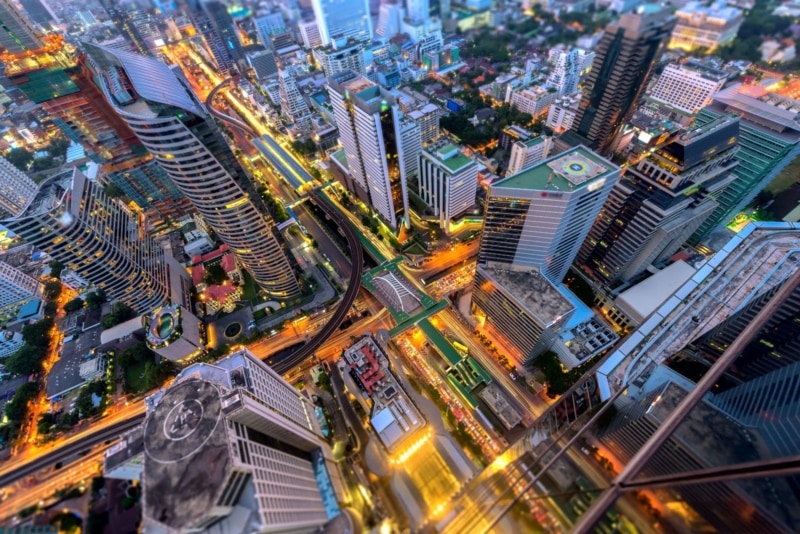
I recommend spending just a few days here exploring. You’ll want to check out the Wat Pho Temple , one of the largest temple complexes in the city known for its 151-foot-tall reclining, gold-leaf Buddha. Shopping in the Chatuchak Market could consume an entire day.
If you’re in the mood to party, spend the night bar hopping in Soi Cowboy , a street made famous by The Hangover that offers live music dive bars, clubs and go-go bars to a crowd of travelers and expatriates alike. One night should also be dedicated to Khao San Road , Bangkok’s most famous party street.
While you’re in Bangkok, it’s worth getting lost in the streets of skyscrapers to check out the hundreds of food stalls selling chicken skewers and scorpions and pla pao erupting with smells that could alone sate an appetite. There are also floating markets during the weekends and tons of biking trails to be discovered.
Day 4-11: East Coast Islands or West Coast Islands
Had your fill of the city? Now, it’s time to head south and hit Thailand’s world-renowned beaches. You can take buses and trains down south, and trains are usually more scenic. Choose either the East Coast ( Koh Tao, Koh Samui, Koh Phangan ) or the West Coast ( Koh Phi Phi, Koh Lanta, Phuket ) and island hop.
Just keep in mind that monsoon season will be affecting one side, while the other is sunny. It typically lasts from July to October and typically dominates the southwest—so if you go during those months, you may want to choose the eastern islands instead.
The islands are super simple to hop, as ferries run regularly between them for decent prices. You don’t need to plan or buy tickets in advance either.
On the West Coast, the more famous Ko Phi Phi Leh , an island of the Phi Phi Archipelago in the Krabi Province, was made famous by Leonardo Dicaprio’s The Beach. If that’s not reason to visit, its bath-temperature waters will be begging you to swim.
But also be sure to take a day trip from one of the main islands to Koh Hai or Koh Yao Yai . These islands are far less developed than their neighbors and boast amazing opportunities for cliff jumping, snorkeling, hiking, and swimming.
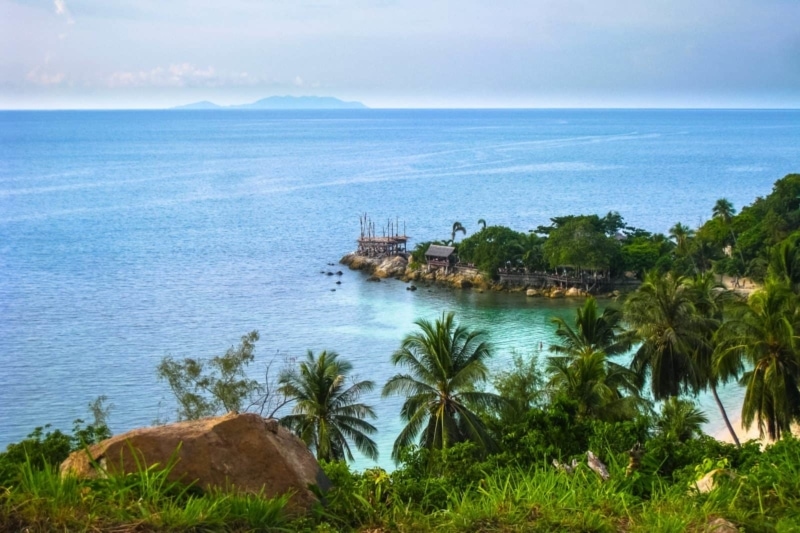
Meanwhile, the East Coast’s Koh Phangan is home to the world famous Full Moon Party. This is not for everyone. It’s 30,000 people covered in neon paint drinking questionable concoctions from buckets on the beach. But for party-people, this is heaven.
If you’re not interested in the Full Moon Party, there are plenty of smaller parties on the islands, including the Half Moon Party and Lost in Paradise, among regular nightly beach parties with fire dancers.
You should also take the opportunity to get your PADI diving license on Koh Tao . It’s one of the cheapest places on the planet to do it and the diving there is unparalleled. Or, if you’d rather keep on terra firma, trek through the jungle to find the Na Muang Waterfall on Koh Samui .
Day 12-16: Kanchanaburi
Kanchanaburi is well known for its role in World War II. It is the site of the Death Railway, a tragic railroad that was built under Japanese orders to connect Thailand and Burma. The Japanese used prisoners of war and civilian laborers to construct the railway in hellish conditions. Malnourishment, tropical diseases and poor safety on site led to the deaths of over 100,000 people.
Nowadays, you can ride along the Railway from Kanchanaburi to Nam Tok and learn about the history of this region for an adventure through time.
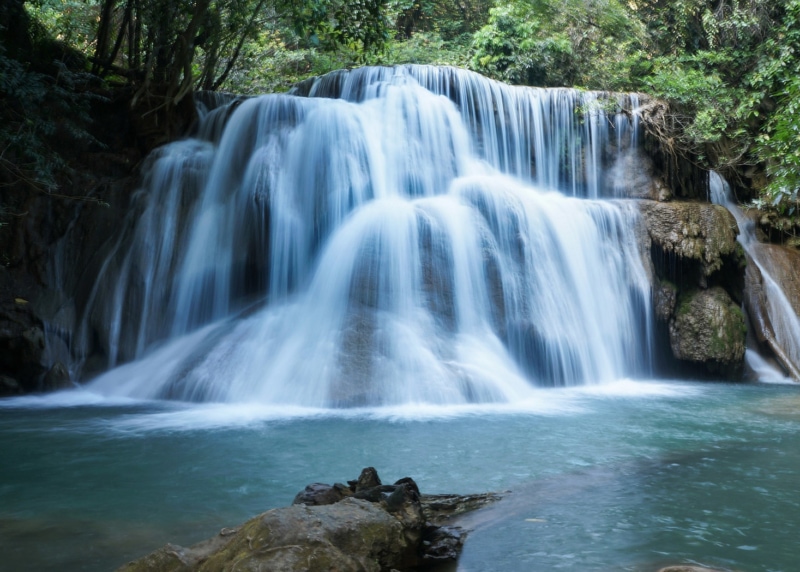
While you’re here, take a walk across the bridge over the River Kwai. From the bridge, there are beautiful views of the river and the floating accommodations that line its banks. Other popular activities worth doing include exploring the Erawan National Park , canoeing along the River Kwai, trekking through the jungle and bamboo rafting.
Day 17-22: Chiang Mai
As you meet people along your travels you will hear the same place muttered over and over again: Chiang Mai. It’s up north, but it makes the most sense to start working your way back north since the next country on your list, Laos, will be easier to enter up there.
So let’s start with Chiang Mai, a little city is a universal favorite with travelers and recognized as the digital nomad capital of the world.
In fact, you’ll meet a lot of Westerners in Chiang Mai who visited once years ago and never left. It is the kind of place that sucks you in and captivates you.
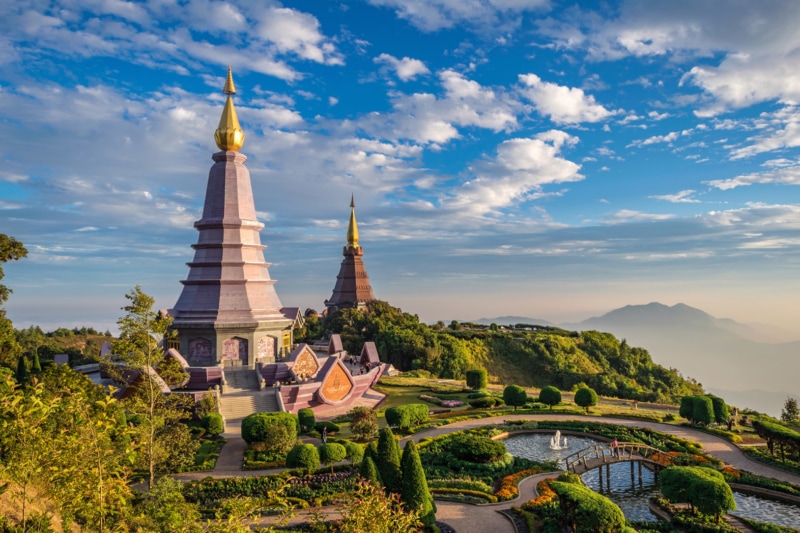
There is a lot to see and do in Chiang Mai and, because of its leisurely pace, you won’t want to rush. So, give yourself at least five days here.
Chiang Mai is the hub of adventure activities in Thailand . Here, you will find ziplining, jungle treks ATV riding and a whole lot more. These adventure tours are usually very reasonably priced and include transfers and lunch. In the evenings, head to the night bazaar in the city center and gorge on freshly cooked Thai street food.
For example, you could fly through the treetops and see the Mae Kampong Falls and, if you’re lucky, elusive wild gibbons. Or you could spend an entire day trekking up Doi Inthanon , Thailand’s tallest mountain.
Important Heads Up
If you want to spend time with elephants in Chiang Mai then do your research. While there are some legitimate elephant sanctuaries around, there are also a lot of sham sanctuaries (learn more about that here ). Elephant Nature Park is the only rescue center that I can comfortably recommend, as it comes highly recommended by experts for its ethics and I’ve been there myself.
The same thing goes for Tiger sanctuaries. You might have seen people on Instagram posing with cuddly, subdued tigers. The tigers look this way because they have been drugged. Err on the side of caution and give the tigers a miss altogether if you don’t want to contribute to animal abuse.
Day 21-26: Pai
Pai is a quiet town in northern Thailand, which can be used as a base for trekking adventures. Northern Thailand is hill country covered with lush green grass and rice paddies. From Pai, you can take a day trip to the Mae Yen or Huay Chang Waterfalls or you can go for something more hardcore like a five-day trek through the entire region .
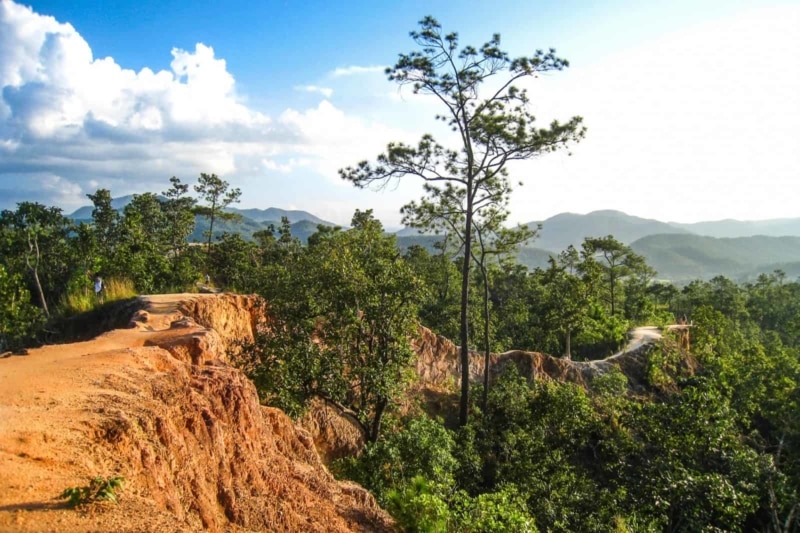
In the Huay Nam Dang National Park , Soppong and Mae Hong Son also have plenty of hiking routes to explore. If you have the stamina, there are multi-day treks in these areas, some of which include bamboo or white water rafting. While you’re trekking, you’ll have the chance to drop in to hill-tribe villages, small communes of Thais who still maintain a traditional way of living. Think straw huts and tribal outfits.
Day 27-30: Chiang Rai
As you make your way to Laos, make a brief stop in Chiang Rai It’s home to the exceptionally beautiful White Temple (Wat Rong Khun), an all-white, spiky building that looks like its made of icicles. It’s also surrounded by outstanding natural beauty—think tea plantations and rivers. Grab a bike and cycle around the area to get a taste for what life is like in this northern region.
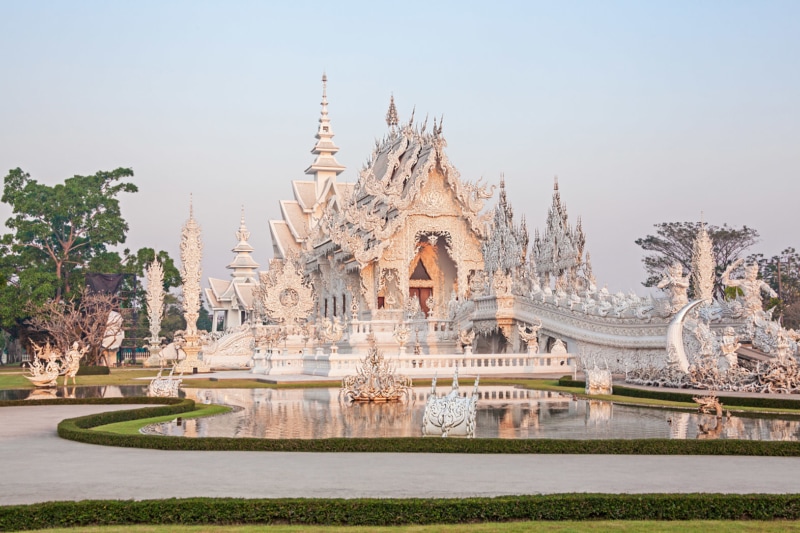
To immerse yourself fully in nature, there is a treetop walk that stretches through the sublime Mae Fah Luang Gardens in Doi Tung. You can share a taxi with others for about an hour ride from Chiang Rai, and you’ll find signs for the walk not far into the gardens. From the walk’s aerial vantage point, there are spectacular views of the gardens along with a mild adrenaline rush from being suspended 100 feet in the air.
When you’ve walked the whole route, come down and enjoy the gardens from ground level. Entrance to the garden and the treetop walk combined comes to around $7.
Laos: Two Weeks
From Thailand, Laos is just a hop, skip and a really long boat ride across the border. If you thought you had gotten used to Southeast Asia after a month in Thailand, think again. Laos is a whole new ball game and, while it might only be next door, you are still going to experience some culture shock when you arrive.
One thing you should know about Laos is that there are no trains. You will have to get around by bus, which would be fine, were the roads in Laos a little… better developed. It’s all part of the adventure and being jolted around in a bus for a few hours is a small price to pay to experience Laos.
To get from Thailand to Laos, you either need to sit on a boat for two days or in a minivan for 14 hours. Neither is ideal, but both will leave you with a handful of interesting stories.
Day 31-33: Vientiane
Compared to Bangkok, Vientiane is child’s play. It is quiet, easy-going and small. Despite the fact that it’s the capital, you really won’t need long here to cover the bulk of the city’s attractions. Once you’ve got your culture fix at the Museum of Lao Art, the Lao National Museum and the Wat Simuang Temple , head out to Vientiane’s outskirts for some nature.
Xieng Khuan , a meadow filled with Buddha statues,is a popular day trip from Vientiane. Otherwise, the Ang Nam Ngum Reservoir is an idyllic spot for camping, hiking and paddling around in boats. That’s the capital city covered.
Day 34-36: Vang Vieng
From Vientiane, head north in the direction of Vang Vieng. This once notorious backpacker hub is now a lot more chilled since tubing has been banned . The town is a ghost of its former self—that’s exactly why you should visit.
Nowadays, there are no more Chads chugging beers and wearing lurid vests. It’s peaceful, beautiful and tubing is still on the cards—it’s just way calmer than it used to be. Enjoy a beer as you float along the river and soak up the stunning views of the jungle around you.
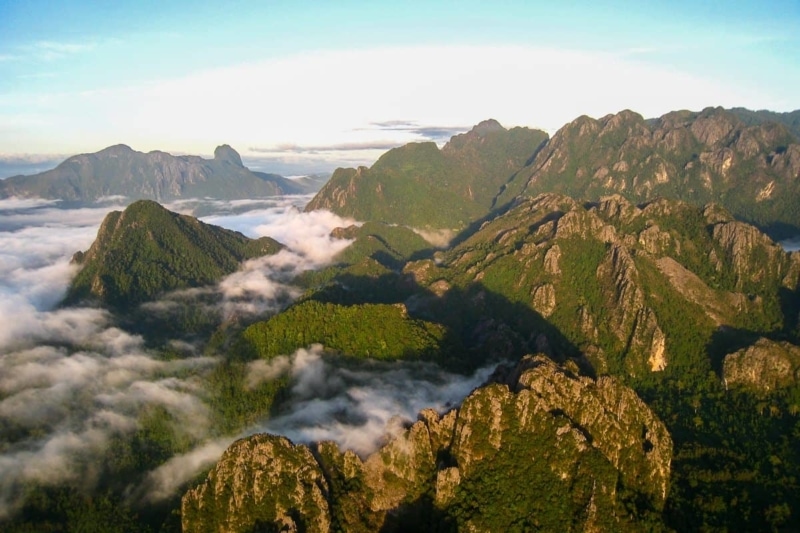
While you are in Vang Vieng you should go hot air ballooning (the photo above is all the convincing you ought to need). Also check out the Blue Lagoon and Cave . The water that feeds into this lagoon comes from the mountains and is a beautiful turquoise color. There are swings that hang from the trees over the lagoon.
Don’t forget to take a walk around the cave, too! All of these sites will be easy to visit by motorbike on your own or by setting up tours at your hostel or with travel companies in the center city.
Day 37-40: Luang Prabang
Deservedly on the UNESCO World Heritage list, Luang Prabang is a charming city in the northern part of Laos. A lot of people are tempted to miss out Luang Prabang because it is too far North. Don’t miss it out. It may well turn out to be your favorite place in Southeast Asia.
The number one sight in Luang Prabang is the stunning Kuang Si Waterfalls . You can swim at the top of these cascading falls that tumble into more tiered pools of crystal clear water. It’s best enjoyed visiting on your own, as opposed to going with a tour that’ll rush you through it. Consider renting a motorbike because it’s a relatively easy drive.
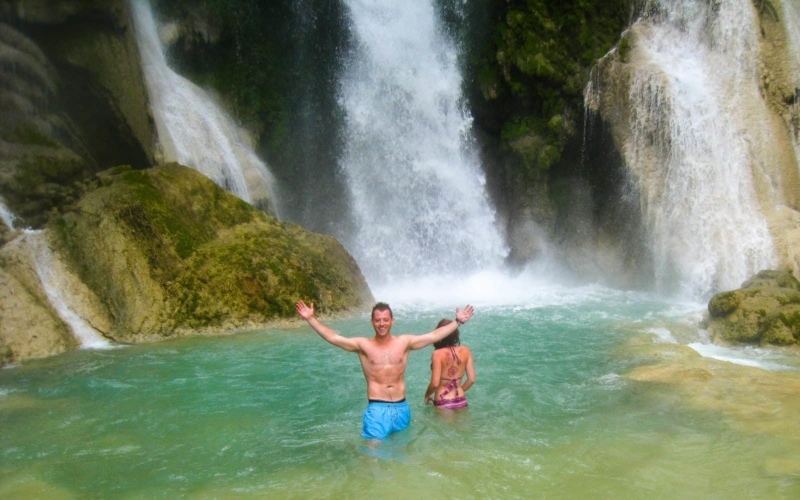
If you still have energy to expend after the waterfalls, you might want to climb the 355 steps to the top of Mount Phousi . OK, it’s not exactly a mountain, but the views from the top are insane. You’ll see the mighty Mekong and Nam Khan Rivers that carve through the vivid green scenery and the houses and huts that pepper the landscape.
Day 41-44: Phongsali
In the mountains of northern Laos sits Phongsali, the capital of Laos’ northernmost province. Although the town itself is reasonably large, you won’t find many other travelers here. If you were looking to get off the beaten path, this is the place to do it. By way of stimulation, there’s not a whole lot going on in Phongsali. But, that’s not why you came.
You come to Phongsali to breathe in the fresh mountain air, look at the stars at night and fall asleep to the cries of nature. And, above all, you come to Phongsali to trek. Set out on foot and explore the gorgeous scenery that flanks the town on all sides. Delve deep into the wilderness and seek out some of the secret hill-tribe villages.
BONUS: 4,000 Islands
If you happen to have more time in Laos because you opted to skip one of the above or you’d spent less time than you anticipated in one of them, you should check out the 4,000 Islands. You can catch an overnight bus to the 4,000 Islands from most major cities like Vientiane or Vang Vieng.
The overnight buses will take you to a town called Pakse, where you’ll have to catch another tourist bus to the port to the islands in Ban Nakasong. It’s about a three-hour journey. Once you’re there, you can decide between Don Det or Don Khong , connected via a bridge.
I recommend checking out both Don Det and Don Khong if you have the time. Don Det offers higher-end guesthouses and attracts an older crowd. But it boasts the beautifully cascading Liphi Waterfalls , where you can spot fresh-water dolphins.
Don Khong is the biggest of the 4,000 islands and is a sleepy hippie haven peppered with hostels and inexpensive guesthouses. It has tons of riverfront bars and restaurants, too.
Vietnam: Three Weeks
Just when you thought you’d adjusted to the lazy pace of Laos, it’s time to shake things up again. Welcome to Vietnam. Despite still bearing the visible scars of its conflict with the US, Vietnam is a thriving country with modern cities.
I’ll admit, one thing that plagued me before I touched down in Vietnam was how the Vietnamese would treat me given the fact that I’m American. Honestly, I had no problems.
The older generation occasionally gave me disapproving looks but, as a whole, people were super friendly—especially young people. Just try not to be too American while you’re there , if you get what I mean.
Vietnam is the perfect mixture of urban and rural, and it’s teeming with man-made and natural beauty. There’s a lot to see in this country and, in three weeks, you’ll barely scratch the surface. But, that’s all the more reason to go back someday.
Day 45-47: Sapa
Your first stop on your journey through this beautiful and historically fascinating country will be Sapa. It will also, most likely, be your most beautiful stop. But, be aware that the climate in Sapa is a lot cooler than what you’ve experienced so far due to the altitude. Wrap up warm and bring some waterproofs.
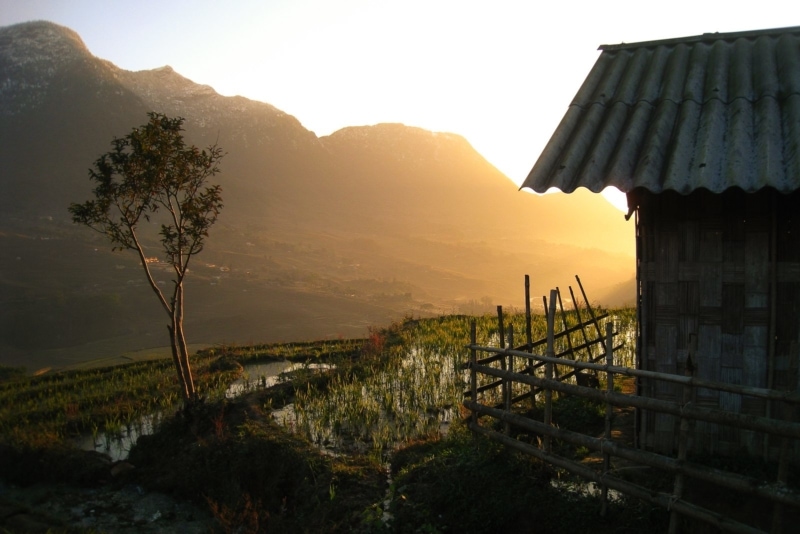
As you emerge from the fog that often blankets Sapa, the world will suddenly be tinged with green. Terraced rice paddies sit one on top of the other, verdant and pristine. This is what happens when people work in tandem with Mother Nature. Spend your time here trekking through hill-tribe villages and dosing up on fresh, clean air.
Day 48-51: Hanoi
Home to over four million motorcycles, Hanoi thrums with energy and simply crossing the road is an adventure in itself. It’s Vietnam’s capital city and is, in itself, a historical relic.
Yet, while the streets are chaotic, the parks and plaza are oddly serene. French style architecture can be found throughout the city, as well as bakeries selling French pastries—remnants from their colonial rule.
Take it slow in Hanoi. Hire a bike and cycle around the Hoan Kiem Lake, or just walk if you don’t trust yourself on two wheels near a body of water. Cross the bridge that leads to the middle of the lake and visit the temple there. I also recommend paying your respects at Ho Chi Minh’s Mausoleum, an impressive building fit for such a respected military leader.
Day 52-53: Halong Bay
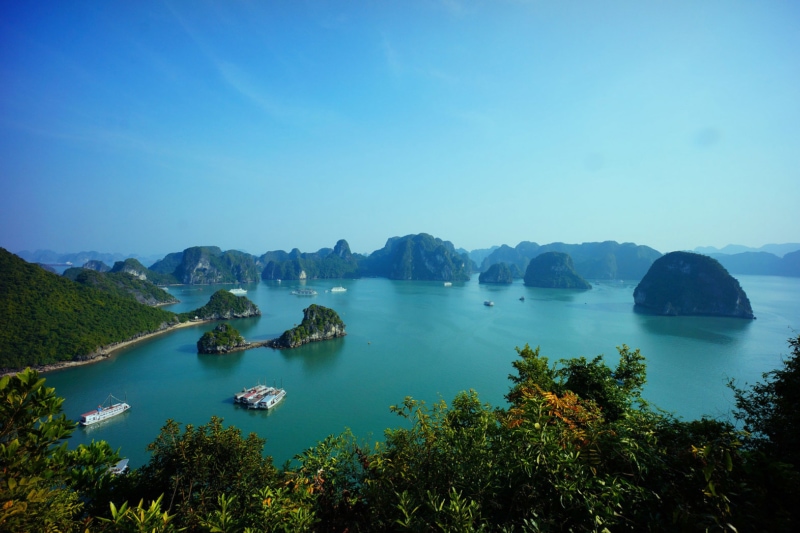
Pretty much everyone who goes to Vietnam goes on a cruise of Halong Bay. While I usually advocate avoiding places heaving with tourists, Halong Bay is an exception.
Boat tours go out in the bay for days at a time, laden with adventurers who want to admire the pinnacles up close. If somehow you haven’t already seen photos of Halong Bay, it consists of dozens of jagged green islands that plunge up out of the water. Each island has sheer walls densely covered with vegetation and the whole place has a prehistoric feel to it.
There’s not much to do here other than sitting on a boat and enjoy yourself. You can sign up with Halong Bay tours through your hostel, which I recommend over sometimes dodgy and overpriced tour companies in the city.
Day 54-56: Hoi An
Head a little further south and you’ll hit Hoi An. Most people will take the train to Danang and a cab from there, but there are also minivans that pass through the Hai Van Tunnel. This is the longest tunnel in Southeast Asia, stretching a staggering four miles.
Once you arrive in Hoi An, you are likely to be approached straight away by someone trying to sell you custom-made clothes. Hoi An is the tailoring capital of Vietnam and, if you were looking to get a bespoke suit or dress made for a fraction of what you would pay back home, you need look no further.
Strolling through Hoi An, you’ll encounter the Japanese Bridge , the Fukian Assembly Hall and lots of beautiful, old buildings. I recommend hiring a bike for a couple of dollars and cycling through the city and out into the rice paddies. Again, motorbikes are easy to rent here and the freedom is worth the extra money for a few days.
Day 57-60: Nha Trang
Nha Trang is the most popular beach spot in Vietnam. Given that you haven’t been on the beach since the Thai Islands over a month ago, you should treat yourself to a bit of sea and sand here. A few days is all you need to check out the highlights and top up on your tan before you carry on your journey through Vietnam.
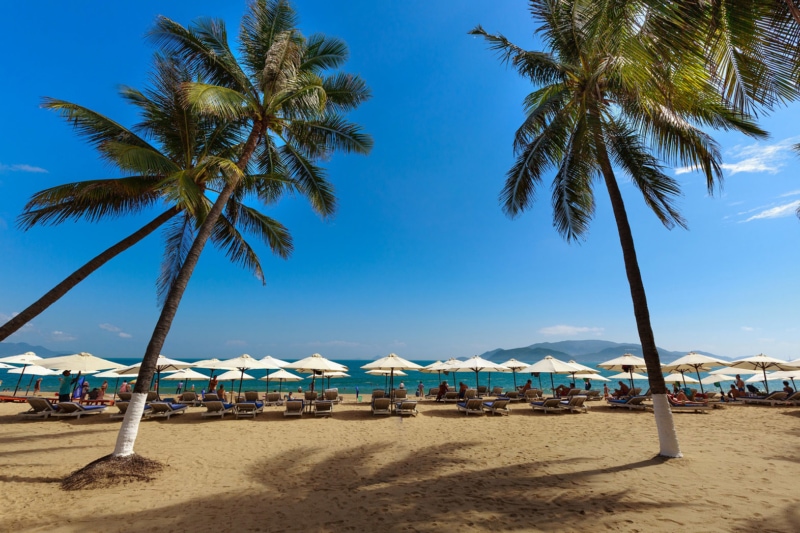
You’ll notice a lot of dive shops all over Nha Trang. The diving here is excellent and the prices are reasonable. Whether you’re a qualified Dive Master or have never so much as seen an oxygen tank before, you should spend a morning diving here.
Now, this is a bit of a guilty pleasure but, after months of temples and cultures, it is certainly justified. In Nha Trang you will find Vinpearl , one of Southeast Asia’s premier theme parks. Sitting on its own little island, the park has a safari, water park, golf resort, spa and just about anything else you could think of.
Theme parks may not be the most culturally enlightening experience, but whoever said travel had to be all about culture? This is guaranteed to be a day of seriously good fun.
Day 61-62: Mui Ne
Mui Ne is the driest place in Southeast Asia. Although the region is just four hours by train from Ho Chi Minh City, it feels like you’ve just been transported out to the Sahara. You only need a day here to experience it; it really is just sand dunes as far as the eye can see.
Visiting Mui Ne is worth it though. Get up at the crack of dawn and watch the sunrise over the dunes. Then rev up a quad bike and prepare for action. Racing around these dunes is a cool experience that will get the adrenaline pumping before breakfast.
Day 63-66: Ho Chi Minh City
Finally, you’ve made it right down to the bottom of Vietnam, to the commercial hub of the country: Ho Chi Minh City. You might be more familiar with the city’s previous name, Saigon. During the Vietnam War, this city played a pivotal role in the military developments and eventually fell to the communists, ending the war entirely.
The city is an interesting mixture of old and new, with modern business centers sitting side by side with colonial churches. The post office in downtown Ho Chi Minh City is one of the best-preserved examples of colonial architecture.
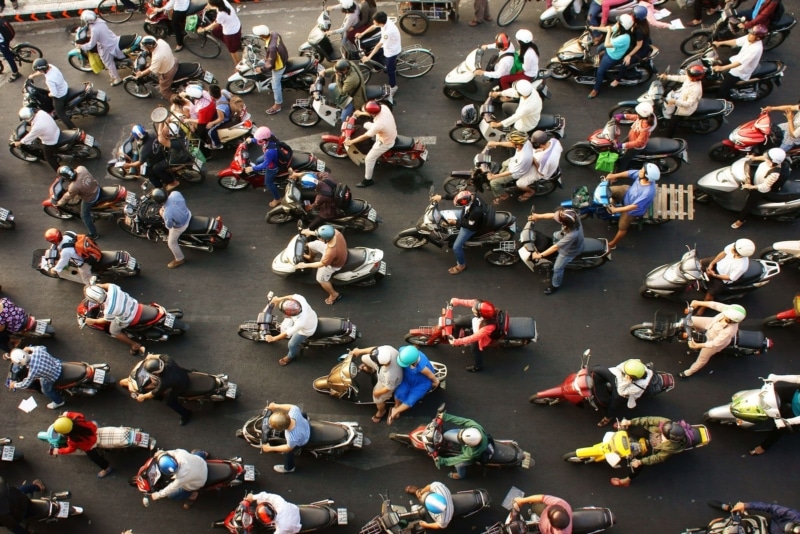
To get a taste of HCMC’s history, check out the War Remnants Museum . Getting to see the Vietnamese perspective of that notorious war is both interesting and valuable.
When you’re ready for adventure, leave the city and travel to the Mekong Delta for a day. Here, you can float along the river, explore floating markets and even try your hand at fishing.
Cambodia: Three Weeks
Your final country on your journey through Southeast Asia is Cambodia. Yet again, you’re going to need to readjust to a completely different culture. Vietnam and Cambodia might be neighbors, but they are startlingly different.
Cambodia moves at a slower pace to its neighbors and it is noticeably less developed. Just like in Laos, your primary modes of transport here are going to be buses, minivans and, this time, tuk-tuks. But, don’t worry, everywhere in Cambodia is well connected and, given that it is such a compact country, it’s reasonably easy to pack a lot into three weeks.
Day 67-70: Phnom Penh
For a capital city, Phnom Penh will seem exceptionally quiet. There are no crowded freeways or mega-malls with glitzy billboards like in Bangkok. Instead, you’ll find dirt roads laden with street vendors and tuk-tuks, and rickety shacks filled with local snacks (and Oreos—you can find Oreos everywhere).
Phnom Penh has a turbulent past. The year 1979 marked the end of Pol Pot’s bloody dictatorship that ordered a systematic genocide of the Khmer people. The regime slaughtered an estimated three million people.
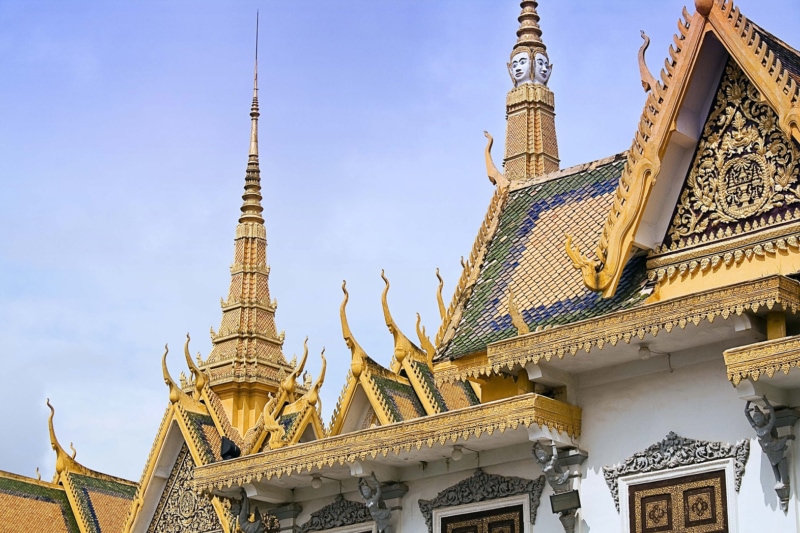
The Tuol Sleng Killing Fields Museum and the Killing Fields are two important sites for those wishing to understand more about Pol Pot’s regime.
Tuol Sleng , a former high school turned concentration camp, is still in the exact state it was when the Vietnamese liberated Cambodia. It is a macabre and harrowing place to visit, but it’s worth the trip to understand just how brutal Cambodia’s dictatorship was.
Even if you’re not a history buff, the genocide was relatively recent and most Cambodians living today have lost family and friends during it. Understanding what happened will help you to understand the country and its people living today, too.
Day 71-74: Kampot
Kampot is where people come to kick back and relax. But, there are still activities on offer if you’ve got itchy feet. Or hire a kayak for the day and paddle through the mangroves and tributaries of the Kampot River.
As you move along the water, you’ll catch a glimpse of life on the banks of the river. For the rural villages that flank that waterway, the Kampot River is a lifeblood around which they have built their lifestyle. Then simply stroll or cycle through the town and along the edge of the water. Nothing moves fast here so neither should you.
Day 75-80: Sihanoukville & Koh Rong
Time for some more beach—and this time it will be even cheaper than anything you’ve experienced before. In Sihanoukville you can live like royalty for less than $20 each day. Cambodia might not have much of a coastline, but what it does have will blow you away.
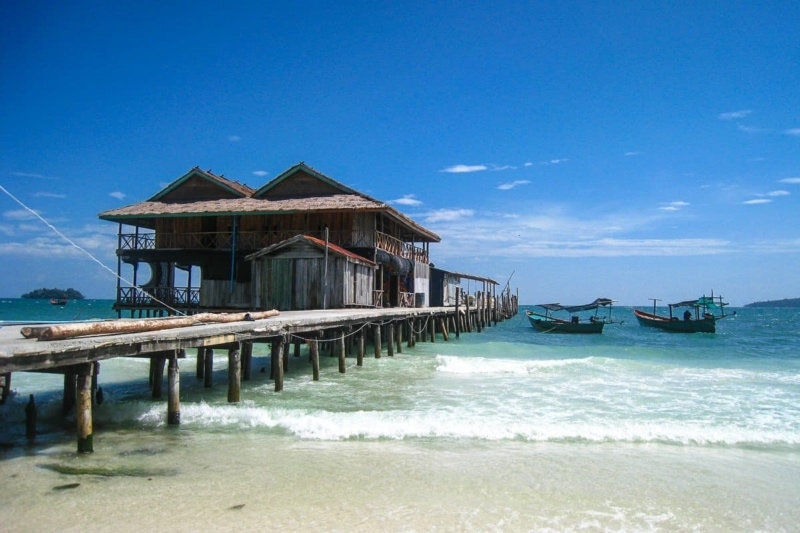
Not keen on lying on the beach all day? Watersports are the main attraction for thrill-seekers in this part of the country. Diving, windsurfing and kitesurfing are all on the menu here. Fortunately, the water there is delightfully warm so you don’t need to squeeze yourself into a wetsuit if you don’t want to.
While here, be sure to spend at least a few days on the island of Koh Rong . Far less developed than the Thai islands, Koh Rong still has an element of wild about it. Sure, there are bars and resorts, but there are also patches of untouched natural beauty and utter tranquility.
Day 81-83: Battambang
Also known as Cambodia’s rice bowl, Battambang is a photographer’s mecca. That is, if you go to the right places. Less than 7.5 miles out of town is Phnom Sampeau , a large hill with a temple on top. The temple itself is nothing to write home about. But turn 180 degrees and there are magnificent views of the rice fields. They’re green as far as the eye can see.
Phnom Sampeau is also home to more sobering sites, including the Killing Caves . Just as the name suggests, these caves saw the deaths of thousands of regime dissenters during Pol Pot’s rule. Not for the faint-hearted, the caves display the skulls of hundreds of victims who’d lost their lives here.
If the Killing Caves are too chilling to experience, the nearby Bat Cave should be a more light-hearted experience. In the evening, hundreds of bats fly from the caves in what is quite an astonishing natural spectacle. Once they are all out of the cave, you are free to go in and explore.
Day 84-86: Tonle Sap Lake
The Tonle Sap Lake is the largest of its kind in Southeast Asia. It’s depended on by over a million Cambodians. In fact, it’s the lifeline for some Cambodians, who bathe in, use it as a bathroom, illegally fish in it, wash their dishes and clothes in it, and even drink from it. At the level of poverty that hits Tonle Sap Lake.
There are tours that’ll allow you to hop in a canoe and float through the stilted villages that sit on top of the water (read about my experience doing just that here ), but I recommend only visiting to educate yourself —don’t contribute to poverty tourism in Asia.
Of course, part of the adventure is to learn about how other people live. But remember: These people’s home are essentially on display for tourists who travel to Cambodia, an incredible luxury that many of them will never be afforded.
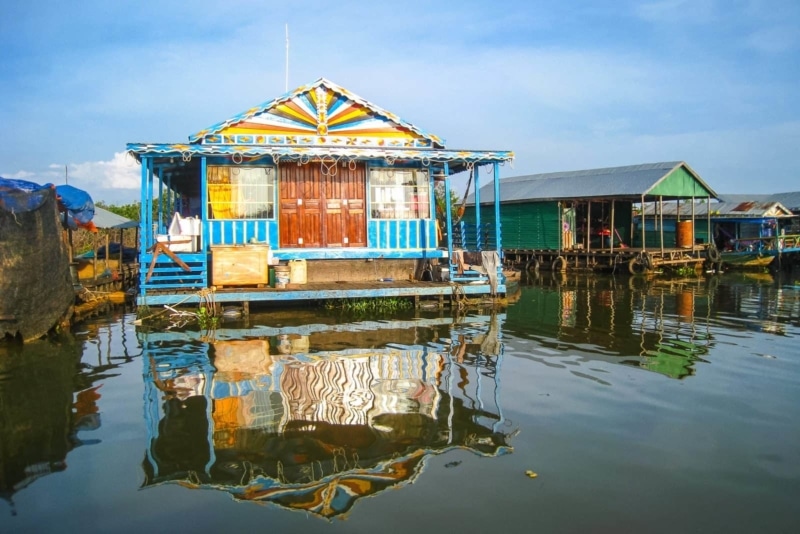
Day 87-90: Siem Reap
Wow. After three months of adventure in Southeast Asia you have finally come to your last stop—and, what a way to end the trip. Siem Reap is home to, among other things , the most famous collection of ruins in Asia, and possibly the world: Angkor Wat .
The Cambodians built it somewhere between A.D. 1113 and 1150, and about two million people visit to revel in its storied history each year.
There’s a lot to learn about this temple, dubbed the most spiritual temple in the world. Originally a Hindu temple, the Cambodian’s dedicated this one to the god Vishnu, and they added Buddha effigies in the 14th century.
People also generally accept that Angkor Wat was a funerary temple for King Suryavarman II, who built it to mark the capital of the Khmer Empire as his state temple and eventual mausoleum.
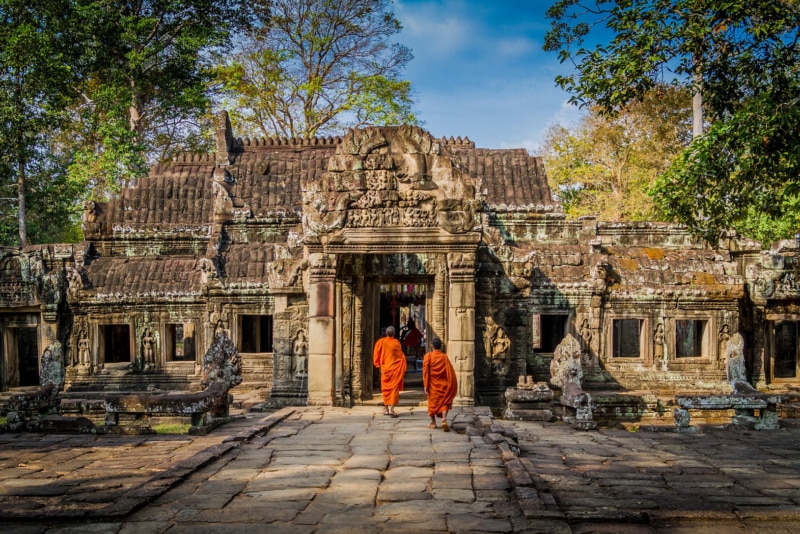
Some people just spend a day at Angkor Wat. I wholeheartedly advise you to dedicate at least two days to it though. You need it to really understand its magnitude.
If you visit for just the sunset around 5 p.m., you can get in for free. Then use your ticket again for the following day. But you must get your ticket from an office a short drive away from the temple itself. Make sure you buy your ticket before heading to the temple.
While sunset is gorgeous, sunrise at Angkor Wat is famous for a reason. On day one, get up while it’s still dark and make your way to the temple complex. Get there in time to see the sunrise over Angkor Wat and the lily lake. It’s a phenomenal sight
Spend the rest of the day and the following day exploring the dozens of temples.
Cambodian Temples to Visit
- Bayon : Fifty-four gigantic stone faces with creepy smiles fill the Khmer temple. Architects built it in the late 12th or early 13th century. It was the official state temple of the Mahayana Buddhist King Jayavarman VII.
- Ta Phrom : Architects built it in the Bayon style in the late 12th and early 13th century. Today, thick tree roots cover it, and it was the set of the film, Tomb Raider.
- Banteay Srei : Dedicated to the Hindu god Shiva is this 10th-century temple. Intricate, beautiful carvings decorate it.
- Preah Khan : Architects built this one in the 12th century for King Jayavarman VII to honor his father. Today’s it’s one of the largest and least-restored temples.
And that concludes your journey through Southeast Asia. You’ll make your way back to Suvarnabhumi Airport in Bangkok and fly home from there. As the international hub of Southeast Asia, this is where you’ll find the cheapest flights.
And while this itinerary is detailed, remember that it should only be used as a guideline. Part of the beauty of backpacking through Southeast Asia is having the freedom to be spontaneous.
If you want to take a detour via a temple you’ve heard about, do it. If a national park keeps getting recommended to you by other travelers, see it!
After all, that’s what adventure is all about.
Let us know in the comments what you’re most excited about!
Southeast Asia Itinerary FAQs
How long do you need to travel southeast asia.
You can take anywhere from a week to several months to travel Southeast Asia.
How much should I budget for 4 weeks in Southeast Asia?
You should be able to spend 4 weeks in Southeast Asia for around $1500.
What is the cheapest country in Southeast Asia?
Thailand is one of the cheapest countries in Southeast Asia.
Is Southeast Asia cheaper than Mexico?
Southeast Asia is cheaper than Mexico overall. However, some cities (like Singapore) will be more expensive.
What is the most underrated country in Southeast Asia?
Cambodia is one of the most underrated countries in Southeast Asia.

Jeremy Scott Foster
Wow, this itinerary is so comprehensive! Is it based on your own trip? I wish I had done something like this! I mean backpacking Southeast Asia for 3 months 🙂 But at least I saw parts of Thailand and Cambodia. The other 2 are still on my to-go list.
Hi Jeremy, Jules Verne wrote “Around the World in 80 Days” and you wrote in 90 Days; hahaha! However, your post was really informative and I just loved to read. Maybe I’ll try once to discover the world in 90 days!
I have been to Vietnam, I feel this place is wonderful to come back again. how to make slime
So many great places to visit in SEA, and they each have their own unique culture.
I also like to take better advantage of each place I go, and one thing I’ve been trying to do is really policing myself to take better care of my finances and to be more selective in every place I decide to visit and get to know in a city or country. Because since we are long-term travelers it is easy to end up having unnecessary expenses and this post helped me to reflect on the importance of this. Thanks for sharing your experience the Asian region with us Jeremy 🙂
Wow what a cool place .. I even gave it a try to take a tour in this region. I have been looking for places like this here in the Country that I am going through but I have not yet found. Thanks for the tip. I’ll take a closer look at who knows the Asian places too.
Amazing itinerary!! I know its hard to give an accurate answer but could you give an estimated budget for this trip? Excluding international flights of course! Thanks in advance…
Southeast Asia can definitely be done for $1k/mo if you’re on a budget. It all depends on the types of places you stay and where you eat. Hostels and street food vendors are your best friends!
Your email address will not be published. Required fields are marked *
Search our latest articles, reviews and gear guides
- TravelFreak on Instagram
- TravelFreak on Facebook
- TravelFreak on Twitter
- TravelFreak on Pinterest
Sign up now and get the best gear, travel tips, deals and destinations, straight to your inbox.
Thank you for signing up!
- Skip to primary navigation
- Skip to main content
- Skip to primary sidebar

Destinations
Experiences.
- Photography
Plan Your Trip
Southeast asia starts here.
Coming up with a 2 month Southeast Asia itinerary is hard, no matter how well you know the region. For starters, it’s as much about choosing where you don’t want to go as it is deciding the places you will visit. Then, there’s sequencing and timing, and all the rest of the practical matters that planning any trip entails.
Although I have nearly 15 years of experience traveling in Southeast Asia, I’ve decided not to construct a post that dictates or preaches to you. Rather than telling you where to go, for example, or how long (necessarily) you should spend there, I want to inform and inspire you to create the trip that’s right for you.
Even if you’re feeling anxious now—trust me, I’ve been there—you’ll soon have a plan your can easily execute. Can’t you almost smell the Pad Thai noodles sizzling through the streets?
Practical Matters
When to visit southeast asia.
In most of Southeast Asia, the dry season takes place between about December and March. As a general rule, this is when you should plan this trip, although there are a couple exceptions. First, if you plan to travel heavily or primarily in Indonesia (where the dry and rainy seasons are “flipped” compared to the rest of Southeast Asia), you’ll actually want to visit between about June and September. Secondly, you should be aware that northern parts of Myanmar, Laos and Vietnam can be relatively cold at this time of year, in spite of also being dry.
Where to stay in Southeast Asia
As you plan your Southeast Asia itinerary (2 months or longer), you’ll be delighted to learn that accommodation in most of the region is extremely affordable. There are some notable exceptions to this—Singapore is outrageously expensively; Bangkok and Kuala Lumpur are not nearly as cheap as they used to be—but as a general rule, your money goes farther here than it will anywhere else in the world.
- Traveling in Thailand ? While no longer as cheap as it used to be, this is still an affordable place to get a fancy hotel, particularly in Bangkok with high-end properties like Sofitel SO/Bangkok and the Eastin Grande Sathorn . In the islands, accommodations run the gamut from luxurious Rayavadee in Krabi ‘s gorgeous Railay , to simpler digs such as Casa Blanca Boutique Hotel in Phuket Town . Headed up north? I absolutely love the Riverside Guest House in Lampang .
- In my opinion, Vietnam (at least when it comes to hotels) is how Thailand was 10-15 years ago. From Hotel des Arts in Saigon to Hanoi ‘s chic Meritel , and from resort-style properties like Sin Chai Ecolodge in Sapa and Ancient House Resort & Spa in Hoi An , your money goes farther in Vietnam than it does in almost any other Southeast Asian country, in spite of Vietnam’s rapidly increasing popularity.
- As you explore underrated Malaysia , make sure to avail this country’s impressive selection of impressive hotels. From the five-star Majestic Hotel in Kuala Lumpur , to boutique properties like Cheong Fatt Tze in Penang and Ranee Boutique Suites in Kuching , Malaysia tends to be somewhere between Vietnam and Thailand in terms of price, although (if I’m honest) the subtler elegance of its hotels is often preferable, at least for me.
- I’ll be frank: Singapore is simply not a budget travel destination. You can make it into one— Atelier Chinatown is great if you don’t mind sharing your sleeping and bathing space; the Hotel 1888 Collection is bare-bones, but has private facilities—but you really need some cash to enjoy Singapore to the fullest. Not necessarily the sheer opulence of the Fullerton Hotel , mind you, but if you can splurge on (for example) the The Scarlet , your experience will be much more pleasant.
How to get around in Southeast Asia
Infrastructure in Southeast Asia has vastly improved over the time I’ve been traveling there, especially within cities. Still, the easiest (and often cheapest) way to navigate this region is by plane, usually (but not exclusively) using low-cost carriers such as AirAsia. If you’re unsure of how to get from place to place, I personally find that 12Go is a great tool for both research and booking.
Money, costs and communication
Another thing that’s vasty improved in Southeast Asia over the years? Money and payments. Specifically, being able to use credit cards (even though, as time passes, QR payments are definitely the most common ways to pay here). At the same time, you’ll likely need a bit of cash on you in most places—and unfortunately, every country uses different currency, which can complicate things. The good news is that airport exchange counters tend to offer competitive conversion rates, and low commissions, so you can change money either before you depart one place, or after you arrive in another.
Cost-wise, Southeast Asia is cheap, albeit not as cheap as it used to be. You can expect to pay around 50-100 USD per person, per day in most countries for modest private rooms, 2-3 meals per day and all your local transportation. While there’s technically no limit to how much you can spend, I find it difficult to go much beyond 200 USD per person, per day in most places, unless you’re simply trying to be extravagant.
Communication-wise, in a literal sense, English is all you need in most places, and certainly in countries like Singapore, the Philippines, Myanmar and Malaysia, where it’s an official language. In terms of communicating figuratively, WiFi is plentiful in Southeast Asia, though I do recommend staying connected via your mobile—either buy buying local SIM cards, or using a global travel plan like Google Fi —to make your life easier.
Visas for Southeast Asia
If you’re reading this page in English, you probably come from the US, UK, Canada, Australia, New Zealand or somewhere in Europe. If this is the case, congratulations: You can access most of Southeast Asia visa-free! I say “most” because there are notable exceptions: Indonesia, Myanmar, Laos and Cambodia require e-visas or visas on arrival, while Vietnam still requires you to apply for a visa in advance. If you’re unsure as to whether you require a visa to enter any country, contact the embassy or consulate of that nation in your place of citizenship.
Where to Go With 2 Months in Southeast Asia
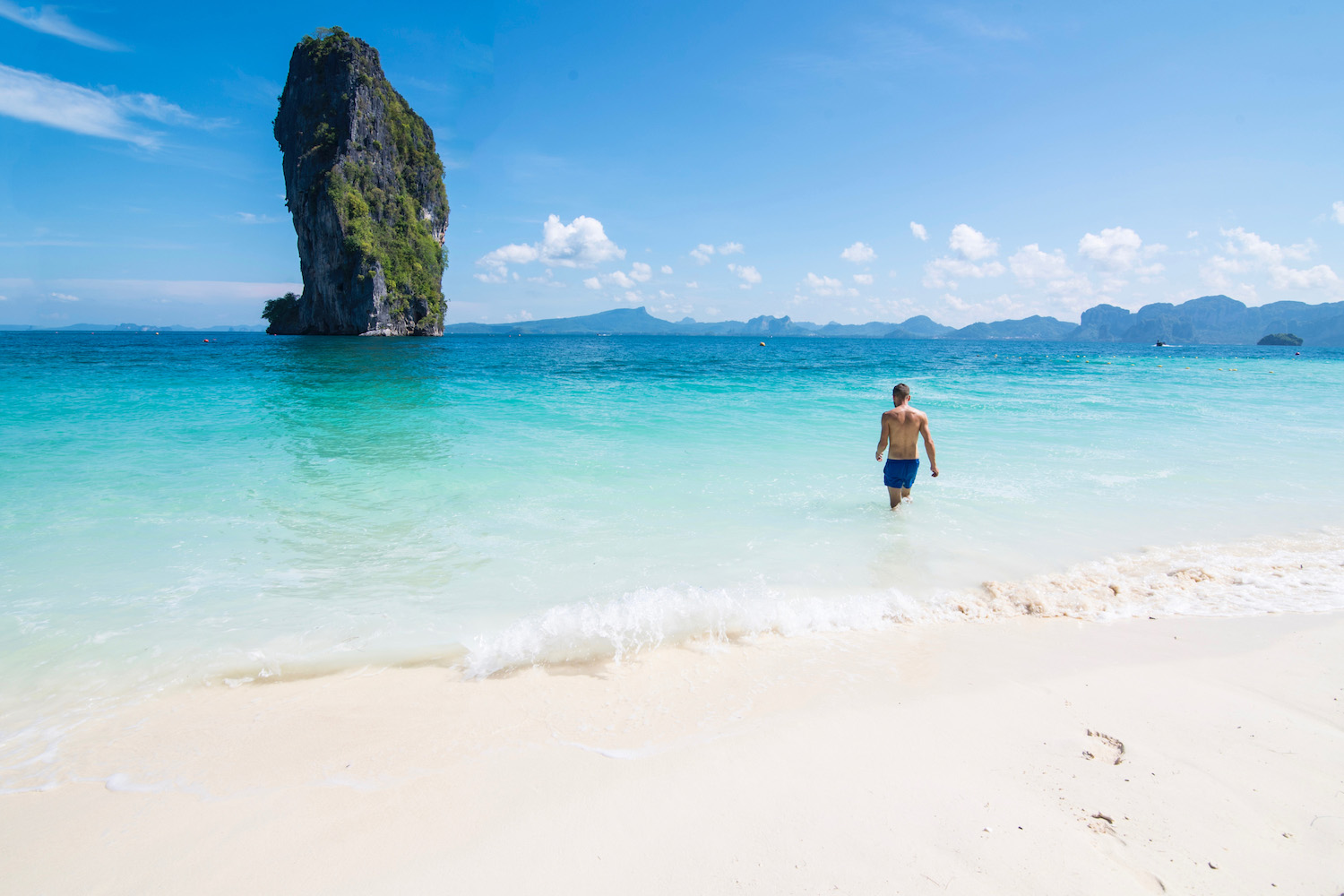
No matter how extensive your Southeast Asia travel route—2 months, or something much shorter—you absolutely have to visit Thailand . Bangkok , in addition to being the de-facto hub of Southeast Asia, is one of the world’s most dynamic cities. Beyond this, you can divide your time between the Kingdom’s lush north (focus on the cities of Chiang Mai and Chiang Rai , plus Lampang ) and the various islands and archipelagoes that define its south, from Samui , Tao and Pha Ngan islands in the Gulf of Thailand , to Phuket , Krabi and Trang in the Andaman Sea .
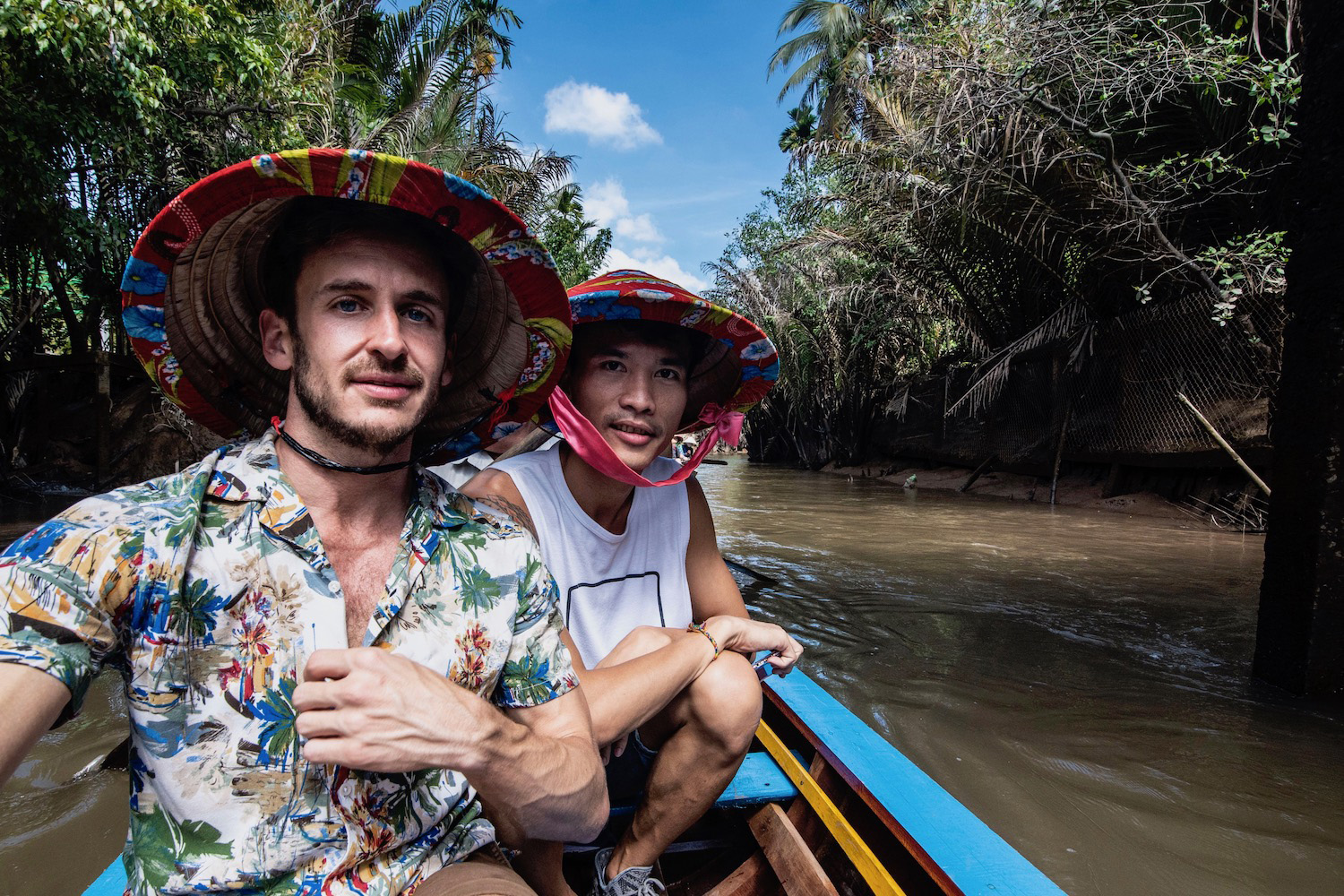
Another giant you can’t avoid during your 2 month Southeast Asia itinerary is Vietnam . I sort of consider Vietnam a wilder and more unruly Thailand, somewhat resembling an older version—maybe 10, 15 years—of the Kingdom. I usually like to go south-to-north, but you can reverse this order if you prefer. Begin in Saigon (aka Ho Chi Minh City ) and the Mekong Delta , heading northward to Da Nang (via coastal Mui Ne or Nha Trang , or hilly Da Lat ). Explore ancient Hoi An and imperial Hue , before heading north to the capital of Hanoi , scenic Ha Long Bay and finally to Sa Pa , which is rich with waterfalls and rice terraces.

Malaysia might just be the most underrated country you visit during your 2 months in Southeast Asia. While I go back and forth on the capital city of Kuala Lumpur , it’s impossible to deny the charm of Penang and its historical shophouses, or of Kuching , which sits on the edge of the rainforest. Visit tea plantations in the Cameron Highlands , scale Mt. Kinabalu in Borneo ‘s Sabah state or visit crystal mosques and some of Asia’s best islands in Terengganu on the east coast.
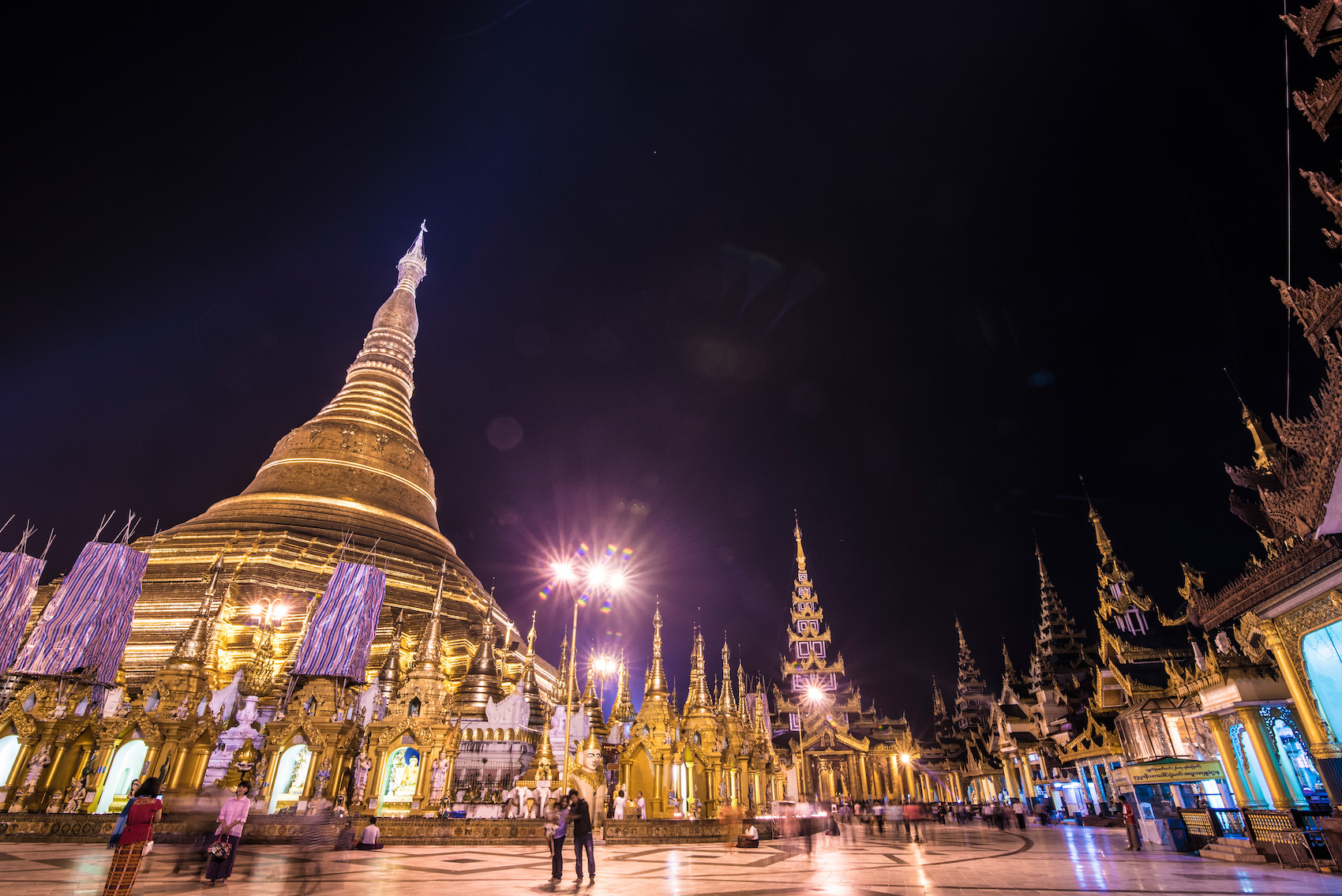
I’ll admit: It’s been controversial even to discuss visiting Myanmar for a hot minute. At the same time, if you can look past the politics, this country is one of the most unique in Southeast Asia. While not as ramshackle as it was when I first visited in 2010, today’s Myanmar remains captivating. Start in the cities of Yangon and Mandalay , before expanding outward. Do you prefer getting lost amid the temples of Bagan , relaxing on Inle Lake or having your mind blown amid the perfect beauty of the Mergui Archipelago ?
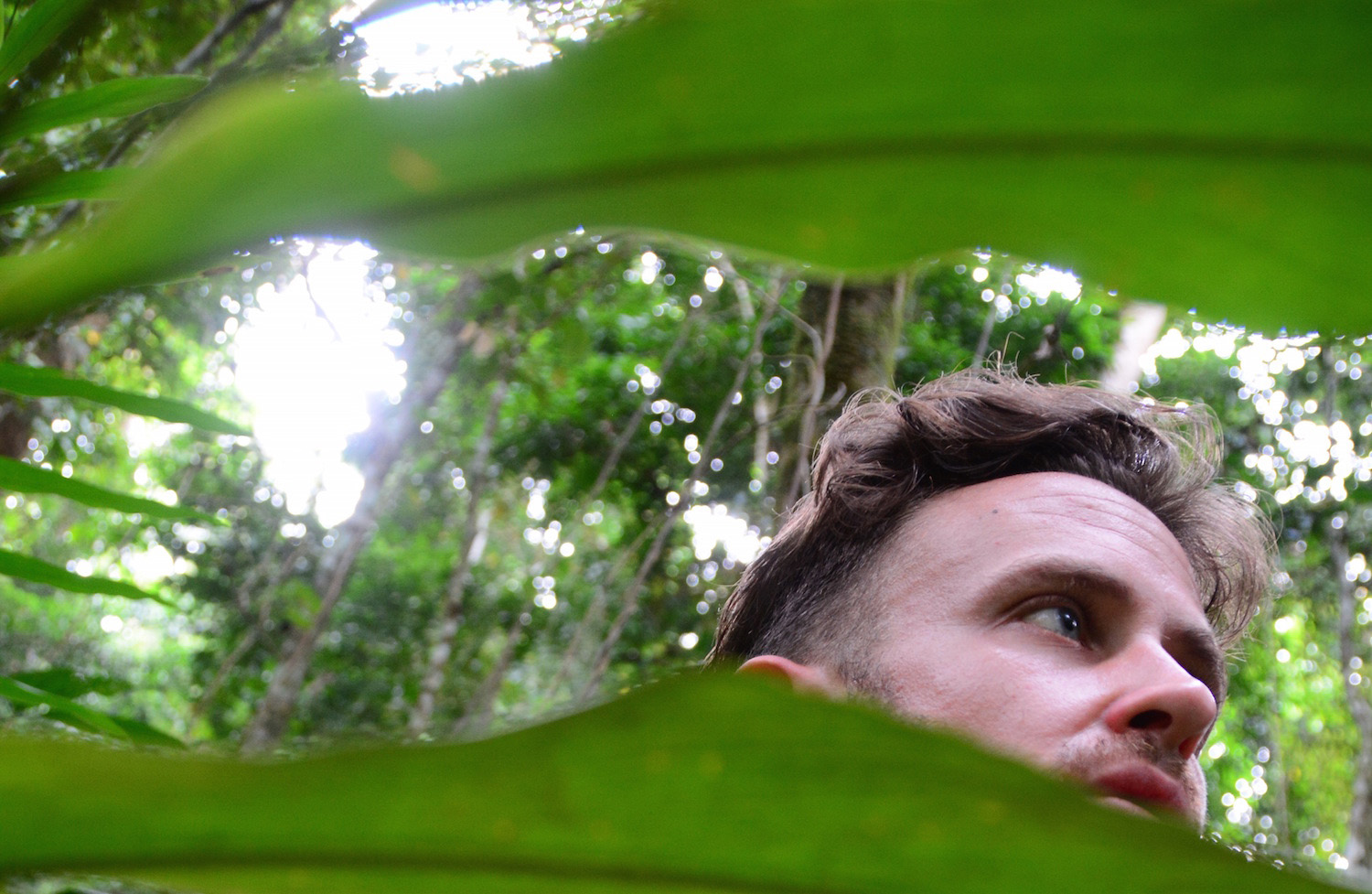
The bad news? In my opinion, the island of Bali is one of the worst places you can visit during your Southeast Asia 2 month itinerary. The good news? Indonesia is home to literally thousands of other islands. From hectic Java (home to manic Jakarta , charming Yogyakarta and the otherworldly Kawah Ijen volcano), to lush Borneo and its wild orangutans, to the paradisiacal Kawah Ijen archipelago, Indonesia is so much more than Bali.
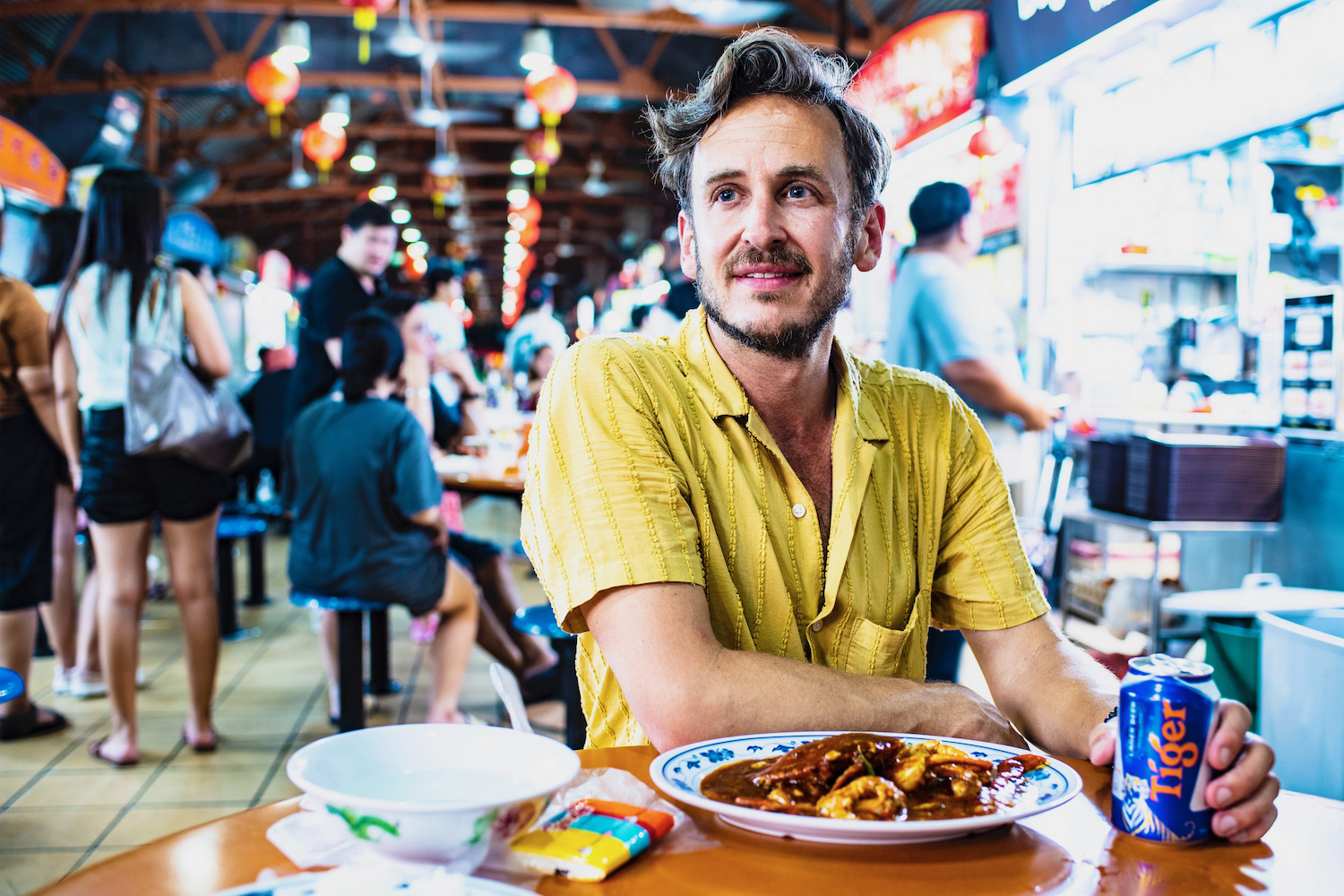
In the past, I mostly saw Singapore as serving a functional role within a 2 month Asia itinerary: A respite from the craziness of the rest of the region. However, as time has passed and “the rest” of Southeast Asia has become less manic, I’ve started to appreciate Singapore for what it is: A city that’s also a country that’s also a microcosm of a continent. Organize your time in Singapore (it will likely be just a few days) around its ethnic neighborhoods— Little India , Chinatown and Malay-Muslim Kampong Glam —as well as around both the natural Singapore Botanic Garden and the delightfully artificial Gardens by the Bay.
Another small country whose borders you may cross during 2 months Southeast Asia is Cambodia . For most travelers, Cambodia requires a week or even less. Many will split their time between the oft-overlooked capital of Phnom Penh and Siem Reap (home of Angkor Wat ); others will also choose to overlook PP. If you have longer or are more curious, you might also opt to hit the beaches of Koh Rong in the Gulf of Thailand , or travel overland to Laos—more on that in a minute.
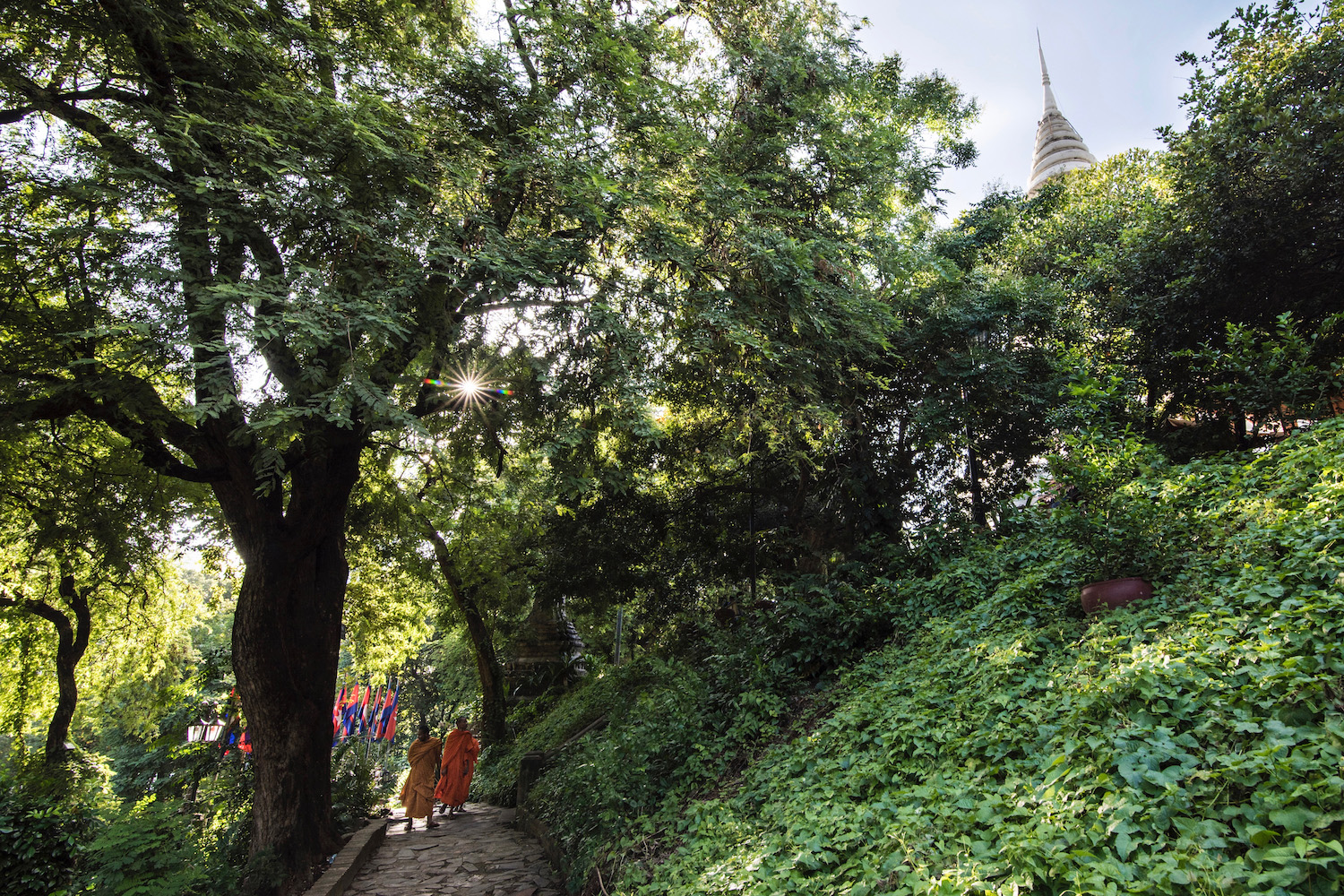
As I explained earlier during this post, Laos is not a must-see if you have a 2 month itinerary Southeast Asia—I usually recommend it or Cambodia, but not both. If you do spend time in Laos, however, context matters. If you can, for example, you might take the “slow boat” from Chiang Rai, Thailand to Laos’ charming Luang Prabang , via off-the-beaten path Pak Beng . Another exciting way is up from Cambodia, via Don Det and the 4,000 Islands . Alternatively, you can fly to Vientiane or Luang Prabang if you’re pressed for time or simply can’t be bothered to travel overland.
The Philippines, Brunei and East Timor
I’m not including The Philippines last on my Southeast Asia 2 month itinerary because I don’t like it—that’s far from the truth. Rather, I haven’t been back there in a while, and so I don’t feel as comfortable recommending destinations and experience as I do for other countries on this list. However, if you have a couple of weeks to spare, make sure to follow up a long weekend in underrated Manila with some time on the country’s award-winning beaches, whether in mainstream Boracay , lush Palawan or off-the-beaten-path Siargao .
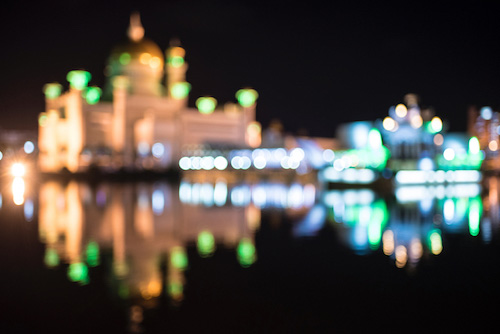
As far as Brunei is concerned? Well, it’s unique, I’ll say that. It’s a place I’m glad I went , but don’t necessarily care to visit again. I haven’t yet been to East Timor , and as of this moment have no plans to visit.
Is 2 Months Enough for Southeast Asia?
As you browse Southeast Asia backpacking routes, 2 months is typically the minimum recommended amount of time—this is not a coincidence. The region is huge, and although the infrastructure has improved massively in the 15 years I’ve been exploring it, can still be a place where the going is pretty slow. If you’re a backpacker who plans to rely primarily on land transport, in fact, I might actually suggest you devote 3-4 months (or even longer!) to Southeast Asia!
Indeed, this 2 month Southeast Asia itinerary is really optimized toward travelers seeking a slightly elevated travel experience. Some overland travel—the slow boat between Thailand and Laos; a couple of trains in Vietnam—but is primarily getting around using places. Select rural areas—Indonesia’s Blue Fire Volcano; the Chocolate Hills of the Philippines—but mostly staying in cities and enjoying day trips from there.
Other FAQ About Spending 2 Months in Southeast Asia
How much do you need to travel southeast asia for 2 months.
I usually count on spending an average of about 100 USD per person, per day when traveling in Southeast Asia. That translates to about 700 USD per person, per week and about 2,800 USD per person per month. This means that you can plan to spend between 5,000-6,000 USD per person to travel in Southeast Asia for 2 months, not including international flights (but including all your internal transport).
How long do you need in Thailand and Vietnam?
Thailand and Vietnam are two of the largest and most interesting countries in Southeast Asia—I usually recommend spending a minimum of three weeks in each. With this being said, you could divide a month between Vietnam and Thailand, if you’re very judicious about where you visit in each country. Hiring me as your Travel Coach would be very advisable in this situation.
How long to spend in Laos and Cambodia?
Laos and Cambodia are beautiful countries, but it’s not a coincidence that they sit geographically between the titans of Thailand and Vietnam: They’re simply neither are large nor as interesting as their more famous neighbors. Often times, I recommend that people with a shorter amount of time choose one of these two; in any case, even if you’ve got two months to explore Southeast Asia, don’t split more than two weeks between Cambodia and Laos.
The Bottom Line
If you’ve made it this far, then congratulations: You’ve got all the information you need to assemble the perfect 2 month Southeast Asia itinerary! Some of you will take a straightforward path—a couple weeks in Thailand; one split between Laos and Cambodia; three weeks in Vietnam or Indonesia, and then two in either Malaysia, Myanmar or the Philippines. For others, things might be a bit less structured, if they’re even set in stone at all. You might even end up staying in the region for a lot longer than two months! Still feeling stressed out at the thought of planning your trip? Consider hiring me as your Travel Coach!

Subscribe to email updates!
Words, images and design ©2009-2024 Robert Schrader, All rights reserved. Read Privacy Policy or view sitemap .
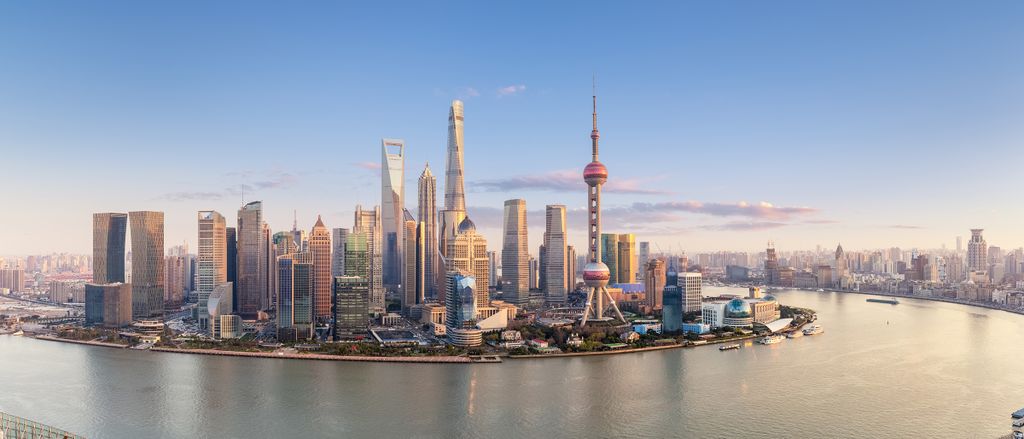
Moscow to Shanghai
Best options, other options, transportation from moscow to shanghai.
- Flights RUB 183,647
- Trains are not available
- Buses are not available
- Ferries are not available
- Taxis are not available
- Vans are not available
Facts about the transport from Moscow to Shanghai
Popular routes, from moscow.
- Moscow → Saint Petersburg
- Moscow → Minsk
- Moscow → Bangkok
- Moscow → Vladivostok
- Moscow → Kazan
- Minsk → Moscow
- Kyiv → Moscow
- Bangkok → Moscow
- Saint Petersburg → Moscow
- Kaliningrad → Moscow
From Shanghai
- Shanghai → Beijing
- Shanghai → Pingshan Shenzhen
- Shanghai → Hangzhou
- Shanghai → Suzhou
- Shanghai → Nanjing
To Shanghai
- Beijing → Shanghai
- Hangzhou → Shanghai
- Guangzhou → Shanghai
- Shenzhen → Shanghai
- Nanjing → Shanghai
How to get from Moscow to Shanghai?
When you want to get from Moscow to Shanghai, your choices are limited. There is only one option we offer for this route:
How far is Moscow from Shanghai?
The overland distance from Moscow to Shanghai is 5537 miles (8908 km). The flying distance is 4260 miles (6853 km).
How long does it take to get from Moscow to Shanghai?
The travel time from Moscow to Shanghai takes approximately 23 hours.
How much does it cost to get from Moscow to Shanghai?
To get from Moscow to Shanghai prepare to shell out about RUB 183,608 for your ticket.
How many trips per day are there from Moscow to Shanghai?
Flights from Moscow to Shanghai are operated 1 times a day.
Useful tips for travel from Moscow to Shanghai
While flight is the only option we offer for this route, these simple tips and recommendations will help enhance your travel experience.
Up to now, 566 booked flight tickets from Moscow to Shanghai through our service. You can check reviews above.
- Transport Options
Taiwan says new Chinese air routes threaten Taiwanese islands' flight safety
- Medium Text
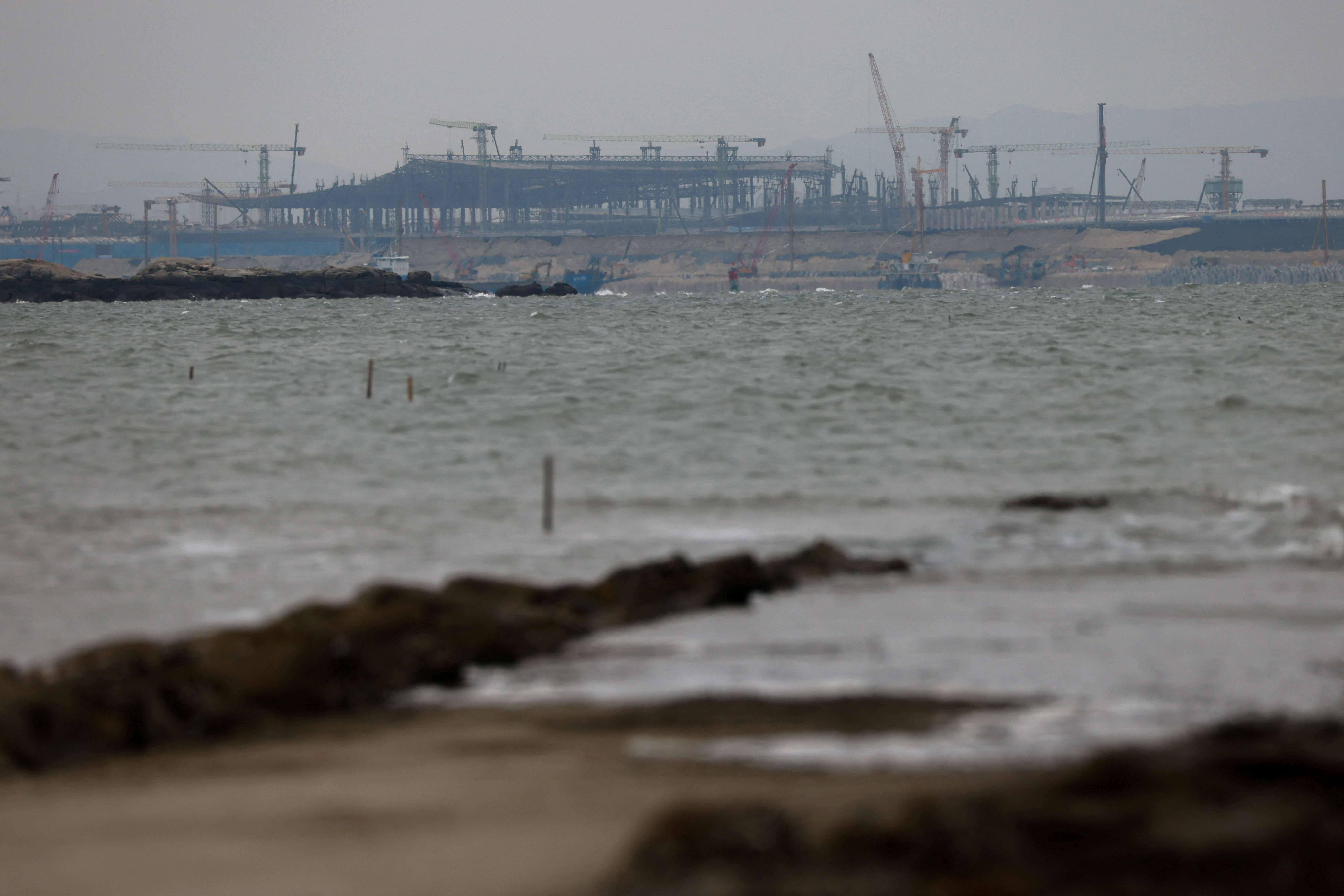
- China opens new air routes running close to Taiwanese islands
- Taiwan decries move as flight safety risk
- Routes are near Taiwan-controlled Kinmen and Matsu islands
- China says flight paths to improve flight operations

CONTROLLED AIR SPACE
Sign up here.
Reporting by Ben Blanchard and Ryan Woo; Additional reporting by Yimou Lee in Taipei; Graphic by Jackie Gu; Editing by Christopher Cushing, Jamie Freed and Angus MacSwan
Our Standards: The Thomson Reuters Trust Principles. New Tab , opens new tab
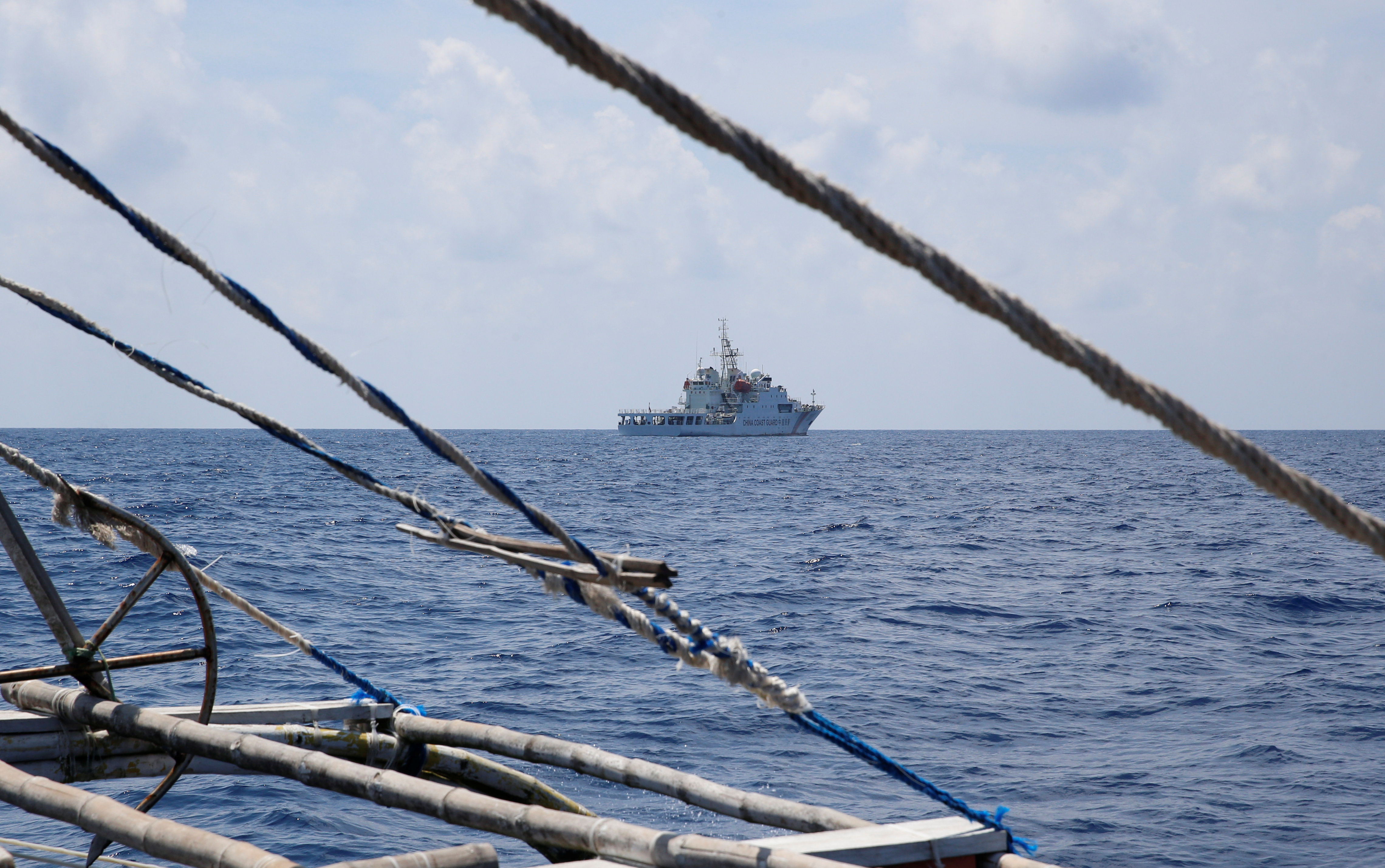
Gunmen attacked a mosque in western Afghanistan on Monday night during prayer time, killing at least five people, a spokesperson for the provincial governor said.
Frequent fires are razing forests in India's Uttarakhand state in the north and Odisha in the east amid high temperatures and long dry spells, and the blazes have been worsened by people burning the forest to collect a flower used to brew alcohol.

World Chevron
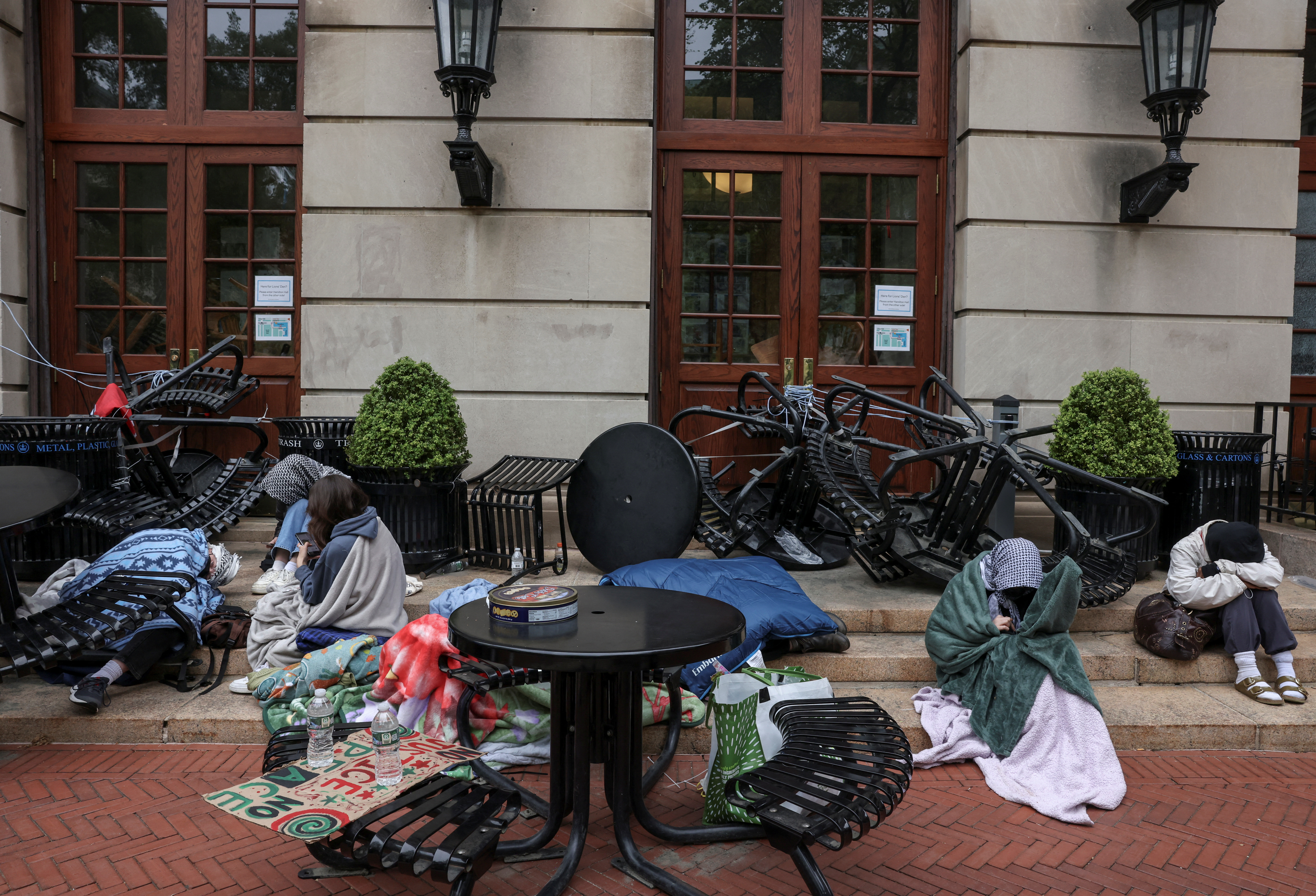
Pro-Palestinian protesters occupy Columbia University building
Pro-Palestinian activists occupied a building at Columbia University early on Tuesday, escalating a battle with administrators who have begun suspending students for refusing to dismantle tents set up on the New York campus.
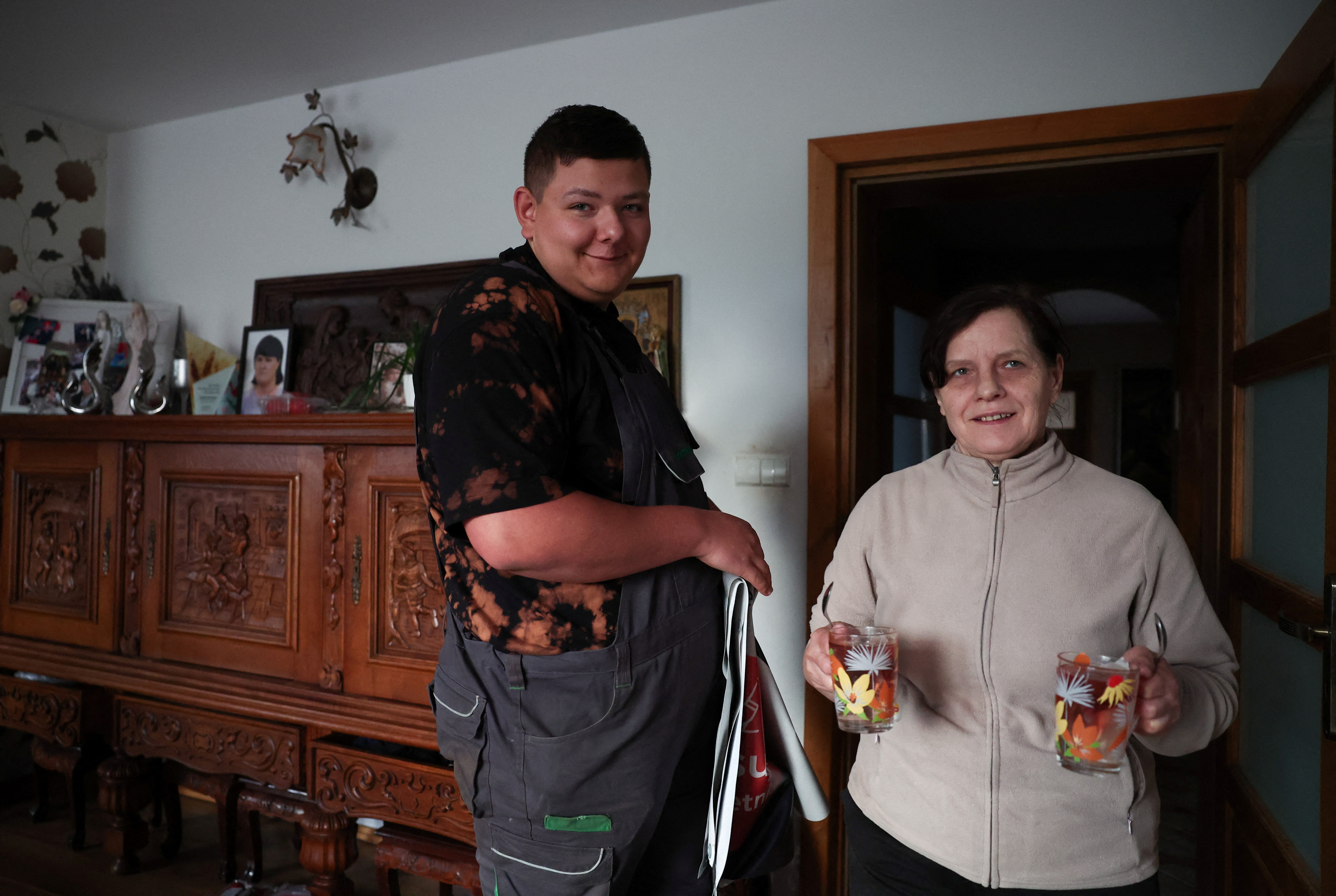
- Bahasa Indonesia
- Slovenščina
- Science & Tech
- Russian Kitchen
View from Moscow: Southeast Asia may be losing its edge
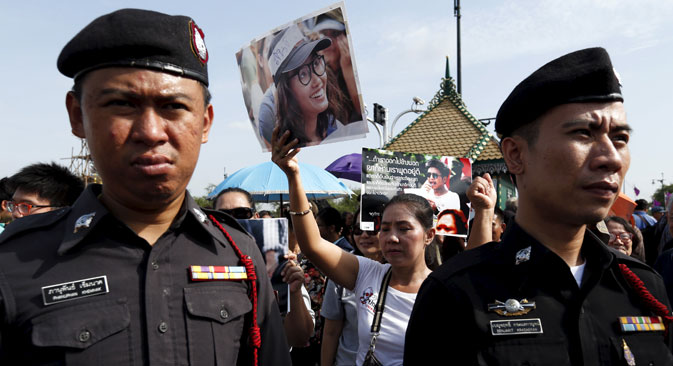
Protestors in Bangkok, July 7, 2015. Thailand has had its share of political instability over the last few years. Source: Reuters
Rampant economic growth and macroeconomic stability has been attracting great attention to Southeast Asia for at least the last fifteen years.
From 2000 to 2013, ASEAN economies grew at an average of 5.1 percent annually with just a 47 percent debt to GDP ratio, a buoyant young workforce, consistent savings and a blossoming internal consumption market. The bloc is projected to become the world’s fourth largest economy by 2050. All this is possible due to Southeast Asia’s proximity to global trade routes, fine demographics and a helping hand from the richer neighbors, as well as global investors.
However, the bright future of Southeast Asia’s economic development may become clouded by imminent threats to the region’s political stability. A political stasis of sorts that we have witnessed over the last decades was perhaps the only possible dynamic that would be conducive to such rapid development. There is no need to remind readers of the degree to which leaders such as the late Lee Kwan Yew in Singapore or Dr. Mahathir Mohammad in Malaysia consolidated their power with an end to maintain high growth rates, better quality of life, economic modernization and technological advancement.
One may suggest that there was no other way. Postcolonial development is not an easy endeavor. Political reform along with issues of social, ethnic and religious diversity were all considered best to be frozen for the time being. Now the ice may start melting. Not all of it at once, of course, but just enough to throw a wrench in the gears.
Let’s take a look at some of the trends of the first six months of 2015. Myanmar continues to stumble on its way towards political reform with proper representation and institutions of civil (as opposed to military) governance. With the parliament maintaining the military’s veto and essentially blocking Aung San Suu Kyi from becoming president, a transfer of power to non-military factions seems improbable in the near future. Moreover, the country continues to fail to address its own ethnic and religious diversity. Insurgency in the Kokang state and a constant flow of Rohingya Muslim refugees has become an issue not just for Myanmar, but for the whole region with migrants having nowhere else to go but to the neighboring states.
In Thailand, the military overtook the country in an attempt to prevent political destabilization, but, ironically, it is not the type of stability welcomed by all. Growing dissent over temporary governance being not that temporary, free speech infringement and a lack of political freedom is starting to worry even Bangkok's allies in the United States.
Certainly, such issues are not new. But they are being amplified by the increasing penetration of mass communication technology, especially mobile Internet and social media. Popular unrest over the NGO Law in Cambodia, the new Bersih movement in Malaysia and corruption scandals in the Philippines could all be hidden from the international attention if it were not for the omnipresent web tools.
Inequality, bad labor conditions, discrimination, weak rule of law are all issues that could have remained hidden in the past, but are tweeted, posted and instagrammed constantly in 2015. International NGOs are quick to scoop such stories, investigate them with the help of the global media and make them even more visible. Consequently, foreign investors are quick to be affected by reputation loss and guilt by association.
This may actually not become a problem at all. The mainstream media narrative about Southeast Asia these days is China’s assertive behavior in the South China Sea, land reclamation and maritime security. An approach like this makes the states of the region seem like monolithic actors and objects of great power politics. What often skips public attention is that almost all of them have their own internal issues. But how often do you read about the Moro Islamic Liberation Front in the Guardian? Does The New York Times cover the introduction of Sharia law in Brunei on a regular basis?
Certainly, it is difficult to beat Ukraine, presidential elections in the US, the Islamic State or Greece. Greater scrutiny will make the lives of Southeast Asian elites much more difficult, but will also force them to modernize and develop, bringing political reform up to the tempo of economic growth.
Anton Tsvetov is the Media and Government Relations Manager at the Russian International Affairs Council (RIAC), a Moscow-based foreign policy think tank. He tweets on Asian affairs and Russian foreign policy at @antsvetov . The views expressed here are the author’s own and do not reflect those of RIAC.

All rights reserved by Rossiyskaya Gazeta.
to our newsletter!
Get the week's best stories straight to your inbox
This website uses cookies. Click here to find out more.

IMAGES
VIDEO
COMMENTS
Most of my trips in Southeast Asia have been backpacker-style, where you mainly travel by bus or train. Of course, you could also split your time between two separate countries and fly between them. If you want to go to Indonesia, The Philippines, or the Borneo part of Malaysia, you'll have to fly anyway.
Duration: This route is usually completed in 3-6 months. Average budget per month: $500-$800 USD. See here for a breakdown of how much it costs to backpack Southeast Asia. Best time to go: The most popular time to backpack Southeast Asia is from September to March which misses out the rainy season in most areas.
Southeast Asia One-Month Itinerary. With one month, you'll be able to take it a little slower, see more places, and get off the beaten path a bit more. You can add another country and leave more flexibility in your itinerary. Days 1-3: Bangkok. Follow the Bangkok itinerary above, and stay for a few more days if you like!
Itinerary #1: 2-Week to Thailand, Cambodia, and Vietnam (Time-Smart) Our carefully curated 2-Week Best of Thailand, Cambodia, and Vietnam itinerary is a fusion of cultural richness, historical wonders, and breathtaking landscapes. It's the most chosen route for first-time travelers to Southeast Asia, offering an ideal glimpse into the best of the region's three most popular countries within a ...
One of the best things about backpacking Southeast Asia is how easy and affordable it is to get about. Here are the main options: Flights - there are numerous budget airlines in Asia including Nok Air, Lion Air, Scoot and Air Asia.Book them on AirAsia or Skyscanner. Buses - this is a popular way to travel in Asia and usually my preferred option. . Many of the Southeast Asia backpacker ...
South East Asia Travelling Routes: At A Glance. Travelling Southeast Asia Route 1: The Beach Lovers' Dream. Day 1-3: Ho Coc Beach, Vietnam. Day 4-6: Phú Quốc. Day 7-10: Koh Rong Samolem and Pineapple Island, Cambodia. Day 11-14: Ko Samui and Koh Pha Ngan, Thailand. Day 15-16: Railay Beach, Thailand.
By Chris Quan Updated Mar. 5, 2024. With more than a dozen countries in Southeast Asia, 4 weeks/1 month can satisfy your ambitions to travel to many places. Check out recommended plans for your 4 weeks/1 month in Southeast Asia and expert advice. Content Overview. Which Southeast Asia Countries to See in 4 Weeks. Week 1: Myanmar. Week 2: Vietnam.
Itinerary #2: Thailand + Cambodia. Thailand and Cambodia are also the right combinations of destinations for staying 3 weeks in Southeast Asia. They are both Buddhist kingdoms with extraordinary wonders. Thailand is in northern Cambodia and can easily be traversed by air or crossed by land.
Your 3 month Southeast Asia travel route has come to an end . Phew! What an epic 3 month Southeast Asia itinerary. From Inle Lake, you can take a bus back to Yangon. From Yangon, you can either try to find cheap flights back home. However, we recommend heading back to Bangkok to fly from there, as international flights tend to be much cheaper.
Southeast Asia is often touted as a backpacker's haven, likely because you and other travelers are spoiled for choice when it comes to hostels. There are also clearly defined routes that run throughout the region, and most backpackers in the area are heading in the same general direction, which means making travel buddies in those hostels is ...
The famous Nine Arches Bridge in Ella - backpacking route Asia Angkor Wat, Cambodia. Angkor Wat is a temple complex found just outside of Siem Reap. The complex is a UNESCO World Heritage Site and attracts nearly 2.6 million people every year. ... If like us you are travelling on a budget, then there are plenty of cheap places to travel in ...
No matter how extensive your Southeast Asia travel route—2 months, or something much shorter—you absolutely have to visit Thailand. Bangkok, in addition to being the de-facto hub of Southeast Asia, is one of the world's most dynamic cities.Beyond this, you can divide your time between the Kingdom's lush north (focus on the cities of Chiang Mai and Chiang Rai, plus Lampang) and the ...
Get the most out of your adventure to Southeast Asia with 6-Week Travel Itinerary. Maximize your time with this guide to the key adventurous attractions for you. Maximize your time in the region with this plan to the key adventurous attractions for you!
Southeast Asia is one of the most popular backpacking spots in the world. With its low cost of travel, diversity, and unique cultures, all within close proximity, Southeast Asia is the perfect destination for travelers to spend 3 months traveling around without getting bored and blowing a hole in their wallet.
We Make It Happen. Triptile™ - trip planner by Firebird. Award-winning travel experts. Originally, Triptile was developed by Firebird Tours® as a tool for travel professionals so they could build custom multi-destination trips to anywhere in Europe. Today Triptile allows all users to connect any hubs in any European country and many ...
Visit Jonker Street weekend market. Sunset at the floating mosque. St Paul's Church ruins. 30. Singapore. The final stop on my epic 4 month South East Asia itinerary is Singapore. This modern city at the southernmost point of continental Asia is a massive contrast to some of the other destinations in the region.
12 Days. Negombo, Sigiriya, Kandy, Nuwara Eliya, Udawalawe National Park, Weligama. Travelling to Asia? Here are some of the best off the beaten path, tried and tested travel routes with the best destinations.
Discover Southeast Asia! Beautiful tourist attractions, destinations and places of interest across Asia, Things to Do and What to See, Caves & Caving, Lakes and Mountains, National Park and ...
Looking how to get from Moscow to Shanghai? Check trip schedule and travel distance. Compare prices for 🚆 trains, 🚌 buses, 🚢 ferries and ️ flights. Book tickets now on 12Go!
Taiwan said on Friday China's decision to open new air routes that run close to two Taiwanese-controlled islands was a flight safety risk taken without consultation, and said it would demand any ...
AirAsia recently announced its new travel pass called the ASEAN Explorer Pass, which is an annual subscription that gives customers an unlimited number. Tuesday, April 30, 2024 ... A new addition that wasn't available in the Unlimited ASEAN Pass is the ability to travel domestic routes in Malaysia, Thailand and Philippines, but this only ...
Worldwide distance calculator with air line, route planner, travel duration and flight distances. Shows the distance in kilometres between Bangkok and Moscow and displays the route on an interactive map. ... Latitude: 13.723419 13° 43' 24.308'' N Longitude: 100.476234 100° 28' 34.442'' E Local time: 09:44 (18.05.2023) : (Asia/Bangkok) Flight ...
All this is possible due to Southeast Asia's proximity to global trade routes, fine demographics and a helping hand from the richer neighbors, as well as global investors.
The shortest distance (air line) between Seoul and Moscow is 4,104.47 mi (6,605.51 km). The shortest route between Seoul and Moscow is according to the route planner. The driving time is approx. . Half of the trip is reached in . The time difference between Seoul (Asia/Seoul) and Moscow (Europe/Moscow) is -6 hours.